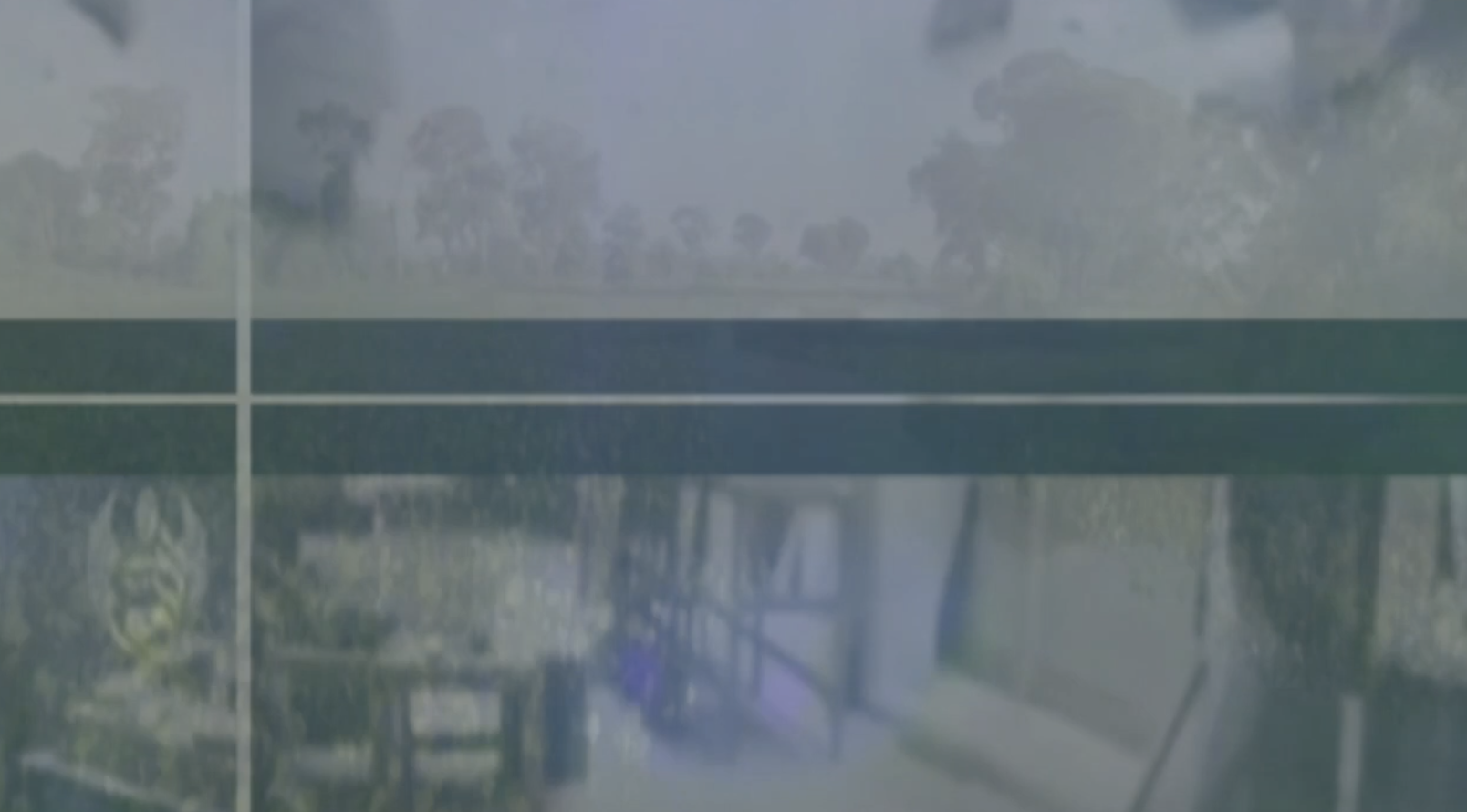-
 @ 6be5cc06:5259daf0
2024-12-29 19:54:14
@ 6be5cc06:5259daf0
2024-12-29 19:54:14Um dos padrões mais bem estabelecidos ao medir a opinião pública é que cada geração tende a seguir um caminho semelhante em termos de política e ideologia geral. Seus membros compartilham das mesmas experiências formativas, atingem os marcos importantes da vida ao mesmo tempo e convivem nos mesmos espaços. Então, como devemos entender os relatórios que mostram que a Geração Z é hiperprogressista em certos assuntos, mas surpreendentemente conservadora em outros?
A resposta, nas palavras de Alice Evans, pesquisadora visitante na Universidade de Stanford e uma das principais estudiosas do tema, é que os jovens de hoje estão passando por um grande divergência de gênero, com as jovens mulheres do primeiro grupo e os jovens homens do segundo. A Geração Z representa duas gerações, e não apenas uma.
Em países de todos os continentes, surgiu um distanciamento ideológico entre jovens homens e mulheres. Milhões de pessoas que compartilham das mesmas cidades, locais de trabalho, salas de aula e até casas, não veem mais as coisas da mesma maneira.
Nos Estados Unidos, os dados da Gallup mostram que, após décadas em que os sexos estavam distribuídos de forma relativamente equilibrada entre visões políticas liberais e conservadoras, as mulheres entre 18 e 30 anos são agora 30 pontos percentuais mais liberais do que os homens dessa faixa etária. Essa diferença surgiu em apenas seis anos.
A Alemanha também apresenta um distanciamento de 30 pontos entre homens jovens conservadores e mulheres jovens progressistas, e no Reino Unido, a diferença é de 25 pontos. Na Polônia, no ano passado, quase metade dos homens entre 18 e 21 anos apoiou o partido de extrema direita Confederation, em contraste com apenas um sexto das jovens mulheres dessa mesma idade.

Fora do Ocidente, há divisões ainda mais acentuadas. Na Coreia do Sul, há um enorme abismo entre homens e mulheres jovens, e a situação é semelhante na China. Na África, a Tunísia apresenta o mesmo padrão. Vale notar que em todos os países essa divisão drástica ocorre principalmente entre a geração mais jovem, sendo muito menos pronunciada entre homens e mulheres na faixa dos 30 anos ou mais velhos.
O movimento # MeToo foi o principal estopim, trazendo à tona valores feministas intensos entre jovens mulheres que se sentiram empoderadas para denunciar injustiças de longa data. Esse estopim encontrou especialmente terreno fértil na Coreia do Sul, onde a desigualdade de gênero é bastante visível e a misoginia explícita é comum. (palavras da Financial Times, eu só traduzi)
Na eleição presidencial da Coreia do Sul em 2022, enquanto homens e mulheres mais velhos votaram de forma unificada, os jovens homens apoiaram fortemente o partido de direita People Power, enquanto as jovens mulheres apoiaram o partido liberal Democratic em números quase iguais e opostos.
A situação na Coreia é extrema, mas serve como um alerta para outros países sobre o que pode acontecer quando jovens homens e mulheres se distanciam. A sociedade está dividida, a taxa de casamento despencou e a taxa de natalidade caiu drasticamente, chegando a 0,78 filhos por mulher em 2022, o menor número no mundo todo.
Sete anos após a explosão inicial do movimento # MeToo, a divergência de gênero em atitudes tornou-se autossustentável.
Dados das pesquisas mostram que em muitos países, as diferenças ideológicas vão além dessa questão específica. A divisão progressista-conservadora sobre assédio sexual parece ter causado ou pelo menos faz parte de um alinhamento mais amplo, em que jovens homens e mulheres estão se organizando em grupos conservadores e liberais em outros assuntos.
Nos EUA, Reino Unido e Alemanha, as jovens mulheres agora adotam posturas mais liberais sobre temas como imigração e justiça racial, enquanto grupos etários mais velhos permanecem equilibrados. A tendência na maioria dos países tem sido de mulheres se inclinando mais para a esquerda, enquanto os homens permanecem estáveis. No entanto, há sinais de que os jovens homens estão se movendo para a direita na Alemanha, tornando-se mais críticos em relação à imigração e se aproximando do partido de extrema direita AfD nos últimos anos.
Seria fácil dizer que tudo isso é apenas uma fase passageira, mas os abismos ideológicos apenas crescem, e os dados mostram que as experiências políticas formativas das pessoas são difíceis de mudar. Tudo isso é agravado pelo fato de que o aumento dos smartphones e das redes sociais faz com que os jovens homens e mulheres agora vivam em espaços separados e tenham culturas distintas.
As opiniões dos jovens frequentemente são ignoradas devido à baixa participação política, mas essa mudança pode deixar consequências duradouras, impactando muito mais do que apenas os resultados das eleições.
Retirado de: https://www.ft.com/content/29fd9b5c-2f35-41bf-9d4c-994db4e12998
-
 @ e968e50b:db2a803a
2025-01-03 17:33:11
@ e968e50b:db2a803a
2025-01-03 17:33:11https://www.youtube.com/watch?v=P8IRonAGztE&t=12s
This WSJ video was interesting. I wonder if the new response to the age old question of, "Who will build the roads?" should be, "If we only let the government build the roads, who will build the craft roads?" I know, I know, the beer wasn't brewed by the government, but it was the regulation that left us with only Budweiser and Miller and blah blah blah as the options. There are so many industries that we currently hate that I bet may one day become the next craft industry if we can get it out of the hands of the feds.
originally posted at https://stacker.news/items/835322
-
 @ eac63075:b4988b48
2024-11-09 17:57:27
@ eac63075:b4988b48
2024-11-09 17:57:27Based on a recent paper that included collaboration from renowned experts such as Lynn Alden, Steve Lee, and Ren Crypto Fish, we discuss in depth how Bitcoin's consensus is built, the main risks, and the complex dynamics of protocol upgrades.
Podcast https://www.fountain.fm/episode/wbjD6ntQuvX5u2G5BccC
Presentation https://gamma.app/docs/Analyzing-Bitcoin-Consensus-Risks-in-Protocol-Upgrades-p66axxjwaa37ksn
1. Introduction to Consensus in Bitcoin
Consensus in Bitcoin is the foundation that keeps the network secure and functional, allowing users worldwide to perform transactions in a decentralized manner without the need for intermediaries. Since its launch in 2009, Bitcoin is often described as an "immutable" system designed to resist changes, and it is precisely this resistance that ensures its security and stability.
The central idea behind consensus in Bitcoin is to create a set of acceptance rules for blocks and transactions, ensuring that all network participants agree on the transaction history. This prevents "double-spending," where the same bitcoin could be used in two simultaneous transactions, something that would compromise trust in the network.
Evolution of Consensus in Bitcoin
Over the years, consensus in Bitcoin has undergone several adaptations, and the way participants agree on changes remains a delicate process. Unlike traditional systems, where changes can be imposed from the top down, Bitcoin operates in a decentralized model where any significant change needs the support of various groups of stakeholders, including miners, developers, users, and large node operators.
Moreover, the update process is extremely cautious, as hasty changes can compromise the network's security. As a result, the philosophy of "don't fix what isn't broken" prevails, with improvements happening incrementally and only after broad consensus among those involved. This model can make progress seem slow but ensures that Bitcoin remains faithful to the principles of security and decentralization.
2. Technical Components of Consensus
Bitcoin's consensus is supported by a set of technical rules that determine what is considered a valid transaction and a valid block on the network. These technical aspects ensure that all nodes—the computers that participate in the Bitcoin network—agree on the current state of the blockchain. Below are the main technical components that form the basis of the consensus.
Validation of Blocks and Transactions
The validation of blocks and transactions is the central point of consensus in Bitcoin. A block is only considered valid if it meets certain criteria, such as maximum size, transaction structure, and the solving of the "Proof of Work" problem. The proof of work, required for a block to be included in the blockchain, is a computational process that ensures the block contains significant computational effort—protecting the network against manipulation attempts.
Transactions, in turn, need to follow specific input and output rules. Each transaction includes cryptographic signatures that prove the ownership of the bitcoins sent, as well as validation scripts that verify if the transaction conditions are met. This validation system is essential for network nodes to autonomously confirm that each transaction follows the rules.
Chain Selection
Another fundamental technical issue for Bitcoin's consensus is chain selection, which becomes especially important in cases where multiple versions of the blockchain coexist, such as after a network split (fork). To decide which chain is the "true" one and should be followed, the network adopts the criterion of the highest accumulated proof of work. In other words, the chain with the highest number of valid blocks, built with the greatest computational effort, is chosen by the network as the official one.
This criterion avoids permanent splits because it encourages all nodes to follow the same main chain, reinforcing consensus.
Soft Forks vs. Hard Forks
In the consensus process, protocol changes can happen in two ways: through soft forks or hard forks. These variations affect not only the protocol update but also the implications for network users:
-
Soft Forks: These are changes that are backward compatible. Only nodes that adopt the new update will follow the new rules, but old nodes will still recognize the blocks produced with these rules as valid. This compatibility makes soft forks a safer option for updates, as it minimizes the risk of network division.
-
Hard Forks: These are updates that are not backward compatible, requiring all nodes to update to the new version or risk being separated from the main chain. Hard forks can result in the creation of a new coin, as occurred with the split between Bitcoin and Bitcoin Cash in 2017. While hard forks allow for deeper changes, they also bring significant risks of network fragmentation.
These technical components form the base of Bitcoin's security and resilience, allowing the system to remain functional and immutable without losing the necessary flexibility to evolve over time.
3. Stakeholders in Bitcoin's Consensus
Consensus in Bitcoin is not decided centrally. On the contrary, it depends on the interaction between different groups of stakeholders, each with their motivations, interests, and levels of influence. These groups play fundamental roles in how changes are implemented or rejected on the network. Below, we explore the six main stakeholders in Bitcoin's consensus.
1. Economic Nodes
Economic nodes, usually operated by exchanges, custody providers, and large companies that accept Bitcoin, exert significant influence over consensus. Because they handle large volumes of transactions and act as a connection point between the Bitcoin ecosystem and the traditional financial system, these nodes have the power to validate or reject blocks and to define which version of the software to follow in case of a fork.
Their influence is proportional to the volume of transactions they handle, and they can directly affect which chain will be seen as the main one. Their incentive is to maintain the network's stability and security to preserve its functionality and meet regulatory requirements.
2. Investors
Investors, including large institutional funds and individual Bitcoin holders, influence consensus indirectly through their impact on the asset's price. Their buying and selling actions can affect Bitcoin's value, which in turn influences the motivation of miners and other stakeholders to continue investing in the network's security and development.
Some institutional investors have agreements with custodians that may limit their ability to act in network split situations. Thus, the impact of each investor on consensus can vary based on their ownership structure and how quickly they can react to a network change.
3. Media Influencers
Media influencers, including journalists, analysts, and popular personalities on social media, have a powerful role in shaping public opinion about Bitcoin and possible updates. These influencers can help educate the public, promote debates, and bring transparency to the consensus process.
On the other hand, the impact of influencers can be double-edged: while they can clarify complex topics, they can also distort perceptions by amplifying or minimizing change proposals. This makes them a force both of support and resistance to consensus.
4. Miners
Miners are responsible for validating transactions and including blocks in the blockchain. Through computational power (hashrate), they also exert significant influence over consensus decisions. In update processes, miners often signal their support for a proposal, indicating that the new version is safe to use. However, this signaling is not always definitive, and miners can change their position if they deem it necessary.
Their incentive is to maximize returns from block rewards and transaction fees, as well as to maintain the value of investments in their specialized equipment, which are only profitable if the network remains stable.
5. Protocol Developers
Protocol developers, often called "Core Developers," are responsible for writing and maintaining Bitcoin's code. Although they do not have direct power over consensus, they possess an informal veto power since they decide which changes are included in the main client (Bitcoin Core). This group also serves as an important source of technical knowledge, helping guide decisions and inform other stakeholders.
Their incentive lies in the continuous improvement of the network, ensuring security and decentralization. Many developers are funded by grants and sponsorships, but their motivations generally include a strong ideological commitment to Bitcoin's principles.
6. Users and Application Developers
This group includes people who use Bitcoin in their daily transactions and developers who build solutions based on the network, such as wallets, exchanges, and payment platforms. Although their power in consensus is less than that of miners or economic nodes, they play an important role because they are responsible for popularizing Bitcoin's use and expanding the ecosystem.
If application developers decide not to adopt an update, this can affect compatibility and widespread acceptance. Thus, they indirectly influence consensus by deciding which version of the protocol to follow in their applications.
These stakeholders are vital to the consensus process, and each group exerts influence according to their involvement, incentives, and ability to act in situations of change. Understanding the role of each makes it clearer how consensus is formed and why it is so difficult to make significant changes to Bitcoin.
4. Mechanisms for Activating Updates in Bitcoin
For Bitcoin to evolve without compromising security and consensus, different mechanisms for activating updates have been developed over the years. These mechanisms help coordinate changes among network nodes to minimize the risk of fragmentation and ensure that updates are implemented in an orderly manner. Here, we explore some of the main methods used in Bitcoin, their advantages and disadvantages, as well as historical examples of significant updates.
Flag Day
The Flag Day mechanism is one of the simplest forms of activating changes. In it, a specific date or block is determined as the activation moment, and all nodes must be updated by that point. This method does not involve prior signaling; participants simply need to update to the new software version by the established day or block.
-
Advantages: Simplicity and predictability are the main benefits of Flag Day, as everyone knows the exact activation date.
-
Disadvantages: Inflexibility can be a problem because there is no way to adjust the schedule if a significant part of the network has not updated. This can result in network splits if a significant number of nodes are not ready for the update.
An example of Flag Day was the Pay to Script Hash (P2SH) update in 2012, which required all nodes to adopt the change to avoid compatibility issues.
BIP34 and BIP9
BIP34 introduced a more dynamic process, in which miners increase the version number in block headers to signal the update. When a predetermined percentage of the last blocks is mined with this new version, the update is automatically activated. This model later evolved with BIP9, which allowed multiple updates to be signaled simultaneously through "version bits," each corresponding to a specific change.
-
Advantages: Allows the network to activate updates gradually, giving more time for participants to adapt.
-
Disadvantages: These methods rely heavily on miner support, which means that if a sufficient number of miners do not signal the update, it can be delayed or not implemented.
BIP9 was used in the activation of SegWit (BIP141) but faced challenges because some miners did not signal their intent to activate, leading to the development of new mechanisms.
User Activated Soft Forks (UASF) and User Resisted Soft Forks (URSF)
To increase the decision-making power of ordinary users, the concept of User Activated Soft Fork (UASF) was introduced, allowing node operators, not just miners, to determine consensus for a change. In this model, nodes set a date to start rejecting blocks that are not in compliance with the new update, forcing miners to adapt or risk having their blocks rejected by the network.
URSF, in turn, is a model where nodes reject blocks that attempt to adopt a specific update, functioning as resistance against proposed changes.
-
Advantages: UASF returns decision-making power to node operators, ensuring that changes do not depend solely on miners.
-
Disadvantages: Both UASF and URSF can generate network splits, especially in cases of strong opposition among different stakeholders.
An example of UASF was the activation of SegWit in 2017, where users supported activation independently of miner signaling, which ended up forcing its adoption.
BIP8 (LOT=True)
BIP8 is an evolution of BIP9, designed to prevent miners from indefinitely blocking a change desired by the majority of users and developers. BIP8 allows setting a parameter called "lockinontimeout" (LOT) as true, which means that if the update has not been fully signaled by a certain point, it is automatically activated.
-
Advantages: Ensures that changes with broad support among users are not blocked by miners who wish to maintain the status quo.
-
Disadvantages: Can lead to network splits if miners or other important stakeholders do not support the update.
Although BIP8 with LOT=True has not yet been used in Bitcoin, it is a proposal that can be applied in future updates if necessary.
These activation mechanisms have been essential for Bitcoin's development, allowing updates that keep the network secure and functional. Each method brings its own advantages and challenges, but all share the goal of preserving consensus and network cohesion.
5. Risks and Considerations in Consensus Updates
Consensus updates in Bitcoin are complex processes that involve not only technical aspects but also political, economic, and social considerations. Due to the network's decentralized nature, each change brings with it a set of risks that need to be carefully assessed. Below, we explore some of the main challenges and future scenarios, as well as the possible impacts on stakeholders.
Network Fragility with Alternative Implementations
One of the main risks associated with consensus updates is the possibility of network fragmentation when there are alternative software implementations. If an update is implemented by a significant group of nodes but rejected by others, a network split (fork) can occur. This creates two competing chains, each with a different version of the transaction history, leading to unpredictable consequences for users and investors.
Such fragmentation weakens Bitcoin because, by dividing hashing power (computing) and coin value, it reduces network security and investor confidence. A notable example of this risk was the fork that gave rise to Bitcoin Cash in 2017 when disagreements over block size resulted in a new chain and a new asset.
Chain Splits and Impact on Stakeholders
Chain splits are a significant risk in update processes, especially in hard forks. During a hard fork, the network is split into two separate chains, each with its own set of rules. This results in the creation of a new coin and leaves users with duplicated assets on both chains. While this may seem advantageous, in the long run, these splits weaken the network and create uncertainties for investors.
Each group of stakeholders reacts differently to a chain split:
-
Institutional Investors and ETFs: Face regulatory and compliance challenges because many of these assets are managed under strict regulations. The creation of a new coin requires decisions to be made quickly to avoid potential losses, which may be hampered by regulatory constraints.
-
Miners: May be incentivized to shift their computing power to the chain that offers higher profitability, which can weaken one of the networks.
-
Economic Nodes: Such as major exchanges and custody providers, have to quickly choose which chain to support, influencing the perceived value of each network.
Such divisions can generate uncertainties and loss of value, especially for institutional investors and those who use Bitcoin as a store of value.
Regulatory Impacts and Institutional Investors
With the growing presence of institutional investors in Bitcoin, consensus changes face new compliance challenges. Bitcoin ETFs, for example, are required to follow strict rules about which assets they can include and how chain split events should be handled. The creation of a new asset or migration to a new chain can complicate these processes, creating pressure for large financial players to quickly choose a chain, affecting the stability of consensus.
Moreover, decisions regarding forks can influence the Bitcoin futures and derivatives market, affecting perception and adoption by new investors. Therefore, the need to avoid splits and maintain cohesion is crucial to attract and preserve the confidence of these investors.
Security Considerations in Soft Forks and Hard Forks
While soft forks are generally preferred in Bitcoin for their backward compatibility, they are not without risks. Soft forks can create different classes of nodes on the network (updated and non-updated), which increases operational complexity and can ultimately weaken consensus cohesion. In a network scenario with fragmentation of node classes, Bitcoin's security can be affected, as some nodes may lose part of the visibility over updated transactions or rules.
In hard forks, the security risk is even more evident because all nodes need to adopt the new update to avoid network division. Experience shows that abrupt changes can create temporary vulnerabilities, in which malicious agents try to exploit the transition to attack the network.
Bounty Claim Risks and Attack Scenarios
Another risk in consensus updates are so-called "bounty claims"—accumulated rewards that can be obtained if an attacker manages to split or deceive a part of the network. In a conflict scenario, a group of miners or nodes could be incentivized to support a new update or create an alternative version of the software to benefit from these rewards.
These risks require stakeholders to carefully assess each update and the potential vulnerabilities it may introduce. The possibility of "bounty claims" adds a layer of complexity to consensus because each interest group may see a financial opportunity in a change that, in the long term, may harm network stability.
The risks discussed above show the complexity of consensus in Bitcoin and the importance of approaching it gradually and deliberately. Updates need to consider not only technical aspects but also economic and social implications, in order to preserve Bitcoin's integrity and maintain trust among stakeholders.
6. Recommendations for the Consensus Process in Bitcoin
To ensure that protocol changes in Bitcoin are implemented safely and with broad support, it is essential that all stakeholders adopt a careful and coordinated approach. Here are strategic recommendations for evaluating, supporting, or rejecting consensus updates, considering the risks and challenges discussed earlier, along with best practices for successful implementation.
1. Careful Evaluation of Proposal Maturity
Stakeholders should rigorously assess the maturity level of a proposal before supporting its implementation. Updates that are still experimental or lack a robust technical foundation can expose the network to unnecessary risks. Ideally, change proposals should go through an extensive testing phase, have security audits, and receive review and feedback from various developers and experts.
2. Extensive Testing in Secure and Compatible Networks
Before an update is activated on the mainnet, it is essential to test it on networks like testnet and signet, and whenever possible, on other compatible networks that offer a safe and controlled environment to identify potential issues. Testing on networks like Litecoin was fundamental for the safe launch of innovations like SegWit and the Lightning Network, allowing functionalities to be validated on a lower-impact network before being implemented on Bitcoin.
The Liquid Network, developed by Blockstream, also plays an important role as an experimental network for new proposals, such as OP_CAT. By adopting these testing environments, stakeholders can mitigate risks and ensure that the update is reliable and secure before being adopted by the main network.
3. Importance of Stakeholder Engagement
The success of a consensus update strongly depends on the active participation of all stakeholders. This includes economic nodes, miners, protocol developers, investors, and end users. Lack of participation can lead to inadequate decisions or even future network splits, which would compromise Bitcoin's security and stability.
4. Key Questions for Evaluating Consensus Proposals
To assist in decision-making, each group of stakeholders should consider some key questions before supporting a consensus change:
- Does the proposal offer tangible benefits for Bitcoin's security, scalability, or usability?
- Does it maintain backward compatibility or introduce the risk of network split?
- Are the implementation requirements clear and feasible for each group involved?
- Are there clear and aligned incentives for all stakeholder groups to accept the change?
5. Coordination and Timing in Implementations
Timing is crucial. Updates with short activation windows can force a split because not all nodes and miners can update simultaneously. Changes should be planned with ample deadlines to allow all stakeholders to adjust their systems, avoiding surprises that could lead to fragmentation.
Mechanisms like soft forks are generally preferable to hard forks because they allow a smoother transition. Opting for backward-compatible updates when possible facilitates the process and ensures that nodes and miners can adapt without pressure.
6. Continuous Monitoring and Re-evaluation
After an update, it's essential to monitor the network to identify problems or side effects. This continuous process helps ensure cohesion and trust among all participants, keeping Bitcoin as a secure and robust network.
These recommendations, including the use of secure networks for extensive testing, promote a collaborative and secure environment for Bitcoin's consensus process. By adopting a deliberate and strategic approach, stakeholders can preserve Bitcoin's value as a decentralized and censorship-resistant network.
7. Conclusion
Consensus in Bitcoin is more than a set of rules; it's the foundation that sustains the network as a decentralized, secure, and reliable system. Unlike centralized systems, where decisions can be made quickly, Bitcoin requires a much more deliberate and cooperative approach, where the interests of miners, economic nodes, developers, investors, and users must be considered and harmonized. This governance model may seem slow, but it is fundamental to preserving the resilience and trust that make Bitcoin a global store of value and censorship-resistant.
Consensus updates in Bitcoin must balance the need for innovation with the preservation of the network's core principles. The development process of a proposal needs to be detailed and rigorous, going through several testing stages, such as in testnet, signet, and compatible networks like Litecoin and Liquid Network. These networks offer safe environments for proposals to be analyzed and improved before being launched on the main network.
Each proposed change must be carefully evaluated regarding its maturity, impact, backward compatibility, and support among stakeholders. The recommended key questions and appropriate timing are critical to ensure that an update is adopted without compromising network cohesion. It's also essential that the implementation process is continuously monitored and re-evaluated, allowing adjustments as necessary and minimizing the risk of instability.
By following these guidelines, Bitcoin's stakeholders can ensure that the network continues to evolve safely and robustly, maintaining user trust and further solidifying its role as one of the most resilient and innovative digital assets in the world. Ultimately, consensus in Bitcoin is not just a technical issue but a reflection of its community and the values it represents: security, decentralization, and resilience.
8. Links
Whitepaper: https://github.com/bitcoin-cap/bcap
Youtube (pt-br): https://www.youtube.com/watch?v=rARycAibl9o&list=PL-qnhF0qlSPkfhorqsREuIu4UTbF0h4zb
-
-
 @ a95c6243:d345522c
2025-01-03 20:26:47
@ a95c6243:d345522c
2025-01-03 20:26:47Was du bist hängt von drei Faktoren ab: \ Was du geerbt hast, \ was deine Umgebung aus dir machte \ und was du in freier Wahl \ aus deiner Umgebung und deinem Erbe gemacht hast. \ Aldous Huxley
Das brave Mitmachen und Mitlaufen in einem vorgegebenen, recht engen Rahmen ist gewiss nicht neu, hat aber gerade wieder mal Konjunktur. Dies kann man deutlich beobachten, eigentlich egal, in welchem gesellschaftlichen Bereich man sich umschaut. Individualität ist nur soweit angesagt, wie sie in ein bestimmtes Schema von «Diversität» passt, und Freiheit verkommt zur Worthülse – nicht erst durch ein gewisses Buch einer gewissen ehemaligen Regierungschefin.
Erklärungsansätze für solche Entwicklungen sind bekannt, und praktisch alle haben etwas mit Massenpsychologie zu tun. Der Herdentrieb, also der Trieb der Menschen, sich – zum Beispiel aus Unsicherheit oder Bequemlichkeit – lieber der Masse anzuschließen als selbstständig zu denken und zu handeln, ist einer der Erklärungsversuche. Andere drehen sich um Macht, Propaganda, Druck und Angst, also den gezielten Einsatz psychologischer Herrschaftsinstrumente.
Aber wollen die Menschen überhaupt Freiheit? Durch Gespräche im privaten Umfeld bin ich diesbezüglich in der letzten Zeit etwas skeptisch geworden. Um die Jahreswende philosophiert man ja gerne ein wenig über das Erlebte und über die Erwartungen für die Zukunft. Dabei hatte ich hin und wieder den Eindruck, die totalitären Anwandlungen unserer «Repräsentanten» kämen manchen Leuten gerade recht.
«Desinformation» ist so ein brisantes Thema. Davor müsse man die Menschen doch schützen, hörte ich. Jemand müsse doch zum Beispiel diese ganzen merkwürdigen Inhalte in den Social Media filtern – zur Ukraine, zum Klima, zu Gesundheitsthemen oder zur Migration. Viele wüssten ja gar nicht einzuschätzen, was richtig und was falsch ist, sie bräuchten eine Führung.
Freiheit bedingt Eigenverantwortung, ohne Zweifel. Eventuell ist es einigen tatsächlich zu anspruchsvoll, die Verantwortung für das eigene Tun und Lassen zu übernehmen. Oder die persönliche Freiheit wird nicht als ausreichend wertvolles Gut angesehen, um sich dafür anzustrengen. In dem Fall wäre die mangelnde Selbstbestimmung wohl das kleinere Übel. Allerdings fehlt dann gemäß Aldous Huxley ein Teil der Persönlichkeit. Letztlich ist natürlich alles eine Frage der Abwägung.
Sind viele Menschen möglicherweise schon so «eingenordet», dass freiheitliche Ambitionen gar nicht für eine ganze Gruppe, ein Kollektiv, verfolgt werden können? Solche Gedanken kamen mir auch, als ich mir kürzlich diverse Talks beim viertägigen Hacker-Kongress des Chaos Computer Clubs (38C3) anschaute. Ich war nicht nur überrascht, sondern reichlich erschreckt angesichts der in weiten Teilen mainstream-geformten Inhalte, mit denen ein dankbares Publikum beglückt wurde. Wo ich allgemein hellere Köpfe erwartet hatte, fand ich Konformismus und enthusiastisch untermauerte Narrative.
Gibt es vielleicht so etwas wie eine Herdenimmunität gegen Indoktrination? Ich denke, ja, zumindest eine gestärkte Widerstandsfähigkeit. Was wir brauchen, sind etwas gesunder Menschenverstand, offene Informationskanäle und der Mut, sich freier auch zwischen den Herden zu bewegen. Sie tun das bereits, aber sagen Sie es auch dieses Jahr ruhig weiter.
Dieser Beitrag ist zuerst auf Transition News erschienen.
-
 @ 5d4b6c8d:8a1c1ee3
2025-01-03 16:14:55
@ 5d4b6c8d:8a1c1ee3
2025-01-03 16:14:55This was certainly another Alby Hub related scare (really part of the same one).
Before the computer hosting my Alby Hub crashed, I transferred some bitcoin to it for the sake of opening a channel to SN. I was recently offered ownership in multiple territories (https://stacker.news/items/826658/r/Undisciplined and https://stacker.news/items/833775/r/Undisciplined) and needed a channel large enough to support my yearly rent payments.
After getting that node migrated, I was concerned that the on-chain transfer wasn't showing up. I checked the mempool and everything looked right (as far as I could tell), so I contacted Alby support.
The fix was actually fairly straightforward. I just had to attempt to open a channel using the wallet address that the missing bitcoin was in. In an instant, the channel was being generated and my balance was displaying correctly.
Hopefully, that tale will help anyone else who runs into this problem.
originally posted at https://stacker.news/items/835187
-
 @ eac63075:b4988b48
2024-10-26 22:14:19
@ eac63075:b4988b48
2024-10-26 22:14:19The future of physical money is at stake, and the discussion about DREX, the new digital currency planned by the Central Bank of Brazil, is gaining momentum. In a candid and intense conversation, Federal Deputy Julia Zanatta (PL/SC) discussed the challenges and risks of this digital transition, also addressing her Bill No. 3,341/2024, which aims to prevent the extinction of physical currency. This bill emerges as a direct response to legislative initiatives seeking to replace physical money with digital alternatives, limiting citizens' options and potentially compromising individual freedom. Let's delve into the main points of this conversation.
https://www.fountain.fm/episode/i5YGJ9Ors3PkqAIMvNQ0
What is a CBDC?
Before discussing the specifics of DREX, it’s important to understand what a CBDC (Central Bank Digital Currency) is. CBDCs are digital currencies issued by central banks, similar to a digital version of physical money. Unlike cryptocurrencies such as Bitcoin, which operate in a decentralized manner, CBDCs are centralized and regulated by the government. In other words, they are digital currencies created and controlled by the Central Bank, intended to replace physical currency.
A prominent feature of CBDCs is their programmability. This means that the government can theoretically set rules about how, where, and for what this currency can be used. This aspect enables a level of control over citizens' finances that is impossible with physical money. By programming the currency, the government could limit transactions by setting geographical or usage restrictions. In practice, money within a CBDC could be restricted to specific spending or authorized for use in a defined geographical area.
In countries like China, where citizen actions and attitudes are also monitored, a person considered to have a "low score" due to a moral or ideological violation may have their transactions limited to essential purchases, restricting their digital currency use to non-essential activities. This financial control is strengthened because, unlike physical money, digital currency cannot be exchanged anonymously.
Practical Example: The Case of DREX During the Pandemic
To illustrate how DREX could be used, an example was given by Eric Altafim, director of Banco Itaú. He suggested that, if DREX had existed during the COVID-19 pandemic, the government could have restricted the currency’s use to a 5-kilometer radius around a person’s residence, limiting their economic mobility. Another proposed use by the executive related to the Bolsa Família welfare program: the government could set up programming that only allows this benefit to be used exclusively for food purchases. Although these examples are presented as control measures for safety or organization, they demonstrate how much a CBDC could restrict citizens' freedom of choice.
To illustrate the potential for state control through a Central Bank Digital Currency (CBDC), such as DREX, it is helpful to look at the example of China. In China, the implementation of a CBDC coincides with the country’s Social Credit System, a governmental surveillance tool that assesses citizens' and companies' behavior. Together, these technologies allow the Chinese government to monitor, reward, and, above all, punish behavior deemed inappropriate or threatening to the government.
How Does China's Social Credit System Work?
Implemented in 2014, China's Social Credit System assigns every citizen and company a "score" based on various factors, including financial behavior, criminal record, social interactions, and even online activities. This score determines the benefits or penalties each individual receives and can affect everything from public transport access to obtaining loans and enrolling in elite schools for their children. Citizens with low scores may face various sanctions, including travel restrictions, fines, and difficulty in securing loans.
With the adoption of the CBDC — or “digital yuan” — the Chinese government now has a new tool to closely monitor citizens' financial transactions, facilitating the application of Social Credit System penalties. China’s CBDC is a programmable digital currency, which means that the government can restrict how, when, and where the money can be spent. Through this level of control, digital currency becomes a powerful mechanism for influencing citizens' behavior.
Imagine, for instance, a citizen who repeatedly posts critical remarks about the government on social media or participates in protests. If the Social Credit System assigns this citizen a low score, the Chinese government could, through the CBDC, restrict their money usage in certain areas or sectors. For example, they could be prevented from buying tickets to travel to other regions, prohibited from purchasing certain consumer goods, or even restricted to making transactions only at stores near their home.
Another example of how the government can use the CBDC to enforce the Social Credit System is by monitoring purchases of products such as alcohol or luxury items. If a citizen uses the CBDC to spend more than the government deems reasonable on such products, this could negatively impact their social score, resulting in additional penalties such as future purchase restrictions or a lowered rating that impacts their personal and professional lives.
In China, this kind of control has already been demonstrated in several cases. Citizens added to Social Credit System “blacklists” have seen their spending and investment capacity severely limited. The combination of digital currency and social scores thus creates a sophisticated and invasive surveillance system, through which the Chinese government controls important aspects of citizens’ financial lives and individual freedoms.
Deputy Julia Zanatta views these examples with great concern. She argues that if the state has full control over digital money, citizens will be exposed to a level of economic control and surveillance never seen before. In a democracy, this control poses a risk, but in an authoritarian regime, it could be used as a powerful tool of repression.
DREX and Bill No. 3,341/2024
Julia Zanatta became aware of a bill by a Workers' Party (PT) deputy (Bill 4068/2020 by Deputy Reginaldo Lopes - PT/MG) that proposes the extinction of physical money within five years, aiming for a complete transition to DREX, the digital currency developed by the Central Bank of Brazil. Concerned about the impact of this measure, Julia drafted her bill, PL No. 3,341/2024, which prohibits the elimination of physical money, ensuring citizens the right to choose physical currency.
“The more I read about DREX, the less I want its implementation,” says the deputy. DREX is a Central Bank Digital Currency (CBDC), similar to other state digital currencies worldwide, but which, according to Julia, carries extreme control risks. She points out that with DREX, the State could closely monitor each citizen’s transactions, eliminating anonymity and potentially restricting freedom of choice. This control would lie in the hands of the Central Bank, which could, in a crisis or government change, “freeze balances or even delete funds directly from user accounts.”
Risks and Individual Freedom
Julia raises concerns about potential abuses of power that complete digitalization could allow. In a democracy, state control over personal finances raises serious questions, and EddieOz warns of an even more problematic future. “Today we are in a democracy, but tomorrow, with a government transition, we don't know if this kind of power will be used properly or abused,” he states. In other words, DREX gives the State the ability to restrict or condition the use of money, opening the door to unprecedented financial surveillance.
EddieOz cites Nigeria as an example, where a CBDC was implemented, and the government imposed severe restrictions on the use of physical money to encourage the use of digital currency, leading to protests and clashes in the country. In practice, the poorest and unbanked — those without regular access to banking services — were harshly affected, as without physical money, many cannot conduct basic transactions. Julia highlights that in Brazil, this situation would be even more severe, given the large number of unbanked individuals and the extent of rural areas where access to technology is limited.
The Relationship Between DREX and Pix
The digital transition has already begun with Pix, which revolutionized instant transfers and payments in Brazil. However, Julia points out that Pix, though popular, is a citizen’s choice, while DREX tends to eliminate that choice. The deputy expresses concern about new rules suggested for Pix, such as daily transaction limits of a thousand reais, justified as anti-fraud measures but which, in her view, represent additional control and a profit opportunity for banks. “How many more rules will banks create to profit from us?” asks Julia, noting that DREX could further enhance control over personal finances.
International Precedents and Resistance to CBDC
The deputy also cites examples from other countries resisting the idea of a centralized digital currency. In the United States, states like New Hampshire have passed laws to prevent the advance of CBDCs, and leaders such as Donald Trump have opposed creating a national digital currency. Trump, addressing the topic, uses a justification similar to Julia’s: in a digitalized system, “with one click, your money could disappear.” She agrees with the warning, emphasizing the control risk that a CBDC represents, especially for countries with disadvantaged populations.
Besides the United States, Canada, Colombia, and Australia have also suspended studies on digital currencies, citing the need for further discussions on population impacts. However, in Brazil, the debate on DREX is still limited, with few parliamentarians and political leaders openly discussing the topic. According to Julia, only she and one or two deputies are truly trying to bring this discussion to the Chamber, making DREX’s advance even more concerning.
Bill No. 3,341/2024 and Popular Pressure
For Julia, her bill is a first step. Although she acknowledges that ideally, it would prevent DREX's implementation entirely, PL 3341/2024 is a measure to ensure citizens' choice to use physical money, preserving a form of individual freedom. “If the future means control, I prefer to live in the past,” Julia asserts, reinforcing that the fight for freedom is at the heart of her bill.
However, the deputy emphasizes that none of this will be possible without popular mobilization. According to her, popular pressure is crucial for other deputies to take notice and support PL 3341. “I am only one deputy, and we need the public’s support to raise the project’s visibility,” she explains, encouraging the public to press other parliamentarians and ask them to “pay attention to PL 3341 and the project that prohibits the end of physical money.” The deputy believes that with a strong awareness and pressure movement, it is possible to advance the debate and ensure Brazilians’ financial freedom.
What’s at Stake?
Julia Zanatta leaves no doubt: DREX represents a profound shift in how money will be used and controlled in Brazil. More than a simple modernization of the financial system, the Central Bank’s CBDC sets precedents for an unprecedented level of citizen surveillance and control in the country. For the deputy, this transition needs to be debated broadly and transparently, and it’s up to the Brazilian people to defend their rights and demand that the National Congress discuss these changes responsibly.
The deputy also emphasizes that, regardless of political or partisan views, this issue affects all Brazilians. “This agenda is something that will affect everyone. We need to be united to ensure people understand the gravity of what could happen.” Julia believes that by sharing information and generating open debate, it is possible to prevent Brazil from following the path of countries that have already implemented a digital currency in an authoritarian way.
A Call to Action
The future of physical money in Brazil is at risk. For those who share Deputy Julia Zanatta’s concerns, the time to act is now. Mobilize, get informed, and press your representatives. PL 3341/2024 is an opportunity to ensure that Brazilian citizens have a choice in how to use their money, without excessive state interference or surveillance.
In the end, as the deputy puts it, the central issue is freedom. “My fear is that this project will pass, and people won’t even understand what is happening.” Therefore, may every citizen at least have the chance to understand what’s at stake and make their voice heard in defense of a Brazil where individual freedom and privacy are respected values.
-
 @ b6dcdddf:dfee5ee7
2024-09-06 17:46:11
@ b6dcdddf:dfee5ee7
2024-09-06 17:46:11Hey Frens,
This is the Geyser team, coming at you with a spicy idea: a grant for proper journalism.
Issue: Journalism is broken. Independent journalism is emerging with the work of The Rage, Whitney Webb and so forth. They deal with issues like privacy, political corruption, economics, ESG, medicine and many other issues that are not discussed by mainstream media.
The problem is that not many people know about their work and there are very few grant programs that support their work.
Proposed Solution: Geyser would like to host a Grant supporting independent journalists using 'community voting mechanism'. See here for how Community Voting Grants work.
However, we need more companies to partner up and sponsor this initiative with us. Ideas of more sponsors: - Stacker news: SN has become a great repository of independent/indie journalism. I think they'd fit in great as sponsors for this type of grant. cc: @k00b - Bitesize media: A new independent media house that wants to focus on the signal Bitcoin brings to our world. They expressed interest already. - Bitcoin Magazine: might be interested as well in this effort.
Would love the community's feedback on this idea and propose additional thoughts!
originally posted at https://stacker.news/items/674951
-
 @ 5d4b6c8d:8a1c1ee3
2025-01-03 15:50:44
@ 5d4b6c8d:8a1c1ee3
2025-01-03 15:50:44The Tom Brady of Stacker News is joining the ~Stacker_Sports ownership group. We'll discuss what, if anything, that means for the territory going forward.
In other territory news, - The CFP contest is in full swing - We had a winner in one cricket pool and people are dropping like flies in the other - New details on the USA vs "the world" competition - Our fantasy football league wrapped up (I wonder why @grayruby left that off the agenda)
In sports news, - We'll each share our Game of the Week (submit your nominations in the comments, if you like) - Dan Campbell is a reckless maniac. Good or bad? - Who are the best NFL coaches? - The playoff picture is pretty much set. What's left to decide in week 18? - We'll hit our recurring NBA segments and touch on the looming trade season - How's that children's hockey tournament that Canadians love so much going? - Ovechkin's back! Will he be able to break Gretzky's career scoring record?
In degenerate news, - The college football championship market has been a lot of fun. - I crushed a 13-team parlay on Ember last weekend (sort of)
Let us know what you'd like to hear about this week or what you think about any of the topics on the agenda.
Stay humble. Stack sats.
originally posted at https://stacker.news/items/835133
-
 @ cb8f3c8e:c10ec329
2024-06-14 17:53:20
@ cb8f3c8e:c10ec329
2024-06-14 17:53:20WRITTEN BY: ALEX MREMA
Europe awaits for 24 of its best nations to kick off her headline football tournament on the 14th of June. This edition of the tournament promises to showcase some spectacular football filled with style, flair and a uniqueness that is only found in Europe. Surprises, thrillers and fierceness is promised throughout the Euros- not to forget the wonderful and warm German hosts who are promised to provide the vibes in and around the country.On that note, I present my second article on the best games Germany has to offer throughout the group stages!
GROUP D GAME: POLAND VS NETHERLANDS DATE: 16th June 2024 TIME: 14:00 BST

Poland look to prove themselves on the European stage again after a shocking Euro 2020 that saw them finish last in their group with one point and six goals conceded. Coach Michal Probierz will look to the strength of his young and powerful midfield featuring Brighton’s Jakub Moder and Roma’s Nicola Zalewski while the experienced head of Piotr Zielenski is expected to be the headlight to this midfield’s vision. Robert Lewandowski and Wojciech Szczeny are expected to play with an extra chip on their shoulder as this is likely to be their last international tournament for Poland. However, this Dutch side is one lethal side on their day. They can make teams suffer both offensively and defensively plus they can control the midfield appropriately if the backs are not against the walls. Plus the Netherlands put on an impressive run in the 2022 World Cup only to crash out in devastating fashion. Under Ronald Koeman, they have put on some very impressive performances but the only hiccups have come in games against that are “better” than them (in terms of player quality) where they perform poorly. With Netherlands being wishy-washy, can they do enough to beat Poland? We’ll see!
GAME: NETHERLANDS VS FRANCE DATE: 21st June 2024 TIME: 20:00 BST

France are certainly THE side to fear in this tournament. They have everything and they ooze in class with all that they have from the keepers all the way down to the manager. This French side has the potential to win every game in this tournament. Undoubtedly, the return of the engine that is N’golo Kante is vital to this French squad as they look to make their midfield a well-oiled machine with the never-expiring and youthful trio of Rabiot, Tchuoameni and Camavinga partnering working with the experienced Kante. The only problem, is how Deschamps will intergrate Kante in the French in a manner that is smooth and equally provides an immediate click. This is what the Dutch will look to pounce on. Regardless of the result of their first game against Poland, this game is what will make or break their tournament as a loss will be possibly detrimental to their progress while a win will probably make progression ever so likely. Can Koeman’s squad pounce on Les Bleus gamble?
GAME: NETHERLANDS VS AUSTRIA DATE: 25th June 2024 TIME: 17:00 BST

Austria are a side that are able to do their bits. Ralf Ragnick has enforced a hustling and fighting spirit that makes his squad work to the very end-which credits why they have qualified as one of the 24 nations certain to rock Europe this summer. They play progressive,fun,attacking football and are a side that are fearless. The experienced figures of Marko Arnautovic,Michael Gregoristch and Konrad Laimer are key to the leadership of Das Team this summer as the status on main figurehead David Alaba remains unclear as he is out with an injury. Holland’s approach to this game will be interesting. Particularly on how they will view the aerial battle between van Dijk and Gregoristch and how direct Arnautovic is towards the rest of the defence. Les Oranjes also have the capabilites to throw a tactical masterclass that can throw Ragnick and his men overboard. Let’s not forget that this is the final group game, so alll can be to play for...tactics may be thrown out the window and it might just be a full on dog fight between the two nations- what we need!

GROUP E GAME: UKRAINE VS BELGIUM DATE: 26th June 2024 TIME: 17:00

Group E is probably the weakest one in the tournament (alongside Group C).But, that does not take away from some of the talent displayed in the group. As expected to be showcased when the fiery Red Devils of Belgium face off against The Blues and Yellows of Ukraine. This will be Belgium’s first tournament without the legendary Eden Hazard in their camp, however this squad has seen the rise of some extremely talented players namely, Amadou Onana, Charles de Ketelaere and Jeremy Doku that all -coincidently- reside from the English Premier League. Head coach Domenico Tedesco has managed to fit in a blend of youth and experience as Belgium says goodbye to their “first phase” golden generation players and welcome new generation players to renovate the aging squad.On the other side of the dugout, coach Sergiy Rebrov has brought a squad that is extremely pacey,physical,daring and fearless. These aspects are best described in players such as Matviyenko,Zincheko, Mykola Shaparenko,Mudryk,Yaremchuk plus La Liga top scorer and Round of 16 hero in Euro 2020- Artem Dobvyk. This Ukraine squad can bring the heat at any point in the game, even against the run of play- they did not play their best football in Euro 2020 but somehow ended as quarter-finalists, just let it sink in when they start playing their best football...

GROUP F GAME: PORTUGAL VS CZECH REPUBLIC DATE: 18th June 2024 TIME: 20:00 BST
 Portugal are a squad that is star-studded throughout and are led by the man, the myth, the
legend that is Cristiano Ronaldo who has the same drive to win as when he first landed in this
tournament 2004. He is the all-time Euros top scorer and you should expect more goals from
within the next four weeks of football. The somewhat fear-factor that strikes opponents is that
this is a Portugal squad that can snatch goals from anywhere, even when Ronaldo has a silent
game, they can get results from Goncalo Ramos, Bernado Silva, Rafael Leao, Bruno
Fernandes... and the list goes on! Truly scary what Seleção das Quinas has in store. But the
Lokomotiva has something to say and boy on their day can they make a statement, this squad’s
physicality, progressive football and never-say-die attitude is what has gotten them results
throughout their journey to the tournament. Players such as Schick,Hlozek,Soucek and Antonin
Barak are vital for the Czech Republic and when they are called upon, they deliver- just ask the
Dutch.
Portugal are a squad that is star-studded throughout and are led by the man, the myth, the
legend that is Cristiano Ronaldo who has the same drive to win as when he first landed in this
tournament 2004. He is the all-time Euros top scorer and you should expect more goals from
within the next four weeks of football. The somewhat fear-factor that strikes opponents is that
this is a Portugal squad that can snatch goals from anywhere, even when Ronaldo has a silent
game, they can get results from Goncalo Ramos, Bernado Silva, Rafael Leao, Bruno
Fernandes... and the list goes on! Truly scary what Seleção das Quinas has in store. But the
Lokomotiva has something to say and boy on their day can they make a statement, this squad’s
physicality, progressive football and never-say-die attitude is what has gotten them results
throughout their journey to the tournament. Players such as Schick,Hlozek,Soucek and Antonin
Barak are vital for the Czech Republic and when they are called upon, they deliver- just ask the
Dutch.GAME: CZECH REPUBLIC VS TURKEY DATE: 26th June 2024 TIME: 20:00 BST

Turkey have underperformed in recent tournaments- with group stage exists in Euro 2016 as well as Euro 2020. They do appear to be a better organized squad nowdays and do not settle for less when it comes to working for a positive result. The Crescent Stars are a joyful side that carry an immense amount of pride for the badge on their jerseys and wear their hearts on their sleeves for every game, this passion can be a huge motivating factor as to how far they progress through the tournament. The talent that the Czech Republic possesses however, can kill off the Turkish party. They are side that comes in to take results like the way a bully eould steal candy from a baby, they just simply play their football and move on quietly but equally deadly. Can they be the party poopers against Turkey in their final group game?

-
 @ a95c6243:d345522c
2025-01-01 17:39:51
@ a95c6243:d345522c
2025-01-01 17:39:51Heute möchte ich ein Gedicht mit euch teilen. Es handelt sich um eine Ballade des österreichischen Lyrikers Johann Gabriel Seidl aus dem 19. Jahrhundert. Mir sind diese Worte fest in Erinnerung, da meine Mutter sie perfekt rezitieren konnte, auch als die Kräfte schon langsam schwanden.
Dem originalen Titel «Die Uhr» habe ich für mich immer das Wort «innere» hinzugefügt. Denn der Zeitmesser – hier vermutliche eine Taschenuhr – symbolisiert zwar in dem Kontext das damalige Zeitempfinden und die Umbrüche durch die industrielle Revolution, sozusagen den Zeitgeist und das moderne Leben. Aber der Autor setzt sich philosophisch mit der Zeit auseinander und gibt seinem Werk auch eine klar spirituelle Dimension.
Das Ticken der Uhr und die Momente des Glücks und der Trauer stehen sinnbildlich für das unaufhaltsame Fortschreiten und die Vergänglichkeit des Lebens. Insofern könnte man bei der Uhr auch an eine Sonnenuhr denken. Der Rhythmus der Ereignisse passt uns vielleicht nicht immer in den Kram.
Was den Takt pocht, ist durchaus auch das Herz, unser «inneres Uhrwerk». Wenn dieses Meisterwerk einmal stillsteht, ist es unweigerlich um uns geschehen. Hoffentlich können wir dann dankbar sagen: «Ich habe mein Bestes gegeben.»
Ich trage, wo ich gehe, stets eine Uhr bei mir; \ Wieviel es geschlagen habe, genau seh ich an ihr. \ Es ist ein großer Meister, der künstlich ihr Werk gefügt, \ Wenngleich ihr Gang nicht immer dem törichten Wunsche genügt.
Ich wollte, sie wäre rascher gegangen an manchem Tag; \ Ich wollte, sie hätte manchmal verzögert den raschen Schlag. \ In meinen Leiden und Freuden, in Sturm und in der Ruh, \ Was immer geschah im Leben, sie pochte den Takt dazu.
Sie schlug am Sarge des Vaters, sie schlug an des Freundes Bahr, \ Sie schlug am Morgen der Liebe, sie schlug am Traualtar. \ Sie schlug an der Wiege des Kindes, sie schlägt, will's Gott, noch oft, \ Wenn bessere Tage kommen, wie meine Seele es hofft.
Und ward sie auch einmal träger, und drohte zu stocken ihr Lauf, \ So zog der Meister immer großmütig sie wieder auf. \ Doch stände sie einmal stille, dann wär's um sie geschehn, \ Kein andrer, als der sie fügte, bringt die Zerstörte zum Gehn.
Dann müßt ich zum Meister wandern, der wohnt am Ende wohl weit, \ Wohl draußen, jenseits der Erde, wohl dort in der Ewigkeit! \ Dann gäb ich sie ihm zurücke mit dankbar kindlichem Flehn: \ Sieh, Herr, ich hab nichts verdorben, sie blieb von selber stehn.
Johann Gabriel Seidl (1804-1875)
-
 @ 574099a1:f3abeb80
2025-01-03 20:19:03
@ 574099a1:f3abeb80
2025-01-03 20:19:03Equipo de GrapheneOS:
Nuestra función de desbloqueo por huella dactilar de 2 factores ya está completamente implementada y ya está disponible en GrapheneOS. Esto añade la opción de establecer un PIN para usar el desbloqueo por huella dactilar. Puedes usar una passphrase fuerte de diceware (método para generar contraseñas seguras utilizando dados) como el método principal de desbloqueo con huella dactilar + PIN como desbloqueo secundario.
Las restricciones habituales sobre el desbloqueo por huella dactilar siguen aplicándose. Es un mecanismo de desbloqueo secundario que solo se puede usar durante 48 horas después del último desbloqueo primario. El límite de intentos fallidos de desbloqueo por huella dactilar en GrapheneOS es de 5.
En iOS y Android, la forma en que funciona el desbloqueo biométrico es que tienes un PIN/contraseña como tu método principal de desbloqueo y puedes habilitar el desbloqueo biométrico como un método secundario que solo se puede usar después del primer desbloqueo durante un tiempo limitado desde el último desbloqueo primario exitoso. También imponen un límite de intentos donde, si fallas demasiadas veces, necesitas usar el método de desbloqueo primario. Nuestra función añade la opción de establecer un PIN que se requiere después de usar exitosamente una huella dactilar para completar el proceso de desbloqueo, eso es todo.
Usar un PIN aleatorio de 6 dígitos como tu método principal de desbloqueo es un equilibrio entre conveniencia y seguridad que depende completamente de la limitación del elemento seguro para una encriptación segura. Un atacante que pueda explotar el sistema operativo y luego el elemento seguro desde allí puede eludir la encriptación. Es extremadamente difícil explotar los elementos seguros de alta calidad en los Pixels, pero es posible. Hasta donde sabemos, Cellebrite aún no ha desarrollado un exploit para el Titan M2 en el Pixel 6 y posteriores, pero eventualmente descubrieron cómo explotar el Titan M1. Usar una passphrase fuerte de diceware evita depender de cualquier cosa que pueda ser explotada. Sin embargo, eso es muy inconveniente. Ahí es donde entra el desbloqueo biométrico de iOS y Android a través de cara/huella dactilar para hacerlo conveniente, pero a un gran costo de seguridad. El desbloqueo biométrico puede ser forzado físicamente. Tu cara o huella dactilar también podrían ser clonadas de una manera que les permita desbloquear. Dejas tus huellas dactilares en todo lo que tocas y tu cara puede ser grabada por múltiples cámaras al mismo tiempo casi en cualquier lugar al que vayas.
Ejemplo de passphrase de diceware: "abacus banana cactus dolphin elephant"
Una passphrase fuerte como el método principal de desbloqueo contiene entre 4 y 12 palabras, dependiendo de tu modelo de amenaza.
El objetivo de nuestra nueva función es habilitar la seguridad de una passphrase fuerte combinada con la conveniencia del desbloqueo biométrico de la manera habitual que funciona en iOS y Android, pero con el giro de requerir un PIN para completar el proceso de desbloqueo de huella dactilar. Es una función bastante simple: puedes establecer un PIN requerido para completar el desbloqueo de huella dactilar. No tienes que habilitarlo.
Proceso: Marcas tu huella dáctilar y a continuación pones un PIN (Ejemplo 673889)
¿Cómo hacerlo en la práctica?
- Vas a Ajustes > Seguridad y privacidad > desbloqueo del dispositivo

\ 2. A continuación, Desbloqueo de huella dactilar > introduces tu contraseña primaria > Eliges la opción de Segundo factor PIN. Una vez dentro tecleas el PIN que hayas elegido y luego lo vuelves a poner para verificar. Y listo.

-
 @ 9dd283b1:cf9b6beb
2025-01-03 14:57:29
@ 9dd283b1:cf9b6beb
2025-01-03 14:57:29Hi, Some time ago, I saw a graph showing all stocks, commodities, and indexes denominated in BTC. As you can imagine, all of them are going down.
Recently, I discussed this with a friend, and he couldn't believe it. So, I started searching for this graph—either as a picture or a tool—but I couldn't find it. If anyone knows what I'm talking about, could you please share a link or a picture?
Thanks!
originally posted at https://stacker.news/items/835041
-
 @ e968e50b:db2a803a
2025-01-02 21:45:49
@ e968e50b:db2a803a
2025-01-02 21:45:49I checked, and it was 25,635 sats. I'm sure it's just a publicity stunt to inspire posts like this...but hey...I'm not above being duped into that type of marketing. Happy New Year!
PS - a less fun update (skip to maintain good vibes, stay to get pissed and/or call me a statist)
Interesting development: To all that previously have commented on this being a tax disaster: Well, it turns out that in my case, this is definitely correct. I'm constantly getting paid in fiat (cash, CashApp, or check, never direct deposit right now), converting to bitcoin, and then moving to my lightning node (except what I put in savings, which goes to multi-sig wallets). Now that I saw all the hubbub about the "single wallet" tax stuff in the last days before the new year, I realize that I'm basically that guy who is going to just have to make up cost basis guesses and hope that the men with guns realize I'm not trying to lie...
Anywho, kudos to all you non-tax payers out there or people that have the ability to get paid at the same wallet which they can pay bills from. Maybe I'll join you tax non-payers (just since it's so hard to pay them honestly and still have any time to work) when I have less dependents (at least fifteen years from now for any trigger happy IRS guys paying attention)...
originally posted at https://stacker.news/items/834254
-
 @ a4a6b584:1e05b95b
2025-01-02 18:13:31
@ a4a6b584:1e05b95b
2025-01-02 18:13:31The Four-Layer Framework
Layer 1: Zoom Out

Start by looking at the big picture. What’s the subject about, and why does it matter? Focus on the overarching ideas and how they fit together. Think of this as the 30,000-foot view—it’s about understanding the "why" and "how" before diving into the "what."
Example: If you’re learning programming, start by understanding that it’s about giving logical instructions to computers to solve problems.
- Tip: Keep it simple. Summarize the subject in one or two sentences and avoid getting bogged down in specifics at this stage.
Once you have the big picture in mind, it’s time to start breaking it down.
Layer 2: Categorize and Connect

Now it’s time to break the subject into categories—like creating branches on a tree. This helps your brain organize information logically and see connections between ideas.
Example: Studying biology? Group concepts into categories like cells, genetics, and ecosystems.
- Tip: Use headings or labels to group similar ideas. Jot these down in a list or simple diagram to keep track.
With your categories in place, you’re ready to dive into the details that bring them to life.
Layer 3: Master the Details

Once you’ve mapped out the main categories, you’re ready to dive deeper. This is where you learn the nuts and bolts—like formulas, specific techniques, or key terminology. These details make the subject practical and actionable.
Example: In programming, this might mean learning the syntax for loops, conditionals, or functions in your chosen language.
- Tip: Focus on details that clarify the categories from Layer 2. Skip anything that doesn’t add to your understanding.
Now that you’ve mastered the essentials, you can expand your knowledge to include extra material.
Layer 4: Expand Your Horizons

Finally, move on to the extra material—less critical facts, trivia, or edge cases. While these aren’t essential to mastering the subject, they can be useful in specialized discussions or exams.
Example: Learn about rare programming quirks or historical trivia about a language’s development.
- Tip: Spend minimal time here unless it’s necessary for your goals. It’s okay to skim if you’re short on time.
Pro Tips for Better Learning
1. Use Active Recall and Spaced Repetition
Test yourself without looking at notes. Review what you’ve learned at increasing intervals—like after a day, a week, and a month. This strengthens memory by forcing your brain to actively retrieve information.
2. Map It Out
Create visual aids like diagrams or concept maps to clarify relationships between ideas. These are particularly helpful for organizing categories in Layer 2.
3. Teach What You Learn
Explain the subject to someone else as if they’re hearing it for the first time. Teaching exposes any gaps in your understanding and helps reinforce the material.
4. Engage with LLMs and Discuss Concepts
Take advantage of tools like ChatGPT or similar large language models to explore your topic in greater depth. Use these tools to:
- Ask specific questions to clarify confusing points.
- Engage in discussions to simulate real-world applications of the subject.
- Generate examples or analogies that deepen your understanding.Tip: Use LLMs as a study partner, but don’t rely solely on them. Combine these insights with your own critical thinking to develop a well-rounded perspective.
Get Started
Ready to try the Four-Layer Method? Take 15 minutes today to map out the big picture of a topic you’re curious about—what’s it all about, and why does it matter? By building your understanding step by step, you’ll master the subject with less stress and more confidence.
-
 @ eac63075:b4988b48
2024-10-21 08:11:11
@ eac63075:b4988b48
2024-10-21 08:11:11Imagine sending a private message to a friend, only to learn that authorities could be scanning its contents without your knowledge. This isn't a scene from a dystopian novel but a potential reality under the European Union's proposed "Chat Control" measures. Aimed at combating serious crimes like child exploitation and terrorism, these proposals could significantly impact the privacy of everyday internet users. As encrypted messaging services become the norm for personal and professional communication, understanding Chat Control is essential. This article delves into what Chat Control entails, why it's being considered, and how it could affect your right to private communication.
https://www.fountain.fm/episode/coOFsst7r7mO1EP1kSzV
https://open.spotify.com/episode/0IZ6kMExfxFm4FHg5DAWT8?si=e139033865e045de
Sections:
- Introduction
- What Is Chat Control?
- Why Is the EU Pushing for Chat Control?
- The Privacy Concerns and Risks
- The Technical Debate: Encryption and Backdoors
- Global Reactions and the Debate in Europe
- Possible Consequences for Messaging Services
- What Happens Next? The Future of Chat Control
- Conclusion
What Is Chat Control?
"Chat Control" refers to a set of proposed measures by the European Union aimed at monitoring and scanning private communications on messaging platforms. The primary goal is to detect and prevent the spread of illegal content, such as child sexual abuse material (CSAM) and to combat terrorism. While the intention is to enhance security and protect vulnerable populations, these proposals have raised significant privacy concerns.
At its core, Chat Control would require messaging services to implement automated scanning technologies that can analyze the content of messages—even those that are end-to-end encrypted. This means that the private messages you send to friends, family, or colleagues could be subject to inspection by algorithms designed to detect prohibited content.
Origins of the Proposal
The initiative for Chat Control emerged from the EU's desire to strengthen its digital security infrastructure. High-profile cases of online abuse and the use of encrypted platforms by criminal organizations have prompted lawmakers to consider more invasive surveillance tactics. The European Commission has been exploring legislation that would make it mandatory for service providers to monitor communications on their platforms.
How Messaging Services Work
Most modern messaging apps, like Signal, Session, SimpleX, Veilid, Protonmail and Tutanota (among others), use end-to-end encryption (E2EE). This encryption ensures that only the sender and the recipient can read the messages being exchanged. Not even the service providers can access the content. This level of security is crucial for maintaining privacy in digital communications, protecting users from hackers, identity thieves, and other malicious actors.

Key Elements of Chat Control
- Automated Content Scanning: Service providers would use algorithms to scan messages for illegal content.
- Circumvention of Encryption: To scan encrypted messages, providers might need to alter their encryption methods, potentially weakening security.
- Mandatory Reporting: If illegal content is detected, providers would be required to report it to authorities.
- Broad Applicability: The measures could apply to all messaging services operating within the EU, affecting both European companies and international platforms.
Why It Matters
Understanding Chat Control is essential because it represents a significant shift in how digital privacy is handled. While combating illegal activities online is crucial, the methods proposed could set a precedent for mass surveillance and the erosion of privacy rights. Everyday users who rely on encrypted messaging for personal and professional communication might find their conversations are no longer as private as they once thought.
Why Is the EU Pushing for Chat Control?
The European Union's push for Chat Control stems from a pressing concern to protect its citizens, particularly children, from online exploitation and criminal activities. With the digital landscape becoming increasingly integral to daily life, the EU aims to strengthen its ability to combat serious crimes facilitated through online platforms.
Protecting Children and Preventing Crime
One of the primary motivations behind Chat Control is the prevention of child sexual abuse material (CSAM) circulating on the internet. Law enforcement agencies have reported a significant increase in the sharing of illegal content through private messaging services. By implementing Chat Control, the EU believes it can more effectively identify and stop perpetrators, rescue victims, and deter future crimes.
Terrorism is another critical concern. Encrypted messaging apps can be used by terrorist groups to plan and coordinate attacks without detection. The EU argues that accessing these communications could be vital in preventing such threats and ensuring public safety.
Legal Context and Legislative Drivers
The push for Chat Control is rooted in several legislative initiatives:
-
ePrivacy Directive: This directive regulates the processing of personal data and the protection of privacy in electronic communications. The EU is considering amendments that would allow for the scanning of private messages under specific circumstances.
-
Temporary Derogation: In 2021, the EU adopted a temporary regulation permitting voluntary detection of CSAM by communication services. The current proposals aim to make such measures mandatory and more comprehensive.
-
Regulation Proposals: The European Commission has proposed regulations that would require service providers to detect, report, and remove illegal content proactively. This would include the use of technologies to scan private communications.
Balancing Security and Privacy
EU officials argue that the proposed measures are a necessary response to evolving digital threats. They emphasize the importance of staying ahead of criminals who exploit technology to harm others. By implementing Chat Control, they believe law enforcement can be more effective without entirely dismantling privacy protections.
However, the EU also acknowledges the need to balance security with fundamental rights. The proposals include provisions intended to limit the scope of surveillance, such as:
-
Targeted Scanning: Focusing on specific threats rather than broad, indiscriminate monitoring.
-
Judicial Oversight: Requiring court orders or oversight for accessing private communications.
-
Data Protection Safeguards: Implementing measures to ensure that data collected is handled securely and deleted when no longer needed.

The Urgency Behind the Push
High-profile cases of online abuse and terrorism have heightened the sense of urgency among EU policymakers. Reports of increasing online grooming and the widespread distribution of illegal content have prompted calls for immediate action. The EU posits that without measures like Chat Control, these problems will continue to escalate unchecked.
Criticism and Controversy
Despite the stated intentions, the push for Chat Control has been met with significant criticism. Opponents argue that the measures could be ineffective against savvy criminals who can find alternative ways to communicate. There is also concern that such surveillance could be misused or extended beyond its original purpose.
The Privacy Concerns and Risks
While the intentions behind Chat Control focus on enhancing security and protecting vulnerable groups, the proposed measures raise significant privacy concerns. Critics argue that implementing such surveillance could infringe on fundamental rights and set a dangerous precedent for mass monitoring of private communications.
Infringement on Privacy Rights
At the heart of the debate is the right to privacy. By scanning private messages, even with automated tools, the confidentiality of personal communications is compromised. Users may no longer feel secure sharing sensitive information, fearing that their messages could be intercepted or misinterpreted by algorithms.
Erosion of End-to-End Encryption
End-to-end encryption (E2EE) is a cornerstone of digital security, ensuring that only the sender and recipient can read the messages exchanged. Chat Control could necessitate the introduction of "backdoors" or weaken encryption protocols, making it easier for unauthorized parties to access private data. This not only affects individual privacy but also exposes communications to potential cyber threats.
Concerns from Privacy Advocates
Organizations like Signal and Tutanota, which offer encrypted messaging services, have voiced strong opposition to Chat Control. They warn that undermining encryption could have far-reaching consequences:
- Security Risks: Weakening encryption makes systems more vulnerable to hacking, espionage, and cybercrime.
- Global Implications: Changes in EU regulations could influence policies worldwide, leading to a broader erosion of digital privacy.
- Ineffectiveness Against Crime: Determined criminals might resort to other, less detectable means of communication, rendering the measures ineffective while still compromising the privacy of law-abiding citizens.

Potential for Government Overreach
There is a fear that Chat Control could lead to increased surveillance beyond its original scope. Once the infrastructure for scanning private messages is in place, it could be repurposed or expanded to monitor other types of content, stifling free expression and dissent.
Real-World Implications for Users
- False Positives: Automated scanning technologies are not infallible and could mistakenly flag innocent content, leading to unwarranted scrutiny or legal consequences for users.
- Chilling Effect: Knowing that messages could be monitored might discourage people from expressing themselves freely, impacting personal relationships and societal discourse.
- Data Misuse: Collected data could be vulnerable to leaks or misuse, compromising personal and sensitive information.
Legal and Ethical Concerns
Privacy advocates also highlight potential conflicts with existing laws and ethical standards:
- Violation of Fundamental Rights: The European Convention on Human Rights and other international agreements protect the right to privacy and freedom of expression.
- Questionable Effectiveness: The ethical justification for such invasive measures is challenged if they do not significantly improve safety or if they disproportionately impact innocent users.
Opposition from Member States and Organizations
Countries like Germany and organizations such as the European Digital Rights (EDRi) have expressed opposition to Chat Control. They emphasize the need to protect digital privacy and caution against hasty legislation that could have unintended consequences.
The Technical Debate: Encryption and Backdoors
The discussion around Chat Control inevitably leads to a complex technical debate centered on encryption and the potential introduction of backdoors into secure communication systems. Understanding these concepts is crucial to grasping the full implications of the proposed measures.
What Is End-to-End Encryption (E2EE)?
End-to-end encryption is a method of secure communication that prevents third parties from accessing data while it's transferred from one end system to another. In simpler terms, only the sender and the recipient can read the messages. Even the service providers operating the messaging platforms cannot decrypt the content.
- Security Assurance: E2EE ensures that sensitive information—be it personal messages, financial details, or confidential business communications—remains private.
- Widespread Use: Popular messaging apps like Signal, Session, SimpleX, Veilid, Protonmail and Tutanota (among others) rely on E2EE to protect user data.
How Chat Control Affects Encryption
Implementing Chat Control as proposed would require messaging services to scan the content of messages for illegal material. To do this on encrypted platforms, providers might have to:
- Introduce Backdoors: Create a means for third parties (including the service provider or authorities) to access encrypted messages.
- Client-Side Scanning: Install software on users' devices that scans messages before they are encrypted and sent, effectively bypassing E2EE.
The Risks of Weakening Encryption
1. Compromised Security for All Users
Introducing backdoors or client-side scanning tools can create vulnerabilities:
- Exploitable Gaps: If a backdoor exists, malicious actors might find and exploit it, leading to data breaches.
- Universal Impact: Weakening encryption doesn't just affect targeted individuals; it potentially exposes all users to increased risk.
2. Undermining Trust in Digital Services
- User Confidence: Knowing that private communications could be accessed might deter people from using digital services or push them toward unregulated platforms.
- Business Implications: Companies relying on secure communications might face increased risks, affecting economic activities.
3. Ineffectiveness Against Skilled Adversaries
- Alternative Methods: Criminals might shift to other encrypted channels or develop new ways to avoid detection.
- False Sense of Security: Weakening encryption could give the impression of increased safety while adversaries adapt and continue their activities undetected.
Signal’s Response and Stance
Signal, a leading encrypted messaging service, has been vocal in its opposition to the EU's proposals:
- Refusal to Weaken Encryption: Signal's CEO Meredith Whittaker has stated that the company would rather cease operations in the EU than compromise its encryption standards.
- Advocacy for Privacy: Signal emphasizes that strong encryption is essential for protecting human rights and freedoms in the digital age.
Understanding Backdoors
A "backdoor" in encryption is an intentional weakness inserted into a system to allow authorized access to encrypted data. While intended for legitimate use by authorities, backdoors pose several problems:
- Security Vulnerabilities: They can be discovered and exploited by unauthorized parties, including hackers and foreign governments.
- Ethical Concerns: The existence of backdoors raises questions about consent and the extent to which governments should be able to access private communications.

The Slippery Slope Argument
Privacy advocates warn that introducing backdoors or mandatory scanning sets a precedent:
- Expanded Surveillance: Once in place, these measures could be extended to monitor other types of content beyond the original scope.
- Erosion of Rights: Gradual acceptance of surveillance can lead to a significant reduction in personal freedoms over time.
Potential Technological Alternatives
Some suggest that it's possible to fight illegal content without undermining encryption:
- Metadata Analysis: Focusing on patterns of communication rather than content.
- Enhanced Reporting Mechanisms: Encouraging users to report illegal content voluntarily.
- Investing in Law Enforcement Capabilities: Strengthening traditional investigative methods without compromising digital security.
The technical community largely agrees that weakening encryption is not the solution:
- Consensus on Security: Strong encryption is essential for the safety and privacy of all internet users.
- Call for Dialogue: Technologists and privacy experts advocate for collaborative approaches that address security concerns without sacrificing fundamental rights.
Global Reactions and the Debate in Europe
The proposal for Chat Control has ignited a heated debate across Europe and beyond, with various stakeholders weighing in on the potential implications for privacy, security, and fundamental rights. The reactions are mixed, reflecting differing national perspectives, political priorities, and societal values.
Support for Chat Control
Some EU member states and officials support the initiative, emphasizing the need for robust measures to combat online crime and protect citizens, especially children. They argue that:
- Enhanced Security: Mandatory scanning can help law enforcement agencies detect and prevent serious crimes.
- Responsibility of Service Providers: Companies offering communication services should play an active role in preventing their platforms from being used for illegal activities.
- Public Safety Priorities: The protection of vulnerable populations justifies the implementation of such measures, even if it means compromising some aspects of privacy.
Opposition within the EU
Several countries and organizations have voiced strong opposition to Chat Control, citing concerns over privacy rights and the potential for government overreach.
Germany
- Stance: Germany has been one of the most vocal opponents of the proposed measures.
- Reasons:
- Constitutional Concerns: The German government argues that Chat Control could violate constitutional protections of privacy and confidentiality of communications.
- Security Risks: Weakening encryption is seen as a threat to cybersecurity.
- Legal Challenges: Potential conflicts with national laws protecting personal data and communication secrecy.
Netherlands
- Recent Developments: The Dutch government decided against supporting Chat Control, emphasizing the importance of encryption for security and privacy.
- Arguments:
- Effectiveness Doubts: Skepticism about the actual effectiveness of the measures in combating crime.
- Negative Impact on Privacy: Concerns about mass surveillance and the infringement of citizens' rights.
 Table reference: Patrick Breyer - Chat Control in 23 September 2024
Table reference: Patrick Breyer - Chat Control in 23 September 2024Privacy Advocacy Groups
European Digital Rights (EDRi)
- Role: A network of civil and human rights organizations working to defend rights and freedoms in the digital environment.
- Position:
- Strong Opposition: EDRi argues that Chat Control is incompatible with fundamental rights.
- Awareness Campaigns: Engaging in public campaigns to inform citizens about the potential risks.
- Policy Engagement: Lobbying policymakers to consider alternative approaches that respect privacy.
Politicians and Activists
Patrick Breyer
- Background: A Member of the European Parliament (MEP) from Germany, representing the Pirate Party.
- Actions:
- Advocacy: Actively campaigning against Chat Control through speeches, articles, and legislative efforts.
- Public Outreach: Using social media and public events to raise awareness.
- Legal Expertise: Highlighting the legal inconsistencies and potential violations of EU law.
Global Reactions
International Organizations
- Human Rights Watch and Amnesty International: These organizations have expressed concerns about the implications for human rights, urging the EU to reconsider.
Technology Companies
- Global Tech Firms: Companies like Apple and Microsoft are monitoring the situation, as EU regulations could affect their operations and user trust.
- Industry Associations: Groups representing tech companies have issued statements highlighting the risks to innovation and competitiveness.

The Broader Debate
The controversy over Chat Control reflects a broader struggle between security interests and privacy rights in the digital age. Key points in the debate include:
- Legal Precedents: How the EU's decision might influence laws and regulations in other countries.
- Digital Sovereignty: The desire of nations to control digital spaces within their borders.
- Civil Liberties: The importance of protecting freedoms in the face of technological advancements.
Public Opinion
- Diverse Views: Surveys and public forums show a range of opinions, with some citizens prioritizing security and others valuing privacy above all.
- Awareness Levels: Many people are still unaware of the potential changes, highlighting the need for public education on the issue.
The EU is at a crossroads, facing the challenge of addressing legitimate security concerns without undermining the fundamental rights that are central to its values. The outcome of this debate will have significant implications for the future of digital privacy and the balance between security and freedom in society.
Possible Consequences for Messaging Services
The implementation of Chat Control could have significant implications for messaging services operating within the European Union. Both large platforms and smaller providers might need to adapt their technologies and policies to comply with the new regulations, potentially altering the landscape of digital communication.
Impact on Encrypted Messaging Services
Signal and Similar Platforms
-
Compliance Challenges: Encrypted messaging services like Signal rely on end-to-end encryption to secure user communications. Complying with Chat Control could force them to weaken their encryption protocols or implement client-side scanning, conflicting with their core privacy principles.
-
Operational Decisions: Some platforms may choose to limit their services in the EU or cease operations altogether rather than compromise on encryption. Signal, for instance, has indicated that it would prefer to withdraw from European markets than undermine its security features.
Potential Blocking or Limiting of Services
-
Regulatory Enforcement: Messaging services that do not comply with Chat Control regulations could face fines, legal action, or even be blocked within the EU.
-
Access Restrictions: Users in Europe might find certain services unavailable or limited in functionality if providers decide not to meet the regulatory requirements.
Effects on Smaller Providers
-
Resource Constraints: Smaller messaging services and startups may lack the resources to implement the required scanning technologies, leading to increased operational costs or forcing them out of the market.
-
Innovation Stifling: The added regulatory burden could deter new entrants, reducing competition and innovation in the messaging service sector.

User Experience and Trust
-
Privacy Concerns: Users may lose trust in messaging platforms if they know their communications are subject to scanning, leading to a decline in user engagement.
-
Migration to Unregulated Platforms: There is a risk that users might shift to less secure or unregulated services, including those operated outside the EU or on the dark web, potentially exposing them to greater risks.
Technical and Security Implications
-
Increased Vulnerabilities: Modifying encryption protocols to comply with Chat Control could introduce security flaws, making platforms more susceptible to hacking and data breaches.
-
Global Security Risks: Changes made to accommodate EU regulations might affect the global user base of these services, extending security risks beyond European borders.
Impact on Businesses and Professional Communications
-
Confidentiality Issues: Businesses that rely on secure messaging for sensitive communications may face challenges in ensuring confidentiality, affecting sectors like finance, healthcare, and legal services.
-
Compliance Complexity: Companies operating internationally will need to navigate a complex landscape of differing regulations, increasing administrative burdens.
Economic Consequences
-
Market Fragmentation: Divergent regulations could lead to a fragmented market, with different versions of services for different regions.
-
Loss of Revenue: Messaging services might experience reduced revenue due to decreased user trust and engagement or the costs associated with compliance.
Responses from Service Providers
-
Legal Challenges: Companies might pursue legal action against the regulations, citing conflicts with privacy laws and user rights.
-
Policy Advocacy: Service providers may increase lobbying efforts to influence policy decisions and promote alternatives to Chat Control.
Possible Adaptations
-
Technological Innovation: Some providers might invest in developing new technologies that can detect illegal content without compromising encryption, though the feasibility remains uncertain.
-
Transparency Measures: To maintain user trust, companies might enhance transparency about how data is handled and what measures are in place to protect privacy.
The potential consequences of Chat Control for messaging services are profound, affecting not only the companies that provide these services but also the users who rely on them daily. The balance between complying with legal requirements and maintaining user privacy and security presents a significant challenge that could reshape the digital communication landscape.
What Happens Next? The Future of Chat Control
The future of Chat Control remains uncertain as the debate continues among EU member states, policymakers, technology companies, and civil society organizations. Several factors will influence the outcome of this contentious proposal, each carrying significant implications for digital privacy, security, and the regulatory environment within the European Union.
Current Status of Legislation
-
Ongoing Negotiations: The proposed Chat Control measures are still under discussion within the European Parliament and the Council of the European Union. Amendments and revisions are being considered in response to the feedback from various stakeholders.
-
Timeline: While there is no fixed date for the final decision, the EU aims to reach a consensus to implement effective measures against online crime without undue delay.
Key Influencing Factors
1. Legal Challenges and Compliance with EU Law
-
Fundamental Rights Assessment: The proposals must be evaluated against the Charter of Fundamental Rights of the European Union, ensuring that any measures comply with rights to privacy, data protection, and freedom of expression.
-
Court Scrutiny: Potential legal challenges could arise, leading to scrutiny by the European Court of Justice (ECJ), which may impact the feasibility and legality of Chat Control.
2. Technological Feasibility
-
Development of Privacy-Preserving Technologies: Research into methods that can detect illegal content without compromising encryption is ongoing. Advances in this area could provide alternative solutions acceptable to both privacy advocates and security agencies.
-
Implementation Challenges: The practical aspects of deploying scanning technologies across various platforms and services remain complex, and technical hurdles could delay or alter the proposed measures.
3. Political Dynamics
-
Member State Positions: The differing stances of EU countries, such as Germany's opposition, play a significant role in shaping the final outcome. Consensus among member states is crucial for adopting EU-wide regulations.
-
Public Opinion and Advocacy: Growing awareness and activism around digital privacy can influence policymakers. Public campaigns and lobbying efforts may sway decisions in favor of stronger privacy protections.
4. Industry Responses
-
Negotiations with Service Providers: Ongoing dialogues between EU authorities and technology companies may lead to compromises or collaborative efforts to address concerns without fully implementing Chat Control as initially proposed.
-
Potential for Self-Regulation: Messaging services might propose self-regulatory measures to combat illegal content, aiming to demonstrate effectiveness without the need for mandatory scanning.
Possible Scenarios
Optimistic Outcome:
- Balanced Regulation: A revised proposal emerges that effectively addresses security concerns while upholding strong encryption and privacy rights, possibly through innovative technologies or targeted measures with robust oversight.
Pessimistic Outcome:
- Adoption of Strict Measures: Chat Control is implemented as initially proposed, leading to weakened encryption, reduced privacy, and potential withdrawal of services like Signal from the EU market.
Middle Ground:
- Incremental Implementation: Partial measures are adopted, focusing on voluntary cooperation with service providers and emphasizing transparency and user consent, with ongoing evaluations to assess effectiveness and impact.
How to Stay Informed and Protect Your Privacy
-
Follow Reputable Sources: Keep up with news from reliable outlets, official EU communications, and statements from privacy organizations to stay informed about developments.
-
Engage in the Dialogue: Participate in public consultations, sign petitions, or contact representatives to express your views on Chat Control and digital privacy.
-
Utilize Secure Practices: Regardless of legislative outcomes, adopting good digital hygiene—such as using strong passwords and being cautious with personal information—can enhance your online security.

The Global Perspective
-
International Implications: The EU's decision may influence global policies on encryption and surveillance, setting precedents that other countries might follow or react against.
-
Collaboration Opportunities: International cooperation on developing solutions that protect both security and privacy could emerge, fostering a more unified approach to addressing online threats.
Looking Ahead
The future of Chat Control is a critical issue that underscores the challenges of governing in the digital age. Balancing the need for security with the protection of fundamental rights is a complex task that requires careful consideration, open dialogue, and collaboration among all stakeholders.
As the situation evolves, staying informed and engaged is essential. The decisions made in the coming months will shape the digital landscape for years to come, affecting how we communicate, conduct business, and exercise our rights in an increasingly connected world.
Conclusion
The debate over Chat Control highlights a fundamental challenge in our increasingly digital world: how to protect society from genuine threats without eroding the very rights and freedoms that define it. While the intention to safeguard children and prevent crime is undeniably important, the means of achieving this through intrusive surveillance measures raise critical concerns.
Privacy is not just a personal preference but a cornerstone of democratic societies. End-to-end encryption has become an essential tool for ensuring that our personal conversations, professional communications, and sensitive data remain secure from unwanted intrusion. Weakening these protections could expose individuals and organizations to risks that far outweigh the proposed benefits.
The potential consequences of implementing Chat Control are far-reaching:
- Erosion of Trust: Users may lose confidence in digital platforms, impacting how we communicate and conduct business online.
- Security Vulnerabilities: Introducing backdoors or weakening encryption can make systems more susceptible to cyberattacks.
- Stifling Innovation: Regulatory burdens may hinder technological advancement and competitiveness in the tech industry.
- Global Implications: The EU's decisions could set precedents that influence digital policies worldwide, for better or worse.
As citizens, it's crucial to stay informed about these developments. Engage in conversations, reach out to your representatives, and advocate for solutions that respect both security needs and fundamental rights. Technology and policy can evolve together to address challenges without compromising core values.
The future of Chat Control is not yet decided, and public input can make a significant difference. By promoting open dialogue, supporting privacy-preserving innovations, and emphasizing the importance of human rights in legislation, we can work towards a digital landscape that is both safe and free.
In a world where digital communication is integral to daily life, striking the right balance between security and privacy is more important than ever. The choices made today will shape the digital environment for generations to come, determining not just how we communicate, but how we live and interact in an interconnected world.

Thank you for reading this article. We hope it has provided you with a clear understanding of Chat Control and its potential impact on your privacy and digital rights. Stay informed, stay engaged, and let's work together towards a secure and open digital future.
Read more:
- https://www.patrick-breyer.de/en/posts/chat-control/
- https://www.patrick-breyer.de/en/new-eu-push-for-chat-control-will-messenger-services-be-blocked-in-europe/
- https://edri.org/our-work/dutch-decision-puts-brakes-on-chat-control/
- https://signal.org/blog/pdfs/ndss-keynote.pdf
- https://tuta.com/blog/germany-stop-chat-control
- https://cointelegraph.com/news/signal-president-slams-revised-eu-encryption-proposal
- https://mullvad.net/en/why-privacy-matters
-
 @ bcea2b98:7ccef3c9
2025-01-02 17:47:27
@ bcea2b98:7ccef3c9
2025-01-02 17:47:27originally posted at https://stacker.news/items/833889
-
 @ d78dcc29:aa242350
2024-04-13 06:42:03
@ d78dcc29:aa242350
2024-04-13 06:42:03Opinion about ZBD: Bitcoin, Games, Rewards (iphone)
zbd is a centralised platfom. they have power over users wallets and can deactivate them even with balances, hence making your account pretty much useless. in the times that we are heading , this is definetely not the way. since zbd is A Play to Earn platform, such kind of activity is robbing from users who invested their time to stack sats. just to be kicked out . it's a 0 out of 10 for zbd
WalletScrutiny #nostrOpinion
-
 @ a95c6243:d345522c
2024-12-21 09:54:49
@ a95c6243:d345522c
2024-12-21 09:54:49Falls du beim Lesen des Titels dieses Newsletters unwillkürlich an positive Neuigkeiten aus dem globalen polit-medialen Irrenhaus oder gar aus dem wirtschaftlichen Umfeld gedacht hast, darf ich dich beglückwünschen. Diese Assoziation ist sehr löblich, denn sie weist dich als unverbesserlichen Optimisten aus. Leider muss ich dich diesbezüglich aber enttäuschen. Es geht hier um ein anderes Thema, allerdings sehr wohl ein positives, wie ich finde.
Heute ist ein ganz besonderer Tag: die Wintersonnenwende. Genau gesagt hat heute morgen um 10:20 Uhr Mitteleuropäischer Zeit (MEZ) auf der Nordhalbkugel unseres Planeten der astronomische Winter begonnen. Was daran so außergewöhnlich ist? Der kürzeste Tag des Jahres war gestern, seit heute werden die Tage bereits wieder länger! Wir werden also jetzt jeden Tag ein wenig mehr Licht haben.
Für mich ist dieses Ereignis immer wieder etwas kurios: Es beginnt der Winter, aber die Tage werden länger. Das erscheint mir zunächst wie ein Widerspruch, denn meine spontanen Assoziationen zum Winter sind doch eher Kälte und Dunkelheit, relativ zumindest. Umso erfreulicher ist der emotionale Effekt, wenn dann langsam die Erkenntnis durchsickert: Ab jetzt wird es schon wieder heller!
Natürlich ist es kalt im Winter, mancherorts mehr als anderswo. Vielleicht jedoch nicht mehr lange, wenn man den Klimahysterikern glauben wollte. Mindestens letztes Jahr hat Väterchen Frost allerdings gleich zu Beginn seiner Saison – und passenderweise während des globalen Überhitzungsgipfels in Dubai – nochmal richtig mit der Faust auf den Tisch gehauen. Schnee- und Eischaos sind ja eigentlich in der Agenda bereits nicht mehr vorgesehen. Deswegen war man in Deutschland vermutlich in vorauseilendem Gehorsam schon nicht mehr darauf vorbereitet und wurde glatt lahmgelegt.
Aber ich schweife ab. Die Aussicht auf nach und nach mehr Licht und damit auch Wärme stimmt mich froh. Den Zusammenhang zwischen beidem merkt man in Andalusien sehr deutlich. Hier, wo die Häuser im Winter arg auskühlen, geht man zum Aufwärmen raus auf die Straße oder auf den Balkon. Die Sonne hat auch im Winter eine erfreuliche Kraft. Und da ist jede Minute Gold wert.
Außerdem ist mir vor Jahren so richtig klar geworden, warum mir das südliche Klima so sehr gefällt. Das liegt nämlich nicht nur an der Sonne als solcher, oder der Wärme – das liegt vor allem am Licht. Ohne Licht keine Farben, das ist der ebenso simple wie gewaltige Unterschied zwischen einem deprimierenden matschgraubraunen Winter und einem fröhlichen bunten. Ein großes Stück Lebensqualität.
Mir gefällt aber auch die Symbolik dieses Tages: Licht aus der Dunkelheit, ein Wendepunkt, ein Neuanfang, neue Möglichkeiten, Übergang zu neuer Aktivität. In der winterlichen Stille keimt bereits neue Lebendigkeit. Und zwar in einem Zyklus, das wird immer wieder so geschehen. Ich nehme das gern als ein Stück Motivation, es macht mir Hoffnung und gibt mir Energie.

Übrigens ist parallel am heutigen Tag auf der südlichen Halbkugel Sommeranfang. Genau im entgegengesetzten Rhythmus, sich ergänzend, wie Yin und Yang. Das alles liegt an der Schrägstellung der Erdachse, die ist nämlich um 23,4º zur Umlaufbahn um die Sonne geneigt. Wir erinnern uns, gell?
Insofern bleibt eindeutig festzuhalten, dass “schräg sein” ein willkommener, wichtiger und positiver Wert ist. Mit anderen Worten: auch ungewöhnlich, eigenartig, untypisch, wunderlich, kauzig, … ja sogar irre, spinnert oder gar “quer” ist in Ordnung. Das schließt das Denken mit ein.
In diesem Sinne wünsche ich euch allen urige Weihnachtstage!
Dieser Beitrag ist letztes Jahr in meiner Denkbar erschienen.
-
 @ a95c6243:d345522c
2024-12-13 19:30:32
@ a95c6243:d345522c
2024-12-13 19:30:32Das Betriebsklima ist das einzige Klima, \ das du selbst bestimmen kannst. \ Anonym
Eine Strategie zur Anpassung an den Klimawandel hat das deutsche Bundeskabinett diese Woche beschlossen. Da «Wetterextreme wie die immer häufiger auftretenden Hitzewellen und Starkregenereignisse» oft desaströse Auswirkungen auf Mensch und Umwelt hätten, werde eine Anpassung an die Folgen des Klimawandels immer wichtiger. «Klimaanpassungsstrategie» nennt die Regierung das.
Für die «Vorsorge vor Klimafolgen» habe man nun erstmals klare Ziele und messbare Kennzahlen festgelegt. So sei der Erfolg überprüfbar, und das solle zu einer schnelleren Bewältigung der Folgen führen. Dass sich hinter dem Begriff Klimafolgen nicht Folgen des Klimas, sondern wohl «Folgen der globalen Erwärmung» verbergen, erklärt den Interessierten die Wikipedia. Dabei ist das mit der Erwärmung ja bekanntermaßen so eine Sache.
Die Zunahme schwerer Unwetterereignisse habe gezeigt, so das Ministerium, wie wichtig eine frühzeitige und effektive Warnung der Bevölkerung sei. Daher solle es eine deutliche Anhebung der Nutzerzahlen der sogenannten Nina-Warn-App geben.
Die ARD spurt wie gewohnt und setzt die Botschaft zielsicher um. Der Artikel beginnt folgendermaßen:
«Die Flut im Ahrtal war ein Schock für das ganze Land. Um künftig besser gegen Extremwetter gewappnet zu sein, hat die Bundesregierung eine neue Strategie zur Klimaanpassung beschlossen. Die Warn-App Nina spielt eine zentrale Rolle. Der Bund will die Menschen in Deutschland besser vor Extremwetter-Ereignissen warnen und dafür die Reichweite der Warn-App Nina deutlich erhöhen.»
Die Kommunen würden bei ihren «Klimaanpassungsmaßnahmen» vom Zentrum KlimaAnpassung unterstützt, schreibt das Umweltministerium. Mit dessen Aufbau wurden das Deutsche Institut für Urbanistik gGmbH, welches sich stark für Smart City-Projekte engagiert, und die Adelphi Consult GmbH beauftragt.
Adelphi beschreibt sich selbst als «Europas führender Think-and-Do-Tank und eine unabhängige Beratung für Klima, Umwelt und Entwicklung». Sie seien «global vernetzte Strateg*innen und weltverbessernde Berater*innen» und als «Vorreiter der sozial-ökologischen Transformation» sei man mit dem Deutschen Nachhaltigkeitspreis ausgezeichnet worden, welcher sich an den Zielen der Agenda 2030 orientiere.
Über die Warn-App mit dem niedlichen Namen Nina, die möglichst jeder auf seinem Smartphone installieren soll, informiert das Bundesamt für Bevölkerungsschutz und Katastrophenhilfe (BBK). Gewarnt wird nicht nur vor Extrem-Wetterereignissen, sondern zum Beispiel auch vor Waffengewalt und Angriffen, Strom- und anderen Versorgungsausfällen oder Krankheitserregern. Wenn man die Kategorie Gefahreninformation wählt, erhält man eine Dosis von ungefähr zwei Benachrichtigungen pro Woche.
Beim BBK erfahren wir auch einiges über die empfohlenen Systemeinstellungen für Nina. Der Benutzer möge zum Beispiel den Zugriff auf die Standortdaten «immer zulassen», und zwar mit aktivierter Funktion «genauen Standort verwenden». Die Datennutzung solle unbeschränkt sein, auch im Hintergrund. Außerdem sei die uneingeschränkte Akkunutzung zu aktivieren, der Energiesparmodus auszuschalten und das Stoppen der App-Aktivität bei Nichtnutzung zu unterbinden.
Dass man so dramatische Ereignisse wie damals im Ahrtal auch anders bewerten kann als Regierungen und Systemmedien, hat meine Kollegin Wiltrud Schwetje anhand der Tragödie im spanischen Valencia gezeigt. Das Stichwort «Agenda 2030» taucht dabei in einem Kontext auf, der wenig mit Nachhaltigkeitspreisen zu tun hat.
Dieser Beitrag ist zuerst auf Transition News erschienen.
-
 @ e968e50b:db2a803a
2025-01-02 17:01:09
@ e968e50b:db2a803a
2025-01-02 17:01:09Hey all, anybody have a good file for a shroud to put an s9 into a duct? I just used this and this, which were advertised to muffle the sound, and actually just made it louder and created some resistance. I really want something like this, but they are only selling the product, not the file.
originally posted at https://stacker.news/items/833834
-
 @ 4ba8e86d:89d32de4
2024-10-07 13:37:38
@ 4ba8e86d:89d32de4
2024-10-07 13:37:38O que é Cwtch? Cwtch (/kʊtʃ/ - uma palavra galesa que pode ser traduzida aproximadamente como “um abraço que cria um lugar seguro”) é um protocolo de mensagens multipartidário descentralizado, que preserva a privacidade, que pode ser usado para construir aplicativos resistentes a metadados.
Como posso pronunciar Cwtch? Como "kutch", para rimar com "butch".
Descentralizado e Aberto : Não existe “serviço Cwtch” ou “rede Cwtch”. Os participantes do Cwtch podem hospedar seus próprios espaços seguros ou emprestar sua infraestrutura para outras pessoas que buscam um espaço seguro. O protocolo Cwtch é aberto e qualquer pessoa é livre para criar bots, serviços e interfaces de usuário e integrar e interagir com o Cwtch.
Preservação de privacidade : toda a comunicação no Cwtch é criptografada de ponta a ponta e ocorre nos serviços cebola Tor v3.
Resistente a metadados : O Cwtch foi projetado de forma que nenhuma informação seja trocada ou disponibilizada a ninguém sem seu consentimento explícito, incluindo mensagens durante a transmissão e metadados de protocolo
Uma breve história do bate-papo resistente a metadados Nos últimos anos, a conscientização pública sobre a necessidade e os benefícios das soluções criptografadas de ponta a ponta aumentou com aplicativos como Signal , Whatsapp e Wire. que agora fornecem aos usuários comunicações seguras.
No entanto, essas ferramentas exigem vários níveis de exposição de metadados para funcionar, e muitos desses metadados podem ser usados para obter detalhes sobre como e por que uma pessoa está usando uma ferramenta para se comunicar.
Uma ferramenta que buscou reduzir metadados é o Ricochet lançado pela primeira vez em 2014. Ricochet usou os serviços cebola Tor v2 para fornecer comunicação criptografada segura de ponta a ponta e para proteger os metadados das comunicações.
Não havia servidores centralizados que auxiliassem no roteamento das conversas do Ricochet. Ninguém além das partes envolvidas em uma conversa poderia saber que tal conversa está ocorrendo.
Ricochet tinha limitações; não havia suporte para vários dispositivos, nem existe um mecanismo para suportar a comunicação em grupo ou para um usuário enviar mensagens enquanto um contato está offline.
Isto tornou a adoção do Ricochet uma proposta difícil; mesmo aqueles em ambientes que seriam melhor atendidos pela resistência aos metadados, sem saber que ela existe.
Além disso, qualquer solução para comunicação descentralizada e resistente a metadados enfrenta problemas fundamentais quando se trata de eficiência, privacidade e segurança de grupo conforme definido pelo consenso e consistência da transcrição.
Alternativas modernas ao Ricochet incluem Briar , Zbay e Ricochet Refresh - cada ferramenta procura otimizar para um conjunto diferente de compensações, por exemplo, Briar procura permitir que as pessoas se comuniquem mesmo quando a infraestrutura de rede subjacente está inoperante, ao mesmo tempo que fornece resistência à vigilância de metadados.
O projeto Cwtch começou em 2017 como um protocolo de extensão para Ricochet, fornecendo conversas em grupo por meio de servidores não confiáveis, com o objetivo de permitir aplicativos descentralizados e resistentes a metadados como listas compartilhadas e quadros de avisos.
Uma versão alfa do Cwtch foi lançada em fevereiro de 2019 e, desde então, a equipe do Cwtch dirigida pela OPEN PRIVACY RESEARCH SOCIETY conduziu pesquisa e desenvolvimento em cwtch e nos protocolos, bibliotecas e espaços de problemas subjacentes.
Modelo de Risco.
Sabe-se que os metadados de comunicações são explorados por vários adversários para minar a segurança dos sistemas, para rastrear vítimas e para realizar análises de redes sociais em grande escala para alimentar a vigilância em massa. As ferramentas resistentes a metadados estão em sua infância e faltam pesquisas sobre a construção e a experiência do usuário de tais ferramentas.
https://nostrcheck.me/media/public/nostrcheck.me_9475702740746681051707662826.webp
O Cwtch foi originalmente concebido como uma extensão do protocolo Ricochet resistente a metadados para suportar comunicações assíncronas de grupos multiponto por meio do uso de infraestrutura anônima, descartável e não confiável.
Desde então, o Cwtch evoluiu para um protocolo próprio. Esta seção descreverá os vários riscos conhecidos que o Cwtch tenta mitigar e será fortemente referenciado no restante do documento ao discutir os vários subcomponentes da Arquitetura Cwtch.
Modelo de ameaça.
É importante identificar e compreender que os metadados são omnipresentes nos protocolos de comunicação; é de facto necessário que tais protocolos funcionem de forma eficiente e em escala. No entanto, as informações que são úteis para facilitar peers e servidores também são altamente relevantes para adversários que desejam explorar tais informações.
Para a definição do nosso problema, assumiremos que o conteúdo de uma comunicação é criptografado de tal forma que um adversário é praticamente incapaz de quebrá-lo veja tapir e cwtch para detalhes sobre a criptografia que usamos, e como tal nos concentraremos em o contexto para os metadados de comunicação.
Procuramos proteger os seguintes contextos de comunicação:
• Quem está envolvido em uma comunicação? Pode ser possível identificar pessoas ou simplesmente identificadores de dispositivos ou redes. Por exemplo, “esta comunicação envolve Alice, uma jornalista, e Bob, um funcionário público”.
• Onde estão os participantes da conversa? Por exemplo, “durante esta comunicação, Alice estava na França e Bob estava no Canadá”.
• Quando ocorreu uma conversa? O momento e a duração da comunicação podem revelar muito sobre a natureza de uma chamada, por exemplo, “Bob, um funcionário público, conversou com Alice ao telefone por uma hora ontem à noite. Esta é a primeira vez que eles se comunicam.” *Como a conversa foi mediada? O fato de uma conversa ter ocorrido por meio de um e-mail criptografado ou não criptografado pode fornecer informações úteis. Por exemplo, “Alice enviou um e-mail criptografado para Bob ontem, enquanto eles normalmente enviam apenas e-mails de texto simples um para o outro”.
• Sobre o que é a conversa? Mesmo que o conteúdo da comunicação seja criptografado, às vezes é possível derivar um contexto provável de uma conversa sem saber exatamente o que é dito, por exemplo, “uma pessoa ligou para uma pizzaria na hora do jantar” ou “alguém ligou para um número conhecido de linha direta de suicídio na hora do jantar”. 3 horas da manhã."
Além das conversas individuais, também procuramos defender-nos contra ataques de correlação de contexto, através dos quais múltiplas conversas são analisadas para obter informações de nível superior:
• Relacionamentos: Descobrir relações sociais entre um par de entidades analisando a frequência e a duração de suas comunicações durante um período de tempo. Por exemplo, Carol e Eve ligam uma para a outra todos os dias durante várias horas seguidas.
• Cliques: Descobrir relações sociais entre um grupo de entidades que interagem entre si. Por exemplo, Alice, Bob e Eva se comunicam entre si.
• Grupos vagamente conectados e indivíduos-ponte: descobrir grupos que se comunicam entre si através de intermediários, analisando cadeias de comunicação (por exemplo, toda vez que Alice fala com Bob, ela fala com Carol quase imediatamente depois; Bob e Carol nunca se comunicam).
• Padrão de Vida: Descobrir quais comunicações são cíclicas e previsíveis. Por exemplo, Alice liga para Eve toda segunda-feira à noite por cerca de uma hora. Ataques Ativos
Ataques de deturpação.
O Cwtch não fornece registro global de nomes de exibição e, como tal, as pessoas que usam o Cwtch são mais vulneráveis a ataques baseados em declarações falsas, ou seja, pessoas que fingem ser outras pessoas:
O fluxo básico de um desses ataques é o seguinte, embora também existam outros fluxos:
•Alice tem um amigo chamado Bob e outro chamado Eve
• Eve descobre que Alice tem um amigo chamado Bob
• Eve cria milhares de novas contas para encontrar uma que tenha uma imagem/chave pública semelhante à de Bob (não será idêntica, mas pode enganar alguém por alguns minutos)
• Eve chama essa nova conta de "Eve New Account" e adiciona Alice como amiga.
• Eve então muda seu nome em "Eve New Account" para "Bob"
• Alice envia mensagens destinadas a "Bob" para a conta falsa de Bob de Eve Como os ataques de declarações falsas são inerentemente uma questão de confiança e verificação, a única maneira absoluta de evitá-los é os usuários validarem absolutamente a chave pública. Obviamente, isso não é o ideal e, em muitos casos, simplesmente não acontecerá .
Como tal, pretendemos fornecer algumas dicas de experiência do usuário na interface do usuário para orientar as pessoas na tomada de decisões sobre confiar em contas e/ou distinguir contas que possam estar tentando se representar como outros usuários.
Uma nota sobre ataques físicos A Cwtch não considera ataques que exijam acesso físico (ou equivalente) à máquina do usuário como praticamente defensáveis. No entanto, no interesse de uma boa engenharia de segurança, ao longo deste documento ainda nos referiremos a ataques ou condições que exigem tal privilégio e indicaremos onde quaisquer mitigações que implementámos falharão.
Um perfil Cwtch.
Os usuários podem criar um ou mais perfis Cwtch. Cada perfil gera um par de chaves ed25519 aleatório compatível com Tor.
Além do material criptográfico, um perfil também contém uma lista de Contatos (outras chaves públicas do perfil Cwtch + dados associados sobre esse perfil, como apelido e (opcionalmente) mensagens históricas), uma lista de Grupos (contendo o material criptográfico do grupo, além de outros dados associados, como apelido do grupo e mensagens históricas).
Conversões entre duas partes: ponto a ponto
https://nostrcheck.me/media/public/nostrcheck.me_2186338207587396891707662879.webp
Para que duas partes participem de uma conversa ponto a ponto, ambas devem estar on-line, mas apenas uma precisa estar acessível por meio do serviço Onion. Por uma questão de clareza, muitas vezes rotulamos uma parte como “ponto de entrada” (aquele que hospeda o serviço cebola) e a outra parte como “ponto de saída” (aquele que se conecta ao serviço cebola).
Após a conexão, ambas as partes adotam um protocolo de autenticação que:
• Afirma que cada parte tem acesso à chave privada associada à sua identidade pública.
• Gera uma chave de sessão efêmera usada para criptografar todas as comunicações futuras durante a sessão.
Esta troca (documentada com mais detalhes no protocolo de autenticação ) é negável offline , ou seja, é possível para qualquer parte falsificar transcrições desta troca de protocolo após o fato e, como tal - após o fato - é impossível provar definitivamente que a troca aconteceu de forma alguma.
Após o protocolo de autenticação, as duas partes podem trocar mensagens livremente.
Conversas em Grupo e Comunicação Ponto a Servidor
Ao iniciar uma conversa em grupo, é gerada uma chave aleatória para o grupo, conhecida como Group Key. Todas as comunicações do grupo são criptografadas usando esta chave. Além disso, o criador do grupo escolhe um servidor Cwtch para hospedar o grupo. Um convite é gerado, incluindo o Group Key, o servidor do grupo e a chave do grupo, para ser enviado aos potenciais membros.
Para enviar uma mensagem ao grupo, um perfil se conecta ao servidor do grupo e criptografa a mensagem usando a Group Key, gerando também uma assinatura sobre o Group ID, o servidor do grupo e a mensagem. Para receber mensagens do grupo, um perfil se conecta ao servidor e baixa as mensagens, tentando descriptografá-las usando a Group Key e verificando a assinatura.
Detalhamento do Ecossistema de Componentes
O Cwtch é composto por várias bibliotecas de componentes menores, cada uma desempenhando um papel específico. Algumas dessas bibliotecas incluem:
- abertoprivacidade/conectividade: Abstração de rede ACN, atualmente suportando apenas Tor.
- cwtch.im/tapir: Biblioteca para construção de aplicativos p2p em sistemas de comunicação anônimos.
- cwtch.im/cwtch: Biblioteca principal para implementação do protocolo/sistema Cwtch.
- cwtch.im/libcwtch-go: Fornece ligações C para Cwtch para uso em implementações de UI.
TAPIR: Uma Visão Detalhada
Projetado para substituir os antigos canais de ricochete baseados em protobuf, o Tapir fornece uma estrutura para a construção de aplicativos anônimos.
Está dividido em várias camadas:
• Identidade - Um par de chaves ed25519, necessário para estabelecer um serviço cebola Tor v3 e usado para manter uma identidade criptográfica consistente para um par.
• Conexões – O protocolo de rede bruto que conecta dois pares. Até agora, as conexões são definidas apenas através do Tor v3 Onion Services.
• Aplicativos - As diversas lógicas que permitem um determinado fluxo de informações em uma conexão. Os exemplos incluem transcrições criptográficas compartilhadas, autenticação, proteção contra spam e serviços baseados em tokens. Os aplicativos fornecem recursos que podem ser referenciados por outros aplicativos para determinar se um determinado peer tem a capacidade de usar um determinado aplicativo hospedado.
• Pilhas de aplicativos - Um mecanismo para conectar mais de um aplicativo, por exemplo, a autenticação depende de uma transcrição criptográfica compartilhada e o aplicativo peer cwtch principal é baseado no aplicativo de autenticação.
Identidade.
Um par de chaves ed25519, necessário para estabelecer um serviço cebola Tor v3 e usado para manter uma identidade criptográfica consistente para um peer.
InitializeIdentity - de um par de chaves conhecido e persistente:i,I
InitializeEphemeralIdentity - de um par de chaves aleatório: ie,Ie
Aplicativos de transcrição.
Inicializa uma transcrição criptográfica baseada em Merlin que pode ser usada como base de protocolos baseados em compromisso de nível superior
O aplicativo de transcrição entrará em pânico se um aplicativo tentar substituir uma transcrição existente por uma nova (aplicando a regra de que uma sessão é baseada em uma e apenas uma transcrição).
Merlin é uma construção de transcrição baseada em STROBE para provas de conhecimento zero. Ele automatiza a transformação Fiat-Shamir, para que, usando Merlin, protocolos não interativos possam ser implementados como se fossem interativos.
Isto é significativamente mais fácil e menos sujeito a erros do que realizar a transformação manualmente e, além disso, também fornece suporte natural para:
• protocolos multi-round com fases alternadas de commit e desafio;
• separação natural de domínios, garantindo que os desafios estejam vinculados às afirmações a serem provadas;
• enquadramento automático de mensagens, evitando codificação ambígua de dados de compromisso;
• e composição do protocolo, usando uma transcrição comum para vários protocolos.
Finalmente, o Merlin também fornece um gerador de números aleatórios baseado em transcrição como defesa profunda contra ataques de entropia ruim (como reutilização de nonce ou preconceito em muitas provas). Este RNG fornece aleatoriedade sintética derivada de toda a transcrição pública, bem como dos dados da testemunha do provador e uma entrada auxiliar de um RNG externo.
Conectividade Cwtch faz uso do Tor Onion Services (v3) para todas as comunicações entre nós.
Fornecemos o pacote openprivacy/connectivity para gerenciar o daemon Tor e configurar e desmontar serviços cebola através do Tor.
Criptografia e armazenamento de perfil.
Os perfis são armazenados localmente no disco e criptografados usando uma chave derivada de uma senha conhecida pelo usuário (via pbkdf2).
Observe que, uma vez criptografado e armazenado em disco, a única maneira de recuperar um perfil é recuperando a senha - como tal, não é possível fornecer uma lista completa de perfis aos quais um usuário pode ter acesso até inserir uma senha.
Perfis não criptografados e a senha padrão Para lidar com perfis "não criptografados" (ou seja, que não exigem senha para serem abertos), atualmente criamos um perfil com uma senha codificada de fato .
Isso não é o ideal, preferiríamos confiar no material de chave fornecido pelo sistema operacional, de modo que o perfil fosse vinculado a um dispositivo específico, mas esses recursos são atualmente uma colcha de retalhos - também notamos, ao criar um perfil não criptografado, pessoas que usam Cwtch estão explicitamente optando pelo risco de que alguém com acesso ao sistema de arquivos possa descriptografar seu perfil.
Vulnerabilidades Relacionadas a Imagens e Entrada de Dados
Imagens Maliciosas
O Cwtch enfrenta desafios na renderização de imagens, com o Flutter utilizando Skia, embora o código subjacente não seja totalmente seguro para a memória.
Realizamos testes de fuzzing nos componentes Cwtch e encontramos um bug de travamento causado por um arquivo GIF malformado, levando a falhas no kernel. Para mitigar isso, adotamos a política de sempre habilitar cacheWidth e/ou cacheHeight máximo para widgets de imagem.
Identificamos o risco de imagens maliciosas serem renderizadas de forma diferente em diferentes plataformas, como evidenciado por um bug no analisador PNG da Apple.
Riscos de Entrada de Dados
Um risco significativo é a interceptação de conteúdo ou metadados por meio de um Input Method Editor (IME) em dispositivos móveis. Mesmo aplicativos IME padrão podem expor dados por meio de sincronização na nuvem, tradução online ou dicionários pessoais.
Implementamos medidas de mitigação, como enableIMEPersonalizedLearning: false no Cwtch 1.2, mas a solução completa requer ações em nível de sistema operacional e é um desafio contínuo para a segurança móvel.
Servidor Cwtch.
O objetivo do protocolo Cwtch é permitir a comunicação em grupo através de infraestrutura não confiável .
Ao contrário dos esquemas baseados em retransmissão, onde os grupos atribuem um líder, um conjunto de líderes ou um servidor confiável de terceiros para garantir que cada membro do grupo possa enviar e receber mensagens em tempo hábil (mesmo que os membros estejam offline) - infraestrutura não confiável tem o objetivo de realizar essas propriedades sem a suposição de confiança.
O artigo original do Cwtch definia um conjunto de propriedades que se esperava que os servidores Cwtch fornecessem:
• O Cwtch Server pode ser usado por vários grupos ou apenas um.
• Um servidor Cwtch, sem a colaboração de um membro do grupo, nunca deve aprender a identidade dos participantes de um grupo.
• Um servidor Cwtch nunca deve aprender o conteúdo de qualquer comunicação.
• Um servidor Cwtch nunca deve ser capaz de distinguir mensagens como pertencentes a um grupo específico. Observamos aqui que essas propriedades são um superconjunto dos objetivos de design das estruturas de Recuperação de Informações Privadas.
Melhorias na Eficiência e Segurança
Eficiência do Protocolo
Atualmente, apenas um protocolo conhecido, o PIR ingênuo, atende às propriedades desejadas para garantir a privacidade na comunicação do grupo Cwtch. Este método tem um impacto direto na eficiência da largura de banda, especialmente para usuários em dispositivos móveis. Em resposta a isso, estamos ativamente desenvolvendo novos protocolos que permitem negociar garantias de privacidade e eficiência de maneiras diversas.
Os servidores, no momento desta escrita, permitem o download completo de todas as mensagens armazenadas, bem como uma solicitação para baixar mensagens específicas a partir de uma determinada mensagem. Quando os pares ingressam em um grupo em um novo servidor, eles baixam todas as mensagens do servidor inicialmente e, posteriormente, apenas as mensagens novas.
Mitigação de Análise de Metadados
Essa abordagem permite uma análise moderada de metadados, pois o servidor pode enviar novas mensagens para cada perfil suspeito exclusivo e usar essas assinaturas de mensagens exclusivas para rastrear sessões ao longo do tempo. Essa preocupação é mitigada por dois fatores:
- Os perfis podem atualizar suas conexões a qualquer momento, resultando em uma nova sessão do servidor.
- Os perfis podem ser "ressincronizados" de um servidor a qualquer momento, resultando em uma nova chamada para baixar todas as mensagens. Isso é comumente usado para buscar mensagens antigas de um grupo.
Embora essas medidas imponham limites ao que o servidor pode inferir, ainda não podemos garantir resistência total aos metadados. Para soluções futuras para esse problema, consulte Niwl.
Proteção contra Pares Maliciosos
Os servidores enfrentam o risco de spam gerado por pares, representando uma ameaça significativa à eficácia do sistema Cwtch. Embora tenhamos implementado um mecanismo de proteção contra spam no protótipo do Cwtch, exigindo que os pares realizem alguma prova de trabalho especificada pelo servidor, reconhecemos que essa não é uma solução robusta na presença de um adversário determinado com recursos significativos.
Pacotes de Chaves
Os servidores Cwtch se identificam por meio de pacotes de chaves assinados, contendo uma lista de chaves necessárias para garantir a segurança e resistência aos metadados na comunicação do grupo Cwtch. Esses pacotes de chaves geralmente incluem três chaves: uma chave pública do serviço Tor v3 Onion para o Token Board, uma chave pública do Tor v3 Onion Service para o Token Service e uma chave pública do Privacy Pass.
Para verificar os pacotes de chaves, os perfis que os importam do servidor utilizam o algoritmo trust-on-first-use (TOFU), verificando a assinatura anexada e a existência de todos os tipos de chave. Se o perfil já tiver importado o pacote de chaves do servidor anteriormente, todas as chaves são consideradas iguais.
Configuração prévia do aplicativo para ativar o Relé do Cwtch.
No Android, a hospedagem de servidor não está habilitada, pois essa opção não está disponível devido às limitações dos dispositivos Android. Essa funcionalidade está reservada apenas para servidores hospedados em desktops.
No Android, a única forma direta de importar uma chave de servidor é através do grupo de teste Cwtch, garantindo assim acesso ao servidor Cwtch.
Primeiro passo é Habilitar a opção de grupo no Cwtch que está em fase de testes. Clique na opção no canto superior direito da tela de configuração e pressione o botão para acessar as configurações do Cwtch.
Você pode alterar o idioma para Português do Brasil.Depois, role para baixo e selecione a opção para ativar os experimentos. Em seguida, ative a opção para habilitar o chat em grupo e a pré-visualização de imagens e fotos de perfil, permitindo que você troque sua foto de perfil.
https://link.storjshare.io/raw/jvss6zxle26jdguwaegtjdixhfka/production/f0ca039733d48895001261ab25c5d2efbaf3bf26e55aad3cce406646f9af9d15.MP4
Próximo passo é Criar um perfil.
Pressione o + botão de ação no canto inferior direito e selecione "Novo perfil" ou aberta no botão + adicionar novo perfil.
-
Selecione um nome de exibição
-
Selecione se deseja proteger
este perfil e salvo localmente com criptografia forte: Senha: sua conta está protegida de outras pessoas que possam usar este dispositivo
Sem senha: qualquer pessoa que tenha acesso a este dispositivo poderá acessar este perfil.
Preencha sua senha e digite-a novamente
Os perfis são armazenados localmente no disco e criptografados usando uma chave derivada de uma senha conhecida pelo usuário (via pbkdf2).
Observe que, uma vez criptografado e armazenado em disco, a única maneira de recuperar um perfil é recuperando a chave da senha - como tal, não é possível fornecer uma lista completa de perfis aos quais um usuário pode ter acesso até inserir um senha.
https://link.storjshare.io/raw/jxqbqmur2lcqe2eym5thgz4so2ya/production/8f9df1372ec7e659180609afa48be22b12109ae5e1eda9ef1dc05c1325652507.MP4
O próximo passo é adicionar o FuzzBot, que é um bot de testes e de desenvolvimento.
Contato do FuzzBot: 4y2hxlxqzautabituedksnh2ulcgm2coqbure6wvfpg4gi2ci25ta5ad.
Ao enviar o comando "testgroup-invite" para o FuzzBot, você receberá um convite para entrar no Grupo Cwtch Test. Ao ingressar no grupo, você será automaticamente conectado ao servidor Cwtch. Você pode optar por sair do grupo a qualquer momento ou ficar para conversar e tirar dúvidas sobre o aplicativo e outros assuntos. Depois, você pode configurar seu próprio servidor Cwtch, o que é altamente recomendável.
https://link.storjshare.io/raw/jvji25zclkoqcouni5decle7if7a/production/ee3de3540a3e3dca6e6e26d303e12c2ef892a5d7769029275b8b95ffc7468780.MP4
Agora você pode utilizar o aplicativo normalmente. Algumas observações que notei: se houver demora na conexão com outra pessoa, ambas devem estar online. Se ainda assim a conexão não for estabelecida, basta clicar no ícone de reset do Tor para restabelecer a conexão com a outra pessoa.
Uma introdução aos perfis Cwtch.
Com Cwtch você pode criar um ou mais perfis . Cada perfil gera um par de chaves ed25519 aleatório compatível com a Rede Tor.
Este é o identificador que você pode fornecer às pessoas e que elas podem usar para entrar em contato com você via Cwtch.
Cwtch permite criar e gerenciar vários perfis separados. Cada perfil está associado a um par de chaves diferente que inicia um serviço cebola diferente.
Gerenciar Na inicialização, o Cwtch abrirá a tela Gerenciar Perfis. Nessa tela você pode:
- Crie um novo perfil.
- Desbloquear perfis.
- Criptografados existentes.
- Gerenciar perfis carregados.
- Alterando o nome de exibição de um perfil.
- Alterando a senha de um perfil Excluindo um perfil.
- Alterando uma imagem de perfil.
Backup ou exportação de um perfil.
Na tela de gerenciamento de perfil:
-
Selecione o lápis ao lado do perfil que você deseja editar
-
Role para baixo até a parte inferior da tela.
-
Selecione "Exportar perfil"
-
Escolha um local e um nome de arquivo.
5.confirme.
Uma vez confirmado, o Cwtch colocará uma cópia do perfil no local indicado. Este arquivo é criptografado no mesmo nível do perfil.
Este arquivo pode ser importado para outra instância do Cwtch em qualquer dispositivo.
Importando um perfil.
-
Pressione o +botão de ação no canto inferior direito e selecione "Importar perfil"
-
Selecione um arquivo de perfil Cwtch exportado para importar
-
Digite a senha associada ao perfil e confirme.
Uma vez confirmado, o Cwtch tentará descriptografar o arquivo fornecido usando uma chave derivada da senha fornecida. Se for bem-sucedido, o perfil aparecerá na tela Gerenciamento de perfil e estará pronto para uso.
OBSERVAÇÃO Embora um perfil possa ser importado para vários dispositivos, atualmente apenas uma versão de um perfil pode ser usada em todos os dispositivos ao mesmo tempo. As tentativas de usar o mesmo perfil em vários dispositivos podem resultar em problemas de disponibilidade e falhas de mensagens.
Qual é a diferença entre uma conexão ponto a ponto e um grupo cwtch?
As conexões ponto a ponto Cwtch permitem que 2 pessoas troquem mensagens diretamente. As conexões ponto a ponto nos bastidores usam serviços cebola Tor v3 para fornecer uma conexão criptografada e resistente a metadados. Devido a esta conexão direta, ambas as partes precisam estar online ao mesmo tempo para trocar mensagens.
Os Grupos Cwtch permitem que várias partes participem de uma única conversa usando um servidor não confiável (que pode ser fornecido por terceiros ou auto-hospedado). Os operadores de servidores não conseguem saber quantas pessoas estão em um grupo ou o que está sendo discutido. Se vários grupos estiverem hospedados em um único servidor, o servidor não conseguirá saber quais mensagens pertencem a qual grupo sem a conivência de um membro do grupo. Ao contrário das conversas entre pares, as conversas em grupo podem ser conduzidas de forma assíncrona, para que todos num grupo não precisem estar online ao mesmo tempo.
Por que os grupos cwtch são experimentais? Mensagens em grupo resistentes a metadados ainda são um problema em aberto . Embora a versão que fornecemos no Cwtch Beta seja projetada para ser segura e com metadados privados, ela é bastante ineficiente e pode ser mal utilizada. Como tal, aconselhamos cautela ao usá-lo e apenas o fornecemos como um recurso opcional.
Como posso executar meu próprio servidor Cwtch? A implementação de referência para um servidor Cwtch é de código aberto . Qualquer pessoa pode executar um servidor Cwtch, e qualquer pessoa com uma cópia do pacote de chaves públicas do servidor pode hospedar grupos nesse servidor sem que o operador tenha acesso aos metadados relacionados ao grupo .
https://git.openprivacy.ca/cwtch.im/server
https://docs.openprivacy.ca/cwtch-security-handbook/server.html
Como posso desligar o Cwtch? O painel frontal do aplicativo possui um ícone do botão "Shutdown Cwtch" (com um 'X'). Pressionar este botão irá acionar uma caixa de diálogo e, na confirmação, o Cwtch será desligado e todos os perfis serão descarregados.
Suas doações podem fazer a diferença no projeto Cwtch? O Cwtch é um projeto dedicado a construir aplicativos que preservam a privacidade, oferecendo comunicação de grupo resistente a metadados. Além disso, o projeto também desenvolve o Cofre, formulários da web criptografados para ajudar mútua segura. Suas contribuições apoiam iniciativas importantes, como a divulgação de violações de dados médicos em Vancouver e pesquisas sobre a segurança do voto eletrônico na Suíça. Ao doar, você está ajudando a fechar o ciclo, trabalhando com comunidades marginalizadas para identificar e corrigir lacunas de privacidade. Além disso, o projeto trabalha em soluções inovadoras, como a quebra de segredos através da criptografia de limite para proteger sua privacidade durante passagens de fronteira. E também tem a infraestrutura: toda nossa infraestrutura é open source e sem fins lucrativos. Conheça também o Fuzzytags, uma estrutura criptográfica probabilística para marcação resistente a metadados. Sua doação é crucial para continuar o trabalho em prol da privacidade e segurança online. Contribua agora com sua doação
https://openprivacy.ca/donate/
onde você pode fazer sua doação em bitcoin e outras moedas, e saiba mais sobre os projetos. https://openprivacy.ca/work/
Link sobre Cwtch
https://cwtch.im/
https://git.openprivacy.ca/cwtch.im/cwtch
https://docs.cwtch.im/docs/intro
https://docs.openprivacy.ca/cwtch-security-handbook/
Baixar #CwtchDev
cwtch.im/download/
https://play.google.com/store/apps/details?id=im.cwtch.flwtch
-
 @ 30ceb64e:7f08bdf5
2025-01-03 19:38:28
@ 30ceb64e:7f08bdf5
2025-01-03 19:38:28Michael Saylor's recent assertion on Tom Bilyeu's podcast that Bitcoin offers a risk-free return sparked an interesting debate. While Tom struggled with the concept, the truth lies in understanding what "risk-free" truly means in our modern financial landscape. When you denominate your wealth in Bitcoin and store it properly in cold storage UTXOs, you're essentially protecting your work energy in perhaps the least risky way possible.
https://m.primal.net/NQjb.png
Traditional banking customers often consider their dollars in savings accounts to be risk-free, but this belief ignores fundamental realities. Bank failures are increasingly common, and FDIC insurance is merely a paper promise from the same entity responsible for systematic wealth destruction. The state has reached a point where repaying its debt within the current paradigm seems impossible.
The paradox of taxation in a money-printing world raises profound questions. Why do we pay taxes when money can be created with the press of a button? The answer might lie in maintaining the illusion of government sustainability. We surrender roughly half our work energy to finance a system that can theoretically fund itself through money printing - a perplexing arrangement that defies logical explanation.
Bitcoin represents hard money that doesn't require yield in the traditional sense. The real yield comes from humanity's natural progression toward efficiency and innovation. When your savings aren't being debased, technological advancement and human ingenuity naturally make your money more valuable over time. The world is inherently deflationary, but this truth becomes obscured when savings are denominated in infinitely printable currencies.
This dynamic mirrors historical examples, like African communities saving in glass beads and shells, unaware that Europeans were mass-producing these "stores of value" in factories. Living in our current system is like existing in a deflationary world while being tricked into believing it's inflationary - a matrix-like illusion that drives the endless pursuit of "more" in a fundamentally broken system. The federal reserve is a glass bead manufacturer and some of us are the slaves that use it as money.
https://m.primal.net/NQkA.webp
Bitcoin's technical evolution continues to strengthen its position as sound money. Enhanced privacy features through initiatives like PayJoin, e-cash, and Lightning Network, combined with improved custody solutions and growing infrastructure, make it increasingly accessible and practical for everyday use. The ability to transact without permission or exploitative intermediaries, guided only by free market principles, represents a fundamental shift in financial sovereignty.
The question of "enough" becomes central to the Bitcoin journey. While the technology offers a path to financial sovereignty, it's crucial to balance accumulation with life's other valuable resources - time with family, personal growth, and meaningful relationships. The timechain will judge our actions, but perhaps the most important consideration is whether our pursuit of satoshis comes at the cost of more precious aspects of life.
We stand at a unique point in history where individual sovereignty is becoming truly possible. The pendulum swings toward a new paradigm that could secure prosperity for generations to come. While many haven't yet reached their personal "escape velocity," the path to financial freedom through Bitcoin becomes clearer with each passing day.
The concept of risk-free extends beyond mere financial considerations. In a world where time is our most precious and finite resource, Bitcoin offers something unprecedented: the ability to store life energy in a system that appreciates with human progress, rather than depreciating with political whims. The risk isn't just about losing money - it's about losing life energy, family time, and personal freedom.
-
 @ a95c6243:d345522c
2024-12-06 18:21:15
@ a95c6243:d345522c
2024-12-06 18:21:15Die Ungerechtigkeit ist uns nur in dem Falle angenehm,\ dass wir Vorteile aus ihr ziehen;\ in jedem andern hegt man den Wunsch,\ dass der Unschuldige in Schutz genommen werde.\ Jean-Jacques Rousseau
Politiker beteuern jederzeit, nur das Beste für die Bevölkerung zu wollen – nicht von ihr. Auch die zahlreichen unsäglichen «Corona-Maßnahmen» waren angeblich zu unserem Schutz notwendig, vor allem wegen der «besonders vulnerablen Personen». Daher mussten alle möglichen Restriktionen zwangsweise und unter Umgehung der Parlamente verordnet werden.
Inzwischen hat sich immer deutlicher herausgestellt, dass viele jener «Schutzmaßnahmen» den gegenteiligen Effekt hatten, sie haben den Menschen und den Gesellschaften enorm geschadet. Nicht nur haben die experimentellen Geninjektionen – wie erwartet – massive Nebenwirkungen, sondern Maskentragen schadet der Psyche und der Entwicklung (nicht nur unserer Kinder) und «Lockdowns und Zensur haben Menschen getötet».
Eine der wichtigsten Waffen unserer «Beschützer» ist die Spaltung der Gesellschaft. Die tiefen Gräben, die Politiker, Lobbyisten und Leitmedien praktisch weltweit ausgehoben haben, funktionieren leider nahezu in Perfektion. Von ihren persönlichen Erfahrungen als Kritikerin der Maßnahmen berichtete kürzlich eine Schweizerin im Interview mit Transition News. Sie sei schwer enttäuscht und verspüre bis heute eine Hemmschwelle und ein seltsames Unwohlsein im Umgang mit «Geimpften».
Menschen, die aufrichtig andere schützen wollten, werden von einer eindeutig politischen Justiz verfolgt, verhaftet und angeklagt. Dazu zählen viele Ärzte, darunter Heinrich Habig, Bianca Witzschel und Walter Weber. Über den aktuell laufenden Prozess gegen Dr. Weber hat Transition News mehrfach berichtet (z.B. hier und hier). Auch der Selbstschutz durch Verweigerung der Zwangs-Covid-«Impfung» bewahrt nicht vor dem Knast, wie Bundeswehrsoldaten wie Alexander Bittner erfahren mussten.
Die eigentlich Kriminellen schützen sich derweil erfolgreich selber, nämlich vor der Verantwortung. Die «Impf»-Kampagne war «das größte Verbrechen gegen die Menschheit». Trotzdem stellt man sich in den USA gerade die Frage, ob der scheidende Präsident Joe Biden nach seinem Sohn Hunter möglicherweise auch Anthony Fauci begnadigen wird – in diesem Fall sogar präventiv. Gibt es überhaupt noch einen Rest Glaubwürdigkeit, den Biden verspielen könnte?
Der Gedanke, den ehemaligen wissenschaftlichen Chefberater des US-Präsidenten und Direktor des National Institute of Allergy and Infectious Diseases (NIAID) vorsorglich mit einem Schutzschild zu versehen, dürfte mit der vergangenen Präsidentschaftswahl zu tun haben. Gleich mehrere Personalentscheidungen des designierten Präsidenten Donald Trump lassen Leute wie Fauci erneut in den Fokus rücken.
Das Buch «The Real Anthony Fauci» des nominierten US-Gesundheitsministers Robert F. Kennedy Jr. erschien 2021 und dreht sich um die Machenschaften der Pharma-Lobby in der öffentlichen Gesundheit. Das Vorwort zur rumänischen Ausgabe des Buches schrieb übrigens Călin Georgescu, der Überraschungssieger der ersten Wahlrunde der aktuellen Präsidentschaftswahlen in Rumänien. Vielleicht erklärt diese Verbindung einen Teil der Panik im Wertewesten.
In Rumänien selber gab es gerade einen Paukenschlag: Das bisherige Ergebnis wurde heute durch das Verfassungsgericht annuliert und die für Sonntag angesetzte Stichwahl kurzfristig abgesagt – wegen angeblicher «aggressiver russischer Einmischung». Thomas Oysmüller merkt dazu an, damit sei jetzt in der EU das Tabu gebrochen, Wahlen zu verbieten, bevor sie etwas ändern können.
Unsere Empörung angesichts der Historie von Maßnahmen, die die Falschen beschützen und für die meisten von Nachteil sind, müsste enorm sein. Die Frage ist, was wir damit machen. Wir sollten nach vorne schauen und unsere Energie clever einsetzen. Abgesehen von der Umgehung von jeglichem «Schutz vor Desinformation und Hassrede» (sprich: Zensur) wird es unsere wichtigste Aufgabe sein, Gräben zu überwinden.
Dieser Beitrag ist zuerst auf Transition News erschienen.
-
 @ a853296a:209e695f
2025-01-02 15:52:12
@ a853296a:209e695f
2025-01-02 15:52:12👋 What's up, stackers! 🤠
Excited to announce our latest project: Pull That Up Jamie. Think Perplexity but private & open source.
TLDR: ✨ Why Choose Jamie?
🛠️ Fully Open Source and Transparent! ⚡ BOLT11 Bitcoin/Lightning for Anonymous Usage! 🚄 Optimized for Speed and Convenience! 🆓 Limited Free Usage Available!
💦🔒🕵️ Your Biggest Opsec Leak - Why We Tackled Search
Search + LLMs seems like the peanut butter & jelly of the internet - a great match. But at what cost? Now that LLMs and AI are here, we know that finding needles in a vast haystack of data is much easier. That means that seemingly innocuous queries and interactions you have on the internet now carry way more weight than you think. How long before we all get owned? Privacy becomes all the more important. Each query empowers those who would exploit us. Every search chips away, revealing personal details about your state of mind. Stealing your soul little by little.
Just as bitcoin gives us the opportunity to opt out of exploitative economic systems, we wanted to take bitcoin's magic freedom dust and give you the ability to opt out of exploitative search surveillance 🔒🕵️.
⚡ How Bitcoin Lightning Yet Again Fixes This
Using the Bitcoin Connect plugin, we are able to accept BOLT11 payments. BOLT11, thanks to the lightning network's onion routing topology, affords users great sender privacy:
With just a VPN + an NWC connection, you can use Pull That Up Jamie with privacy assurances that are unparalleled. For very low cost, an average person can get Jason Bourne tier opsec.
🚧🧰🏗️Building Off the Great Work of Others
Major shout out to the ⚡ lightning devs that brought BOLT11 to the point it's at and especially to the 🐝 @getalby team for the great work on Bitcoin Connect. BC makes it easy to accept bitcoin payments with very little friction or overhead.
Additionally, we took notes on great projects like Perplexica. However we found that none of them were really geared toward the combination of speed, UX, and convenience we were looking for. Most of them are designed to be run in docker containers on your machine - great for techies but not accessible to the wider population.
We rolled our own from scratch, learning a lot from these projects. We especially took note of the superb qualities afforded by the SearXNG project🔍 🌐. What is SearXNG? Let's ask Pull That Up Jamie:
SearXNG is such a gamechanger that we plan to make a bitcoin payable, AI scannable endpoint just for accessing our instance. DM us if interested.
Armed with the ability to search the web and feed context to LLMs, we can Make The Internet Private Again. We can eliminate Google from your life.
⚡ Stackers do yourselves a favor - check out https://pullthatupjamie.ai today! 🤠
Future Work
- Open source models like 🦙 Llama
- Collaborating with @TonyGiorgio and team to use their secure compute LLM 🍁 Maple - https://stacker.news/items/764869 as part of the workflow
- Expert Mode: interrogate high signal sources of your choosing like podcasts, stacker news posts and others
- A couple more secret twists to keep you guessing :)
- Suggestions? Hit us with em.
originally posted at https://stacker.news/items/833717
-
 @ ef1a1108:d2bb31da
2024-01-26 16:36:21
@ ef1a1108:d2bb31da
2024-01-26 16:36:211 000 000 satoshis
2 days before the Grand finale, we can proudly annouce we hit the first milestone - 1 million satoshis!
Huge warm thank you to all supportes of The Great Orchestra of Christmas Charity!

Join #orchestrathon on the Grand Finale day
We'd like to invite you to a special type of event we are organising on Nostr - #orchestrathon!
Rules are simple:
``` 1. This Sunday at 18.00 - 19.00 we all connect to nostr relays to join the #orchestrathon
-
For the whole hour - we zap this profile, posts or comments as crazy!
-
At 19.00 it's culmination of both #orchestrathon and Grand Finale ```
We're planning to stream some of The Great Orchestra concerts on zap.stream on that day.
Join the stream, where you can also zap!
Hopefully we can engage a bit Nostr community to support the cause with having fun and zapping during the last hour of Grand Finale
Every Nostr zap to our profile, comment or post will be counted as a contribution and displayed on our Geyser page.
Those contributions will be also rewarded with Nostr badges :)

Rewards
We added several rewards to the project! They look absolutely fabulous with the new Geyser update.

The rarer the badge is, the more expensive it is, but also the more real Proof of Work in computation it took to mine. Epic badge took several hours to be mined...
You can purchase beautiful and unique Nostr badges or choose a physical item, like merchandise or ticket to European Halving Party.
This is a great occasion to buy a very cool t-shirt, hat or ticket to a great event with supporting supply of state-of-the-art, saving lives medical equipment children and adults.

-
-
 @ a95c6243:d345522c
2024-11-29 19:45:43
@ a95c6243:d345522c
2024-11-29 19:45:43Konsum ist Therapie.
Wolfgang JoopUmweltbewusstes Verhalten und verantwortungsvoller Konsum zeugen durchaus von einer wünschenswerten Einstellung. Ob man deswegen allerdings einen grünen statt eines schwarzen Freitags braucht, darf getrost bezweifelt werden – zumal es sich um manipulatorische Konzepte handelt. Wie in der politischen Landschaft sind auch hier die Etiketten irgendwas zwischen nichtssagend und trügerisch.
Heute ist also wieder mal «Black Friday», falls Sie es noch nicht mitbekommen haben sollten. Eigentlich haben wir ja eher schon eine ganze «Black Week», der dann oft auch noch ein «Cyber Monday» folgt. Die Werbebranche wird nicht müde, immer neue Anlässe zu erfinden oder zu importieren, um uns zum Konsumieren zu bewegen. Und sie ist damit sehr erfolgreich.
Warum fallen wir auf derartige Werbetricks herein und kaufen im Zweifelsfall Dinge oder Mengen, die wir sicher nicht brauchen? Pure Psychologie, würde ich sagen. Rabattschilder triggern etwas in uns, was den Verstand in Stand-by versetzt. Zusätzlich beeinflussen uns alle möglichen emotionalen Reize und animieren uns zum Schnäppchenkauf.
Gedankenlosigkeit und Maßlosigkeit können besonders bei der Ernährung zu ernsten Problemen führen. Erst kürzlich hat mir ein Bekannter nach einer USA-Reise erzählt, dass es dort offenbar nicht unüblich ist, schon zum ausgiebigen Frühstück in einem Restaurant wenigstens einen Liter Cola zu trinken. Gerne auch mehr, um das Gratis-Nachfüllen des Bechers auszunutzen.
Kritik am schwarzen Freitag und dem unnötigen Konsum kommt oft von Umweltschützern. Neben Ressourcenverschwendung, hohem Energieverbrauch und wachsenden Müllbergen durch eine zunehmende Wegwerfmentalität kommt dabei in der Regel auch die «Klimakrise» auf den Tisch.
Die EU-Kommission lancierte 2015 den Begriff «Green Friday» im Kontext der überarbeiteten Rechtsvorschriften zur Kennzeichnung der Energieeffizienz von Elektrogeräten. Sie nutzte die Gelegenheit kurz vor dem damaligen schwarzen Freitag und vor der UN-Klimakonferenz COP21, bei der das Pariser Abkommen unterzeichnet werden sollte.
Heute wird ein grüner Freitag oft im Zusammenhang mit der Forderung nach «nachhaltigem Konsum» benutzt. Derweil ist die Europäische Union schon weit in ihr Geschäftsmodell des «Green New Deal» verstrickt. In ihrer Propaganda zum Klimawandel verspricht sie tatsächlich «Unterstützung der Menschen und Regionen, die von immer häufigeren Extremwetter-Ereignissen betroffen sind». Was wohl die Menschen in der Region um Valencia dazu sagen?
Ganz im Sinne des Great Reset propagierten die Vereinten Nationen seit Ende 2020 eine «grüne Erholung von Covid-19, um den Klimawandel zu verlangsamen». Der UN-Umweltbericht sah in dem Jahr einen Schwerpunkt auf dem Verbraucherverhalten. Änderungen des Konsumverhaltens des Einzelnen könnten dazu beitragen, den Klimaschutz zu stärken, hieß es dort.
Der Begriff «Schwarzer Freitag» wurde in den USA nicht erstmals für Einkäufe nach Thanksgiving verwendet – wie oft angenommen –, sondern für eine Finanzkrise. Jedoch nicht für den Börsencrash von 1929, sondern bereits für den Zusammenbruch des US-Goldmarktes im September 1869. Seitdem mussten die Menschen weltweit so einige schwarze Tage erleben.
Kürzlich sind die britischen Aufsichtsbehörden weiter von ihrer Zurückhaltung nach dem letzten großen Finanzcrash von 2008 abgerückt. Sie haben Regeln für den Bankensektor gelockert, womit sie «verantwortungsvolle Risikobereitschaft» unterstützen wollen. Man würde sicher zu schwarz sehen, wenn man hier ein grünes Wunder befürchten würde.
Dieser Beitrag ist zuerst auf Transition News erschienen.
-
 @ a95c6243:d345522c
2024-11-08 20:02:32
@ a95c6243:d345522c
2024-11-08 20:02:32Und plötzlich weißt du:
Es ist Zeit, etwas Neues zu beginnen
und dem Zauber des Anfangs zu vertrauen.
Meister EckhartSchwarz, rot, gold leuchtet es im Kopf des Newsletters der deutschen Bundesregierung, der mir freitags ins Postfach flattert. Rot, gelb und grün werden daneben sicher noch lange vielzitierte Farben sein, auch wenn diese nie geleuchtet haben. Die Ampel hat sich gerade selber den Stecker gezogen – und hinterlässt einen wirtschaftlichen und gesellschaftlichen Trümmerhaufen.
Mit einem bemerkenswerten Timing hat die deutsche Regierungskoalition am Tag des «Comebacks» von Donald Trump in den USA endlich ihr Scheitern besiegelt. Während der eine seinen Sieg bei den Präsidentschaftswahlen feierte, erwachten die anderen jäh aus ihrer Selbsthypnose rund um Harris-Hype und Trump-Panik – mit teils erschreckenden Auswüchsen. Seit Mittwoch werden die Geschicke Deutschlands nun von einer rot-grünen Minderheitsregierung «geleitet» und man steuert auf Neuwahlen zu.
Das Kindergarten-Gehabe um zwei konkurrierende Wirtschaftsgipfel letzte Woche war bereits bezeichnend. In einem Strategiepapier gestand Finanzminister Lindner außerdem den «Absturz Deutschlands» ein und offenbarte, dass die wirtschaftlichen Probleme teilweise von der Ampel-Politik «vorsätzlich herbeigeführt» worden seien.
Lindner und weitere FDP-Minister wurden also vom Bundeskanzler entlassen. Verkehrs- und Digitalminister Wissing trat flugs aus der FDP aus; deshalb darf er nicht nur im Amt bleiben, sondern hat zusätzlich noch das Justizministerium übernommen. Und mit Jörg Kukies habe Scholz «seinen Lieblingsbock zum Obergärtner», sprich: Finanzminister befördert, meint Norbert Häring.
Es gebe keine Vertrauensbasis für die weitere Zusammenarbeit mit der FDP, hatte der Kanzler erklärt, Lindner habe zu oft sein Vertrauen gebrochen. Am 15. Januar 2025 werde er daher im Bundestag die Vertrauensfrage stellen, was ggf. den Weg für vorgezogene Neuwahlen freimachen würde.
Apropos Vertrauen: Über die Hälfte der Bundesbürger glauben, dass sie ihre Meinung nicht frei sagen können. Das ging erst kürzlich aus dem diesjährigen «Freiheitsindex» hervor, einer Studie, die die Wechselwirkung zwischen Berichterstattung der Medien und subjektivem Freiheitsempfinden der Bürger misst. «Beim Vertrauen in Staat und Medien zerreißt es uns gerade», kommentierte dies der Leiter des Schweizer Unternehmens Media Tenor, das die Untersuchung zusammen mit dem Institut für Demoskopie Allensbach durchführt.
«Die absolute Mehrheit hat absolut die Nase voll», titelte die Bild angesichts des «Ampel-Showdowns». Die Mehrheit wolle Neuwahlen und die Grünen sollten zuerst gehen, lasen wir dort.
Dass «Insolvenzminister» Robert Habeck heute seine Kandidatur für das Kanzleramt verkündet hat, kann nur als Teil der politmedialen Realitätsverweigerung verstanden werden. Wer allerdings denke, schlimmer als in Zeiten der Ampel könne es nicht mehr werden, sei reichlich optimistisch, schrieb Uwe Froschauer bei Manova. Und er kenne Friedrich Merz schlecht, der sich schon jetzt rhetorisch auf seine Rolle als oberster Feldherr Deutschlands vorbereite.
Was also tun? Der Schweizer Verein «Losdemokratie» will eine Volksinitiative lancieren, um die Bestimmung von Parlamentsmitgliedern per Los einzuführen. Das Losverfahren sorge für mehr Demokratie, denn als Alternative zum Wahlverfahren garantiere es eine breitere Beteiligung und repräsentativere Parlamente. Ob das ein Weg ist, sei dahingestellt.
In jedem Fall wird es notwendig sein, unsere Bemühungen um Freiheit und Selbstbestimmung zu verstärken. Mehr Unabhängigkeit von staatlichen und zentralen Institutionen – also die Suche nach dezentralen Lösungsansätzen – gehört dabei sicher zu den Möglichkeiten. Das gilt sowohl für jede/n Einzelne/n als auch für Entitäten wie die alternativen Medien.
Dieser Beitrag ist zuerst auf Transition News erschienen.
-
 @ a95c6243:d345522c
2024-10-26 12:21:50
@ a95c6243:d345522c
2024-10-26 12:21:50Es ist besser, ein Licht zu entzünden, als auf die Dunkelheit zu schimpfen. Konfuzius
Die Bemühungen um Aufarbeitung der sogenannten Corona-Pandemie, um Aufklärung der Hintergründe, Benennung von Verantwortlichkeiten und das Ziehen von Konsequenzen sind durchaus nicht eingeschlafen. Das Interesse daran ist unter den gegebenen Umständen vielleicht nicht sonderlich groß, aber es ist vorhanden.
Der sächsische Landtag hat gestern die Einsetzung eines Untersuchungsausschusses zur Corona-Politik beschlossen. In einer Sondersitzung erhielt ein entsprechender Antrag der AfD-Fraktion die ausreichende Zustimmung, auch von einigen Abgeordneten des BSW.
In den Niederlanden wird Bill Gates vor Gericht erscheinen müssen. Sieben durch die Covid-«Impfstoffe» geschädigte Personen hatten Klage eingereicht. Sie werfen unter anderem Gates, Pfizer-Chef Bourla und dem niederländischen Staat vor, sie hätten gewusst, dass diese Präparate weder sicher noch wirksam sind.
Mit den mRNA-«Impfstoffen» von Pfizer/BioNTech befasst sich auch ein neues Buch. Darin werden die Erkenntnisse von Ärzten und Wissenschaftlern aus der Analyse interner Dokumente über die klinischen Studien der Covid-Injektion präsentiert. Es handelt sich um jene in den USA freigeklagten Papiere, die die Arzneimittelbehörde (Food and Drug Administration, FDA) 75 Jahre unter Verschluss halten wollte.
Ebenfalls Wissenschaftler und Ärzte, aber auch andere Experten organisieren als Verbundnetzwerk Corona-Solution kostenfreie Online-Konferenzen. Ihr Ziel ist es, «wissenschaftlich, demokratisch und friedlich» über Impfstoffe und Behandlungsprotokolle gegen SARS-CoV-2 aufzuklären und die Diskriminierung von Ungeimpften zu stoppen. Gestern fand eine weitere Konferenz statt. Ihr Thema: «Corona und modRNA: Von Toten, Lebenden und Physik lernen».
Aufgrund des Digital Services Acts (DSA) der Europäischen Union sei das Risiko groß, dass ihre Arbeit als «Fake-News» bezeichnet würde, so das Netzwerk. Staatlich unerwünschte wissenschaftliche Aufklärung müsse sich passende Kanäle zur Veröffentlichung suchen. Ihre Live-Streams seien deshalb zum Beispiel nicht auf YouTube zu finden.
Der vielfältige Einsatz für Aufklärung und Aufarbeitung wird sich nicht stummschalten lassen. Nicht einmal der Zensurmeister der EU, Deutschland, wird so etwas erreichen. Die frisch aktivierten «Trusted Flagger» dürften allerdings künftige Siege beim «Denunzianten-Wettbewerb» im Kontext des DSA zusätzlich absichern.
Wo sind die Grenzen der Meinungsfreiheit? Sicher gibt es sie. Aber die ideologische Gleichstellung von illegalen mit unerwünschten Äußerungen verfolgt offensichtlich eher das Ziel, ein derart elementares demokratisches Grundrecht möglichst weitgehend auszuhebeln. Vorwürfe wie «Hassrede», «Delegitimierung des Staates» oder «Volksverhetzung» werden heute inflationär verwendet, um Systemkritik zu unterbinden. Gegen solche Bestrebungen gilt es, sich zu wehren.
Dieser Beitrag ist zuerst auf Transition News erschienen.
-
 @ 2063cd79:57bd1320
2025-01-02 12:56:08
@ 2063cd79:57bd1320
2025-01-02 12:56:08Bitcoin ist vieles. Bitcoin die Währung ist teilbar, austauschbar, einfach transportierbar, haltbar, prüfbar, knapp, universell akzeptiert und leicht sicherungsfähig. Bitcoin das Netzwerk ist staatenlos, dezentral, zensurresistent, erlaubnislos, diskriminiert nicht, vertrauenslos, pseudonym, open source, es basiert auf Konsens- und Anreizmechanismen und Verifizierung sowie Berechnung (wahrscheinlich habe ich sogar viele weitere Eigenschaften vergessen), aber ist Bitcoin auch wirklich unpolitisch, wie so oft behauptet?
Es wird häufig behauptet, dass Bitcoin unpolitisch sei. Aber was genau soll das bedeuten? Die einfachste Erklärung ist, dass Bitcoin für jeden frei zugänglich ist und von jedem benutzt werden kann, egal für welchen Zweck. In der Theorie auch für politische Zwecke, egal welcher Richtung. Bitcoin ist Politik in dieser Hinsicht egal. Denn das Bitcoin-Netzwerk richtet nicht, es diskriminiert nicht und es hat keine Meinung. Eine Transaktion ist eine Transaktion, egal wer der Urheber oder der Sender ist und egal, wer der Empfänger ist. Transaktionen müssen nicht gekennzeichnet werden und somit gibt es keine Möglichkeit für das Netzwerk zu entscheiden, ob eine Transaktion gut oder schlecht ist, dazu genutzt wird, um Guthaben von einer Wallet in eine andere zu schieben, oder von einem Land in ein anderes Land geschickt wird, um dort moralisch fragwürdige Motive zu unterstützen. Insofern ist Bitcoin unpolitisch: Das Netzwerk diskriminiert, oder besser gesagt beurteilt nicht aufgrund politischer Neigungen.
Aber dies ist eigentlich nur die Definition für die eingangs erwähnte Eigenschaft von Bitcoins Wertfreiheit (meiner Meinung nach eine bessere Ausdrucksweise für "Bitcoin diskriminiert nicht").
Aber Nichtdiskriminierung bzw. Wertfreiheit bedeutet nicht unbedingt unpolitisch oder apolitisch. Die Definition dieses Adjektivs bedeutet streng genommen:
[1] sich nicht für Politik interessierend, kein Interesse an politische Themen zeigend
[2] keine Steigerung: nicht die Politik betreffend, nicht zur Politik gehörend
Die erste Definition, da sind wir uns sicherlich einig, sollte erfüllt sein. Bitcoin interessiert sich nicht für Politik. Bitcoin ist ein Netzwerk, ein Protokoll, ein System. Bitcoin interessiert sich nur für sich selbst. Seinen eigenen Erhalt, und die im Protokoll festgesetzten Regeln: Etwa alle 10 Minuten wird ein neuer Block produziert, egal wie viel Rechenleistung dem Netzwerk zur Verfügung steht, egal wie viele Transaktionen hinzuzufügen sind, egal wie viele Netzwerkteilnehmer partizipieren.
Bei der zweiten Definition wird es allerdings etwas komplizierter. Bitcoin wurde von Satoshi als Peer-to-Peer Electronic Cash System ins Leben gerufen, das die inhärenten Schwächen des heutigen, vertrauensbasierten Modells löst. Satoshi identifizierte das Problem schon in 2009:
The root problem with conventional currency is all the trust that's required to make it work. The central bank must be trusted not to debase the currency, but the history of fiat currencies is full of breaches of that trust.
Der Genesis Block selbst enthält die wohl bekannteste aller Nachrichten, die jemals in der Bitcoin-Timechain verewigt wurden:
The Times 03/Jan/2009 Chancellor on brink of second bailout for banks
\ Damit ist die Konzeption und die Erschaffung des Bitcoin-Protokolls an sich schon ein politischer Akt. Bitcoin stellt eine Alternative zu unserem derzeitigen Geldsystem dar und soll oder könnte es, im besten Fall, sogar ersetzen. Bitcoin positioniert sich als Gegenstück zum Staat - dem derzeitigen Wächter und Herrn über das Geldsystem. Der Staat ist eine von Natur aus politische Instanz. Wenn man also mit etwas konkurriert, das dem Staat obliegt, wird es automatisch politisch. Satoshi selbst war zumindest indirekt vom Libertarismus und der österreichischen Ökonomie beeinflusst.
Das bedeutet keineswegs, dass jede Person, die Bitcoin verwendet, automatisch einem politischen Akt unterworfen wird, oder selbst anarchistische, libertäre oder liberale Ziele verfolgt. Allerdings bleibt nicht von der Hand zu weisen, dass Bitcoin und sein Ziel, eine Alternative zum heutigen vorherrschenden Geldsystem zu erschaffen, dadurch eine inhärent politische Bekundung ist.
Wenn Bitcoin also nicht apolitisch oder unpolitisch ist, aber auch nicht explizit politisch, dann könnte man behaupten Bitcoin sei zumindest anti-politisch. Der per Definition politische Staat und die Staatsgewalt über das Geldsystem sind der erklärte Gegenspieler von Bitcoin. Damit stellt sich Bitcoin als Kontrahent zu einem System auf, das die Gewalt in die Hände einiger Weniger legt. In der Politik gewinnen oder herrschen diejenigen, die die populärste Meinung vertreten (wenn es gut läuft), oder die meiste Gewalt hinter sich bündeln (wenn es nicht so gut läuft). Im Bitcoin-Netzwerk gewinnen diejenigen, die am effizientesten die Anreizstrukturen nutzen (Miner, Mining-Pools, Lightning-Routing-Channel Betreiber, etc.), oder Bitcoin am effizientesten für sich nutzen und damit dem Ökosystem zum Wachstum verhelfen (Unternehmer, Experten, Entwickler, etc.). Die politische Gesinnung dieser Netzwerkteilnehmer spielt dabei in erster Linie absolut keine Rolle. Es ist völlig egal, ob ein Node-Betreiber zu Hause Pickelhauben sammelt oder im Che Guevara T-Shirt Bitcoin-Protokolle schreibt.

Das heutige Geldsystem hat viele Nachteile, alle aufzuzählen würde den Rahmen sprengen, jedoch lassen sich einige prägnante leicht identifizieren: Rent-Seeking, des Bitcoiners liebstes Thema der Cantillon-Effekt, Geld- oder Münzentwertung und Geldmarktpolitik vereinen alle das gleiche zugrunde liegende Problem. Sie unterliegen alle der politischen Einflussnahme auf das System zum Vorteil einiger (privilegierter) Weniger. Denn was für die wenigen individuellen Vorteilsnehmer aussichtsreich und lohnenswert ist, ist für das Kollektiv schädlich und finanziell schädigend. Bitcoin stellt dazu die Alternative dar. Zwar lässt sich argumentieren, dass die vorhandene Menge und damit das Vermögen bereits heute ungerecht verteilt ist. Allerdings birgt diese Verteilung lediglich Vorteile für die Individuen, ohne jedoch das Kollektiv zu schädigen. Besitzer von großen Mengen bitcoin können genau so viel oder so wenig Einfluss auf das System nehmen, wie diejenigen, die verhältnismäßig wenig besitzen.

Wenn es irgendetwas von Wert gibt, ob Geld, Edelmetalle, oder sonstige Wertgegenstände, wird es auch immer Menschen geben, die davon mehr besitzen als andere - das ist ein unumstößlicher Fakt der Natur und auch Bitcoin wird daran nichts ändern können. Allerdings bietet Bitcoin die nötigen Anreizstrukturen, den eigenen Anteil zu vermehren. Wie schon erwähnt, werden Unternehmergeist, Expertenwissen und aufgebrachte Arbeit derjenigen, die das Netzwerk voranbringen, belohnt. Im Gegensatz zum aktuellen System, in dem oft nicht nur Unternehmergeist und Arbeitsleistung belohnt werden, sondern auch politische Einflussnahme, Prestige und Macht, oder sogar schon die Nähe und der Zugang zu diesen einflussreichen Interessengruppen. Korruption, Lobbyismus und politische Vorteilsnahme führen deshalb zu unproduktiver Arbeit, bei der einzig und allein der Begünstigte profitiert.

Bitcoin eliminiert diese politische Vorteilsnahme und ist dadurch schon anti-politisch.
In diesem Sinne ist Bitcoin also politisch, wie alles politisch ist oder zu einem politischen Thema gemacht werden kann. Ich habe in einem früheren Artikel bereits beschrieben, dass der Staat für viele Menschen die Rolle einer Art Religion eingenommen hat und dass Bitcoin in gewisser Weise für den Staat das ist, was der Buchdruck damals für Religion war.
https://www.genexyz.org/post/13-block-754250-die-vollst-ndige-adaption-von-bitcoin-und-die-3-hindernisse-74u3k2/
Religion ist eigentlich unpolitisch, obwohl man behaupten darf, dass Kirchgänger gewisser Religionen im Allgemeinen im gleichen Bereich des politischen Spektrums wiederzufinden sind, macht dies Religion nicht von Natur aus politisch. Doch die Trennung von Kirche und Staat kann wohl als hochpolitisch bezeichnet werden.
Wo Diderot, Rousseau und Voltaire eine Berufung auf die Vernunft als universelle Urteilsinstanz propagierten und einen Kampf gegen Vorurteile und für die Hinwendung zu Naturwissenschaften, religiöse Toleranz und eine Orientierung am Naturrecht einleiteten, streben Bitcoin und seine Befürworter eine Abkehr von den staatlich gesteuerten und (Fiskal- und Geld)politisch aufgeladenen Finanz- und Wirtschaftsinterventionen und eine Berufung auf Werte wie Dezentralität, Zensurresistenz und Selbstbestimmtheit an. Dasselbe gilt für die Trennung von Geld und Staat. Geld ist eigentlich unpolitisch, aber die Trennung von Geld und Staat ist hochpolitisch. Auch der Missbrauch von Geld zum Erreichen von politischen Zielen ist hochpolitisch. Wie eingangs erwähnt, wird Bitcoin so politisiert - nur eben als Gegenentwurf. Als anti-politische Alternative zum politischen Fiat-System mit all seinen Fehlern.

Was ich damit sagen will, ist, dass Bitcoin per se politisch ist. Es ist eben nur ein anderer Entwurf zu dem politischen Denken, das heute vorherrscht. Bitcoin ist und bleibt erlaubnislos und wertfrei, damit ist die Nutzung von Bitcoin erstmal im Generellen unpolitisch. Solange bis auch einzelne Anwendungsfälle von politischer Natur sind. Bitcoin-Spenden an Wikileaks haben eine politische Tragweite. Bitcoin-Spenden an den Freedom-Convoy in Kanada sind politisch. Bitcoin-Spenden an Hodlonaut sind politisch, auch wenn es dabei um die hauseigene Politik im Bitcoin-Ökosystem geht.
Man kann also nicht ohne weiteres sagen "Bitcoin ist unpolitisch". Es ist richtiger zu sagen, dass Bitcoin keine politische Meinung vertritt und sich nicht zu politischer Einflussnahme instrumentalisieren lässt. Bitcoin ist ein Protokoll, ein Netzwerk, und kümmert sich nur um sich selbst. Aber Bitcoin ist sehr wohl politisch.
🫳🎤
In diesem Sinne, 2... 1... Risiko!

-
 @ 1cb14ab3:95d52462
2025-01-03 19:29:40
@ 1cb14ab3:95d52462
2025-01-03 19:29:40(Panel) composite paper, ash wood [4” x 48”]
(Box) pallet, pallet wood, spray paint, nails [48” x 24” x 24”]
This project was first presented in 2016 in Boulder, Colorado. Prints available on request.
Artist Statement
Quarantine: Examining the Impact of Globalization
“Quarantine” examines one node in the complex network of human globalization. The work reflects on the repercussions of global trade and encourages discussion about the benefits - and tradeoffs - that globalization has brought the human species.
At the core of the project lies the Emerald Ash Borer (EAB), an invasive insect that has left a trail of devastation across millions of ash trees in the United States. Native to Asia, the EAB hitchhiked its way onto American soil through wooden packing materials. It made its debut in Boulder in 2013 - threatening the existence of nearly 100,000 ash trees in the area. To curb further spread, the federal government imposed a quarantine on all ash wood from affected regions.
As one contemplates the interplay between the various elements of the piece, they should aim to explore their own moral frameworks and seek to dive deeper into questions on progress, connection, and preservation.
“Quarantine” is presented through two elements, each narrating a unique chapter of this ecological saga:
The ash wood panel aims to mimic the characteristics of the EAB’s destruction. The panel is adorned with a font that mimics the signs of infestation and illustrates the relentless assault this tiny creature is causing.

The text is rendered in midnight black, creating a deliberate contrast to that of which it lies—a dialogue between organic and artificial. The word “Quarantine” is displayed as the focal point of the panel to demonstrate a literal interpretation of ‘quarantine on ash’. As viewers engage with the panel they confront the dual forces. Nature’s vulnerabilities and humanity’s impact.

The box stands as a tangible representation of the method of infestation. It symbolizes not only containment, but also the globalized trade that facilitated the EAB’s journey in the first place. Its worn and gritty appearance mirrors the ecological (and economic) damages caused by this innocuous-seeming insect. On one side of the box, a bright red symbol hints at a potential warning to the destination of the ill-fated crate. The top reads 'destruction' in all bold caps. Something feels off.

Globalization, while propelling forward incredible human progress and prosperity, has also created undeniable disruptions to ecosystems and biodiversity around the globe. The EAB saga serves as just one case study into the larger topic at hand, revealing the unintended consequences of our interconnected world.
Additional Photos




Other Sculptures by Hes
More from Hes
All images are credit of Hes, but you are free to download and use for any purpose. If you find joy from my art, please feel free to send a zap. Enjoy life on a Bitcoin standard.
-
 @ ef1a1108:d2bb31da
2024-01-23 15:34:05
@ ef1a1108:d2bb31da
2024-01-23 15:34:05Nostr for The Great Orchestra of Christmas Charity

This Sunday, 28.01.2024 at 18:00 - 19:00 UTC we're inviting you to take pare in a very unique #zapathon
Nostrians taking part in this special zapathon that will play in tune with thousands of people playing together with The Great Orchestra of Christmas Charity on their 32nd Grand Finale! Hence the name #orchestrathon
The goal of #orchestrathon is to support the goal of this years Grand Finale, which is: funding equipment for diagnosing, monitoring and rehabilitating lung diseases of patients in pulmonology wards for children and adults in Poland
That means all bitcoin from zaps will be converted to PLN and donated to The Great of Christmas Charity foundation.
What's The Great Orchestra of Christmas Charity? What is the 32nd Grand Finale?! You'll find all of those answers on Geyser project story, or a few paragraphs below 👇 Now coming back to #orchestrathon...
What Is #Orchesthrathon
This Nostr account is a was generated on Geyser and is tied to Geyser project: Bitcoiners support The Great Orchestra of Christmas Charity
That means all zaps sent to this account are at the same time funding Geyser campaing.
So not only you will contribute to the goal in the project, also all the zap comments will be visable there.
Ain't that crazy? We can use this campaign as one giant #orchestrathon client!

Rules are simple:
- On Sunday at 18.00 - 19.00 we all connect to our relays to join the #orchestrathon
- For the whole hour - you can zap this profile, our posts or comments as crazy!
- At 19.00 it's culmination of both #orchestrathon and Grand Finale
All Nostrians who zap will receive special badges, depending on the zapped amount (in total):

On Sunday there will be lot's of concerts and events happening all day, culminating with Grand Finale closing at 19.00. We will try to launch a stream on zap.stream, so we can enjoy Grand Finale and concerts together!
This #orchestrathon and Geyser fundraise is organised by Dwadzieścia Jeden, a community of polish Bitcoiners. More about us and Proof of Work in the project story 👇
We're not only Bitcoiners, are also Nostrians, follow us: Dwadzieścia Jeden account: @npub1cpmvpsqtzxl4px44dp4544xwgu0ryv2lscl3qexq42dfakuza02s4fsapc Saunter: @npub1m0sxqk5uwvtjhtt4yw3j0v3k6402fd35aq8832gp8kmer78atvkq9vgcru Fmar: @npub1xpuz4qerklyck9evtg40wgrthq5rce2mumwuuygnxcg6q02lz9ms275ams JesterHodl: @npub18s59mqct7se3xkhxr3epkagvuydwtvhpsacj67shrta8eknynegqttz5c3 Tomek K: @npub14wxtsrj7g2jugh70pfkzjln43vgn4p7655pgky9j9w9d75u465pqvagcye Tom Chojnacki: @npub1m0sxqk5uwvtjhtt4yw3j0v3k6402fd35aq8832gp8kmer78atvkq9vgcru Gracjan Pietras: @npub1trkudtnp7jg3tmy4sz8mepmgs5wdxk9x2esgts25mgkyecrse7js6ptss5 Tomek Waszczyk @npub1ah8phwmfyl2lakr23kt95kea3yavpt4m3cvppawuwkatllnrm4eqtuwdmk
Original Geyser project story
Saving Lives and Preserving Health

Dwadzieścia Jeden a polish node in decentralised bitcoin communities network Twenty One, is proud to facilitate bitcoin fundraising for the biggest, non-governmental, non-profit, charity in Poland — The Great Orchestra of Christmas Charity.
For the past 31 years, GOCC continuously fundraises money for pediatric and elderly care in Poland. Each year, a culmination of the raise occurs during the last Sunday of January in the shape of The Grand Finale — a joyful day that when tens of thousands volunteers worldwide, especially kids and teenagers, go on the streets to gather money for the cause, giving donors hear-shaped stickers with logo of the foundation. If you're in Poland on that day, basically every person you'll meet on the street will proudly wear GOCC heart.

The same hear-shaped stickers can be seen in every hospital in Poland on thousands of high quality medical equipment bought by The Great Orchestra. There is not a single polish family that hasn't benefited in some way from this equipment, and it saved thousands of lives, especially the little ones.


32nd Grand Finale Goal
This year, 32rd Grand Finale will take place on 28th of January. The aim of the 32nd Grand Finale is post-pandemic lung diseases — the raised funds will be used to purchase equipment for children's and adults' respiratory units.
The Foundation plans to purchase:
-
equipment for diagnostic imaging, i.a. MRI and ultrasound equipment,
-
equipment for functional diagnosis, i.a. polysomnographs and portable spirometers,
-
equipment for endoscopic diagnosis, i.a. navigational bronchoscopy systems and bronchoscopes
-
equipment for rehabilitation - equipment for pulmonary rehabilitation used in the treatment of patients after lung transplantation
-
equipment for thoracic surgery, e.g. electrocoagulation systems and cryoprobes.
The Great Orchestra of Proof of Work
-
31 years of non-stop fundraising for state-of-the-art saving life equipment, running medical and educational programmes and humanitarian aid
-
2 billion PLN or ~11,781 BTC raised in total
-
Areas of help: children's cardiac surgery, oncology, geriatrics, neonatology, children's nephrology, children's and young people's mental health services, ambulances for children's hospitals, volunteer firefighters & search & rescue units
-
Last year Grand Finale raised over PLN 240 million (1,410 BTC) for a goal to fight sepsis
-
You can check how money from 2022 report (224 376 706 PLN or ~1,321.69 BTC) raise were spent here (although it's in polish)
-
In addition to work focused on Poland, GOCC fundraised money for hospitals in Ukraine and provided substantial humanitarian aid for Ukrainian refugees, Polish-Belarusian border crisis, Turkey earthquake victims and more
-
GOCC is the most-trusted Polish organization and is at the top of the list as the most trusted public entities in Poland

What We'll Do With Gathered Funds
Gathered bitcoin will be converted to PLN by a polish exchange Quark and donated to The Great Orchestra of Christmas Charity after The Grand Finale which takes place on January 28th.

Dwadzieścia Jeden Proof of Work
We're a group of polish pleb Bitcoiners that started organising ourselves about 2 years ago.
Our activities include:
-
organising regular bitcoin meetups in several cities in Poland, also Nostr meetup in Warsaw
-
organising Bitcoin FilmFest and European Halving Party in Warsaw
-
orangepilling and maintaining map of polish bitcoin merchants in Poland on btcmap.org
-
giving talks on bitcoin
-
volounteering for helping with bitcoin payments and running bitcoin workshops on non-conferences (eg. Weekend of Capitalism)
-
working in human rights centered NGOs and promoting bitcoin as a tool for protecting human rights
-
...and we're just starting!
Find Out More
Gallery











-
 @ 1cb14ab3:95d52462
2025-01-03 19:25:50
@ 1cb14ab3:95d52462
2025-01-03 19:25:50Sheet Metal, Rivets. [12” x 11” x 18”]
This project was first exhibited in 2015 in Boulder, Colorado.
Prints available on request. DM for inquiries on the sculpture.
Artist Statement
Organimetal: Where Industry Meets Nature
Organimetal examines the paradoxical relationship between human industry and the natural world, reflecting on humanity’s dual role as both creator and disruptor. This work fuses bold industrial materials, such as sheet metal and rivets, with an organic form, evoking the tension between the rigid, mechanical qualities of human innovation and the fluid, unpredictable patterns of nature.
At the heart of this sculpture lies a critique of the way human industry often seeks to dominate the natural world while still drawing inspiration from it.
The form’s flowing, natural curves juxtapose the cold, utilitarian surface of the metal, highlighting this inherent contradiction. The industrial materials, traditionally associated with mass production and control, are reimagined here as part of a delicate, organic structure, prompting viewers to question the impact of industry on the Earth.
This sculpture serves as both an artistic exploration and a personal milestone. It represents my second foray into metalworking and the first piece to ignite my love for the medium. As viewers engage with Organimetal, they are encouraged to reflect on their own perceptions of progress, balance, and the unintended consequences of our attempts to shape the world around us.
Photos








Other Sculptures by Hes
More from Hes
All images are credit of Hes, but you are free to download and use for any purpose. If you find joy from my art, please feel free to send a zap. Enjoy life on a Bitcoin standard.
-
 @ cb8f3c8e:c10ec329
2024-01-13 09:25:01
@ cb8f3c8e:c10ec329
2024-01-13 09:25:01Written by ALEX MREMA @npub1w4zrulscqraej2570gkazt0e7j0q3xq4437hnxjqfvcs59hq86fs9vnn4x
From the 13th of January 2024 the football world’s eyes will all converge on the Ivory Coast as 24 of Africa’s best football nations look to take each other on for the title of Africa’s best come 11th February. Though there is only going to be one winner, that doesn’t mean we aren’t promised exceptional football, shocks and players showcasing their razzle dazzle throughout the next 29 days. This article will focus on the players from each of the 24 competing nations who don’t get the spotlight they deserve but are certain to cause trouble.

IVORY COAST Name: Simon Adingra Age: 21 Club: Brighton and Hove Albion(England) Position: Winger The bright orange Ivorian jerseys are not the only thing that will catch your eye from this squad as the youthful, electrifying and pacey Brighton winger Simon Adingra is certainly bound to catch the interest of some during the tournament. His eye for goal and his turbo speed is bound to give trouble to any defender.

EQUATORIAL GUINEA Name: Saúl Coco Age: 24 Club: UD Las Palmas(Spain) Position: Center-Back Equatorial Guinea are not newcomers to the competition and are not going to be a pushover in a group that contains hosts Ivory Coast and the star-studded Nigeria. A player one must recognize from the Central African country is none other than Saul Coco. 6-foot-2 and a menace at the back, he will catch the eye of many particularly in his match up with the towering Bissau-Guinean players and of course Nigeria’s Victor Osimhen.

GUINEA-BISSAU Name: Fali Candé Age: 24 Club: FC Metz(France) Position: Centre-Back Like Equatorial Guinea, Guinea- Bissau come to the tournament with a familiar idea of what is expected. This is a nation known for putting up a challenge no matter what and are able to even pull a shock or two. If they are going to attract any wins in the tournament they will need a solid defense in their attack-heavy group, luckily for Guinea Bissau, they have Fali Cande who is one of the rocks at the back that Africa should have an eye on as he is aggressive and committed to keeping a clean sheet.

NIGERIA Name: Moses Simon Age: 28 Club: FC Nantes(France) Position: Winger Nigeria come in as one of the favourites to win it all and with a squad that has the African player of the year (Victor Osimhen) it’s hard to disagree that they are capable of delivering the cup back to Nigeria for the first time since 2013. A player that is sure to electrify the tournament is FC Nantes winger Moses Simon who shone in the last edition but had his time cut short after the Super Eagles shock defeat to Tunisia in the Round of 16. Now with their other attacking star (Victor Boniface) officially out of the tournament, will the Simon-Osimhen-Boniface attacking duo bear fruit for Nigeria?

CAPE VERDE Name: Jamiro Monteiro Age: 30 Club: San Jose Earthquakes(USA) Position: Center Midfield A man of experience and flair, Jamiro Monteiro is going to be a man lighting up the highlight reels throughout his time in the Ivory Coast. With a flair like Alex de Souza and an awareness equal to that of David Silva, Monteiro instantly sets himself as a man to watch in Cape Verde’s conquest to spice up the tournament.
 EGYPT
Name: Ahmed Fatouh
Age: 25
Club: Zamalek(Egypt)
Position: Left Back
Fatouh has been described as the “Egyptian Marcelo” for his ability to excel in the attacking third of the pitch despite being a left back. His skill and drive towards making an impact upfront shall not blindside viewers that he can also do it defensively. This man is pivotal for the Egyptians in their quest for glory.
EGYPT
Name: Ahmed Fatouh
Age: 25
Club: Zamalek(Egypt)
Position: Left Back
Fatouh has been described as the “Egyptian Marcelo” for his ability to excel in the attacking third of the pitch despite being a left back. His skill and drive towards making an impact upfront shall not blindside viewers that he can also do it defensively. This man is pivotal for the Egyptians in their quest for glory.

GHANA Name: Salis Abdul Samed Age: 23 Club: RC Lens(France) Position: Central Defensive Midfielder Entering AFCON 2023, the Black Stars of Ghana are a nation booming with talent mixed with just the right amount of experience. Looking to put away the demons of their last AFCON appearance and deliver their first trophy since 1980, Ghana are likely to turn to their midfield to take them all the way. Yes, Mohammed Kudus is in that midfield but a player that goes unnoticed in that midfield is Salis Abdul Samed. He is magnificent at stealing the ball from opponents in a clean manner, further, he is able to put Ghana in promising positions when he moves the ball up. He truly is the new generation player that Ghana needed to make their midfield a threat to opponents.

MOZAMBIQUE Name: Geny Catamo Age: 22 Club: Sporting CP (Portugal) Position: Winger The scouts should keep an eye out for this young talent. He manages to wriggle through spaces with his dribbling and also leave defenders in the dust when going one on one with them. Catamo carries forward the game easily and with purpose and a lucid hunger. Head coach Chiquinho Conde should put his trust in this young man to make Mozambique a threat in the tournament.
 CAMEROON
Name: François-Régis Mughe
Age: 19
Club: Olympique de Marseille(France)
Position: Winger
The youngest player on this list is a special prospect. His strength and pace is bound to make any defender have a difficult time when going up against him. He can create something out of nothing when given playing time, Cameroon coach Rigobert Song should make him have a taste of the competition and he will be wowed by the talent he has in his hands.
CAMEROON
Name: François-Régis Mughe
Age: 19
Club: Olympique de Marseille(France)
Position: Winger
The youngest player on this list is a special prospect. His strength and pace is bound to make any defender have a difficult time when going up against him. He can create something out of nothing when given playing time, Cameroon coach Rigobert Song should make him have a taste of the competition and he will be wowed by the talent he has in his hands.
 THE GAMBIA
Name: Ablie Jallow
Age: 25
Club: FC Metz(France)
Position: Winger
Classy, calm and collected. These are the three words that can best be used to describe Gambia’s top scorer during qualifiers. He carries an aura that is simply impossible to ignore and he comes at defenders like a high speed train. He will look to be the main influence in The Gambia’s drive towards making another quarter final run like in the last edition of the tournament. Oh, don’t give him time and space to shoot because he will punish the keeper.
THE GAMBIA
Name: Ablie Jallow
Age: 25
Club: FC Metz(France)
Position: Winger
Classy, calm and collected. These are the three words that can best be used to describe Gambia’s top scorer during qualifiers. He carries an aura that is simply impossible to ignore and he comes at defenders like a high speed train. He will look to be the main influence in The Gambia’s drive towards making another quarter final run like in the last edition of the tournament. Oh, don’t give him time and space to shoot because he will punish the keeper.

GUINEA Name: Amadou Diawara Age: 26 Club: RSC Anderlecht(Belgium) Position: Defensive Midfielder Composure must be this man's middle name. Once he has the ball it is not getting lost with him, he keeps the ball until he releases a pass -which on occasion are mighty sensational- despite being a defensive midfielder,he is capable of bringing up the ball to threatening positions; when Guinea are in trouble at the back he is there to clean up the mess. He is the real deal. He is Amadou Diawara.

SENEGAL Name: Ismail Jakobs Age: 26 Club: AS Monaco(France) Position: Left Back Senegal will look to make it to their third final in as many tournaments and at the same time retain their crown. A new feature to the Lions of Teranga side is left back Ismail Jakobs who is very quick and tends to join the attack. He does have a left foot capable of finding the back of the net but it’s his defensive recovery and ethic that magnifies him above some of the other modern day defenders. He is one the Senegal camp must protect from any injuries or suspensions as he is key for their progression in the Ivory Coast.

ALGERIA Name: Ramiz Zerrouki Age: 25 Club: Feyenoord(Netherlands) Position: Defensive Midfielder Africa should be proud to have this man playing in the upcoming AFCON tournament as he is the epitome of athleticism and command on the pitch. Based in the Netherlands, Zerrouki will stop at nothing to get the ball back on his feet and once he has the ball he is at peace again and can run the Algerian midfield operations with ease. He will look to make the Algerian midfield gel and spearhead The Desert Foxes into the knockout rounds after a disappointing run in the 2021 edition of the tournament.

ANGOLA Name: Gelson Dala Age: 27 Club: Al Wakrah(Qatar) Position: Center Forward This man ended qualifiers as Angola’s top scorer and is an electrifying center forward. He hustles for the ball every time one of his wingers has the ball on their feet or alternatively when the ball is in the box he will make use of it no matter what. He is Angola’s main man and should be on every manager’s list of the most dangerous players in the tournament.

BURKINA FASO Name: Stephane Aziz Ki Age: 27 Club: Young Africans(Tanzania) Position: Attacking Midfielder The Stallions are a nation capable of causing havoc in Ivory Coast with the snap of a finger, they have an impressive defensive foundation and contain plenty of attacking threats. A diamond within this attack is none other than Young Africans midfielder; Aziz Ki. He is strong on the ball, influential on the pitch and when given time and space to unleash a shot,he will make the opposing team pay. He hopes to get some playing time while at Ivory Coast and light up the tournament for his country.

MAURITANIA ** Name: Khadim Diaw Age: 25 Club: Horoya(Guinea) Position:** Left Back Khadim Diaw is more than your typical left back that is able to do it all on defense, he is a joy for attackers to use for the link up play. He has an excellent passing ability that can pick out any of the Mauritanian strikers in the box. He is certainly bound to be on coach Amir Abdou’s starting eleven.

MALI Name: Kamory Doumbia Age: 20 Club: Stade Brestois 29(France Position: Attacking Midfielder Fresh off scoring four goals(yes you read that right) four goals against FC Lorient in France, it looks impossible for young starlet Kamory Doumbia to not feature in the tournament. He is pacey, attentive and has an eye for goal which only adds to Mali’s firepower. Many should watch out for this Mali squad as they might go all the way due to their attacking firepower.

NAMIBIA Name: Peter Shalulile Age: 30 Club: Mamelodi Sundowns(South Africa) Position: Centre Forward One of Africa’s most dangerous strikers in recent years is Namibia’s very own.Shalulile stands at only five-foot-seven but he can leave a defense in shambles in little to no time as he is best friends with the net. He carries a variety of methods to make the net rifle and has done so a staggering 110 times in the Premier Soccer League in South Africa. Watch out for this man Africa.

SOUTH AFRICA Name: Teboho Mokoena Age: 26 Club: Mamelodi Sundowns(South Africa) Position: Center Midfielder A long-range specialist and a maestro in the midfield, Teboho Mokoena can impact the state of a game at any point he decides to do so. He has the game at the palm of his hands at all times and dictates it with his calm demeanour. In the dying seconds of the match, every opponent should make sure the ball doesn’t find him because if it does, it will probably be in the back of the net within the blink of an eye.

TUNISIA Name: Elias Achouri Age: 24 Club: FC Kobenhavn(Denmark) Position: Winger A confident winger who is capable of taking two to three defenders with him and will still come out of that situation with the ball still on his feet. Taking into account that he is 24, it appears to be the perfect time for Achouri to make a name for himself and the Eagles of Carthage in the Ivory Coast.

DR CONGO Name: Fiston Kalala Mayele Age: 29 Club: Pyramids FC(Egypt) Position: Center Forward The DR Congo attack line is heavily loaded with players hungry to make a name for themselves. One of them is Fiston Mayele who is based in Egypt. He spells trouble for defenders as he charges at them with nothing else in his mind but hitting the back of the net, he tends to catch others out with his ability to head the ball in a way that troubles the keeper greatly. If he manages to link correctly with the other strikers that Les Leopards have in their squad, then they will certainly be a team to watch in the tournament.

MOROCCO Name: Ismael Saibari Age: 22 Club: PSV Eindhoven(Netherlands) Position: Central Midfielder Part of the undefeated PSV squad that is yet to drop a point, Ismael Saibari has made his name known on the squad. His flair carries him through as a standout amongst the crowd. In this Moroccan team that is looking to build off their historic World Cup run, head coach Walid Regragui’s decision to grant this young prospect some time in the tournament is simply genius.

ZAMBIA Name: Clatous Chama Age: 32 Club: Simba Sports Club(Tanzania) Position: Central Midfielder The Chipolopolo look to run back their miracle of 2012 in this edition of the competition and will mostly play through their midfield. One of their key midfielders is Clatous Chama who is nicknamed “Mwamba wa Lusaka” which is Swahili for Rock of Lusaka. He is a machine in the frontline for his club and carries a great work ethic towards creating goals every time he plays. Beyond his goal scoring ability, Chama is very technically gifted and makes every situation count when he has the ball. Zambia are blessed to have him on their side.

TANZANIA Name: Tarryn Allarakhia Age: 26 Club: Wealdstone(England) Position: Central Midfielder The Taifa Stars look to shock the African continent in their AFCON 2023 campaign after disappointing campaigns in 1980 and 2019. Tanzania aims to use their hidden gem of a midfielder to the best of his ability to work on progressing the ball up the pitch. Though the Tanzanian stands at five-foot-seven, he is capable of keeping his balance every time he makes a darting run and more importantly,he is able to progress the ball up the field and win fouls in promising positions.In addition, he has sensational flair in his arsenal plus a great shot power and accuracy to his name. Keep your eyes out for this gem Africa!
-
 @ 1cb14ab3:95d52462
2025-01-02 05:57:05
@ 1cb14ab3:95d52462
2025-01-02 05:57:05
No. 1 - The Less Touristy "Bund"

The Bund is certainly a must-see if you are traveling to Shanghai for the first time - and it will be at the top of every travel guide out there, for good reason - there are equally as stunning alternatives away from the crowds. If you want to enjoy the skyline from a more relaxed perspective, consider the Pudong side of the river. There are parks, basketball courts, and green spaces along the riverbank for you to chill at and take in the sights. You can also hop on a ferry or a sightseeing boat to cross the river and admire the views from the renowned Bund.
No. 2 - Walks Along Golden Street

This one is out in Gubei, a suburban area in the west of Shanghai. It may be a bit of a trek, but it is worth it if you are looking for a more relaxing and peaceful pedestrian street in the city. Golden Street, or Jinxiu Road, is a great place to walk a dog, grab an afternoon drink, or enjoy a romantic dinner with your loved one. While it may be a bit far from downtown, it makes for a great joyride on your scooter or bicycle.
No. 3 - Moganshan Road Graffiti Wall

Moganshan Road is a gem for all things art. It is home to M50, the best art district in the city, where you will find dozens of galleries, studios, and workshops showcasing a wide range of art. There are also plenty of cool spots scattered around the area, particularly the graffiti wall. The wall is a welcome contrast to some of the drab and monotonous architecture found around the city; with colorful display of street art featuring various styles and themes. Stop by and admire the works of local and international artists, and even jump in to join them in adding your own mark. The wall is constantly evolving, so you can always find something new.
No. 4 - Jiaotong University in the Fall

Easily one of the best spots in town for catching rows of bright yellow and red leaves. Jiaotong University is one of the oldest and most prestigious universities in China. The campus is located in Xuhui District and has a mix of Chinese and Western architectural styles to admire as well. Try to visit in late October or early November for the best leaf-peeping. You can walk along the tree-lined paths, set up a blanket in the field for a picnic, or simply take photos and enjoy the scenery.
No. 5 - Day Drinking at Highline

Hands down one of the top five rooftop bars in the city, along with Bar Rouge, Kartel, and others; Highline is a go-to-spot that offers great views of the city and excellent food. Find it on the sixth floor of the Ascott Hotel in Huaihai Road in Xintiandi. Nothing beats a laid back Saturday afternoon at Highline. I prefer the views during the day, though it is equally as nice a night. Sip cocktails, wine, or beer, and enjoy the music and vibe. Highline is a perfect place to spend an afternoon.
Additional Photos





Next Guide in the Series:
An Expats Guide to the Best Spots in Shanghai: 002
Find Me Elsewhere:
All images property of Hes. Originally published as an Instagram Guide on Feb. 02, 2021. Reworked and published on Nostr on Feb. 17, 2024.
-
 @ 7e538978:a5987ab6
2024-10-02 13:57:31
@ 7e538978:a5987ab6
2024-10-02 13:57:31Chain Duel, a fast paced PvP game that takes inspiration from the classic snake game and supercharges it with Bitcoin’s Lightning Network. Imagine battling another player for dominance in a race to collect blocks, where the length of your chain isn’t just a visual cue. It represents real, staked satoshis. The player with the most Proof of Work wins, but it’s not just about gameplay; it’s about the seamless integration of the Lightning Network and real-time payments.
But how does Chain Duel manage these instant transactions with such efficiency? That’s where LNbits comes in. LNbits, an open-source wallet and payment infrastructure, handles all in-game payments making it easy for developers to focus on gameplay while LNbits takes care of everything from microtransactions to automated splits for developers and designers. In this article, we’ll dive deep into how Chain Duel leverages LNbits to streamline in-game payments and how other developers can take advantage of this powerful toolset to build the future of Lightning-powered gaming.
Let’s explore how LNbits transforms payment processing and why it’s quickly becoming a must-have for game developers working in the Bitcoin space.
Overview of Chain Duel
Chain Duel is a unique Lightning Network-inspired game that reimagines the classic snake game with a competitive twist, integrating real-time payments. Two players face off in real-time, racing to "catch" blocks and extend their chains. Each block added to the chain represents Proof of Work, and the player with the most Proof of Work wins the duel. The stakes are high, as the game represents satoshis (small units of Bitcoin) as points, with the winner taking home the prize.
The game is designed to be Lightning-native, meaning all payments within Chain Duel are processed through the Lightning Network. This ensures fast payments, reducing latency and making gameplay smooth. With additional features like practice mode, tournaments and highscores, Chain Duel creates an engaging and competitive environment for Bitcoin enthusiasts and gamers alike.

One of the standout aspects of Chain Duel is its deeper integration with the Lightning Network even at a design level. For example, actual Bitcoin blocks can appear on screen during matches, offering bonus points when mined in sync with the game. The game’s current version, still in beta, has already drawn attention within the Bitcoin community, gaining momentum at conferences and with a growing user base through its social networks. With its innovative combination of gaming, the Lightning Network, and competitive play, Chain Duel offers a glimpse into the future of Lightning-based gaming.
How LNbits is Used in Chain Duel
Seamless Integration with LNbits
At the core of Chain Duel’s efficient payment processing is LNbits, which handles in-game transactions smoothly and reliably. Chain Duel uses the LNbits LNURL-pay and LNURL-withdraw extensions to manage payments and rewards between players. Before each match, players send satoshis using LNURL-pay, which generates a static QR code or link for making the payment. LNURL-pay allows users to attach a note to the payment, which Chain Duel creatively uses as a way to insert the player name in-game. The simplicity of LNURL-pay ensures that users can quickly and easily initiate games, with fresh invoices being issued for every game. When players win, LNURL-withdraw enables them to seamlessly pull their earnings from the game, providing a quick payout system.
These extensions make it easy for players to send and receive Bitcoin with minimal latency, fully leveraging the power of the Lightning Network for fast and low-cost payments. The flexibility of LNbits’ tools means that game developers don’t need to worry about building custom payment systems from scratch—they can rely on LNbits to handle all financial transactions with precision.
Lightning Tournaments
Chain Duel tournaments leverage LNbits and its LNURL extensions to create a seamless and efficient experience for players. In Chain Duel tournaments, LNbits plays a crucial role in managing the overall economics. LNbits facilitates the generation of LNURL QR codes that participants can scan to register quickly or withdraw their winnings. LNbits allows Chain Duel to automatically handle multiple registrations through LNURL-pay, enabling players to participate in the tournament without additional steps. The Lightning Network's speed ensures that these payments occur in real-time, reducing wait times and allowing for a smoother flow in-game.
Splitting Payments
LNbits further simplifies revenue-sharing within Chain Duel. This feature allows the game to automatically split the satoshis sent by players into different shares for the game’s developer, designer, and host. Each time a payment is made to join a match, LNbits is used to automattically pay each of the contributors, according to pre-defined rules. This automated process ensures that everyone involved in the development and running of the game gets their fair share without manual intervention or complex bookkeeping.
Nostr Integration
Chain Duel also integrates with Nostr, a decentralized protocol for social interactions. Players can join games using "Zaps", small tips or micropayments sent over the Lightning Network within the Nostr ecosystem. Through NIP-57, which enables Nostr clients to request Zap invoices, players can use LNURL-pay enabled Zaps to register in P2P matches, further enhancing the Chain Duel experience. By using Zaps as a way to register in-game, Chain Duel automates the process of fetching players' identity, creating a more competitive and social experience. Zaps are public on the Nostr network, further expanding Chain Duel's games social reach and community engagement.
Game and Payment Synchronization

One of the key reasons Chain Duel developers chose LNbits is its powerful API that connects directly with the game’s logic. LNbits allows the game to synchronize payments with gameplay in real-time, providing a seamless experience where payments are an integrated part of the gaming mechanics.
With LNbits managing both the payment process and the Lightning Network’s complex infrastructure, Chain Duel developers are free to concentrate on enhancing the competitive and Lightning Network-related aspects of the game. This division of tasks is essential for streamlining development while still providing an innovative in-game payment experience that is deeply integrated with the Bitcoin network.
LNbits proves to be an indispensable tool for Chain Duel, enabling smooth in-game transactions, real-time revenue sharing, and seamless integration with Nostr. For developers looking to build Lightning-powered games, LNbits offers a powerful suite of tools that handle everything from micropayments to payment distribution—ensuring that the game's focus remains on fun and competition rather than complex payment systems.
LNBits facilitating Education and Adoption
This system contributes to educating users on the power of the Lightning Network. Since Chain Duel directly involve real satoshis and LNURL for registration and rewards, players actively experience how Lightning can facilitate fast, cheap, and permissionless payments. By incorporating LNbits into Chain Duel, the game serves as an educational tool that introduces users to the benefits of the Lightning Network. Players gain direct experience using Lightning wallets and LNURL, helping them understand how these tools work in real-world scenarios. The near-instant nature of these payments showcases the power of Lightning in a practical context, highlighting its potential beyond just gaming. Players are encouraged to set up wallets, explore the Lightning ecosystem, and eventually become familiar with Bitcoin and Lightning technology. By integrating LNbits, Chain Duel transforms in-game payments into a learning opportunity, making Bitcoin and Lightning more approachable for users worldwide.
Tools for Developers
LNbits is a versatile, open-source platform designed to simplify and enhance Bitcoin Lightning Network wallet management. For developers, particularly those working on Lightning-native games like Chain Duel, LNbits offers an invaluable set of tools that allow for seamless integration of Lightning payments without the need to build complex custom solutions from scratch. LNbits is built on a modular and extensible architecture, enabling developers to easily add or create functionality suited to their project’s needs.
Extensible Architecture for Customization
At the core of LNbits is a simple yet powerful wallet system that developers can access across multiple devices. What makes LNbits stand out is its extensible nature—everything beyond the core functionality is implemented as an extension. This modular approach allows users to customize their LNbits installation by enabling or building extensions to suit specific use cases. This flexibility is perfect for developers who want to add Lightning-based services to their games or apps without modifying the core codebase.
- Extensions for Every Use Case
LNbits comes with a wide array of built-in extensions created by contributors, offering various services that can be plugged into your application. Some popular extensions include: - Faucets: Distribute small amounts of Bitcoin to users for testing or promotional purposes.
- Paylinks: Create shareable links for instant payments.
- Points-of-sale (PoS): Allow users to set up shareable payment terminals.
- Paywalls: Charge users to access content or services.
- Event tickets: Sell tickets for events directly via Lightning payments.
- Games and services: From dice games to jukeboxes, LNbits offers entertaining and functional tools.
These ready-made solutions can be adapted and used in different gaming scenarios, for example in Chain Duel, where LNURL extensions are used for in game payments. The extensibility ensures developers can focus on building engaging gameplay while LNbits handles payment flows.
Developer-Friendly Customization
LNbits isn't just a plug-and-play platform. Developers can extend its functionality even further by creating their own extensions, giving full control over how the wallet system is integrated into their games or apps. The architecture is designed to make it easy for developers to build on top of the platform, adding custom features for specific requirements.
Flexible Funding Source Management
LNbits also offers flexibility in terms of managing funding sources. Developers can easily connect LNbits to various Lightning Network node implementations, enabling seamless transitions between nodes or even different payment systems. This allows developers to switch underlying funding sources with minimal effort, making LNbits adaptable for games that may need to scale quickly or rely on different payment infrastructures over time.
A Lean Core System for Maximum Efficiency
Thanks to its modular architecture, LNbits maintains a lean core system. This reduces complexity and overhead, allowing developers to implement only the features they need. By avoiding bloated software, LNbits ensures faster transactions and less resource consumption, which is crucial in fast-paced environments like Chain Duel where speed and efficiency are paramount.
LNbits is designed with developers in mind, offering a suite of tools and a flexible infrastructure that makes integrating Bitcoin payments easy. Whether you’re developing games, apps, or any service that requires Lightning Network transactions, LNbits is a powerful, open-source solution that can be adapted to fit your project.
Conclusion
Chain Duel stands at the forefront of Lightning-powered gaming, combining the excitement of competitive PvP with the speed and efficiency of the Lightning Network. With LNbits handling all in-game payments, from microtransactions to automated revenue splits, developers can focus entirely on crafting an engaging gaming experience. LNbits’ powerful API and extensions make it easy to manage real-time payments, removing the complexity of building payment infrastructure from scratch.
LNbits isn’t just a payment tool — it’s a flexible, developer-friendly platform that can be adapted to any gaming model. Whether you're developing a fast-paced PvP game like Chain Duel or any project requiring seamless Lightning Network integration, LNbits provides the ideal solution for handling instant payments with minimal overhead.
For developers interested in pushing the boundaries of Lightning-powered gaming, Chain Duel is a great example of how LNbits can enhance your game, letting you focus on the fun while LNbits manages real-time transactions.
Find out more
Curious about how Lightning Network payments can power your next game? Explore the following:
- Learn more about Chain Duel: Chain Duel
- Learn how LNbits can simplify payment handling in your project: LNbits
- Dive into decentralized communication with Nostr: Nostr
- Extensions for Every Use Case
-
 @ c631e267:c2b78d3e
2024-10-23 20:26:10
@ c631e267:c2b78d3e
2024-10-23 20:26:10Herzlichen Glückwunsch zum dritten Geburtstag, liebe Denk Bar! Wieso zum dritten? Das war doch 2022 und jetzt sind wir im Jahr 2024, oder? Ja, das ist schon richtig, aber bei Geburtstagen erinnere ich mich immer auch an meinen Vater, und der behauptete oft, der erste sei ja schließlich der Tag der Geburt selber und den müsse man natürlich mitzählen. Wo er recht hat, hat er nunmal recht. Konsequenterweise wird also heute dieser Blog an seinem dritten Geburtstag zwei Jahre alt.
Das ist ein Grund zum Feiern, wie ich finde. Einerseits ganz einfach, weil es dafür gar nicht genug Gründe geben kann. «Das Leben sind zwei Tage», lautet ein gängiger Ausdruck hier in Andalusien. In der Tat könnte es so sein, auch wenn wir uns im Alltag oft genug von der Routine vereinnahmen lassen.
Seit dem Start der Denk Bar vor zwei Jahren ist unglaublich viel passiert. Ebenso wie die zweieinhalb Jahre davor, und all jenes war letztlich auch der Auslöser dafür, dass ich begann, öffentlich zu schreiben. Damals notierte ich:
«Seit einigen Jahren erscheint unser öffentliches Umfeld immer fragwürdiger, widersprüchlicher und manchmal schier unglaublich - jede Menge Anlass für eigene Recherchen und Gedanken, ganz einfach mit einer Portion gesundem Menschenverstand.»
Wir erleben den sogenannten «großen Umbruch», einen globalen Coup, den skrupellose Egoisten clever eingefädelt haben und seit ein paar Jahren knallhart – aber nett verpackt – durchziehen, um buchstäblich alles nach ihrem Gusto umzukrempeln. Die Gelegenheit ist ja angeblich günstig und muss genutzt werden.
Nie hätte ich mir träumen lassen, dass ich so etwas jemals miterleben müsste. Die Bosheit, mit der ganz offensichtlich gegen die eigene Bevölkerung gearbeitet wird, war früher für mich unvorstellbar. Mein (Rest-) Vertrauen in alle möglichen Bereiche wie Politik, Wissenschaft, Justiz, Medien oder Kirche ist praktisch komplett zerstört. Einen «inneren Totalschaden» hatte ich mal für unsere Gesellschaften diagnostiziert.
Was mich vielleicht am meisten erschreckt, ist zum einen das Niveau der Gleichschaltung, das weltweit erreicht werden konnte, und zum anderen die praktisch totale Spaltung der Gesellschaft. Haben wir das tatsächlich mit uns machen lassen?? Unfassbar! Aber das Werkzeug «Angst» ist sehr mächtig und funktioniert bis heute.
Zum Glück passieren auch positive Dinge und neue Perspektiven öffnen sich. Für viele Menschen waren und sind die Entwicklungen der letzten Jahre ein Augenöffner. Sie sehen «Querdenken» als das, was es ist: eine Tugend.
Auch die immer ernsteren Zensurbemühungen sind letztlich nur ein Zeichen der Schwäche, wo Argumente fehlen. Sie werden nicht verhindern, dass wir unsere Meinung äußern, unbequeme Fragen stellen und dass die Wahrheit peu à peu ans Licht kommt. Es gibt immer Mittel und Wege, auch für uns.
Danke, dass du diesen Weg mit mir weitergehst!
-
 @ a95c6243:d345522c
2024-10-19 08:58:08
@ a95c6243:d345522c
2024-10-19 08:58:08Ein Lämmchen löschte an einem Bache seinen Durst. Fern von ihm, aber näher der Quelle, tat ein Wolf das gleiche. Kaum erblickte er das Lämmchen, so schrie er:
"Warum trübst du mir das Wasser, das ich trinken will?"
"Wie wäre das möglich", erwiderte schüchtern das Lämmchen, "ich stehe hier unten und du so weit oben; das Wasser fließt ja von dir zu mir; glaube mir, es kam mir nie in den Sinn, dir etwas Böses zu tun!"
"Ei, sieh doch! Du machst es gerade, wie dein Vater vor sechs Monaten; ich erinnere mich noch sehr wohl, daß auch du dabei warst, aber glücklich entkamst, als ich ihm für sein Schmähen das Fell abzog!"
"Ach, Herr!" flehte das zitternde Lämmchen, "ich bin ja erst vier Wochen alt und kannte meinen Vater gar nicht, so lange ist er schon tot; wie soll ich denn für ihn büßen."
"Du Unverschämter!" so endigt der Wolf mit erheuchelter Wut, indem er die Zähne fletschte. "Tot oder nicht tot, weiß ich doch, daß euer ganzes Geschlecht mich hasset, und dafür muß ich mich rächen."
Ohne weitere Umstände zu machen, zerriß er das Lämmchen und verschlang es.
Das Gewissen regt sich selbst bei dem größten Bösewichte; er sucht doch nach Vorwand, um dasselbe damit bei Begehung seiner Schlechtigkeiten zu beschwichtigen.
Quelle: https://eden.one/fabeln-aesop-das-lamm-und-der-wolf
-
 @ c4f5e7a7:8856cac7
2024-09-27 08:20:16
@ c4f5e7a7:8856cac7
2024-09-27 08:20:16Best viewed on Habla, YakiHonne or Highlighter.
TL;DR
This article explores the links between public, community-driven data sources (such as OpenStreetMap) and private, cryptographically-owned data found on networks such as Nostr.
The following concepts are explored:
- Attestations: Users signalling to their social graph that they believe something to be true by publishing Attestations. These social proofs act as a decentralised verification system that leverages your web-of-trust.
- Proof of Place: An oracle-based system where physical letters are sent to real-world locations, confirming the corresponding digital ownership via cryptographic proofs. This binds physical locations in meatspace with their digital representations in the Nostrverse.
- Check-ins: Foursquare-style check-ins that can be verified using attestations from place owners, ensuring authenticity. This approach uses web-of-trust to validate check-ins and location ownership over time.
The goal is to leverage cryptographic ownership where necessary while preserving the open, collaborative nature of public data systems.
Open Data in a public commons has a place and should not be thrown out with the Web 2.0 bathwater.
Cognitive Dissonance
Ever since discovering Nostr in August of 2022 I've been grappling with how BTC Map - a project that helps bitcoiners find places to spend sats - should most appropriately use this new protocol.
I am assuming, dear reader, that you are somewhat familiar with Nostr - a relatively new protocol for decentralised identity and communication. If you don’t know your nsec from your npub, please take some time to read these excellent posts: Nostr is Identity for the Internet and The Power of Nostr by @max and @lyn, respectively. Nostr is so much more than a short-form social media replacement.
The social features (check-ins, reviews, etc.) that Nostr unlocks for BTC Map are clear and exciting - all your silos are indeed broken - however, something fundamental has been bothering me for a while and I think it comes down to data ownership.
For those unfamiliar, BTC Map uses OpenStreetMap (OSM) as its main geographic database. OSM is centred on the concept of a commons of objectively verifiable data that is maintained by a global community of volunteer editors; a Wikipedia for maps. There is no data ownership; the data is free (as in freedom) and anyone can edit anything. It is the data equivalent of FOSS (Free and Open Source Software) - FOSD if you will, but more commonly referred to as Open Data.
In contrast, Notes and Other Stuff on Nostr (Places in this cartographic context) are explicitly owned by the controller of the private key. These notes are free to propagate, but they are owned.
How do we reconcile the decentralised nature of Nostr, where data is cryptographically owned by individuals, with the community-managed data commons of OpenStreetMap, where no one owns the data?
Self-sovereign Identity
Before I address this coexistence question, I want to talk a little about identity as it pertains to ownership. If something is to be owned, it has to be owned by someone or something - an identity.
All identities that are not self-sovereign are, by definition, leased to you by a 3rd party. You rent your Facebook identity from Meta in exchange for your data. You rent your web domain from your DNS provider in exchange for your money.
Taken to the extreme, you rent your passport from your Government in exchange for your compliance. You are you at the pleasure of others. Where Bitcoin separates money from the state; Nostr separates identity from the state.
Or, as @nvk said recently: "Don't build your house on someone else's land.".
https://i.nostr.build/xpcCSkDg3uVw0yku.png
While we’ve had the tools for self-sovereign digital identity for decades (think PGP keys or WebAuthN), we haven't had the necessary social use cases nor the corresponding social graph to elevate these identities to the mainstream. Nostr fixes this.
Nostr is PGP for the masses and will take cryptographic identities mainstream.
Full NOSTARD?
Returning to the coexistence question: the data on OpenStreetMap isn’t directly owned by anyone, even though the physical entities the data represents might be privately owned. OSM is a data commons.
We can objectively agree on the location of a tree or a fire hydrant without needing permission to observe and record it. Sure, you could place a tree ‘on Nostr’, but why should you? Just because something can be ‘on Nostr’ doesn’t mean it should be.
https://i.nostr.build/s3So2JVAqoY4E1dI.png
There might be a dystopian future where we can't agree on what a tree is nor where it's located, but I hope we never get there. It's at this point we'll need a Wikifreedia variant of OpenStreetMap.
While integrating Nostr identities into OpenStreetMap would be valuable, the current OSM infrastructure, tools, and community already provide substantial benefits in managing this data commons without needing to go NOSTR-native - there's no need to go Full NOSTARD. H/T to @princeySOV for the original meme.
https://i.nostr.build/ot9jtM5cZtDHNKWc.png
So, how do we appropriately blend cryptographically owned data with the commons?
If a location is owned in meatspace and it's useful to signal that ownership, it should also be owned in cyberspace. Our efforts should therefore focus on entities like businesses, while allowing the commons to manage public data for as long as it can successfully mitigate the tragedy of the commons.
The remainder of this article explores how we can:
- Verify ownership of a physical place in the real world;
- Link that ownership to the corresponding digital place in cyberspace.
As a side note, I don't see private key custodianship - or, even worse, permissioned use of Places signed by another identity's key - as any more viable than the rented identities of Web 2.0.
And as we all know, the Second Law of Infodynamics (no citation!) states that:
"The total amount of sensitive information leaked will always increase over time."
This especially holds true if that data is centralised.
Not your keys, not your notes. Not your keys, not your identity.
Places and Web-of-Trust
@Arkinox has been leading the charge on the Places NIP, introducing Nostr notes (kind 37515) that represent physical locations. The draft is well-crafted, with bonus points for linking back to OSM (and other location repositories) via NIP-73 - External Content IDs (championed by @oscar of @fountain).
However, as Nostr is permissionless, authenticity poses a challenge. Just because someone claims to own a physical location on the Internet doesn’t necessarily mean they have ownership or control of that location in the real world.
Ultimately, this problem can only be solved in a decentralised way by using Web-of-Trust - using your social graph and the perspectives of trusted peers to inform your own perspective. In the context of Places, this requires your network to form a view on which digital identity (public key / npub) is truly the owner of a physical place like your local coffee shop.
This requires users to:
- Verify the owner of a Place in cyberspace is the owner of a place in meatspace.
- Signal this verification to their social graph.
Let's look at the latter idea first with the concept of Attestations ...
Attestations
A way to signal to your social graph that you believe something to be true (or false for that matter) would be by publishing an Attestation note. An Attestation note would signify to your social graph that you think something is either true or false.
Imagine you're a regular at a local coffee shop. You publish an Attestation that says the shop is real and the owner behind the Nostr public key is who they claim to be. Your friends trust you, so they start trusting the shop's digital identity too.
However, attestations applied to Places are just a single use case. The attestation concept could be more widely applied across Nostr in a variety of ways (key rotation, identity linking, etc).
Here is a recent example from @lyn that would carry more signal if it were an Attestation:
https://i.nostr.build/lZAXOEwvRIghgFY4.png
Parallels can be drawn between Attestations and transaction confirmations on the Bitcoin timechain; however, their importance to you would be weighted by clients and/or Data Vending Machines in accordance with:
- Your social graph;
- The type or subject of the content being attested and by whom;
- Your personal preferences.
They could also have a validity duration to be temporally bound, which would be particularly useful in the case of Places.
NIP-25 (Reactions) do allow for users to up/downvote notes with optional content (e.g., emojis) and could work for Attestations, but I think we need something less ambiguous and more definitive.
‘This is true’ resonates more strongly than ‘I like this.’.
https://i.nostr.build/s8NIG2kXzUCLcoax.jpg
There are similar concepts in the Web 3 / Web 5 world such as Verified Credentials by tdb. However, Nostr is the Web 3 now and so wen Attestation NIP?
https://i.nostr.build/Cb047NWyHdJ7h5Ka.jpg
That said, I have seen @utxo has been exploring ‘smart contracts’ on nostr and Attestations may just be a relatively ‘dumb’ subset of the wider concept Nostr-native scripting combined with web-of-trust.
Proof of Place
Attestations handle the signalling of your truth, but what about the initial verification itself?
We already covered how this ultimately has to be derived from your social graph, but what if there was a way to help bootstrap this web-of-trust through the use of oracles? For those unfamiliar with oracles in the digital realm, they are simply trusted purveyors of truth.
Introducing Proof of Place, an out–of-band process where an oracle (such as BTC Map) would mail - yes physically mail- a shared secret to the address of the location being claimed in cyberspace. This shared secret would be locked to the public key (npub) making the claim, which, if unlocked, would prove that the associated private key (nsec) has physical access to the location in meatspace.
One way of doing this would be to mint a 1 sat cashu ecash token locked to the npub of the claimant and mail it to them. If they are able to redeem the token then they have cryptographically proven that they have physical access to the location.
Proof of Place is really nothing more than a weighted Attestation. In a web-of-trust Nostrverse, an oracle is simply a npub (say BTC Map) that you weigh heavily for its opinion on a given topic (say Places).
In the Bitcoin world, Proof of Work anchors digital scarcity in cyberspace to physical scarcity (energy and time) in meatspace and as @Gigi says in PoW is Essential:
"A failure to understand Proof of Work, is a failure to understand Bitcoin."
In the Nostrverse, Proof of Place helps bridge the digital and physical worlds.
@Gigi also observes in Memes vs The World that:
"In Bitcoin, the map is the territory. We can infer everything we care about by looking at the map alone."
https://i.nostr.build/dOnpxfI4u7EL2v4e.png
This isn’t true for Nostr.
In the Nostrverse, the map IS NOT the territory. However, Proof of Place enables us to send cryptographic drones down into the physical territory to help us interpret our digital maps. 🤯
Check-ins
Although not a draft NIP yet, @Arkinox has also been exploring the familiar concept of Foursquare-style Check-ins on Nostr (with kind 13811 notes).
For the uninitiated, Check-ins are simply notes that signal the publisher is at a given location. These locations could be Places (in the Nostr sense) or any other given digital representation of a location for that matter (such as OSM elements) if NIP-73 - External Content IDs are used.
Of course, not everyone will be a Check-in enjoyooor as the concept will not sit well with some people’s threat models and OpSec practices.
Bringing Check-ins to Nostr is possible (as @sebastix capably shows here), but they suffer the same authenticity issues as Places. Just because I say I'm at a given location doesn't mean that I am.
Back in the Web 2.0 days, Foursquare mitigated this by relying on the GPS position of the phone running their app, but this is of course spoofable.
How should we approach Check-in verifiability in the Nostrverse? Well, just like with Places, we can use Attestations and WoT. In the context of Check-ins, an Attestation from the identity (npub) of the Place being checked-in to would be a particularly strong signal. An NFC device could be placed in a coffee shop and attest to check-ins without requiring the owner to manually intervene - I’m sure @blackcoffee and @Ben Arc could hack something together over a weekend!
Check-ins could also be used as a signal for bonafide Place ownership over time.
Summary: Trust Your Bros
So, to recap, we have:
Places: Digital representations of physical locations on Nostr.
Check-ins: Users signalling their presence at a location.
Attestations: Verifiable social proofs used to confirm ownership or the truth of a claim.
You can visualise how these three concepts combine in the diagram below:
https://i.nostr.build/Uv2Jhx5BBfA51y0K.jpg
And, as always, top right trumps bottom left! We have:
Level 0 - Trust Me Bro: Anyone can check-in anywhere. The Place might not exist or might be impersonating the real place in meatspace. The person behind the npub may not have even been there at all.
Level 1 - Definitely Maybe Somewhere: This category covers the middle-ground of ‘Maybe at a Place’ and ‘Definitely Somewhere’. In these examples, you are either self-certifying that you have checked-in at an Attested Place or you are having others attest that you have checked-in at a Place that might not even exist IRL.
Level 2 - Trust Your Bros: An Attested Check-in at an Attested Place. Your individual level of trust would be a function of the number of Attestations and how you weigh them within your own social graph.
https://i.nostr.build/HtLAiJH1uQSTmdxf.jpg
Perhaps the gold standard (or should that be the Bitcoin standard?) would be a Check-in attested by the owner of the Place, which in itself was attested by BTC Map?
Or perhaps not. Ultimately, it’s the users responsibility to determine what they trust by forming their own perspective within the Nostrverse powered by web-of-trust algorithms they control. ‘Trust Me Bro’ or ‘Trust Your Bros’ - you decide.
As we navigate the frontier of cryptographic ownership and decentralised data, it’s up to us to find the balance between preserving the Open Data commons and embracing self-sovereign digital identities.
Thanks
With thanks to Arkinox, Avi, Ben Gunn, Kieran, Blackcoffee, Sebastix, Tomek, Calle, Short Fiat, Ben Weeks and Bitcoms for helping shape my thoughts and refine content, whether you know it or not!
-
 @ f0fcbea6:7e059469
2025-01-03 19:19:01
@ f0fcbea6:7e059469
2025-01-03 19:19:01História
A história da "Avicultura", ou simplesmente a criação de galinhas, data de muitos séculos. Segundo os historiógrafos o início da domesticação da galinha deu-se no continente asiático. Essa galinha, domesticada, primeiramente foi utilizada como animal de briga ou como objeto de ornamentação e somente no final do século XIX sua carne e os seus ovos passaram a ser apreciados. O início do século XX as encontrou a tal ponto valorizadas que chegaram a representar uma fonte de renda adicional, tanto nos sítios como nas fazendas. Estimulados pelo aspecto econômico, os avicultores começaram a tentar novos acasalamentos entre raças diferentes, visando o aprimoramento da espécie.
No Brasil, a galinha foi introduzida pelos portugueses, no início do século XX. Nesta época ainda eram criadas soltas nos quintais ou nos arredores das casas, e se alimentavam com restos de comida caseira, grãos, insetos e outros bichinhos.
A partir da década de 30, houve um grande progresso na criação de galinhas. Um dos pioneiros da avicultura em larga escala no Brasil foi Charles Toutain, engenheiro agrônomo francês, proprietário da Granja do Mandi, que introduziu várias práticas modernas em nosso meio. Nesta granja em Itaquaquecetuba (SP), ele manteve reprodutores de boas linhagens, alta produção de ovos e incentivou a criação de galinhas pelo fornecimento de famosas quinas (quatro galinhas e um galo). Seu grande galinheiro Alexandre construído em 1928, tinha 70m por 4,5m e lotação de 800 poedeiras de primeiro ano; o Bonaparte, de 1929, abrigava 1.000 poedeiras e tinha 70m por 5m. O César construído em 1934-35 tinha 60m por 8,5m e abrigava 1.200 poedeiras. Outros pioneiros que vieram após Toutain foram Carlos Aranha e Luís Emanuel Bianchi, além de avicultores com empresas menores como o dr. Oswaldo de Sequeira, do Rio, que escreveu amplamente sobre a criação de galinhas e traduziu a Cartilha Avícola, de Biedma, incorporando muito de sua experiência. Outra publicação que não deve ser esquecida é a revista Chácaras e Quintais, criada e dirigida por Amadeu Barbiellini, assim como O Campo de Eurico Santos.
Após a Segunda Grande Guerra a modernização da avicultura industrial americana, com a adoção do uso de hibridos, das linhagens muito refinadas e do confinamento estrito, repercutiu em São Paulo pelo esforço da Cooperativa Agrícola de Cotia. A partir da década de 60 passa a ocorrer a implantação de novas técnicas no Brasil com a vinda de firmas produtoras de linhagens de alta qualidade dos E.U.A. Todo esse desenvolvimento ocorrido para a modernização da avicultura brasileira só foi possivel também graças à colaboração do Instituto Biológico de São Paulo que fez estudos completos das doenças de aves que aqui dificultavam ou impediam a criação em larga escala. Ele identificou c erradicou a pulorose. Mais tarde, o Departamento da Produção Animal, hoje Instituto de Zootecnia deu valiosa contribuição no que se refere ao manejo das aves, suas instalações e seu arraçoamento. Outro núcleo que se desenvolveu com muito brilho foi o da Escola Superior de Agricultura Luiz de Queiroz, em Piracicaba. Unidos os esforços de todos estes órgãos foi possível a introdução das matrizes de grande produtividade e das técnicas de criação descobertas após a Segunda Guerra.
Portanto, no país, a avicultura é a atividade pecuária tecnicamente mais avançada. As criações estão ligadas a vários setores industriais que formam um grande complexo passando pelos reprodutores de raças puras, chamados de "avozeiros", que fornecem pintos para os matrizeiros que trabalham com reprodução onde o produto final são os "híbridos" denominados pintos de um dia. Estes pintos são vendidos aos criadores comerciais de frangos de corte ou de galinhas para produção de ovos. As áreas de atuação de cada setor são bem definidas. A seqüência avozeiro-matrizeiro-criador comercial pode ser constituída por uma ou várias empresas, sendo esta seqüência diferenciada para a produção de frangos ou de ovos. Para a criação de frangos, tanto os machos como as fèmeas são aproveitados e, para a postura somente as fêmeas são utilizadas e os machos eliminados.

-
 @ 7460b7fd:4fc4e74b
2024-09-05 08:37:48
@ 7460b7fd:4fc4e74b
2024-09-05 08:37:48请看2014年王兴的一场思维碰撞,视频27分钟开始
最后,一个当时无法解决的点:丢失
-
 @ cb8f3c8e:c10ec329
2024-01-10 21:35:26
@ cb8f3c8e:c10ec329
2024-01-10 21:35:26WRITTEN BY: ALEX MREMA @npub1w4zrulscqraej2570gkazt0e7j0q3xq4437hnxjqfvcs59hq86fs9vnn4x
The whole of Africa anxiously waits for the continent’s headline tournament to kick off at the Olympic Stadium Ebimpé. This edition of AFCON features teams with talent, flair and a bottled-up hunger ready to fight for their nation to the very end. Like my most recent article that served as “part one” of the must watch games from groups A through C, this essay will look through groups D through F and what juicy encounters these groups have in store for Africa!
GROUP D
GAME: ALGERIA VS ANGOLA DATE: 15th January 2024 TIME: 20:00 BST Group D kicks off with an exciting encounter in which both sides are not entirely familiar with each other. With that, Les Fennecs are looking to put in a firm statement to show the whole of Africa that they are not the same lacklustre team that showed up to Cameroon in 2021.While Angola are looking to make it known that they are not a pushover in this tournament.
GAME: ALGERIA VS BURKINA FASO DATE: 20th January 2024 TIME: 14:00 BST The standout game of this group is one that can go both ways. Burkina Faso have a squad that is capable of going all the way to the finals, they’ve sent out the message several times in previous editions of the tournament that they are not underdogs and nothing close to that, rather they are confident and fearless squad ready to snatch a win from you with ease. Algeria on the other hand are looking to stop Les Étalons attacking threat from harming them while they also do what they do best- attack, attack, attack. Exciting encounter!
GROUP E
GAME: MALI VS SOUTH AFRICA DATE: 16th January 2024 TIME: 20:00 BST Mali have one of the most underrated squads coming to the Ivory Coast. They have a strong attacking unit and a solid midfield led by Tottenham Hotspurs star; Yves Bissouma, they are going to give the South African defence some trouble in this encounter. However, Bafana Bafana are also able to be a nuisance to the Mali defence as their no-joke attacking unit is designed to catch defences lacking especially with Percy Tau on the pitch.
GAME: TUNISIA VS MALI DATE: 20th January 2024 TIME: 20:00 BST A mouth-watering encounter that has some history after a blunder from the Zambian referee in their last AFCON encounter in Cameroon saw Janny Sikazwe blow the whistle for full time in the 86th minute! Nevermind that, Mali managed to collect the win and top their group. Tunisia are looking to set the record straight against the Malians in their quest to match their successes of AFCON 2004, which they won on home soil. If the Tunisians are looking to go all the way then this game is a must win for them to prove that they can take on the continent’ big dogs.
GAME: SOUTH AFRICA VS TUNISIA DATE: 24th January 2024 TIME: 17:00 BST Considering that this is the last game of the group stage, the Tunisians are bound to attack as much as they can against the Bafana Bafana defence that can be leaky at times. Though it must be said Tunisia’s attacking unit is an ageing one but has some sprinkles of youth here and there with the likes of Elias Achouri and Sayfallah Ltaief. With this, if South Africa do manage to stop the Tunisian attack, they are more than likely able to steal the game from them. And so this makes the clash a pretty unpredictable game on who’s going to take the three points .
GROUP F
GAME: D.R.C VS ZAMBIA DATE: 17th January 2024 TIME: 20:00 BST Zambia look to repeat their miracle of 2012 and go all the way. The Chipolopolo have a midfield unit that is able to keep the ball safely and also have an attacking unit that can score goals from nowhere, having put 3 past the Ivory Coast during qualifiers, this team is heavily underrated.Their first hurdle is none other than the Democratic Republic of Congo that carries a heavy loaded attacking unit ready to make defences regret for even trying to cope against them, Les Léopards are definitely a team to watch throughout the tournament because of their confident and exciting attacking element in their gameplay.
GAME: ZAMBIA VS TANZANIA DATE: 21st January 2024 TIME: 17:00 BST There is nothing better than a clash between two neighbours in the group stage. Stade de San Pedro is bound to cook up something sensational. The Taifa Stars squad frustrated opponents in the qualifiers with their concentrated defence plus having an attacking unit that would score and immediately join the defence in squeezing in narrow victories which eventually made them one of Africa’s 24 competing nations in the tournament. I mean, they only scored three goals during the qualifiers but are somehow in the tournament…Remarkable! But, Zambia’s attacking force during qualifiers was on fire raking 12 goals in their favour and having Leicester City star Patson Daka to lead the line, he already has 4 goals and 2 assists in 7 appearances all season and will look to carry this form to the Ivory Coast. This is a classic game of attack versus defence, keep your eye out for this game Africa!
GAME: MOROCCO VS D.R.C DATE: 21st January 2024 TIME: 14:00 BST The game of the group promises back and forth attacking football throughout. The history-making Morocco are tipped as one of the top sides to win the tournament come February 11th all due to being a well oiled machine with power in all sectors on the pitch and even on the bench! Star attackers like En-Nesyri, Ezzalzouli and Boufal aim to show the Congolese who is boss when they clash. However, Les Léopards are an established side and are not a side to mess with as their attacking options are there to make Hakimi and the rest of the Moroccan backline feel their wrath.
-
 @ d4bad8c2:b57136de
2025-01-03 19:03:21
@ d4bad8c2:b57136de
2025-01-03 19:03:21Dōgen's 51st Fascicle in the Shobogenzo is centered around a conversation between an unnamed Minister and Master Kokaku. Mitsugo means "secret talk."
The Case:
Great Master Kokaku of Ungo-zan mountain, the story goes, is served offerings by a government official, who asks, "The World-Honoured One has secret talk; for Mahākāśyapa nothing is concealed. What is the World-Honoured One's secret talk?"
The Great Master calls out, "Minister!"
The man responds.
The Great Master says, "Do you understand or not?"
The official says, "I do not understand."
The Great Master says, "If you do not understand, it is the World-Honoured One's secret talk. If you understand, it is Mahākāśyapa's state of nothing being concealed."
Gudo Nishijima & Chodo Cross. Master Dogen's Shobogenzo: Book 3. Windbell Publications, 1997.p. 79.
Kokaku was a posthumous title. His name in Chinese is Yunju Daoying (雲居道膺) and he died in the very early 900s. Kokaku was a student of Dongshan Liangjie and is the thirty-ninth ancestor.
Kokaku is adding more confusion here on purpose. He wants the Minister to take a leap. The Minister won't and does not.
It's also important to understand that often (if not each time) there is a government official (minister) in these stories that there is a sort of mocking sense to the interaction. In old China, officials memorized Confucian ideology and wrote tests on it. 100% an intellectual exercise. They are always stumped in these koan dialogues with Masters and even by tea and bun sellers shilling hack-Zen on the road.
While it may be tempting to take a position (side) here and think that not understanding is better than understanding or that understanding is better than not understanding. Don't. The tension between these two is the point and that point is to give it all up and jump off the cliff (metaphorically).
Kokaku is pointing to the same type of not knowing that Dizang meant when he said, "Not knowing is most intimate" and equally he is pointing to something else that is going on with Mahākāśyapa.
Mahākāśyapa was the first to receive transmission (of absolutely nothing at all) from Shakyamuni Buddha who twirled a flower, saw Mahākāśyapa break into a smile and gave him transmission. But what was transmitted and how? The word transmission is misleading. Simply, you can not receive (transmission) of something that you already possess, particularly if it is inherent. So, what is transmitted and why use that word?
Dōgen goes on in more detail and has some cautions. I'd like to pick up the fascicle on page 82 where he says:
In sum, the World-Honoured One has secret talk, secret action, and secret experience. Stupid people, however, think that "secret" means other people do not know but the subject knows, and that there are initiated people and uninitiated people.
...
Secret talk, secret will, secret action, and so on in the Buddha-Dharma are beyond reasoning. When we meet a human being, that is just when we hear secret talk and talk secret talk. We know ourselves, we know secret action. Moreover, a Buddhist [Sage] is able thoroughly to penetrate and to discern the secret will and the secret talk described previously. Remember, in the momentary state of a Buddhist [Sage], secret words and secret acts vie to be realized. What has been described as "secret" is the truth of immediacy.
Gudo Nishijima & Chodo Cross. Master Dogen's Shobogenzo: Book 3. Windbell Publications, 1997. p. 82-83 (I replace Patriarch with [Sage] simply to ungender the text.)
Taking up Zen as a practice, we sit upright with a straight back and listen to the cries of the world. Listening to the cries of the world is identical to hearing our True self. This listening is not limited to the ears. It is our eyes, ears, nose, tongue, body, and mind. Those are our senses and they are the only means we have to understand the world. All the world, you included. Especially you.
I once said to a friend: "When you practice like this, in no particular order: you uncover your own bullshit, have a laugh or a cry over it, merge with it, and see right through it. When you see through your own self, you see through all the others because they are one and the same. Not two."
I've said too much here already and the point of practice is not to be given all the answers but to discover it for yourself. Please use your common sense to find ordinary Mind. Common sense and ordinary mind are not two.
The flower is still twirling the Dharma is still twirling you.
SP // DF
-
 @ 154ee9a3:14840b27
2024-01-10 17:46:26
@ 154ee9a3:14840b27
2024-01-10 17:46:26Hello NOSTR Community!
We are thrilled to introduce ourselves – The Learning Orchard, based in the vibrant city of Arusha, Tanzania. Our mission is clear: to become a center of excellence in supporting children with learning differences and to be a leading advocate for specialized education in Tanzania.
Our Journey Begins: The GEYSER Page Launch and NOSTR
Exciting news! We've officially launched our GEYSER page and NOSTR, and we're thrilled to be part of the dynamic Bitcoin and NOSTR space. This marks the beginning of a journey where we aim to make a meaningful impact in the lives of children in Tanzania with unique learning needs.
A Glimpse into Our Vision
At The Learning Orchard, we envision a future where every child, regardless of their learning differences, receives the support they need to thrive. Our commitment to excellence and advocacy drives us to create a positive change in the landscape of education in Tanzania.
Stay Tuned for More Updates!
We can't wait to share more about our initiatives, progress, and the incredible stories that unfold on this journey. Your support means the world to us, and we're grateful to be a part of the NOSTR community.
Thank you for joining us on this exciting adventure!
Warm regards,
The Learning Orchard Team
-
 @ 1bda7e1f:bb97c4d9
2025-01-02 05:19:08
@ 1bda7e1f:bb97c4d9
2025-01-02 05:19:08Tldr
- Nostr is an open and interoperable protocol
- You can integrate it with workflow automation tools to augment your experience
- n8n is a great low/no-code workflow automation tool which you can host yourself
- Nostrobots allows you to integrate Nostr into n8n
- In this blog I create some workflow automations for Nostr
- A simple form to delegate posting notes
- Push notifications for mentions on multiple accounts
- Push notifications for your favourite accounts when they post a note
- All workflows are provided as open source with MIT license for you to use
Inter-op All The Things
Nostr is a new open social protocol for the internet. This open nature exciting because of the opportunities for interoperability with other technologies. In Using NFC Cards with Nostr I explored the
nostr:URI to launch Nostr clients from a card tap.The interoperability of Nostr doesn't stop there. The internet has many super-powers, and Nostr is open to all of them. Simply, there's no one to stop it. There is no one in charge, there are no permissioned APIs, and there are no risks of being de-platformed. If you can imagine technologies that would work well with Nostr, then any and all of them can ride on or alongside Nostr rails.
My mental model for why this is special is Google Wave ~2010. Google Wave was to be the next big platform. Lars was running it and had a big track record from Maps. I was excited for it. Then, Google pulled the plug. And, immediately all the time and capital invested in understanding and building on the platform was wasted.
This cannot happen to Nostr, as there is no one to pull the plug, and maybe even no plug to pull.
So long as users demand Nostr, Nostr will exist, and that is a pretty strong guarantee. It makes it worthwhile to invest in bringing Nostr into our other applications.
All we need are simple ways to plug things together.
Nostr and Workflow Automation
Workflow automation is about helping people to streamline their work. As a user, the most common way I achieve this is by connecting disparate systems together. By setting up one system to trigger another or to move data between systems, I can solve for many different problems and become way more effective.
n8n for workflow automation
Many workflow automation tools exist. My favourite is n8n. n8n is a low/no-code workflow automation platform which allows you to build all kinds of workflows. You can use it for free, you can self-host it, it has a user-friendly UI and useful API. Vs Zapier it can be far more elaborate. Vs Make.com I find it to be more intuitive in how it abstracts away the right parts of the code, but still allows you to code when you need to.
Most importantly you can plug anything into n8n: You have built-in nodes for specific applications. HTTP nodes for any other API-based service. And community nodes built by individual community members for any other purpose you can imagine.
Eating my own dogfood
It's very clear to me that there is a big design space here just demanding to be explored. If you could integrate Nostr with anything, what would you do?
In my view the best way for anyone to start anything is by solving their own problem first (aka "scratching your own itch" and "eating your own dogfood"). As I get deeper into Nostr I find myself controlling multiple Npubs – to date I have a personal Npub, a brand Npub for a community I am helping, an AI assistant Npub, and various testing Npubs. I need ways to delegate access to those Npubs without handing over the keys, ways to know if they're mentioned, and ways to know if they're posting.
I can build workflows with n8n to solve these issues for myself to start with, and keep expanding from there as new needs come up.
Running n8n with Nostrobots
I am mostly non-technical with a very helpful AI. To set up n8n to work with Nostr and operate these workflows should be possible for anyone with basic technology skills.
- I have a cheap VPS which currently runs my HAVEN Nostr Relay and Albyhub Lightning Node in Docker containers,
- My objective was to set up n8n to run alongside these in a separate Docker container on the same server, install the required nodes, and then build and host my workflows.
Installing n8n
Self-hosting n8n could not be easier. I followed n8n's Docker-Compose installation docs–
- Install Docker and Docker-Compose if you haven't already,
- Create your
docker-compose.ymland.envfiles from the docs, - Create your data folder
sudo docker volume create n8n_data, - Start your container with
sudo docker compose up -d, - Your n8n instance should be online at port
5678.
n8n is free to self-host but does require a license. Enter your credentials into n8n to get your free license key. You should now have access to the Workflow dashboard and can create and host any kind of workflows from there.
Installing Nostrobots
To integrate n8n nicely with Nostr, I used the Nostrobots community node by Ocknamo.
In n8n parlance a "node" enables certain functionality as a step in a workflow e.g. a "set" node sets a variable, a "send email" node sends an email. n8n comes with all kinds of "official" nodes installed by default, and Nostr is not amongst them. However, n8n also comes with a framework for community members to create their own "community" nodes, which is where Nostrobots comes in.
You can only use a community node in a self-hosted n8n instance (which is what you have if you are running in Docker on your own server, but this limitation does prevent you from using n8n's own hosted alternative).
To install a community node, see n8n community node docs. From your workflow dashboard–
- Click the "..." in the bottom left corner beside your username, and click "settings",
- Cilck "community nodes" left sidebar,
- Click "Install",
- Enter the "npm Package Name" which is
n8n-nodes-nostrobots, - Accept the risks and click "Install",
- Nostrobots is now added to your n8n instance.
Using Nostrobots
Nostrobots gives you nodes to help you build Nostr-integrated workflows–
- Nostr Write – for posting Notes to the Nostr network,
- Nostr Read – for reading Notes from the Nostr network, and
- Nostr Utils – for performing certain conversions you may need (e.g. from bech32 to hex).
Nostrobots has good documentation on each node which focuses on simple use cases.
Each node has a "convenience mode" by default. For example, the "Read" Node by default will fetch Kind 1 notes by a simple filter, in Nostrobots parlance a "Strategy". For example, with Strategy set to "Mention" the node will accept a pubkey and fetch all Kind 1 notes that Mention the pubkey within a time period. This is very good for quick use.
What wasn't clear to me initially (until Ocknamo helped me out) is that advanced use cases are also possible.
Each node also has an advanced mode. For example, the "Read" Node can have "Strategy" set to "RawFilter(advanced)". Now the node will accept json (anything you like that complies with NIP-01). You can use this to query Notes (Kind 1) as above, and also Profiles (Kind 0), Follow Lists (Kind 3), Reactions (Kind 7), Zaps (Kind 9734/9735), and anything else you can think of.
Creating and adding workflows
With n8n and Nostrobots installed, you can now create or add any kind of Nostr Workflow Automation.
- Click "Add workflow" to go to the workflow builder screen,
- If you would like to build your own workflow, you can start with adding any node. Click "+" and see what is available. Type "Nostr" to explore the Nostrobots nodes you have added,
- If you would like to add workflows that someone else has built, click "..." in the top right. Then click "import from URL" and paste in the URL of any workflow you would like to use (including the ones I share later in this article).
Nostr Workflow Automations
It's time to build some things!
A simple form to post a note to Nostr
I started very simply. I needed to delegate the ability to post to Npubs that I own in order that a (future) team can test things for me. I don't want to worry about managing or training those people on how to use keys, and I want to revoke access easily.
I needed a basic form with credentials that posted a Note.
For this I can use a very simple workflow–
- A n8n Form node – Creates a form for users to enter the note they wish to post. Allows for the form to be protected by a username and password. This node is the workflow "trigger" so that the workflow runs each time the form is submitted.
- A Set node – Allows me to set some variables, in this case I set the relays that I intend to use. I typically add a Set node immediately following the trigger node, and put all the variables I need in this. It helps to make the workflows easier to update and maintain.
- A Nostr Write node (from Nostrobots) – Writes a Kind-1 note to the Nostr network. It accepts Nostr credentials, the output of the Form node, and the relays from the Set node, and posts the Note to those relays.
Once the workflow is built, you can test it with the testing form URL, and set it to "Active" to use the production form URL. That's it. You can now give posting access to anyone for any Npub. To revoke access, simply change the credentials or set to workflow to "Inactive".
It may also be the world's simplest Nostr client.
You can find the Nostr Form to Post a Note workflow here.
Push notifications on mentions and new notes
One of the things Nostr is not very good at is push notifications. Furthermore I have some unique itches to scratch. I want–
- To make sure I never miss a note addressed to any of my Npubs – For this I want a push notification any time any Nostr user mentions any of my Npubs,
- To make sure I always see all notes from key accounts – For this I need a push notification any time any of my Npubs post any Notes to the network,
- To get these notifications on all of my devices – Not just my phone where my Nostr regular client lives, but also on each of my laptops to suit wherever I am working that day.
I needed to build a Nostr push notifications solution.
To build this workflow I had to string a few ideas together–
- Triggering the node on a schedule – Nostrobots does not include a trigger node. As every workflow starts with a trigger we needed a different method. I elected to run the workflow on a schedule of every 10-minutes. Frequent enough to see Notes while they are hot, but infrequent enough to not burden public relays or get rate-limited,
- Storing a list of Npubs in a Nostr list – I needed a way to store the list of Npubs that trigger my notifications. I initially used an array defined in the workflow, this worked fine. Then I decided to try Nostr lists (NIP-51, kind 30000). By defining my list of Npubs as a list published to Nostr I can control my list from within a Nostr client (e.g. Listr.lol or Nostrudel.ninja). Not only does this "just work", but because it's based on Nostr lists automagically Amethyst client allows me to browse that list as a Feed, and everyone I add gets notified in their Mentions,
- Using specific relays – I needed to query the right relays, including my own HAVEN relay inbox for notes addressed to me, and wss://purplepag.es for Nostr profile metadata,
- Querying Nostr events (with Nostrobots) – I needed to make use of many different Nostr queries and use quite a wide range of what Nostrobots can do–
- I read the EventID of my Kind 30000 list, to return the desired pubkeys,
- For notifications on mentions, I read all Kind 1 notes that mention that pubkey,
- For notifications on new notes, I read all Kind 1 notes published by that pubkey,
- Where there are notes, I read the Kind 0 profile metadata event of that pubkey to get the displayName of the relevant Npub,
- I transform the EventID into a Nevent to help clients find it.
- Using the Nostr URI – As I did with my NFC card article, I created a link with the
nostr:URI prefix so that my phone's native client opens the link by default, - Push notifications solution – I needed a push notifications solution. I found many with n8n integrations and chose to go with Pushover which supports all my devices, has a free trial, and is unfairly cheap with a $5-per-device perpetual license.
Once the workflow was built, lists published, and Pushover installed on my phone, I was fully set up with push notifications on Nostr. I have used these workflows for several weeks now and made various tweaks as I went. They are feeling robust and I'd welcome you to give them a go.
You can find the Nostr Push Notification If Mentioned here and If Posts a Note here.
In speaking with other Nostr users while I was building this, there are all kind of other needs for push notifications too – like on replies to a certain bookmarked note, or when a followed Npub starts streaming on zap.stream. These are all possible.
Use my workflows
I have open sourced all my workflows at my Github with MIT license and tried to write complete docs, so that you can import them into your n8n and configure them for your own use.
To import any of my workflows–
- Click on the workflow of your choice, e.g. "Nostr_Push_Notify_If_Mentioned.json",
- Click on the "raw" button to view the raw JSON, ex any Github page layout,
- Copy that URL,
- Enter that URL in the "import from URL" dialog mentioned above.
To configure them–
- Prerequisites, credentials, and variables are all stated,
- In general any variables required are entered into a Set Node that follows the trigger node,
- Pushover has some extra setup but is very straightforward and documented in the workflow.
What next?
Over my first four blogs I explored creating a good Nostr setup with Vanity Npub, Lightning Payments, Nostr Addresses at Your Domain, and Personal Nostr Relay.
Then in my latest two blogs I explored different types of interoperability with NFC cards and now n8n Workflow Automation.
Thinking ahead n8n can power any kind of interoperability between Nostr and any other legacy technology solution. On my mind as I write this:
- Further enhancements to posting and delegating solutions and forms (enhanced UI or different note kinds),
- Automated or scheduled posting (such as auto-liking everything Lyn Alden posts),
- Further enhancements to push notifications, on new and different types of events (such as notifying me when I get a new follower, on replies to certain posts, or when a user starts streaming),
- All kinds of bridges, such as bridging notes to and from Telegram, Slack, or Campfire. Or bridging RSS or other event feeds to Nostr,
- All kinds of other automation (such as BlackCoffee controlling a coffee machine),
- All kinds of AI Assistants and Agents,
In fact I have already released an open source workflow for an AI Assistant, and will share more about that in my next blog.
Please be sure to let me know if you think there's another Nostr topic you'd like to see me tackle.
GM Nostr.
-
 @ d57360cb:4fe7d935
2025-01-03 18:30:04
@ d57360cb:4fe7d935
2025-01-03 18:30:04Encountering Ego
If you’ve ever stepped onto the mats of a Jiu Jitsu gym, you’ve likely heard the mantra, “Leave your ego at the door.” When I first started this martial art, this notion puzzled me. I embarked on this journey with the intentions to toughen up, to win, and to prove myself — all driven by ego. Perhaps you, too, entered this realm with similar aspirations: to get fit, to learn self-defense, or to compete — all motivated by ego. Whatever your reason for starting, there’s one certainty: you will confront your ego before, during, and after your journey.
Your ego manifests in various forms — the exhilaration when you secure your first submission, the satisfaction of dominating an opponent in a roll, the complacency of rushing through techniques, or the inclination to stick to a familiar style. Conversely, it’s the voice that whispers doubts, telling you that you’re not good enough, that your opponent is inherently superior. It’s the pang of shame and helplessness when you’re effortlessly subdued. Your ego lurks whenever you feel either superior or inferior to another — it is your true opponent.
The opponent is you.
It’s never your adversary that defeats you; rather, it’s your reactions to what they reveal within you. Each encounter exposes facets of yourself — testing your patience, highlighting deficiencies in technique, inflating your ego, or humbling you. Ultimately, your opponent imparts valuable lessons, and it’s your responsibility to internalize them. Winning or losing becomes secondary; the crux lies in acknowledging your missteps and pride. Detaching personal emotions and scrutinizing your performance pave the path to growth. True progress emerges from accepting your imperfections and vulnerabilities, relinquishing your ego, and venturing into uncharted territory.
You’ll come to realize that what you thought you knew merely scratches the surface. In the depths of Jiu Jitsu, the fundamentals are anything but basic. So, heed the wisdom of the ages — leave your ego at the door, and witness how much further you can evolve.
-
 @ fe7af447:9594a50b
2025-01-03 18:14:40
@ fe7af447:9594a50b
2025-01-03 18:14:40Hawaii is famous for its vibrant and dazzling fireworks displays every New Year’s Eve, a cherished tradition that brings ohana (families) and neighbors together to celebrate hope and renewal. Fireworks are a staple of New Year’s Eve in Hawaii, where kids—and let’s be real, even the “big kids” (yes, adults, that includes you!)—enthusiastically pop everything from massive 10k and 20k firecrackers to spectacular aerial displays. It’s a friendly competition as neighborhoods across the islands light up the night, showing off who has the most impressive fireworks.
Check out this video to see Hawaii’s incredible fireworks culture in action: Watch here
Even after fireworks were officially "banned" in Hawaii in 2011, the tradition persisted. People found ways to keep the spirit alive, proving that you can’t extinguish a cultural flame. You can ban it, but the people will keep fighting to preserve it. It’s almost like Bitcoin in a way—you can try to control it, but you can’t stop a movement rooted in culture, passion and resilience.
But this year, tragedy (covered news footage) struck in Honolulu’s Kalihi neighborhood, leaving heartbreak in its wake.
A tragic fireworks explosion claimed the lives of three women and left over 20 others injured, including children as young as 3 years old. The heartbreaking incident unfolded when a large firework tipped over, igniting nearby fireworks and triggering a devastating blast that turned the area into what witnesses described as a warzone.
Victims suffered severe burns and shrapnel injuries, with two women tragically losing their lives at the scene and a third passing away later in the hospital. This horrific event serves as a sobering reminder of the unpredictability and fragility of life, leaving a community in mourning and forever changed.
Families are now left fighting for their lives, their futures forever altered. This tragedy is a sobering reminder of how quickly life can change, underscoring the importance of cherishing every moment and the people we hold dear. Life will never be the same for those affected, and our thoughts are with them during this unimaginably difficult time.
For me, this incident serves as a poignant reminder of how fleeting and precious life can be. It’s easy to get caught up in the chaos of everyday life, the hustle and bustle, and take the people around us for granted. I'm not going to lie, I always do. But moments like this underscore the importance of pausing to be grateful for what we have and, more importantly, who we have.
To my kids, and to anyone reading this, my advice is simple: embrace life with joy and gratitude. Don’t let the little things weigh you down. Be happy, cherish every moment, and always let the people you care about know how much they mean to you. Life is unpredictable, and we never know what tomorrow may bring, so make the most of today.
Shit happens every day, and while there are many things beyond our control, I remind myself that there are steps I can take to prevent things from spiraling out of hand. Life is unpredictable, but it’s also precious. Hold your loved ones close, live with kindness and appreciation, and never lose sight of what truly matters. Happiness isn’t found in material things—it’s found in the moments we create, the people we cherish, and the relationships that bring meaning to our lives.
-
 @ 79998141:0f8f1901
2025-01-02 05:04:56
@ 79998141:0f8f1901
2025-01-02 05:04:56Happy new year, Anon.
Thanks for tuning in to whatever this long form post will be. I hope to make these more regular, like journal entries as we travel through "real life" and the Nostrverse together. If I'm making time for this reflective writing, then things are going as planned.
2024 was a wildly transformative year for me for many reasons... there's no way I can possibly fit all of them here. They're not all related to Bitcoin and Nostr- I've got a beautiful life outside of all that which has its own independent arc. My wife and I celebrated 7 years of marriage together, stronger than ever (don't believe that "itch" bullshit). We let go of some negative relationships and embraced some positive ones. We cut some bad habits, and we made some good habits. We worked, we traveled, we saw family, and we partied.
But damn, these two technologies have become a huge part of my life. God willing, this trend will continue until they've both eclipsed my professional capacity through our startup, Conduit BTC.
This was the year I was truly orange pilled. Until late 2023, I had traded (quite profitably) Bitcoin, "crypto", stocks, options, prediction markets and whatever else I could get my hands on that felt undervalued. I did this all in my spare time, grinding out a little financial freedom while I hustled at my fiat ventures to support my little family. I wasn't a true believer- just an opportunist with a knack for spotting where and when a crowd might flock to next. That was right up until I ran face first into Lyn Alden's book "Broken Money".
Something about Lyn's engineer/macro-finance inspired prose clicked with me, lock and key. Total one way function. By the end of the book my laser eyes had burned a hole in my bedroom ceiling. I was all in- and acted accordingly both with my capital and my attention. It wasn't long before I discovered Nostr and dove in here too, falling deep into my current orange and purple polyamorous love affair.
"If you know the enemy and know yourself, you need not fear the result of a hundred battles."
Despite the passion, through studying Bitcoin's criticisms (from the likes of Mike Green and Nassim Taleb) I found a hole in the utopian plot: none of this works without Bitcoin actually being used as money. Worldwide transactions must skyrocket demand for blockspace to keep the network secure/stable for the long term. Besides, if everyday folks aren't using Bitcoin as money then we haven't done shit to make the world a better place. In that world, we've only replaced old masters with new ones. Fuck that.
Whatever I did in this space needed to increase the usage of Bitcoin as money. Simple. This was bigger than passion, this was purpose. I knew that come hell or high water I would dedicate myself to this mission.
Lucky for me I found a partner and best friend in @aceaspades to go on this adventure with. I'm infinitely grateful for him. He's an incredible man who also happens to be an insanely creative and talented software developer. We'd tried for years to find the right project to focus on together, experimenting with all kinds of new techy ideas as they came across our field. Nothing had ever captured our attention like this. This was different. By March of 2024 we had formed a company and gotten to work iterating on how we could leverage these beautiful protocols and open-source tech to create something that served our mission. This is @ConduitBTC.
I've done well in my fiat career executing plans downstream of someone else's creative vision. I've learned the ins and outs of an established ecosystem and found ways to profit from it. I take plans developed by others, compete to win contracts to build them, and execute on them in a cashflow-positive way. I'm bringing this no bullshit blue collar skillset with me to the Nostrverse whether they like it or not.
The adventure we're embarking on now is totally different though. We're charting a new course - totally creative, highly intuitive and extremely speculative towards a future that doesn't exist yet. There are few established norms. The potential is vast but unknown. We're diving into a strange quest to sell a map to an imaginary place and to simultaneously architect its creation (alongside all the amazing builders here doing the same thing). This is insanely exciting to me.
We're barely getting started but a lot has been invested under the surface which will show itself in 2025. We'll be sharing updates in a proper post on @ConduitBTC soon.
As for my personal 2025 resolutions, here they are: - zero alcohol for the entire year (did this in 2019 and had a great year, it's time for a rerun) - more focused presence in the moment: especially with my wife - more self care and prioritized mental/physical health - this includes daily: naps, prayer, self hypnosis or meditation, sweat, and stretching/massaging (overworked in 2024 with a fiat 9-5, a board/advisor role in a fiat business I have equity in, and my newfound passion here. Two serious burn out episodes experienced this year - zero is the only acceptable number of burnouts for long term health and success.) - related to the above: get Conduit some mission-aligned funding partners and leave my fiat 9-5. Grow the Conduit team (have put in a serious amount of my personal capital already to get this going, which will show fruit in the new year... but I am not an island) - more authentic and thoughtful posts on Nostr, with a solid amount of shitposting and organic home grown memes to balance it out... more zaps, more geniune connections and interactions with the curious forward thinking people on here - more IRL Nostr/Bitcoin events - more laughter, more jokes
Enough for now. Cheers to you and yours Anon, may 2025 bring you the magic you've been dreaming of.
-
 @ b60c3e76:c9d0f46e
2024-05-15 10:08:47
@ b60c3e76:c9d0f46e
2024-05-15 10:08:47KRIS menjamin semua golongan masyarakat mendapatkan perlakuan sama dari rumah sakit, baik pelayanan medis maupun nonmedis.
Demi memberikan peningkatan kualitas layanan kesehatan kepada masyarakat, pemerintah baru saja mengeluarkan Peraturan Presiden (Perpres) nomor 59 tahun 2024 tentang Jaminan Kesehatan. Melalui perpres itu, Presiden Joko Widodo (Jokowi) telah menghapus perbedaan kelas layanan 1, 2, dan 3 dalam Badan Penyelenggara Jaminan Sosial atau BPJS Kesehatan.
Layanan berbasis kelas itu diganti dengan KRIS (Kelas Rawat Inap Standar). Berkaitan dengan lahirnya Perpres 59/2024 tentang Perubahan Ketiga atas Perpres 82/2018 tentang Jaminan Kesehatan, Presiden Joko Widodo telah memerintahkan seluruh rumah sakit yang bekerja sama dengan BPJS Kesehatan melaksanakannya.
Kebijakan baru itu mulai berlaku per 8 Mei 2024 dan paling lambat 30 Juni 2025. Dalam jangka waktu tersebut, rumah sakit dapat menyelenggarakan sebagian atau seluruh pelayanan rawat inap berdasarkan KRIS sesuai dengan kemampuan rumah sakit.
Lantas apa yang menjadi pembeda dari sisi layanan dengan layanan rawat inap sesuai Perpres 59/2024? Dahulu sistem layanan rawat BPJS Kesehatan dibagi berdasarkan kelas yang dibagi masing-masing kelas 1, 2, dan 3. Namun, melalui perpres, layanan kepada masyarakat tidak dibedakan lagi.
Pelayanan rawat inap yang diatur dalam perpres itu--dikenal dengan nama KRIS—menjadi sistem baru yang digunakan dalam pelayanan rawat inap BPJS Kesehatan di rumah sakit-rumah sakit. Dengan KRIS, semua golongan masyarakat akan mendapatkan perlakuan yang sama dari rumah sakit, baik dalam hal pelayanan medis maupun nonmedis.
Dengan lahirnya Perpres 59/2024, tarif iuran BPJS Kesehatan pun juga akan berubah. Hanya saja, dalam Perpres itu belum dicantumkan secara rinci ihwal besar iuran yang baru. Besaran iuran baru BPJS Kesehatan itu sesuai rencana baru ditetapkan pada 1 Juli 2025.
“Penetapan manfaat, tarif, dan iuran sebagaimana dimaksud ditetapkan paling lambat tanggal 1 Juli 2025,” tulis aturan tersebut, dikutip Senin (13/5/2024).
Itu artinya, iuran BPJS Kesehatan saat ini masih sama seperti sebelumnya, yakni sesuai dengan kelas yang dipilih. Namun perpres itu tetap berlaku sembari menanti lahirnya peraturan lanjutan dari perpres tersebut.
Kesiapan Rumah Sakit
Berkaitan dengan lahirnya kebijakan layanan kesehatan tanpa dibedakan kelas lagi, Kementerian Kesehatan (Kemenkes) menegaskan mayoritas rumah sakit di Indonesia siap untuk menjalankan layanan KRIS untuk pasien BPJS Kesehatan.
Kesiapan itu diungkapkan oleh Dirjen Pelayanan Kesehatan Kemenkes Azhar Jaya. “Survei kesiapan RS terkait KRIS sudah dilakukan pada 2.988 rumah sakit dan yang sudah siap menjawab isian 12 kriteria ada sebanyak 2.233 rumah sakit,” ujar Azhar.
Sebagai informasi, KRIS adalah pengganti layanan Kelas 1, 2, dan 3 BPJS Kesehatan yang bertujuan untuk memberikan layanan kesehatan secara merata tanpa melihat besaran iurannya.
Melalui KRIS, rumah sakit perlu menyiapkan sarana dan prasarana sesuai dengan 12 kriteria kelas rawat inap standar secara bertahap. Apa saja ke-12 kriteria KRIS itu?
Sesuai bunyi Pasal 46A Perpres 59/2024, disyaratkan kriteria fasilitas perawatan dan pelayanan rawat inap KRIS meliputi komponen bangunan yang digunakan tidak boleh memiliki tingkat porositas yang tinggi serta terdapat ventilasi udara dan kelengkapan tidur.
Demikian pula soal pencahayaan ruangan. Perpres itu juga mengatur pencahayaan ruangan buatan mengikuti kriteria standar 250 lux untuk penerangan dan 50 lux untuk pencahayaan tidur, temperature ruangan 20--26 derajat celcius.
Tidak hanya itu, layanan rawat inap berdasarkan perpres itu mensyaratkan fasilitas layanan yang membagi ruang rawat berdasarkan jenis kelamin pasien, anak atau dewasa, serta penyakit infeksi atau noninfeksi.
Selain itu, kriteria lainnya adalah keharusan bagi penyedia layanan untuk mempertimbangkan kepadatan ruang rawat dan kualitas tempat tidur, penyediaan tirai atau partisi antartempat tidur, kamar mandi dalam ruangan rawat inap yang memenuhi standar aksesibilitas, dan menyediakan outlet oksigen.
Selain itu, kelengkapan tempat tidur berupa adanya dua kotak kontak dan nurse call pada setiap tempat tidur dan adanya nakas per tempat tidur. Kepadatan ruang rawat inap maksimal empat tempat tidur dengan jarak antara tepi tempat tidur minimal 1,5 meter.
Tirai/partisi dengan rel dibenamkan menempel di plafon atau menggantung. Kamar mandi dalam ruang rawat inap serta kamar mandi sesuai dengan standar aksesibilitas dan outlet oksigen.
Azhar menjamin, Kemenkes akan menjalankan hal tersebut sesuai dengan tupoksi yang ada. “Tentu saja kami akan bekerja sama dengan BPJS Kesehatan dalam implementasi dan pengawasannya di lapangan,” ujar Azhar.
Berkaitan dengan perpres jaminan kesehatan itu, Direktur Utama BPJS Kesehatan Ghufron Mukti menilai, perpres tersebut berorientasi pada penyeragaman kelas rawat inap yang mengacu pada 12 kriteria. "Bahwa perawatan ada kelas rawat inap standar dengan 12 kriteria, untuk peserta BPJS, maka sebagaimana sumpah dokter tidak boleh dibedakan pemberian pelayan medis atas dasar suku, agama, status sosial atau beda iurannya," ujarnya.
Jika ada peserta ingin dirawat pada kelas yang lebih tinggi, kata Ghufron, maka diperbolehkan selama hal itu dipengaruhi situasi nonmedis. Hal itu disebutkan dalam Pasal 51 Perpres Jaminan Kesehatan diatur ketentuan naik kelas perawatan.
Menurut pasal tersebut, naik kelas perawatan dilakukan dengan cara mengikuti asuransi kesehatan tambahan atau membayar selisih antara biaya yang dijamin oleh BPJS Kesehatan dengan biaya yang harus dibayar akibat peningkatan pelayanan.
Selisih antara biaya yang dijamin oleh BPJS Kesehatan dengan biaya pelayanan dapat dibayar oleh peserta bersangkutan, pemberi kerja, atau asuransi kesehatan tambahan.
Ghufron Mukti juga mengimbau pengelola rumah sakit tidak mengurangi jumlah tempat tidur perawatan pasien dalam upaya memenuhi kriteria KRIS. "Pesan saya jangan dikurangi akses dengan mengurangi jumlah tempat tidur. Pertahankan jumlah tempat tidur dan penuhi persyaratannya dengan 12 kriteria tersebut," tegas Ghufron.
Penulis: Firman Hidranto Redaktur: Ratna Nuraini/Elvira Inda Sari Sumber: Indonesia.go.id
-
 @ 1cb14ab3:95d52462
2025-01-03 17:41:13
@ 1cb14ab3:95d52462
2025-01-03 17:41:13VDMX5, iMovie, APC40 (4:48)
This project was created and first exhibited in 2015 in Boulder, CO.
Artist Statement
Untoward Equilibrium is an experimental short film that delves into the complex and often strained relationship between humans and the natural world. Through a dynamic interplay of visuals, sound, and digital manipulation, the film investigates themes of migration, cultural destruction, and the often futile efforts to rebuild in the face of inevitable change. Utilizing tools such as VDMX 5, iMovie, and the APC40, I aimed to weave a narrative that reflects the cyclical and untidy balance between human intervention and the forces of nature.
The film’s abstract visuals and layered soundscapes evoke a sense of unease, suggesting that the equilibrium between the two is never quite stable. It examines the patterns of regime changes, revolutions, and war, exploring how these human conflicts mirror the predator-prey dynamics of the natural world.
Just as predators and prey shape ecosystems through cycles of survival and dominance, human societies grapple with cycles of power, upheaval, and renewal.
Through this lens, the work considers ongoing processes of disintegration and reconstruction, drawing parallels between societal collapse, cultural upheaval, and the relentless forces of nature. By blending the organic with the synthetic, Untoward Equilibrium reflects the fragility of human civilizations and the environments we inhabit, questioning whether true harmony between the two is ever achievable, or if we are destined to remain in a perpetual state of imbalance. This film seeks to provoke reflection on how the forces of war, revolution, and ecological interplay shape our understanding of the world and our place within it.
Stills from the film








Watch ‘Untoward Equilibrium’
nostr:naddr1qqrk5vj8v45xkagpzpmhxue69uhkummnw3ezuamfdejsygquk99txdv8dly7lsmasw969p70zlj6mnxtyzlk6j0em2tft4fyvgpsgqqqskasumlfl9
More from Hes:
All images and video are credit of Hes, but you are free to download and use for any purpose. If you find joy from my art, please feel free to send a zap. Enjoy life on a Bitcoin standard.
-
 @ 266815e0:6cd408a5
2024-05-09 17:23:28
@ 266815e0:6cd408a5
2024-05-09 17:23:28Lot of people are starting to talk about building a web-of-trust and how nostr can or is already being used as such
We all know about using the kind:3 following lists as a simple WoT that can be used to filter out spam. but as we all know it does not really signal "trust", its mostly just "I find your content interesting"
But what about real "trust"... well its kind of multi-denominational, I could trust that your a good developer or a good journalist but still not trust you enough to invite you over to my house. There are some interesting and clever solutions proposed for quantifying "trust" in a digital sense but I'm not going to get into that here. I want to talk about something that I have not see anyone discuss yet.
How is the web-of-trust maintained? or more precisely how do you expect users to update the digital representation of the "trust" of other users?
Its all well and good to think of how a user would create that "trust" of another user when discovering them for the first time. They would click the "follow" button, or maybe even rate them on a few topics with a 1/5 star system But how will a user remove that trust? how will they update it if things change and they trust them less?
If our goal is to model "trust" in a digital sense then we NEED a way for the data to stay up-to-date and as accurate as possible. otherwise whats the use? If we don't have a friction-less way to update or remove the digital representation of "trust" then we will end up with a WoT that continuously grows and everyone is rated 10/10
In the case of nostr kind:3 following lists. its pretty easy to see how these would get updated. If someone posts something I dislike or I notice I'm getting board of their content. then I just unfollow them. An important part here is that I'm not thinking "I should update my trust score of this user" but instead "I'm no longer interested, I don't want to see this anymore"
But that is probably the easiest "trust" to update. because most of us on social media spend some time curating our feed and we are used to doing it. But what about the more obscure "trust" scores? whats the regular mechanism by which a user would update the "honestly" score of another user?
In the real world its easy, when I stop trusting someone I simply stop associating with them. there isn't any button or switch I need to update. I simply don't talk to them anymore, its friction-less But in the digital realm I would have to remove or update that trust. in other words its an action I need to take instead of an action I'm not doing. and actions take energy.
So how do we reflect something in the digital world that takes no-energy and is almost subconscious in the real world?
TLDR; webs-of-trust are not just about scoring other users once. you must keep the score up-to-date
-
 @ 0b118e40:4edc09cb
2025-01-03 16:27:58
@ 0b118e40:4edc09cb
2025-01-03 16:27:58I was reading this book Too Big to Jail by Chris Blackhurst that talks about one of the biggest bank scandals of the century - billions of money laundered through HSBC for the Sinaloa cartel, the world’s largest drug cartel that supplies 25% of illegal drugs to the US. HSBC walked away with a $1.9 billion fine in 2012 and no one was charged or imprisoned. Meanwhile, Joaquín "El Chapo" Guzmán, the cartel’s leader, was sentenced to life in prison + 30 years in the US, with $12.6 billion of his assets forfeited.
Interestingly, HSBC’s dark history dates back to over 150 years. I first read in John Potash’s Drugs as Weapons Against Us about how HSBC was established to serve the opium trade. Chris Blackhurst expands on this story. HSBC’s founder, Thomas Sutherland, had no banking experience but leveraged his trade expertise and British imperial backing to lead a thriving merchant business alongside opium business exporting to China. When China resisted, the British Empire doubled down and escalated tensions, resulting in the Opium Wars, forcing China to accept opium trade and China ceding Hong Kong to Britain for a hundred years
With trade comes the need for fund transfer, hence Sunderland founded HSBC in Hong Kong, to handle foreign transactions. Ironically, 150 years later, HSBC was caught laundering funds for illegal drugs for the Sinaloa cartel between 2003 and 2010. During this period, HSBC's chairman, Stephen Green, an Anglican priest who authored Ethical Capitalism, was never charged. Instead, he became Lord Green and served as the UK’s Minister of State for Trade and Investment.
Chris Blackhurst aptly summarizes this hypocrisy - "HSBC, the fueller of evil, holds its customers to strict standards, yet it enabled cartels to launder metric tonnes of cash."
Other banks and their crimes
The 1MDB scandal:
Billions was embezzled from the Malaysian sovereign wealth fund in the 1MDB scandal. Those convicted were former Prime Minister Najib Razak who was imprisoned, but mastermind behind it Jho Low remains at large. Goldman Sachs, Deutsche Bank, and AmBank were implicated. Goldman Sachs paid a $2.9 billion fine, and Roger Ng was sentenced to 10 years in prison.Tim Lessner pleaded guilty and cooperated with the authorities.
Wells Fargo Fake Accounts Scandal:
From 2002 to 2016, Wells Fargo employees opened millions of fake accounts in customer’s names without their consent to meet aggressive sales quotas.
Libor Interest Rate Rigging:
Major banks, including Barclays, UBS, Citibank and JPMorgan Chase, colluded to manipulate the London Interbank Offered Rate (Libor) which is a global benchmark for interest rates. This impacted trillions of dollars in global financial products.
I'm sure there is more to the list based on what we know and don't know.
Every time Bitcoin gets criticized for “money laundering,” I think of these scandals and the roles that corrupted governments play. Millions of people have suffered from the systemic corruption of traditional finance and they deserve financial liberation.
A 2020 report from Chainalysis indicated that illicit transactions (including money laundering, ransomware payments, and fraud) accounted for only less than 1% of all Bitcoin transactions, which is a speck compared to the scale of corruption in the traditional financial system. The United Nations Office on Drugs and Crime (UNODC) estimates that between 2% and 5% of global GDP , which accounts for trillions of dollars, is laundered each year through the traditional financial systems.
Chris Blackhurst was right when he said those who are “too big to jail” tend to get away.
-
 @ 468f729d:5ab4fd5e
2025-01-01 19:00:36
@ 468f729d:5ab4fd5e
2025-01-01 19:00:36 -
 @ e373ca41:b82abcc5
2025-01-03 16:25:26
@ e373ca41:b82abcc5
2025-01-03 16:25:26ADVERTISEMENT:
Looking for the easiest way to buy Bitcoin and store it yourself? The Relai app is the No. 1 crypto start-up and No. 2 of all fintech start-ups in Switzerland. Here you can buy Bitcoin in just a few steps and also set up savings plans. Nobody has access to your Bitcoin except you. With the referral code MILOSZ you save on fees. (no financial advice).

Need more security? The Trezor wallets are recommended and easy to use, others are available in the store. Need more advice? Book an introductory meeting with a wallet expert.
I was told the following story at one of my readings last year.
An elderly couple from a Swiss town with a high density of anthroposophically minded people were said to have been vaccinated against coronavirus. My conversation partner found this unusual, wanted to know the “why” and asked.
“Oh, you know, the two of us had wanted to end our lives voluntarily and in a self-determined way for a long time,” they explained. “When the coronavirus vaccinations came along, we thought: This is our chance!”
Absurd times
I had to laugh. What an absurd time to live in. Actually only bearable as a meme. Last year was also a year in which things were reversed. Everything is upside down and yet should seem normal. Calling minister of economy Habeck a moron in a meme resulted in a house search and an insult lawsuit. Calling Alice Weidel, leader of opposition AFD a "Nazi bitch", on the other hand, is no problem. The new normal: reality as permanent satire.

(when you read this, you caught it already)
But this image is breaking down, it is being recognized and increasingly rejected:
- Stagings with satanic overtones at the Olympics & Co. caused a wave of outrage.
- Medium magazine named the nomenklatura journalists from Correctiv as journalist of the year, at the same time as their core thesis of a remigration conspiracy was melting away.
- The “reason of state for Israel” was a Nibelung allegiance for war criminals: a Netanyahu would have to be arrested on German soil if Germany wanted to comply with international law.
- The woke influencer and Böhmermann gag writer “El Hotzo”, one of the “self-reflective feminist men” in the outside media world (he wished Trump dead after the assassination attempt), has now had to publicly confess to having manipulated and gaslighted women for years and to having exploited his media position to do so.
- The Magdeburg attacker is being framed on the right, police laws and surveillance are to be stepped up, but the media are warning that extremists are now exploiting this event for their own ends. Very interesting: because the danger comes from the right, we protect Christmas markets instead of mosques. Nobody takes all this seriously anymore.
Many half-dead zombie topics are starting to move again. The lab leak theory has been confirmed once again. The Paul Ehrlich Institute (whose job is the oversight of vaccines, among others) virtually admitted that certain vaccine batches were more dangerous than others. Why didn't it intervene? This is what state-perpetrated killing and bodily harm by omission looks like. Has Paul Cichutek (former head of PEI) already been arrested, his house searched and documents confiscated (along with the "Federal Cross of Merit")?
Most recently, a Yale study (still unpublished) showed that spike proteins were still detectable two years after vaccination, and an effect on genetic material is not ruled out. Sounds a lot like the “conspiracy theories” of 3 years ago. Yet in this country, the state still recommends this vaccination to pregnant women. It won't be possible to put all these educational topics in a repository for toxic information, as the leaked RKI protocols have recently shown. The tide is turning, the picture is clearing. But slowly and not on page 1 of the newspapers and their editors, who are now fighting for survival because nobody wants to read their lies anymore. “Another hundred years of newspapers and all words will stink,” Nietzsche said a good 100 years ago.

("Power replaces first class talent by idiots, as lack of intelligence and creativity is always the best guarantee for loyalty", Hannah Arendt)
Do not live with lies
Fifty years ago, Alexander Solzhenitsyn published the text “Do not live with lies” (1974), in which he points out the antidote to lies:
“Our way: CONSCIOUSLY SUPPORT THE LIE IN NOTHING! Recognize where the boundary of the lie is (it looks different for everyone) - and then step back from this life-threatening boundary! Do not glue together the dead knuckles and scales of ideology, do not mend the rotten rag - and we will be amazed at how quickly and helplessly the lie falls away, and what should stand naked and bare will then stand naked and bare before the world.”
You can laboriously help build lies, submit to an ideology that nourishes you for a while. But when the edifice of lies collapses, nothing else will help. Every lie wears out and is eventually overtaken by reality. We see that the spans of lies are getting shorter and shorter, that the roller of reality is rolling over them faster and faster.
“We can't force them to tell the truth. But we can make them lie more and more brazenly.”
I've read this sentence a lot recently. Sometimes it is attributed to Ulrike Meinhof, sometimes to Bernward Vesper, Gudrun Ensslin's husband. I find the quote remarkable because it directs our attention away from what we cannot and will never change, namely the existence of the lie itself, towards what we can change: the soil on which the lie grows or does not grow. In the Luhmannian sense, we must look away from the system (the lie) and towards the environment or surroundings in which it thrives or not. The path from lies to truth is the same as the path from slavery to freedom. The revolutionary poet Georg Herwegh formulated this in his poem “A lane for freedom - der Freiheit eine Gasse” (1841):
“When all the world lost courage,\ To begin the feud,\ You, my people, stand before the nations,\ Let your heart's blood run!\ Give us the man who grasps the banner\ Of the new age,\ And through Europe we will break\ A lane for freedom!”
- Julian Assange is free! He is Herwegh's “man” for me.
- Satoshi Nakamoto, the inventor of Bitcoin, is Herwegh's “man” for me.
- Austrian singer Udo Jürgens, tenth anniversary of whose death was recently celebrated, was Herwegh's “man” for me: “I am in favor of dissent being allowed, I even consider it a duty.”, he sings. Even chansonniers from 20 years back would qualify as subversive today.
https://www.youtube.com/watch?v=McgZEA6BZiY * We are all Herwegh's “man”. There is not just one to hope and wait for, but many of our kind and more and more of them.
I was able to get to know many of them this year when I visited a good 50 places on my reading tour. Four years ago, we worked together to create an avenue for freedom when we published the “Appeal for free debate spaces”. * Today, together with a team of developers, I am building the Pareto project, another alleyway for the freedom of information.
I wish you all a happy new year and thank you very much for your loyalty and support of my work!
This article by Milosz Matuschek first appeared in German on Freischwebende Intelligenz.
Join the marketplace of ideas! We are building a publishing ecosystem on Nostr for citizen-journalism, starting with a client for blogging and newsletter distribution. Sound money and sound information should finally be in the hands of the people, right? Want to learn more about the Pareto Project? Zap me, if you want to contribute (all Zaps go to the project).
Update: Since my last article on the Pareto project, we have received more than 50 messages from publications, journalists, authors, testers and supporters. Thank you very much, we are happy to help everyone become censorship-resistant! May just take a little time. Are you a publication and want to be part of it, test us, migrate your content to Nostr? Write to team@pareto.space
Not yet on Nostr and want the full experience? Easy onboarding via Nosta.me.
-
 @ 2063cd79:57bd1320
2025-01-01 13:11:30
@ 2063cd79:57bd1320
2025-01-01 13:11:30Aufgabe von Minern
Wer sich nochmal genau mit dem Ablauf von Mining befassen möchte, dem rate ich Ausgabe #27 zu lesen.
https://www.genexyz.org/post/27-block-779000-was-machen-miner-wirklich-3c8f05/
Wir erinnern uns, dass es im Bitcoin-Ökosystem drei große Gruppen gibt, die sich nicht jeweils ausschließen. Es gibt die Miner, die Node-Betreiber und die Nutzer. Diese schließen sich nicht gegenseitig aus, da man auch in zwei oder sogar drei dieser Gruppen verhaftet sein kann. Die Miner übernehmen Aufgaben, die die anderen zwei Gruppen nicht leisten können und dafür werden sie durch den Anreizmechanismus belohnt. Denn durch ihre Arbeit gewährleisten sie die Sicherung des Netzwerks (je höher die aufgebrachte Hashrate, desto schwieriger werden Angriffe), sie validieren, sortieren und fügen Transaktionen dem Netzwerk hinzu und darüber hinaus helfen sie dabei bitcoins zu verteilen (zumindest bis alle ca. 21 Millionen bitcoins in ca. 100 Jahren erschlossen wurden). Warum die Analogie zum Mining schwierig ist, haben wir schon öfter besprochen, kurz und verständlich auf den Punkt gebracht hat es diese Woche Gigi in einem kurzen Beitrag.
https://dergigi.com/2023/04/12/bitcoins-are-not-mined-they-are-issued-over-time
Mining Pools
Ich habe Mining-Pools detailliert in einem Artikel letzten September beschrieben. Wer sich mit dem Thema nochmal eingehender beschäftigen möchte, kann das hier tun:
https://www.genexyz.org/post/12-block-753150-bitcoin-mining-pools-vs-dezentralisierung-vytfxv/
Doch TL;DR für all diejenigen, die keine Zeit oder Lust haben, hier in Kürze:
Die immer weiter steigende Hashrate im Netzwerk, ausgelöst durch immer größer werdende Mining-Operationen und immer leistungsfähigere ASIC Chips, führt dazu, dass es kleine und auch mittelgroße Miner immer schwerer haben erfolgreich Bitcoins zu minen, und damit Profite zu erzielen.
Mining-Pools bieten da Abhilfe, indem sie Minern die Möglichkeit bieten, ihre Hashrate zu bündeln und somit eine größere Wahrscheinlichkeit erzeugen, im Wettkampf um die Winner-take-all-Prämie, einen Teil der Belohnung in Form von Block-Subsidy und Gebühren einzustreichen (➡️ Block Reward). Je mehr Miner sich in einem Pool zusammenschließen, um somit die Hashrate zu bündeln, desto wahrscheinlicher wird, dass dieser Zusammenschluss von Minern den nächsten Block findet. Damit sinkt natürlich die einzelne Auszahlung pro Block, jedoch steigt die proportionelle Anzahl der Blocks, die dieser Pool erfolgreich produzieren kann.

Diese Rechnung lohnt sich neben Mining-Farmen auch für die meisten kleinen und mittelgroßen Miner, da so ein stetiger Fluss von Einkommen wahrscheinlicher wird, als ab-und-zu (oder nie) den Jackpot zu knacken. Das Problem bei Mining-Pools besteht in der Bündelung der Hashrate unter einer übersichtlichen Anzahl von Betreibern, denn erstens macht es jede Konzentration einer bestimmten Sache für Angreifer einfacher, diese eine große Einheit ausfindig zu machen und gezielt zu attackieren. Und zweitens verschiebt sich die dezentrale Wahrheitsfindung zugunsten einer zentralisierten Entscheidungsfindung.

Denn bisher sind es die Mining-Pools, die über die Architektur der Blöcke bestimmen, also darüber, welche Transaktionen in den nächsten Blockkandidaten gepackt werden. Dies ermöglicht Mining-Pool-Betreibern sowohl Transaktionen zu zensieren (black listing), als auch Transaktionen auszuwählen, die nicht unbedingt im besten Interesse der Miner (z.B. Transaktionen mit geringen Gebühren, obwohl es welche mit hohen Gebühren gegeben hätte), oder gar des ganzen Netzwerks sind (z.B. leere Blöcke, um das Netzwerk zu verlangsamen) (white listing). Diese vermeintliche Macht der Pool-Betreiber muss nicht unbedingt von ihnen selbst ausgenutzt werden, bietet aber auch Regierungen und anderen Apparaten einen leichten Angriffsvektor, wenn diese versuchen wollen, das Netzwerk, bzw. einzelne Transaktionen gezielt zu zensieren, indem sie Mining-Pools unter Zwang setzen.

Wie in dieser Grafik leicht ersichtlich, gibt es heute einige wenige Pools, die einen deutlichen Anteil der globalen Hashrate bündeln. 80% (!!!) der Hashrate wird von den größten vier Pools bestimmt, und immerhin 55% (also mehr als die Hälfte - immer noch nicht cool) von den beiden größten. Dies macht Pools natürlich zu einem leicht bestimmbaren Angriffspunkt mit einer riesigen Zielscheibe auf dem Rücken.

Besteht überhaupt eine solche theoretische Möglichkeit, dass z.B. Foundry USA im Rahmen einer hypothetischen Verpflichtung durch Dritte (Regierung, Finanzaufsicht, Geheimdienst, etc.) mit der Zensur bestimmter Transaktionen beginnen könnte? Die Antwort ist: theoretisch erstmal ja. Auf technischer Ebene könnte es passieren. Doch Miner würden sehr schnell erkennen, dass etwas im Busch ist und ihre Hashrate auf andere Pools verlagern (dies muss nicht mal aus altruistischen Gründen geschehen, sondern einfach weil theoretische wirtschaftliche Anreize verloren gehen).
Transaktionsauswahl
Wie schon erwähnt, sind Mining-Pool-Betreiber heute dafür verantwortlich Transaktionen für den nächsten Block vorzuschlagen. Das bedeutet der Betreiber hat die volle Kontrolle darüber, wie der nächste Block im Mining-Prozess aussieht und die Miner und Mining-Farmen werden sozusagen zu Lieferanten von Hashrate, um diesen Vorschlag umzusetzen. Pools stellen den einzigen Koordinierungspunkt zwischen den teilnehmenden Hardware-Betreibern dar. Es bleibt dem Miner natürlich selbst überlassen, welchem Pool er sich anschließt (und ob sich überhaupt einem Pool angeschlossen wird) und auch der Wechsel von einem Pool zum nächsten ist relativ simpel und schnell vollzogen. Es bleibt jedoch dabei - Betreiber sind verantwortlich für die Auswahl von Transaktionen, die in die Kandidaten-Blöcke eingefügt (oder unterlassen, sprich zensiert) werden sollen. Es besteht also eine zusätzliche Bürde für jeden Miner zusätzlich zu kontrollieren, dass keine Transaktionen ausgeschlossen werden, oder Transaktionen sauber ausgewählt werden.
“Bitcoin is dead.” “Mining is over.” “They will regulate Bitcoin.” “Censorship will come.” - Peter Todd
https://www.coindesk.com/tech/2021/05/07/marathon-miners-have-started-censoring-bitcoin-transactions-heres-what-that-means
Ob nun ein Pool-Betreiber oder Miner durch Zwang dazu geführt wird, individuelle Transaktionen hinzuzufügen, oder auszulassen, oder ob es aus eigenem Antrieb heraus geschieht (wie im obigen Artikel von MARA beschrieben: der von Marathon kontrollierte MARA Pool hatte entschieden, nur Blöcke mit OFAC-konformen Transaktionen zu produzieren und damit Transaktionen von und zu Adressen zu zensieren, die vom US-Finanzministerium auf die schwarze Liste gesetzt wurden, was einen großen Aufstand hervorrief und kein anderer Miner schloss sich dem Beispiel an. MARA veröffentlichten nach nur einem Monat in einer Pressemitteilung, dass keine Transaktionen mehr gefiltert würden.) ist dabei zunächst egal.
Doch eine Umkehrung der Verantwortlichkeit würde die Verantwortung zu den einzelnen tausenden Hardware-Betreibern (Minern) verschieben, die zentrale Entscheidungsgewalt der Pool-Betreiber auflösen und einen großen Angriffspunkt im Netzwerk eliminieren.
Wie alle anderen Computer-Netzwerk, besteht auch Bitcoin aus Protokollen, mit denen die Kommunikation zwischen Teilnehmern und Regeln festgelegt werden und die geschilderten Bedrohungen werden durch das aktuelle Protokoll ermöglicht, das von Minern und Mining-Pools verwendet wird, um miteinander zu kommunizieren: Stratum V1.
Stratum v2
Wie bei allen Sachen im Bitcoin-Ökosystem, gibt es keine zentrale Organisation, die Verbesserungen im Protokoll oder, wie in diesem Fall, in untergeordneten Protokollen vorschlagen und umsetzen kann. Es bedarf immer einer Gruppe von Entwicklern, die ein Problem im derzeitigen System erkennen und einen passenden Lösungsvorschlag unterbreiten. So auch bei Stratum. Das originale Stratum-Protokoll (v1) wurde 2012 eingeführt und wird seitdem weitgehend unverändert eingesetzt.
Bei der Stratum v2 Reference Implementation (SRI) handelt es sich um eine kostenlose, unabhängige, Open-Source-Variante von Stratum v2. Aber Justus, heißt das etwa, es gibt noch andere Stratum v2 Varianten? Bingo, Zweiter, es können beliebig viele Varianten erstellt werden. Alleine die Mining Pools entscheiden darüber, welches Protokoll, also welche Software, für sie und ihr Geschäftsmodell am besten funktioniert. Und die kürzlich vorgestellte Variante, die SRI, ist das bis dato umfangreichste und am weitesten unterstützte Update des Protokolls. Denn sowohl Braiins, ein Anbieter von Mining-Pools und Mining-Software (inkl. einer eigenen Variante von Stratum v2), als auch Foundry USA, der derzeit größte aller Mining-Pools, sind aktive Unterstützer des Projekts.
SRI ist also das wichtigste Protokoll-Update seit 2012. Aber was genau macht v2 so wichtig und wo liegen die Schwächen von v1?
In der aktuellen Version 1 ist Datenübertragung zwischen Minern, aber auch zwischen Minern und Pool-Betreibern nicht verschlüsselt. In v2 wird Kommunikation verschlüsselt und gewährleistet so Integrität und Vertraulichkeit der übermittelten Informationen. Dies soll vor allem vor sogenannten Man-in-the-Middle-Angriffen schützen, bei denen Dritte die Übertragung von Hashrate zwischen Minern und Pools abfangen (sogenanntes Hashrate-Hijacking), und diese als die eigenen weiterzuleiten und somit Auszahlungen zu stehlen.

Das v2 Protokoll ist vollständig binär. Das heißt, Datenübertragungen werden nicht in Menschen-lesbarem Textformat (ASCII Code), sondern in Computer-lesbarem Binärformat vorgenommen, was unnötige Datenmengen eliminiert. Dies und einige andere Leistungsverbesserungen machen den gesamten Prozess bis zu 20% performanter.
Stratum v2 dezentralisiert das Bitcoin-Mining erheblich, denn Miner bekommen die Möglichkeit, die Transaktionen fortan selbst auszuwählen, wodurch das Netzwerk zensurresistenter wird. Dies wird mit Hilfe von weiteren untergeordneten Protokollen erreicht, die es Minern ermöglichen, Transaktionen über ihre Nodes auszuwählen. Dies ist ein wichtiger Meilenstein bei der Demokratisierung der Transaktionsauswahl im gepoolten Mining und eliminiert die oben beschriebenen Risiken.

Konkret haben die Entwickler ein neues dezentralisiertes untergeordnetes Protokoll geschaffen, das sich Job Negotiator (JN) nennt. Achtung, jetzt wird es etwas technisch: Miner betreiben ihre eigenen Knoten, die eine neue Vorlage direkt vom Vorlagenanbieter erhalten. Die neue Vorlage enthält den Merkle-Pfad der Transaktionen, die vom Anbieter ausgewählt wurden. Für den neuen Block muss ein neuer Job erstellt werden, also sendet der JN des Miners eine Nachricht mit einem vorgeschlagenen Satz von Transaktionen an den Pool-Betreiber. Der Betreiber akzeptiert dann die Vorlage oder lehnt sie ab. Wenn der Vorschlag der Miner akzeptiert wird, werden sie benachrichtigt, dass sie mit dem Mining beginnen und ihre anteilige Hashrate an den Pool senden können.

Kurz gesagt: Miner schlagen vor, welche Transaktionen in einen Block kommen und nicht andersrum. Alle sind glücklich, alle sind froh und darüber hinaus geschieht dies natürlich blitzschnell, sodass für die Miner und den Pool kein Nachteil gegenüber anderen Mitbewerbern entsteht, denn beim Mining zählt jede Millisekunde, wenn es darum geht erfolgreich den nächsten Block produzieren zu dürfen, oder nicht.
Was sind die Anreize für die Pool-Betreiber, dieses neue Protokoll zu verwenden, wenn sie damit ihr Gewaltmonopol aufgeben?
Relativ einfach: Pool-Betreiber mögen diese Verantwortung eigentlich gar nicht. Sie haben sie irgendwie geerbt und sind mit dieser großen Verpflichtung gegenüber dem Netzwerk und sich selbst irgendwie im Unreinen. Ein bisschen so wie bei Morty, Aaliyah, Djibrail, Laila, Issa, Leonora, Naima und Amaya.

Pool-Betreiber mögen es also nicht so in der Öffentlichkeit zu stehen und permanent angegriffen zu werden, des Weiteren birgt die Transaktionsauswahl auch ein gewisses Haftungsrisiko, das sie gerne von sich weisen würden.
Die beiden anderen grundlegenden Merkmale des Stratum v2 Protokolls sind, wie oben beschrieben, natürlich auch Sicherheits- und Leistungsverbesserung. Alleine für diese Attribute würde es sich schon lohnen, auf das neue Protokoll umzusteigen.
Die neue Variante des Protokolls (SRI) wurde erst kürzlich öffentlich und als Open-Source Code zugänglich gemacht. Es bleibt also nur eine Frage der Zeit, bis sich nach Braiins und Foundry auch die anderen Mining-Pools (sehr wahrscheinlich) nach einer gründlichen Test-Phase dem Update öffnen.
https://www.nobsbitcoin.com/carole-house-censoring-bitcoin
Besonders in Zeiten, in denen Gegner von Bitcoin in halb-öffentlichen Reden über Pläne sprechen, wie man das Bitcoin-Netzwerk kontrollieren, bzw. für seine Zwecke benutzen kann, ist es wichtig die oben besprochenen Angriffs-Vektoren zu minimieren.
Carole House, ehemalige Direktorin für Cybersicherheit des Nationalen Sicherheitsrates des Weißen Hauses, sprach bei einem Event an der Universität von Princeton und sagte "sie würde lieber mehr Hashrate in den USA sehen, damit sie Miner zwingen können, das Netzwerk zu zensieren" und dass es "nicht nur darum ginge, Minern zu sagen, dass sie bestimmte Transaktionen nicht in Blöcke einbauen, sondern auch nicht auf Blöcken mit nicht konformen Transaktionen aufzubauen, damit diese Transaktionen nirgendwo in der Kette ankommen".
Die zeugt davon, dass Menschen wie Carole House ein substantielles Verständnis von der Bitcoin-Technologie besitzen und dieses Fachwissen dafür verwenden werden, Wege und Mittel aufzutun, wie man Bitcoin zumindest attackieren kann.
🫳🎤
In diesem Sinne, 2... 1... Risiko!

-
 @ 266815e0:6cd408a5
2024-04-22 22:20:47
@ 266815e0:6cd408a5
2024-04-22 22:20:47While I was in Mediera with all the other awesome people at the first SEC cohort there where a lot of discussions around data storage on nostr and if it could be made censorship-resistent
I remember lots of discussions about torrents, hypercore, nostr relays, and of course IPFS
There were a few things I learned from all these conversations:
- All the existing solutions have one thing in common. A universal ID of some kind for files
- HTTP is still good. we don't have to throw the baby out with the bath water
- nostr could fix this... somehow
Some of the existing solutions work well for large files, and all of them are decentralization in some way. However none of them seem capable of serving up cat pictures for social media clients. they all have something missing...
An Identity system
An identity system would allow files to be "owned" by users. and once files have owners servers could start grouping files into a single thing instead of a 1000+ loose files
This can also greatly simplify the question of "what is spam" for a server hosting (or seeding) these files. since it could simply have a whitelist of owners (and maybe their friends)
What is blossom?
Blossom is a set of HTTP endpoints that allow nostr users to store and retrieve binary data on public servers using the sha256 hash as a universal id
What are Blobs?
blobs are chunks of binary data. they are similar to files but with one key difference, they don't have names
Instead blobs have a sha256 hash (like
b1674191a88ec5cdd733e4240a81803105dc412d6c6708d53ab94fc248f4f553) as an IDThese IDs are universal since they can be computed from the file itself using the sha256 hashing algorithm ( you can get a files sha256 hash on linux using:
sha256sum bitcoin.pdf)How do the servers work?
Blossom servers expose four endpoints to let clients and users upload and manage blobs
GET /<sha256>(optional file.ext)PUT /uploadAuthentication: Signed nostr event- Returns a blob descriptor
GET /list/<pubkey>- Returns an array of blob descriptors
Authentication(optional): Signed nostr eventDELETE /<sha256>Authentication: Signed nostr event
What is Blossom Drive?
Blossom Drive is a nostr app built on top of blossom servers and allows users to create and manage folders of blobs
What are Drives
Drives are just nostr events (kind
30563) that store a map of blobs and what filename they should have along with some extra metadataAn example drive event would be
json { "pubkey": "266815e0c9210dfa324c6cba3573b14bee49da4209a9456f9484e5106cd408a5", "created_at": 1710773987, "content": "", "kind": 30563, "tags": [ [ "name", "Emojis" ], [ "description", "nostr emojis" ], [ "d", "emojis" ], [ "r", "https://cdn.hzrd149.com/" ], [ "x", "303f018e613f29e3e43264529903b7c8c84debbd475f89368cb293ec23938981", "/noStrudel.png", "15161", "image/png" ], [ "x", "a0e2b39975c8da1702374b3eed6f4c6c7333e6ae0008dadafe93bd34bfb2ca78", "/satellite.png", "6853", "image/png" ], [ "x", "e8f3fae0f4a43a88eae235a8b79794d72e8f14b0e103a0fed1e073d8fb53d51f", "/amethyst.png", "20487", "image/png" ], [ "x", "70bd5836807b916d79e9c4e67e8b07e3e3b53f4acbb95c7521b11039a3c975c6", "/nos.png", "36521", "image/png" ], [ "x", "0fc304630279e0c5ab2da9c2769e3a3178c47b8609b447a30916244e89abbc52", "/primal.png", "29343", "image/png" ], [ "x", "9a03824a73d4af192d893329bbc04cd3798542ee87af15051aaf9376b74b25d4", "/coracle.png", "18300", "image/png" ], [ "x", "accdc0cdc048f4719bb5e1da4ff4c6ffc1a4dbb7cf3afbd19b86940c01111568", "/iris.png", "24070", "image/png" ], [ "x", "2e740f2514d6188e350d95cf4756bbf455d2f95e6a09bc64e94f5031bc4bba8f", "/damus.png", "32758", "image/png" ], [ "x", "2e019f08da0c75fb9c40d81947e511c8f0554763bffb6d23a7b9b8c9e8c84abb", "/old emojis/astral.png", "29365", "image/png" ], [ "x", "d97f842f2511ce0491fe0de208c6135b762f494a48da59926ce15acfdb6ac17e", "/other/rabbit.png", "19803", "image/png" ], [ "x", "72cb99b689b4cfe1a9fb6937f779f3f9c65094bf0e6ac72a8f8261efa96653f5", "/blossom.png", "4393", "image/png" ] ] }There is a lot going on but the main thing is the list of "x" tags and the path that describes the folder and filename the blob should live at
If your interested, the full event definition is at github.com/hzrd149/blossom-drive
Getting started
Like every good nostr client it takes a small instruction manual in order to use it properly. so here are the steps for getting started
1. Open the app
Open https://blossom.hzrd149.com
2. Login using extension

You can also login using any of the following methods using the input - NIP-46 with your https://nsec.app or https://flare.pub account - a NIP-46 connection string - an
ncryptsecpassword protected private key - ansecunprotected private key (please don't) - bunker:// URI from nsecbunker3. Add a blossom server

Right now
https://cdn.satellite.earthis the only public server that is compatible with blossom drive. If you want to host your own I've written a basic implementation in TypeScript github.com/hzrd149/blossom-server4. Start uploading your files
NOTE: All files upload to blossom drive are public by default. DO NOT upload private files

5. Manage files

Encrypted drives
There is also the option to encrypt drives using NIP-49 password encryption. although its not tested at all so don't trust it, verify

Whats next?
I don't know, but Im excited to see what everyone else on nostr builds with this. I'm only one developer at the end of the day and I can't think of everything
also all the images in this article are stored in one of my blossom drives here
nostr:naddr1qvzqqqrhvvpzqfngzhsvjggdlgeycm96x4emzjlwf8dyyzdfg4hefp89zpkdgz99qq8xzun5d93kcefdd9kkzem9wvr46jka
-
 @ cb8f3c8e:c10ec329
2024-01-07 00:18:20
@ cb8f3c8e:c10ec329
2024-01-07 00:18:20WRITTEN BY: ALEX MREMA NOSTR @npub1w4zrulscqraej2570gkazt0e7j0q3xq4437hnxjqfvcs59hq86fs9vnn4x

AFCON 2023 kicks off in a couple days with 24 of Africa’s best taking each other on for the coveted prize. The journey will be long for some while others will have to cancel some of their hotel reservations in the Ivory Coast as their journey will end earlier than expected. Looking at the participating nations, we are assured of great games throughout the competition and even looking at the group stage itself, they’re games that are simply a must-watch. This article will deep dive into the games in the first three groups that promise to provide entertainment.
GROUP A

GAME: NIGERIA VS EQUATORIAL GUINEA DATE: 14th January 2024 TIME: 14:00 BST Equatorial Guinea are a side that carries no fear within their hearts and are always ready for a challenge. They are not newcomers at punishing a team for poor play and will look to catch the loaded Super Eagles squad lacking in order to pull off an early tournament surprise.

GAME: IVORY COAST VS NIGERIA DATE: 18th January 2024 TIME: 17:00 BST A clash of the heavyweights comes early on in the tournament with the Super Eagles taking on Les Éléphants at the Olympic Stadium of Ebimpé. The hosts have to be in tip top shape to not disappoint their home fans against their West African rivals. Nigeria on the other hand are expected to go all the way in the tournament and will use this as a test for what to expect in the knockout rounds should they progress.

GAME: EQUATORIAL GUINEA VS IVORY COAST DATE: 22nd January 2024 TIME: 17:00 BST The last round of group games doesn’t get more important than this. Depending on the situation in the group, this could be a win or go home situation for both nations involved. Expect hard, back-and-forth, old school fearless African football as each country will aim to send a message to the rest of the continent that their football is one not to mess with!
GROUP B

GAME: GHANA VS CAPE VERDE DATE: 14th January 2024 TIME: 20:00 BST This will be Ghana’s first AFCON game since their shambolic campaign in Cameroon. They will look to express themselves as a new and reformed nation with a fresh style capable of taking them deep into the tournament. Cape Verde on the other hand are not going to make it easy for the Ghanaians as they are capable of creating a mountain load of chances to trouble the Ghanaian defence and keeper.

GAME: EGYPT VS GHANA DATE: 18th January 2024 TIME: 20:00 BST The Pharaohs are a red hot squad who are capable of taking on any of the other 23 nations involved in the competition and Ghana is no exception to this. Egypt’s defensive excellence will be a task that is capable of frustrating the Ghanaians but will be able to provide a great game of high tactical brilliance. Tune in to this one!

GROUP C

GAME: SENEGAL VS GAMBIA DATE: 15th January 2024 TIME: 14:00 BST The Group of Death consists of nations that are capable of providing games that will leave us on the edge of our seats by the final whistle and this clash of West African neighbours is no exception. The Gambians were one of the surprise packages of the 2021 edition of the last tournament making it all the way to the quarter-finals. However, this is one huge hurdle The Scorpions have to overcome in their first game as they take on the defending champions in their first game. Senegal will be looking to make it to their third final in as many tournaments. This match is simply a must watch!

GAME: CAMEROON VS GUINEA DATE: 15th January 2024 TIME: 17:00 BST Cameroon look to get to the finals after falling short on home soil in the last edition,which they hosted. They start off their campaign against a Guinea side that plays with purpose and pride. Guinea don’t hold anything back when they step on the AFCON stage- no matter the circumstances against them they will show up and show out against any opponent. This confidence coupled with Cameroon’s determination to take the trophy home makes the perfect potion for a juicy first round encounter in Group C.

GAME: SENEGAL VS CAMEROON DATE: 19th January 2024 TIME: 17:00 BST The clash of the lions is undoubtedly the game of the group stage. The Lions of Teranga take on The Indomitable Lions looking to take revenge for their heartbreaking semi-final exit from the last edition via penalty shootouts that left the whole nation in tears. This game will have the Cameroonians carrying extra motivation in their hearts to take down the Senegalese with their blistering attack led by their skipper, the goal scoring machine: Vincent Aboubakar.

GAME: GUINEA VS GAMBIA DATE: 19th January 2024 TIME: 20:00 BST
This will likely be a must-win game for both of the nations in order to secure comfortability in matchday 3 which is essential for a group of this magnitude. Both nations have a desire for scoring goals and attacking fearlessly, almost making it a given that this game will be a back and forth encounter that will see each country put their blood, sweat and tears for the three points.

GAME: GAMBIA VS CAMEROON DATE: 23rd January 2024 TIME: 17:00 This clash can possibly determine both nations' fate in the tournament. The Scorpions of Gambia carry an attacking sting that can leave the Cameroonian defence in conflict once they get going, they really can take on Cameroon and even leave with all three points here. But, this is Cameroon we are talking about, they will be determined to give their all to assure fans that they are not going to slip up even once in their quest to the trophy.

GAME: GUINEA VS SENEGAL DATE: 23rd January 2024 TIME: 17:00 BST Like the Gambia v Cameroon encounter, this game will be the determining factor for both these nations in their chase for the trophy. Senegal’s chase to retain the trophy has to go through the resilient Guineans. This sets up for a mouth-watering tie that will make both camps play with their hearts on their sleeves.
-
 @ a10260a2:caa23e3e
2025-01-01 12:42:22
@ a10260a2:caa23e3e
2025-01-01 12:42:22I’d like to start off by saying that phoenixd has been a great experience so far. The install (on a Linux machine) was as easy as depicted on their website.
And the channel I opened via auto liquidity was super simple. I didn’t have to pick an LSP and I won’t need to manage liquidity.
Unfortunately, the machine I installed the software on started to freeze seconds after every boot. After posting about it here and getting an answer from nostr:npub1lxktpvp5cnq3wl5ctu2x88e30mc0ahh8v47qvzc5dmneqqjrzlkqpm5xlc, I was surprised at how easy the migration seemed.
It really was just a matter of restoring the seed words on another phoenixd instance. Of course, making sure that the two instances don’t run at the same time.
As easy as it was, I wanted to create this post to give a quick overview for those who might be less tech savvy.
Step 1
Grab seed words from the
seed.datfile in hidden.phoenixfolder on the old machine.Step 2
Install phoenixd on the new machine
``` $ wget https://github.com/ACINQ/phoenixd/releases/download/v0.4.2/phoenix-0.4.2-linux-x64.zip $ unzip -j phoenix-0.4.2-linux-x64.zip
$ # run the daemon: that's it! $ ./phoenixd ```
Step 3
(This is the step that wasn’t super clear and why I wanted to spell it out in this post)
In order to install the software,
./phoenixdhas to be run. This is going to generate a new seed phrase.Now, all you need to do is replace the seed words in
seed.datwith the ones from the original install.In retrospect, I think you can replace the seed words right after unzipping the zip file and before running
./phoenixd. That will probably achieve the same result.Step 4
Once the seed words have been restored. Just run
./phoenixdagain and it’ll start up like nothing happened.Literally.
There was no indication whatsoever that something had changed, so I ran
./phoenix-cli getinfoand, voila, there was my 2M-sat channel.It was quite magical.
originally posted at https://stacker.news/items/829411
Update (1/1/2025)
Phoenix Support got back to me and confirmed that the migration can be even simpler. You can actually just copy the ~/.phoenix directory onto the new machine and run
./phoenix!
-
 @ cb8f3c8e:c10ec329
2024-01-05 18:33:59
@ cb8f3c8e:c10ec329
2024-01-05 18:33:59SPORTSTR IS HERE...
Since my earliest days, sports has been my lifeblood. At just six years old, my mother introduced me to the world of swimming—a decision that set the course for an incredible journey. By the age of eleven, I proudly held the title of a national champion in the UK. That achievement ignited a fire within me—a passion for sports that has burned ever brighter as the years passed.
Throughout my career in sports, I've been blessed with experiences that have shaped me profoundly. But now, my focus is turning towards nurturing the talents of the next generation.
As my journey in Bitcoin continues to evolve, I've eagerly awaited the perfect opportunity to unite it with my love for Africa, sports and the next generation. That moment has arrived.
I see an incredible prospect—an opportunity to empower grassroots, amateur, and professional athletes from around the world, particularly those hailing from East Africa. With the fusion of #NOSTR and #Bitcoin, I envision SPORTSTR as a place where these remarkable talents can showcase their abilities and connect with a global audience.
One individual who embodies this passion for sports and the transformative power of Bitcoin is my nephew, Alex Mrema (⚡️alexmrema@blink.sv). He's not just a talented athlete; he's a writer whose passion for sports knows no bounds. He's witnessed my journey through the world of sports and seen how Bitcoin has seamlessly woven its way into my life. We have partnered to launch SPORTSTR as a place for him and I to create content about sport on NOSTR and receive value in the form of Bitcoin.
Today marks the launch of SPORTSTR—an initiative aimed at sharing compelling articles by young writers, sporting news, and exclusive interviews with athletes. Our ultimate goal? To introduce them and our audience to the world of Bitcoin and NOSTR, seamlessly integrating these innovative technologies into the realm of sports.
This, however, is just the beginning—a starting point for something truly orange, purple and remarkable.
MAN LIKE WHO?
MAN LIKE KWEKS!
🇹🇿⚡️💜🏔
sportstr #sports #bitcoin #nostr
-
 @ f977c464:32fcbe00
2024-01-30 20:06:18
@ f977c464:32fcbe00
2024-01-30 20:06:18Güneşin kaybolmasının üçüncü günü, saat öğlen on ikiyi yirmi geçiyordu. Trenin kalkmasına yaklaşık iki saat vardı. Hepimiz perondaydık. Valizlerimiz, kolilerimiz, renk renk ve biçimsiz çantalarımızla yan yana dizilmiş, kısa aralıklarla tepemizdeki devasa saati kontrol ediyorduk.
Ama ne kadar dik bakarsak bakalım zaman bir türlü istediğimiz hızla ilerlemiyordu. Herkes birkaç dakika sürmesi gereken alelade bir doğa olayına sıkışıp kalmış, karanlıktan sürünerek çıkmayı deniyordu.
Bekleme salonuna doğru döndüm. Nefesimden çıkan buharın arkasında, kalın taş duvarları ve camlarıyla morg kadar güvenli ve soğuk duruyordu. Cesetleri o yüzden bunun gibi yerlere taşımaya başlamışlardı. Demek insanların bütün iyiliği başkaları onları gördüğü içindi ki gündüzleri gecelerden daha karanlık olduğunda hemen birbirlerinin gırtlağına çökmüş, böğürlerinde delikler açmış, gözlerini oyup kafataslarını parçalamışlardı.
İstasyonun ışığı titrediğinde karanlığın enseme saplandığını hissettim. Eğer şimdi, böyle kalabalık bir yerde elektrik kesilse başımıza ne gelirdi?
İçerideki askerlerden biri bakışlarımı yakalayınca yeniden saate odaklanmış gibi yaptım. Sadece birkaç dakika geçmişti.
“Tarlalarım gitti. Böyle boyum kadar ayçiçeği doluydu. Ah, hepsi ölüp gidiyor. Afitap’ın çiçekleri de gi-”
“Dayı, Allah’ını seversen sus. Hepimizi yakacaksın şimdi.”
Karanlıkta durduğunda, görünmez olmayı istemeye başlıyordun. Kimse seni görmemeli, nefesini bile duymamalıydı. Kimsenin de ayağının altında dolaşmamalıydın; gelip kazayla sana çarpmamalılar, takılıp sendelememeliydiler. Yoksa aslında hedefi sen olmadığın bir öfke gürlemeye başlar, yaşadığın ilk şoku ve acıyı silerek üstünden geçerdi.
İlk konuşan, yaşlıca bir adam, kafasında kasketi, nasırlı ellerine hohluyordu. Gözleri ve burnu kızarmıştı. Güneşin kaybolması onun için kendi başına bir felaket değildi. Hayatına olan pratik yansımalarından korkuyordu olsa olsa. Bir anının kaybolması, bu yüzden çoktan kaybettiği birinin biraz daha eksilmesi. Hayatta kalmasını gerektiren sebepler azalırken, hayatta kalmasını sağlayacak kaynaklarını da kaybediyordu.
Onu susturan delikanlıysa atkısını bütün kafasına sarmış, sakalı ve yüzünün derinliklerine kaçmış gözleri dışında bedeninin bütün parçalarını gizlemeye çalışıyordu. İşte o, güneşin kaybolmasının tam olarak ne anlama geldiğini anlamamış olsa bile, dehşetini olduğu gibi hissedebilenlerdendi.
Güneşin onlardan alındıktan sonra kime verileceğini sormuyorlardı. En başta onlara verildiğinde de hiçbir soru sormamışlardı zaten.
İki saat ne zaman geçer?
Midemin üstünde, sağ tarafıma doğru keskin bir acı hissettim. Karaciğerim. Gözlerimi yumdum. Yanımda biri metal bir nesneyi yere bıraktı. Bir kafesti. İçerisindeki kartalın ıslak kokusu burnuma ulaşmadan önce bile biliyordum bunu.
“Yeniden mi?” diye sordu bana kartal. Kanatları kanlı. Zamanın her bir parçası tüylerinin üstüne çöreklenmişti. Gagası bir şey, tahminen et parçası geveliyor gibi hareket ediyordu. Eski anılar kolay unutulmazmış. Şu anda kafesinin kalın parmaklıklarının ardında olsa da bunun bir aldatmaca olduğunu bir tek ben biliyordum. Her an kanatlarını iki yana uzatıverebilir, hava bu hareketiyle dalgalanarak kafesi esneterek hepimizi içine alacak kadar genişleyebilir, parmaklıklar önce ayaklarımızın altına serilir gibi gözükebilir ama aslında hepimizin üstünde yükselerek tepemize çökebilirdi.
Aşağıya baktım. Tahtalarla zapt edilmiş, hiçbir yere gidemeyen ama her yere uzanan tren rayları. Atlayıp koşsam… Çantam çok ağırdı. Daha birkaç adım atamadan, kartal, suratını bedenime gömerdi.
“Bu sefer farklı,” diye yanıtladım onu. “Yeniden diyemezsin. Tekrarladığım bir şey değil bu. Hatta bir hata yapıyormuşum gibi tonlayamazsın da. Bu sefer, insanların hak etmediğini biliyorum.”
“O zaman daha vahim. Süzme salaksın demektir.”
“İnsanların hak etmemesi, insanlığın hak etmediği anlamına gelmez ki.”
Az önce göz göze geldiğim genççe ama çökük asker hâlâ bana bakıyordu. Bir kartalla konuştuğumu anlamamıştı şüphesiz. Yanımdakilerden biriyle konuştuğumu sanmış olmalıydı. Ama konuştuğum kişiye bakmıyordum ona göre. Çekingence kafamı eğmiştim. Bir kez daha göz göze geldiğimizde içerideki diğer iki askere bir şeyler söyledi, onlar dönüp beni süzerken dışarı çıktı.
Yanımızdaki, az önce konuşan iki adam da şaşkınlıkla bir bana bir kartala bakıyordu.
“Yalnız bu sefer kalbin de kırılacak, Prometheus,” dedi kartal, bana. “Belki son olur. Biliyorsun, bir sürü soruna neden oluyor bu yaptıkların.”
Beni koruyordu sözde. En çok kanıma dokunan buydu. Kasıklarımın üstüne oturmuş, kanlı suratının ardında gözleri parlarken attığı çığlık kulaklarımda titremeye devam ediyordu. Bu tabloda kimsenin kimseyi düşündüğü yoktu. Kartalın, yanımızdaki adamların, artık arkama kadar gelmiş olması gereken askerin, tren raylarının, geçmeyen saatlerin…
Arkamı döndüğümde, asker sahiden oradaydı. Zaten öyle olması gerekiyordu; görmüştüm bunu, biliyordum. Kehanetler… Bir şeyler söylüyordu ama ağzı oynarken sesi çıkmıyordu. Yavaşlamış, kendisini saatin akışına uydurmuştu. Havada donan tükürüğünden anlaşılıyordu, sinirliydi. Korktuğu için olduğunu biliyordum. Her seferinde korkmuşlardı. Beni unutmuş olmaları işlerini kolaylaştırmıyordu. Sadece yeni bir isim vermelerine neden oluyordu. Bu seferkiyle beni lanetleyecekleri kesinleşmişti.
Olması gerekenle olanların farklı olması ne kadar acınasıydı. Olması gerekenlerin doğasının kötücül olmasıysa bir yerde buna dayanıyordu.
“Salaksın,” dedi kartal bana. Zamanı aşan bir çığlık. Hepimizin önüne geçmişti ama kimseyi durduramıyordu.
Sonsuzluğa kaç tane iki saat sıkıştırabilirsiniz?
Ben bir tane bile sıkıştıramadım.
Çantama uzanıyordum. Asker de sırtındaki tüfeğini indiriyordu. Benim acelem yoktu, onunsa eli ayağı birbirine dolaşıyordu. Oysaki her şey tam olması gerektiği anda olacaktı. Kehanet başkasının parmaklarının ucundaydı.
Güneş, bir tüfeğin patlamasıyla yeryüzüne doğdu.
Rayların üzerine serilmiş göğsümün ortasından, bir çantanın içinden.
Not: Bu öykü ilk olarak 2021 yılında Esrarengiz Hikâyeler'de yayımlanmıştır.
-
 @ 58937958:545e6994
2025-01-03 11:07:06
@ 58937958:545e6994
2025-01-03 11:07:06January 3, 2024 I made a Bitcoin-inspired Osechi to celebrate Bitcoin's birthday. Everything was handmade! Osechi: A traditional Japanese New Year’s feast, typically served in stacked boxes.
First Layer (Ichino-jū)

- Tazukuri: Dried sardines, symbolizing a wish for a bountiful harvest.
- Simmered Kuai: A vegetable with large sprouts, symbolizing growth and success.
- Kombu Rolls: A play on words with the Japanese term yorokobu ("to be joyful"), making it a good luck dish.
- Matsukazeyaki: Ground meat coated with sesame or poppy seeds on one side, symbolizing honesty (no "hidden side").
- Black Beans: Represent hard work and good health.
- Datemaki: Sweet rolled omelet resembling scrolls, symbolizing knowledge and learning.
- Grilled Yellowtail: A fish whose name changes as it grows, symbolizing success. Salmon Terrine: A classic addition to Western-style Osechi. Salmon symbolizes success, avoiding misfortune (sakeru), and prosperity for future generations.
- Tataki Gobo: Burdock root with deep roots, symbolizing family stability and prosperity.
Second Layer (Nino-jū)

- Candied Kumquat: A dish symbolizing wealth and good fortune.
- Namash: Pickled daikon and carrot, resembling celebratory red and white decorations.
- Chestnut Kinton: Golden in color, symbolizing wealth and a prosperous year.
Bitcoin-themed additions:
- Pumpkin Yokan
- Chicken and Spinach Terrine
- Kinako Sticks
Third Layer (Sanno-jū)
 Nishime: A simmered dish with various ingredients, symbolizing family harmony and long-lasting prosperity.
I used snow peas to represent Bitcoin, and I couldn’t help but laugh at myself.
Nishime: A simmered dish with various ingredients, symbolizing family harmony and long-lasting prosperity.
I used snow peas to represent Bitcoin, and I couldn’t help but laugh at myself.Dishes Inspired by Bitcoin
Pumpkin Yokan
 I made firm milk jelly, cut it into a "B" shape with a knife, and filled it with pumpkin yokan.
I made firm milk jelly, cut it into a "B" shape with a knife, and filled it with pumpkin yokan.Chicken and Spinach Terrine
 It was my first attempt, and I think with more care, the shape could be even better.
It was my first attempt, and I think with more care, the shape could be even better.Kinako Sticks
 A simple snack made with honey and roasted soybean flour (kinako).
Roll it out, cut it into sticks, and coat with more kinako.
A simple snack made with honey and roasted soybean flour (kinako).
Roll it out, cut it into sticks, and coat with more kinako.Candied Kumquat
 Candied Kumquat: A dish symbolizing wealth and good fortune.
In Japan, 金柑 (kumquat) includes the kanji 金, which represents "gold."
Candied Kumquat: A dish symbolizing wealth and good fortune.
In Japan, 金柑 (kumquat) includes the kanji 金, which represents "gold."nostr:nevent1qqspu8gegzdamtx2rsm4995t3sg8qssw3vn3yn25ru8plghsqyrwtkcn0u7vy
I wonder what Satoshi might have eaten on the day Bitcoin was born. Wouldn't it be amusing to imagine him snacking on Osechi while working on his computer? (Satoshi chose a Japanese name, so perhaps he might have an interest in Japanese culture.) Maybe, right now, Satoshi is relaxing and enjoying some Osechi... though probably not! In any case, I hope Satoshi is living peacefully somewhere.
-
 @ b4403b24:83542d4e
2024-12-31 22:24:43
@ b4403b24:83542d4e
2024-12-31 22:24:43As we bid farewell to 2024, let’s celebrate the memories, lessons, and triumphs it brought us. May 2025 shine even brighter, bringing you joy, success, and endless opportunities.
Here’s to new beginnings, cherished moments, and a year filled with happiness. Cheers to 2025! 🥂
originally posted at https://stacker.news/items/831699
-
 @ 3bf0c63f:aefa459d
2024-01-14 13:55:28
@ 3bf0c63f:aefa459d
2024-01-14 13:55:28O Planetinha
Fumaça verde me entrando pelas narinas e um coro desafinado fazia uma base melódica.
nos confins da galáxia havia um planetinha isolado. Era um planeta feliz.
O homem vestido de mago começava a aparecer por detrás da fumaça verde.
O planetinha recebeu três presentes, mas o seu habitante, o homem, estava num estado de confusão tão grande que ameaçava estragá-los. Os homens já havia escravizado o primeiro presente, a vida; lutavam contra o segundo presente, a morte; e havia alguns que achavam que deviam destruir totalmente o terceiro, o amor, e com isto levar a desordem total ao pobre planetinha perdido, que se chamava Terra.
O coro desafinado entrou antes do "Terra" cantando várias vezes, como se imitasse um eco, "terra-terra-terraaa". Depois de uma pausa dramática, o homem vestido de mago voltou a falar.
Terra, nossa nave mãe.
Neste momento eu me afastei. À frente do palco onde o mago e seu coral faziam apelos à multidão havia vários estandes cobertos com a tradicional armação de quatro pernas e lona branca. Em todos os cantos da praça havia gente, gente dos mais variados tipos. Visitantes curiosos que se aproximavam atraídos pela fumaça verde e as barraquinhas, gente que aproveitava o movimento para vender doces sem pagar imposto, casais que se abraçavam de pé para espantar o frio, os tradicionais corredores que faziam seu cooper, gente cheia de barba e vestida para imitar os hippies dos anos 60 e vender colares estendidos no chão, transeuntes novos e velhos, vestidos como baladeiros ou como ativistas do ônibus grátis, grupos de ciclistas entusiastas.
O mago fazia agora apelos para que nós, os homens, habitantes do isolado planetinha, passássemos a ver o planetinha, nossa nave mãe, como um todo, e adquiríssemos a consciência de que ele estava entrando em maus lençóis. A idéia, reforçada pela logomarca do evento, era que parássemos de olhar só para a nossa vida e pensássemos no planeta.
A logomarca do evento, um desenho estilizado do planeta Terra, nada tinha a ver com seu nome: "Festival Andando de Bem com a Vida", mas havia sido ali colocada estrategicamente pelos organizadores, de quem parecia justamente sair a mensagem dita pelo mago.
Aquela multidão de pessoas que, assim como eu, tinham suas próprias preocupações, não podiam ver o quadro caótico que formavam, cada uma com seus atos isolados, ali naquela praça isolada, naquele planeta isolado. Quando o hippie barbudo, quase um Osho, assustava um casal para tentar vender-lhes um colar, a quantidade de caos que isto acrescentava à cena era gigantesca. Por um segundo, pude ver, como se estivesse de longe e acima, com toda a pretensão que este estado imaginativo carrega, a cena completa do caos.
Uma nave-mãe, dessas de ficção científica, habitada por milhões de pessoas, seguia no espaço sem rumo, e sem saber que logo à frente um longo precipício espacial a esperava, para a desgraça completa sua e de seus habitantes.
Acostumados àquela nave tanto quanto outrora estiveram acostumados à sua terra natal, os homens viviam as próprias vidas sem nem se lembrar que estavam vagando pelo espaço. Ninguém sabia quem estava conduzindo a nave, e ninguém se importava.
No final do filme descobre-se que era a soma completa do caos que cada habitante produzia, com seus gestos egoístas e incapazes de levar em conta a totalidade, é que determinava a direção da nave-mãe. O efeito, no entanto, não era imediato, como nunca é. Havia gente de verdade encarregada de conduzir a nave, mas era uma gente bêbada, mau-caráter, que vivia brigando pelo controle da nave e o poder que isto lhes dava. Poder, status, dinheiro!
Essa gente bêbada era atraída até ali pela corrupção das instituições e da moral comum que, no fundo no fundo, era causada pelo egoísmo da população, através de um complexo -- mas que no filme aparece simplificado pela ação individual de um magnata do divertimento público -- processo social.
O homem vestido de mago era mais um agente causador de caos, com sua cena cheia de fumaça e sua roupa estroboscópica, ele achava que estava fazendo o bem ao alertar sua platéia, todos as sextas-feiras, de que havia algo que precisava ser feito, que cada um que estava ali ouvindo era responsável pelo planeta. A sua incapacidade, porém, de explicar o que precisava ser feito só aumentava a angústia geral; a culpa que ele jogava sobre seu público, e que era prontamente aceita e passada em frente, aos familiares e amigos de cada um, atormentava-os diariamente e os impedia de ter uma vida decente no trabalho e em casa. As famílias, estressadas, estavam constantemente brigando e os motivos mais insignificantes eram responsáveis pelas mais horrendas conseqüências.
O mago, que após o show tirava o chapéu entortado e ia tomar cerveja num boteco, era responsável por uma parcela considerável do caos que levava a nave na direção do seu desgraçado fim. No filme, porém, um dos transeuntes que de passagem ouviu um pedaço do discurso do mago despertou em si mesmo uma consiência transformadora e, com poderes sobre-humanos que lhe foram então concedidos por uma ordem iniciática do bem ou não, usando só os seus poderes humanos mesmo, o transeunte -- na primeira versão do filme um homem, na segunda uma mulher -- consegue consertar as instituições e retirar os bêbados da condução da máquina. A questão da moral pública é ignorada para abreviar a trama, já com duas horas e quarenta de duração, mas subentende-se que ela também fora resolvida.
No planeta Terra real, que não está indo em direção alguma, preso pela gravidade ao Sol, e onde as pessoas vivem a própria vida porque lhes é impossível viver a dos outros, não têm uma consciência global de nada porque só é possível mesmo ter a consciência delas mesmas, e onde a maioria, de uma maneira ou de outra, está tentando como pode, fazer as coisas direito, o filme é exibido.
Para a maioria dos espectadores, é um filme que evoca reflexões, um filme forte. Por um segundo elas têm o mesmo vislumbre do caos generalizado que eu tive ali naquela praça. Para uma pequena parcela dos espectadores -- entre eles alguns dos que estavam na platéia do mago, o próprio mago, o seguidor do Osho, o casal de duas mulheres e o vendedor de brigadeiros, mas aos quais se somam também críticos de televisão e jornal e gente que fala pelos cotovelos na internet -- o filme é um horror, o filme é uma vulgarização de um problema real e sério, o filme apela para a figura do herói salvador e passa uma mensagem totalmente errada, de que a maioria da população pode continuar vivendo as suas própria vidinhas miseráveis enquanto espera por um herói que vem do Olimpo e os salva da mixórdia que eles mesmos causaram, é um filme que presta um enorme desserviço à causa.
No dia seguinte ao lançamento, num bar meio caro ali perto da praça, numa mesa com oito pessoas, entre elas seis do primeiro grupo e oito do segundo, discute-se se o filme levará ou não o Oscar. Eu estou em casa dormindo e não escuto nada.
-
 @ f977c464:32fcbe00
2024-01-11 18:47:47
@ f977c464:32fcbe00
2024-01-11 18:47:47Kendisini aynada ilk defa gördüğü o gün, diğerleri gibi olduğunu anlamıştı. Oysaki her insan biricik olmalıydı. Sözgelimi sinirlendiğinde bir kaşı diğerinden birkaç milimetre daha az çatılabilirdi veya sevindiğinde dudağı ona has bir açıyla dalgalanabilirdi. Hatta bunların hiçbiri mümkün değilse, en azından, gözlerinin içinde sadece onun sahip olabileceği bir ışık parlayabilirdi. Çok sıradan, öyle sıradan ki kimsenin fark etmediği o milyonlarca minik şeyden herhangi biri. Ne olursa.
Ama yansımasına bakarken bunların hiçbirini bulamadı ve diğer günlerden hiç de farklı başlamamış o gün, işe gitmek için vagonunun gelmesini beklediği alelade bir metro istasyonunda, içinde kaybolduğu illüzyon dağılmaya başladı.
İlk önce derisi döküldü. Tam olarak dökülmedi aslında, daha çok kıvılcımlara dönüşüp bedeninden fırlamış ve bir an sonra sönerek külleşmiş, havada dağılmıştı. Ardında da, kaybolmadan hemen önce, kısa süre için hayal meyal görülebilen, bir ruhun yok oluşuna ağıt yakan rengârenk peri cesetleri bırakmıştı. Beklenenin aksine, havaya toz kokusu yayıldı.
Dehşete düştü elbette. Dehşete düştüler. Panikle üstlerini yırtan 50 işçi. Her şeyin sebebiyse o vagon.
Saçları da döküldü. Her tel, yere varmadan önce, her santimde ikiye ayrıla ayrıla yok oldu.
Bütün yüzeylerin mat olduğu, hiçbir şeyin yansımadığı, suyun siyah aktığı ve kendine ancak kameralarla bakabildiğin bir dünyada, vagonun içine yerleştirilmiş bir aynadan ilk defa kendini görmek.
Gözlerinin akları buharlaşıp havada dağıldı, mercekleri boşalan yeri doldurmak için eriyip yayıldı. Gerçeği görmemek için yaratılmış, bu yüzden görmeye hazır olmayan ve hiç olmayacak gözler.
Her şeyin o anda sona erdiğini sanabilirdi insan. Derin bir karanlık ve ölüm. Görmenin görmek olduğu o anın bitişi.
Ben geldiğimde ölmüşlerdi.
Yani bozulmuşlardı demek istiyorum.
Belleklerini yeni taşıyıcılara takmam mümkün olmadı. Fiziksel olarak kusursuz durumdaydılar, olmayanları da tamir edebilirdim ama tüm o hengamede kendilerini baştan programlamış ve girdilerini modifiye etmişlerdi.
Belleklerden birini masanın üzerinden ileriye savurdu. Hınca hınç dolu bir barda oturuyorlardı. O ve arkadaşı.
Sırf şu kendisini insan sanan androidler travma geçirip delirmesin diye neler yapıyoruz, insanın aklı almıyor.
Eliyle arkasını işaret etti.
Polislerin söylediğine göre biri vagonun içerisine ayna yerleştirmiş. Bu zavallılar da kapı açılıp bir anda yansımalarını görünce kafayı kırmışlar.
Arkadaşı bunların ona ne hissettirdiğini sordu. Yani o kadar bozuk, insan olduğunu sanan androidi kendilerini parçalamış olarak yerde görmek onu sarsmamış mıydı?
Hayır, sonuçta belirli bir amaç için yaratılmış şeyler onlar. Kaliteli bir bilgisayarım bozulduğunda üzülürüm çünkü parasını ben vermişimdir. Bunlarsa devletin. Bana ne ki?
Arkadaşı anlayışla kafasını sallayıp suyundan bir yudum aldı. Kravatını biraz gevşetti.
Bira istemediğinden emin misin?
İstemediğini söyledi. Sahi, neden deliriyordu bu androidler?
Basit. Onların yapay zekâlarını kodlarken bir şeyler yazıyorlar. Yazılımcılar. Biliyorsun, ben donanımdayım. Bunlar da kendilerini insan sanıyorlar. Tiplerine bak.
Sesini alçalttı.
Arabalarda kaza testi yapılan mankenlere benziyor hepsi. Ağızları burunları bile yok ama şu geldiğimizden beri sakalını düzeltip duruyor mesela. Hayır, hepsi de diğerleri onun sakalı varmış sanıyor, o manyak bir şey.
Arkadaşı bunun delirmeleriyle bağlantısını çözemediğini söyledi. O da normal sesiyle konuşmaya devam etti.
Anlasana, aynayı falan ayırt edemiyor mercekleri. Lönk diye kendilerini görüyorlar. Böyle, olduğu gibi...
Nedenmiş peki? Ne gerek varmış?
Ne bileyim be abicim! Ahiret soruları gibi.
Birasına bakarak dalıp gitti. Sonra masaya abanarak arkadaşına iyice yaklaştı. Bulanık, bir tünelin ucundaki biri gibi, şekli şemalı belirsiz bir adam.
Ben seni nereden tanıyorum ki ulan? Kimsin sen?
Belleği makineden çıkardılar. İki kişiydiler. Soruşturmadan sorumlu memurlar.
─ Baştan mı başlıyoruz, diye sordu belleği elinde tutan ilk memur.
─ Bir kere daha deneyelim ama bu sefer direkt aynayı sorarak başla, diye cevapladı ikinci memur.
─ Bence de. Yeterince düzgün çalışıyor.
Simülasyon yüklenirken, ayakta, biraz arkada duran ve alnını kaşıyan ikinci memur sormaktan kendisini alamadı:
─ Bu androidleri niye böyle bir olay yerine göndermişler ki? Belli tost olacakları. İsraf. Gidip biz baksak aynayı kırıp delilleri mahvetmek zorunda da kalmazlar.
Diğer memur sandalyesinde hafifçe dönecek oldu, o sırada soruyu bilgisayarın hoparlöründen teknisyen cevapladı.
Hangi işimizde bir yamukluk yok ki be abi.
Ama bir son değildi. Üstlerindeki tüm illüzyon dağıldığında ve çıplak, cinsiyetsiz, birbirinin aynı bedenleriyle kaldıklarında sıra dünyaya gelmişti.
Yere düştüler. Elleri -bütün bedeni gibi siyah turmalinden, boğumları çelikten- yere değdiği anda, metronun zemini dağıldı.
Yerdeki karolar öncesinde beyazdı ve çok parlaktı. Tepelerindeki floresan, ışığını olduğu gibi yansıtıyor, tek bir lekenin olmadığı ve tek bir tozun uçmadığı istasyonu aydınlatıyorlardı.
Duvarlara duyurular asılmıştı. Örneğin, yarın akşam kültür merkezinde 20.00’da başlayacak bir tekno blues festivalinin cıvıl cıvıl afişi vardı. Onun yanında daha geniş, sarı puntolu harflerle yazılmış, yatay siyah kesiklerle çerçevesi çizilmiş, bir platformdan düşen çöp adamın bulunduğu “Dikkat! Sarı bandı geçmeyin!” uyarısı. Biraz ilerisinde günlük resmi gazete, onun ilerisinde bir aksiyon filminin ve başka bir romantik komedi filminin afişleri, yapılacakların ve yapılmayacakların söylendiği küçük puntolu çeşitli duyurular... Duvar uzayıp giden bir panoydu. On, on beş metrede bir tekrarlanıyordu.
Tüm istasyonun eni yüz metre kadar. Genişliği on metre civarı.
Önlerinde, açık kapısından o mendebur aynanın gözüktüğü vagon duruyordu. Metro, istasyona sığmayacak kadar uzundu. Bir kılıcın keskinliğiyle uzanıyor ama yer yer vagonların ek yerleriyle bölünüyordu.
Hiçbir vagonda pencere olmadığı için metronun içi, içlerindekiler meçhuldü.
Sonrasında karolar zerrelerine ayrılarak yükseldi. Floresanın ışığında her yeri toza boğdular ve ortalığı gri bir sisin altına gömdüler. Çok kısa bir an. Afişleri dalgalandırmadılar. Dalgalandırmaya vakitleri olmadı. Yerlerinden söküp aldılar en fazla. Işık birkaç kere sönüp yanarak direndi. Son kez söndüğünde bir daha geri gelmedi.
Yine de etraf aydınlıktı. Kırmızı, her yere eşit dağılan soluk bir ışıkla.
Yer tamamen tele dönüşmüştü. Altında çapraz hatlarla desteklenmiş demir bir iskelet. Işık birkaç metreden daha fazla aşağıya uzanamıyordu. Sonsuzluğa giden bir uçurum.
Duvarın yerini aynı teller ve demir iskelet almıştı. Arkasında, birbirine vidalarla tutturulmuş demir plakalardan oluşan, üstünden geçen boruların ek yerlerinden bazen ince buharların çıktığı ve bir süre asılı kaldıktan sonra ağır, yağlı bir havayla sürüklendiği bir koridor.
Diğer tarafta paslanmış, pencerelerindeki camlar kırıldığı için demir plakalarla kapatılmış külüstür bir metro. Kapının karşısındaki aynadan her şey olduğu gibi yansıyordu.
Bir konteynırın içini andıran bir evde, gerçi gayet de birbirine eklenmiş konteynırlardan oluşan bir şehirde “andıran” demek doğru olmayacağı için düpedüz bir konteynırın içinde, masaya mum görüntüsü vermek için koyulmuş, yarı katı yağ atıklarından şekillendirilmiş kütleleri yakmayı deniyordu. Kafasında hayvan kıllarından yapılmış grili siyahlı bir peruk. Aynı kıllardan kendisine gür bir bıyık da yapmıştı.
Üstünde mavi çöp poşetlerinden yapılmış, kravatlı, şık bir takım.
Masanın ayakları yerine oradan buradan çıkmış parçalar konulmuştu: bir arabanın şaft mili, üst üste konulmuş ve üstünde yazı okunamayan tenekeler, boş kitaplar, boş gazete balyaları... Hiçbir şeye yazı yazılmıyordu, gerek yoktu da zaten çünkü merkez veri bankası onları fark ettirmeden, merceklerden giren veriyi sentezleyerek insanlar için dolduruyordu. Yani, androidler için. Farklı şekilde isimlendirmek bir fark yaratacaksa.
Onların mercekleri için değil. Bağlantıları çok önceden kopmuştu.
─ Hayatım, sofra hazır, diye bağırdı yatak odasındaki karısına.
Sofrada tabak yerine düz, bardak yerine bükülmüş, çatal ve bıçak yerine sivriltilmiş plakalar.
Karısı salonun kapısında durakladı ve ancak kulaklarına kadar uzanan, kocasınınkine benzeyen, cansız, ölü hayvanların kıllarından ibaret peruğunu eliyle düzeltti. Dudağını, daha doğrusu dudağının olması gereken yeri koyu kırmızı bir yağ tabakasıyla renklendirmeyi denemişti. Biraz da yanaklarına sürmüştü.
─ Nasıl olmuş, diye sordu.
Sesi tek düzeydi ama hafif bir neşe olduğunu hissettiğinize yemin edebilirdiniz.
Üzerinde, çöp poşetlerinin içini yazısız gazete kağıtlarıyla doldurarak yaptığı iki parça giysi.
─ Çok güzelsin, diyerek kravatını düzeltti kocası.
─ Sen de öylesin, sevgilim.
Yaklaşıp kocasını öptü. Kocası da onu. Sonra nazikçe elinden tutarak, sandalyesini geriye çekerek oturmasına yardım etti.
Sofrada yemek niyetine hiçbir şey yoktu. Gerek de yoktu zaten.
Konteynırın kapısı gürültüyle tekmelenip içeri iki memur girene kadar birbirlerine öyküler anlattılar. O gün neler yaptıklarını. İşten erken çıkıp yemyeşil çimenlerde gezdiklerini, uçurtma uçurduklarını, kadının nasıl o elbiseyi bulmak için saatlerce gezip yorulduğunu, kocasının kısa süreliğine işe dönüp nasıl başarılı bir hamleyle yaşanan krizi çözdüğünü ve kadının yanına döndükten sonra, alışveriş merkezinde oturdukları yeni dondurmacının dondurmalarının ne kadar lezzetli olduğunu, boğazlarının ağrımasından korktuklarını...
Akşam film izleyebilirlerdi, televizyonda -boş ve mat bir plaka- güzel bir film oynayacaktı.
İki memur. Çıplak bedenleriyle birbirinin aynı. Ellerindeki silahları onlara doğrultmuşlardı. Mum ışığında, tertemiz bir örtünün serili olduğu masada, bardaklarında şaraplarla oturan ve henüz sofranın ortasındaki hindiye dokunmamış çifti gördüklerinde bocaladılar.
Hiç de androidlere bilinçli olarak zarar verebilecek gibi gözükmüyorlardı.
─ Sessiz kalma hakkına sahipsiniz, diye bağırdı içeri giren ikinci memur. Söylediğiniz her şey...
Cümlesini bitiremedi. Yatak odasındaki, masanın üzerinden gördüğü o şey, onunla aynı hareketleri yapan android, yoksa, bir aynadaki yansıması mıydı?
Bütün illüzyon o anda dağılmaya başladı.
Not: Bu öykü ilk olarak 2020 yılında Esrarengiz Hikâyeler'de yayımlanmıştır.
-
 @ 8fb140b4:f948000c
2023-11-21 21:37:48
@ 8fb140b4:f948000c
2023-11-21 21:37:48Embarking on the journey of operating your own Lightning node on the Bitcoin Layer 2 network is more than just a tech-savvy endeavor; it's a step into a realm of financial autonomy and cutting-edge innovation. By running a node, you become a vital part of a revolutionary movement that's reshaping how we think about money and digital transactions. This role not only offers a unique perspective on blockchain technology but also places you at the heart of a community dedicated to decentralization and network resilience. Beyond the technicalities, it's about embracing a new era of digital finance, where you contribute directly to the network's security, efficiency, and growth, all while gaining personal satisfaction and potentially lucrative rewards.
In essence, running your own Lightning node is a powerful way to engage with the forefront of blockchain technology, assert financial independence, and contribute to a more decentralized and efficient Bitcoin network. It's an adventure that offers both personal and communal benefits, from gaining in-depth tech knowledge to earning a place in the evolving landscape of cryptocurrency.
Running your own Lightning node for the Bitcoin Layer 2 network can be an empowering and beneficial endeavor. Here are 10 reasons why you might consider taking on this task:
-
Direct Contribution to Decentralization: Operating a node is a direct action towards decentralizing the Bitcoin network, crucial for its security and resistance to control or censorship by any single entity.
-
Financial Autonomy: Owning a node gives you complete control over your financial transactions on the network, free from reliance on third-party services, which can be subject to fees, restrictions, or outages.
-
Advanced Network Participation: As a node operator, you're not just a passive participant but an active player in shaping the network, influencing its efficiency and scalability through direct involvement.
-
Potential for Higher Revenue: With strategic management and optimal channel funding, your node can become a preferred route for transactions, potentially increasing the routing fees you can earn.
-
Cutting-Edge Technological Engagement: Running a node puts you at the forefront of blockchain and bitcoin technology, offering insights into future developments and innovations.
-
Strengthened Network Security: Each new node adds to the robustness of the Bitcoin network, making it more resilient against attacks and failures, thus contributing to the overall security of the ecosystem.
-
Personalized Fee Structures: You have the flexibility to set your own fee policies, which can balance earning potential with the service you provide to the network.
-
Empowerment Through Knowledge: The process of setting up and managing a node provides deep learning opportunities, empowering you with knowledge that can be applied in various areas of blockchain and fintech.
-
Boosting Transaction Capacity: By running a node, you help to increase the overall capacity of the Lightning Network, enabling more transactions to be processed quickly and at lower costs.
-
Community Leadership and Reputation: As an active node operator, you gain recognition within the Bitcoin community, which can lead to collaborative opportunities and a position of thought leadership in the space.
These reasons demonstrate the impactful and transformative nature of running a Lightning node, appealing to those who are deeply invested in the principles of bitcoin and wish to actively shape its future. Jump aboard, and embrace the journey toward full independence. 🐶🐾🫡🚀🚀🚀
-
-
 @ 8fb140b4:f948000c
2023-11-18 23:28:31
@ 8fb140b4:f948000c
2023-11-18 23:28:31Chef's notes
Serving these two dishes together will create a delightful centerpiece for your Thanksgiving meal, offering a perfect blend of traditional flavors with a homemade touch.
Details
- ⏲️ Prep time: 30 min
- 🍳 Cook time: 1 - 2 hours
- 🍽️ Servings: 4-6
Ingredients
- 1 whole turkey (about 12-14 lbs), thawed and ready to cook
- 1 cup unsalted butter, softened
- 2 tablespoons fresh thyme, chopped
- 2 tablespoons fresh rosemary, chopped
- 2 tablespoons fresh sage, chopped
- Salt and freshly ground black pepper
- 1 onion, quartered
- 1 lemon, halved
- 2-3 cloves of garlic
- Apple and Sage Stuffing
- 1 loaf of crusty bread, cut into cubes
- 2 apples, cored and chopped
- 1 onion, diced
- 2 stalks celery, diced
- 3 cloves garlic, minced
- 1/4 cup fresh sage, chopped
- 1/2 cup unsalted butter
- 2 cups chicken broth
- Salt and pepper, to taste
Directions
- Preheat the Oven: Set your oven to 325°F (165°C).
- Prepare the Herb Butter: Mix the softened butter with the chopped thyme, rosemary, and sage. Season with salt and pepper.
- Prepare the Turkey: Remove any giblets from the turkey and pat it dry. Loosen the skin and spread a generous amount of herb butter under and over the skin.
- Add Aromatics: Inside the turkey cavity, place the quartered onion, lemon halves, and garlic cloves.
- Roast: Place the turkey in a roasting pan. Tent with aluminum foil and roast. A general guideline is about 15 minutes per pound, or until the internal temperature reaches 165°F (74°C) at the thickest part of the thigh.
- Rest and Serve: Let the turkey rest for at least 20 minutes before carving.
- Next: Apple and Sage Stuffing
- Dry the Bread: Spread the bread cubes on a baking sheet and let them dry overnight, or toast them in the oven.
- Cook the Vegetables: In a large skillet, melt the butter and cook the onion, celery, and garlic until soft.
- Combine Ingredients: Add the apples, sage, and bread cubes to the skillet. Stir in the chicken broth until the mixture is moist. Season with salt and pepper.
- Bake: Transfer the stuffing to a baking dish and bake at 350°F (175°C) for about 30-40 minutes, until golden brown on top.
-
 @ 8fb140b4:f948000c
2023-11-02 01:13:01
@ 8fb140b4:f948000c
2023-11-02 01:13:01Testing a brand new YakiHonne native client for iOS. Smooth as butter (not penis butter 🤣🍆🧈) with great visual experience and intuitive navigation. Amazing work by the team behind it! * lists * work
Bold text work!

Images could have used nostr.build instead of raw S3 from us-east-1 region.
Very impressive! You can even save the draft and continue later, before posting the long-form note!
🐶🐾🤯🤯🤯🫂💜
-
 @ 468f729d:5ab4fd5e
2024-12-31 22:03:31
@ 468f729d:5ab4fd5e
2024-12-31 22:03:31 -
 @ 58937958:545e6994
2025-01-03 11:01:49
@ 58937958:545e6994
2025-01-03 11:01:492024年1月3日 ビットコインのお誕生日に合わせて ビットコインっぽい具材を入れたおせちを作りました 全部手作りです
1の重
 (左上から)
(左上から)- 田作り…田んぼに田作り(カタクチイワシ)を肥料として撒いたことから、豊作祈願の意味合いがある。
- くわいの煮物…大きく芽が出る野菜で、出世や成功を祈る。
- 昆布巻き…「喜ぶ(よろこぶ)」の語呂合わせで縁起物。
- 松風焼き…表面だけケシの実やゴマをまぶす=裏がない→隠し事のない正直な生き方ができるように、という意味が込められている
- 黒豆…「まめに働く」ことや健康を祈る。
- 伊達巻き…巻物に似ていることから、知識が豊富になるようにと願いが込められている。
- ぶりの幽庵焼き…ぶりは成長とともに名前が変わる出世魚で、将来の出世を願う。
- 鮭のテリーヌ…洋風おせちの定番。鮭には「出世」「災いを避け(サケ)る」「子孫繁栄」などの意味がある
- たたきごぼう…根が深く張るごぼうは家族や子孫繁栄の象徴。
2の重

- 金柑の甘露煮…金柑の「金」の文字から、金運や財運を祈る。
- なます…紅白の水引のような形状で祝いの意味がある
- 栗きんとん…黄金色が金運を表し、豊かな1年を願う。
以下はビットコイン具材として入れました
- カボチャようかん
- 鶏とほうれん草のテリーヌ
- きな粉棒
3の重
 煮しめ…様々な具材を一緒に煮ることから、「皆で仲良く、末永く繁栄するように」という願いが込められている
きぬさやのBは我ながらちょっと笑ってしまった
煮しめ…様々な具材を一緒に煮ることから、「皆で仲良く、末永く繁栄するように」という願いが込められている
きぬさやのBは我ながらちょっと笑ってしまったビットコインを意識して作った具材
カボチャようかん
 固めの牛乳かんを作り、包丁でBの形に切り抜いて、カボチャのようかんを流す感じです
固めの牛乳かんを作り、包丁でBの形に切り抜いて、カボチャのようかんを流す感じです鶏とほうれん草のテリーヌ
 鶏むね肉とはんぺんをミンチにして、半分にほうれん草を入れて形作りました
初めて作ったので不安でしたが丁寧に作ればもっと良い形になると思いました
鶏むね肉とはんぺんをミンチにして、半分にほうれん草を入れて形作りました
初めて作ったので不安でしたが丁寧に作ればもっと良い形になると思いましたきな粉棒
 はちみつときな粉だけで作る駄菓子的なおやつです
のばして包丁で切り抜いてきな粉をまぶします
はちみつときな粉だけで作る駄菓子的なおやつです
のばして包丁で切り抜いてきな粉をまぶします金柑の甘露煮
 丸くてオレンジ色なので作ってみました
しかも名前に「金(ゴールド)」が入っているのでビットコイン食材のポテンシャルがあると思います
とろける感じでめっちゃおいしかったです
丸くてオレンジ色なので作ってみました
しかも名前に「金(ゴールド)」が入っているのでビットコイン食材のポテンシャルがあると思います
とろける感じでめっちゃおいしかったですnostr:nevent1qqspu8gegzdamtx2rsm4995t3sg8qssw3vn3yn25ru8plghsqyrwtkcn0u7vy
サトシはビットコインが生まれたその日に何を食べていたのかなぁと おせちをつまみながらパソコンに向かっていたりしたら面白いなぁと思いながら作りました (日本文化が好きだから日本名にした可能性はあるかな~とか)
今頃のんびりおせちを食べてくつろいでいる・・・なんてことはないですかね 何にせよサトシが平和に暮らしていればいいなぁと思います
-
 @ fa0165a0:03397073
2023-10-06 19:25:08
@ fa0165a0:03397073
2023-10-06 19:25:08I just tested building a browser plugin, it was easier than I thought. Here I'll walk you through the steps of creating a minimal working example of a browser plugin, a.k.a. the "Hello World" of browser plugins.
First of all there are two main browser platforms out there, Chromium and Mozilla. They do some things a little differently, but similar enough that we can build a plugin that works on both. This plugin will work in both, I'll describe the firefox version, but the chromium version is very similar.
What is a browser plugin?
Simply put, a browser plugin is a program that runs in the browser. It can do things like modify the content of a webpage, or add new functionality to the browser. It's a way to extend the browser with custom functionality. Common examples are ad blockers, password managers, and video downloaders.
In technical terms, they are plugins that can insert html-css-js into your browser experience.
How to build a browser plugin
Step 0: Basics
You'll need a computer, a text editor and a browser. For testing and development I personally think that the firefox developer edition is the easiest to work with. But any Chrome based browser will also do.
Create a working directory on your computer, name it anything you like. I'll call mine
hello-world-browser-plugin. Open the directory and create a file calledmanifest.json. This is the most important file of your plugin, and it must be named exactly right.Step 1: manifest.json
After creation open your file
manifest.jsonin your text editor and paste the following code:json { "manifest_version": 3, "name": "Hello World", "version": "1.0", "description": "A simple 'Hello World' browser extension", "content_scripts": [ { "matches": ["<all_urls>"], "js": ["hello.js"] //The name of your script file. // "css": ["hello.css"] //The name of your css file. } ] }If you wonder what the
jsonfile format is, it's a normal text file with a special syntax such that a computer can easily read it. It's thejsonsyntax you see in the code above. Let's go through what's being said here. (If you are not interested, just skip to the next step after pasting this we are done here.)manifest_version: This is the version of the manifest file format. It's currently at version 3, and it's the latest version. It's important that you set this to 3, otherwise your plugin won't work.name: This is the name of your plugin. It can be anything you like.version: This is the version of your plugin. It can be anything you like.description: This is the description of your plugin. It can be anything you like.content_scripts: This is where you define what your plugin does. It's a list of scripts that will be executed when the browser loads a webpage. In this case we have one script, calledhello.js. It's the script that we'll create in the next step.matches: This is a list of urls that the script will be executed on. In this case we have<all_urls>, which means that the script will be executed on all urls. You can also specify a specific url, likehttps://brave.com/*, which means that the script will only be executed on urls that start withhttps://brave.com/.js: This is a list of javascript files that will be executed. In this case we have one file, calledhello.js. It's the script that we'll create in the next step.css: This is where you can add a list of css files that will be executed. In this case we have none, but you can add css files here if you want to.//: Text following these two characters are comments. They are ignored by the computer, You can add comments anywhere you like, and they are a good way to document your code.
Step 2: hello.js
Now it's time to create another file in your project folder. This time we'll call it
hello.js. When created, open it in your text editor and paste the following code:js console.log("Hello World!");That's javascript code, and it's what will be executed when you run your plugin. It's a simpleconsole.logstatement, which will print the text "Hello World!" to the console. The console is a place where the browser prints out messages, and it's a good place to start when debugging your plugin.Step 3: Load and launch your plugin
Firefox
Now it's time to load your plugin into your browser. Open your browser and go to the url
about:debugging#/runtime/this-firefox. You should see a page that looks something like this:
Click the button that says "Load Temporary Add-on...". A file dialog will open, navigate to your project folder and select the file
manifest.json. Your plugin should now be loaded and running.Go to a website, any website, and open the inspector then navigate to the console. You'll find the inspector by right-clicking anywhere within the webpage, and click "Inspector" in the drop-down menu. When opening the console you might see some log messages from the site you visited and... you should see the text "Hello World!" printed there, from our little plugin! Congratulations!
Chrome
Open your browser and go to the url
chrome://extensions/. Click the button that says "Load unpacked". A file dialog will open, navigate to your project folder and select the folderhello-world-browser-plugin. Your plugin should now be loaded and running.Note the difference, of selecting the file
manifest.jsonin firefox, and selecting the folderhello-world-browser-pluginin chrome. Otherwise, the process is the same. So I'll repeat the same text as above: (for those who skipped ahead..)Go to a website, any website, and open the inspector then navigate to the console. You'll find the inspector by right-clicking anywhere within the webpage, and click "Inspector" in the drop-down menu. When opening the console you might see some log messages from the site you visited and... you should see the text "Hello World!" printed there, from our little plugin! Congratulations!
As you can see this isn't as complicated as one might think. Having preformed a "Hello-World!"-project is a very useful and valuable first step. These setup steps are the basics for any browser plugin, and you can build on this to create more advanced plugins.
-
 @ f9cf4e94:96abc355
2024-12-31 20:18:59
@ f9cf4e94:96abc355
2024-12-31 20:18:59Scuttlebutt foi iniciado em maio de 2014 por Dominic Tarr ( dominictarr ) como uma rede social alternativa off-line, primeiro para convidados, que permite aos usuários obter controle total de seus dados e privacidade. Secure Scuttlebutt (ssb) foi lançado pouco depois, o que coloca a privacidade em primeiro plano com mais recursos de criptografia.
Se você está se perguntando de onde diabos veio o nome Scuttlebutt:
Este termo do século 19 para uma fofoca vem do Scuttlebutt náutico: “um barril de água mantido no convés, com um buraco para uma xícara”. A gíria náutica vai desde o hábito dos marinheiros de se reunir pelo boato até a fofoca, semelhante à fofoca do bebedouro.

Marinheiros se reunindo em torno da rixa. ( fonte )
Dominic descobriu o termo boato em um artigo de pesquisa que leu.
Em sistemas distribuídos, fofocar é um processo de retransmissão de mensagens ponto a ponto; as mensagens são disseminadas de forma análoga ao “boca a boca”.
Secure Scuttlebutt é um banco de dados de feeds imutáveis apenas para acréscimos, otimizado para replicação eficiente para protocolos ponto a ponto. Cada usuário tem um log imutável somente para acréscimos no qual eles podem gravar. Eles gravam no log assinando mensagens com sua chave privada. Pense em um feed de usuário como seu próprio diário de bordo, como um diário de bordo (ou diário do capitão para os fãs de Star Trek), onde eles são os únicos autorizados a escrever nele, mas têm a capacidade de permitir que outros amigos ou colegas leiam ao seu diário de bordo, se assim o desejarem.
Cada mensagem possui um número de sequência e a mensagem também deve fazer referência à mensagem anterior por seu ID. O ID é um hash da mensagem e da assinatura. A estrutura de dados é semelhante à de uma lista vinculada. É essencialmente um log somente de acréscimo de JSON assinado. Cada item adicionado a um log do usuário é chamado de mensagem.
Os logs do usuário são conhecidos como feed e um usuário pode seguir os feeds de outros usuários para receber suas atualizações. Cada usuário é responsável por armazenar seu próprio feed. Quando Alice assina o feed de Bob, Bob baixa o log de feed de Alice. Bob pode verificar se o registro do feed realmente pertence a Alice verificando as assinaturas. Bob pode verificar as assinaturas usando a chave pública de Alice.

Estrutura de alto nível de um feed
Pubs são servidores de retransmissão conhecidos como “super peers”. Pubs conectam usuários usuários e atualizações de fofocas a outros usuários conectados ao Pub. Um Pub é análogo a um pub da vida real, onde as pessoas vão para se encontrar e se socializar. Para ingressar em um Pub, o usuário deve ser convidado primeiro. Um usuário pode solicitar um código de convite de um Pub; o Pub simplesmente gerará um novo código de convite, mas alguns Pubs podem exigir verificação adicional na forma de verificação de e-mail ou, com alguns Pubs, você deve pedir um código em um fórum público ou chat. Pubs também podem mapear aliases de usuário, como e-mails ou nome de usuário, para IDs de chave pública para facilitar os pares de referência.
Depois que o Pub enviar o código de convite ao usuário, o usuário resgatará o código, o que significa que o Pub seguirá o usuário, o que permite que o usuário veja as mensagens postadas por outros membros do Pub, bem como as mensagens de retransmissão do Pub pelo usuário a outros membros do Pub.
Além de retransmitir mensagens entre pares, os Pubs também podem armazenar as mensagens. Se Alice estiver offline e Bob transmitir atualizações de feed, Alice perderá a atualização. Se Alice ficar online, mas Bob estiver offline, não haverá como ela buscar o feed de Bob. Mas com um Pub, Alice pode buscar o feed no Pub mesmo se Bob estiver off-line porque o Pub está armazenando as mensagens. Pubs são úteis porque assim que um colega fica online, ele pode sincronizar com o Pub para receber os feeds de seus amigos potencialmente offline.
Um usuário pode, opcionalmente, executar seu próprio servidor Pub e abri-lo ao público ou permitir que apenas seus amigos participem, se assim o desejarem. Eles também podem ingressar em um Pub público. Aqui está uma lista de Pubs públicos em que todos podem participar . Explicaremos como ingressar em um posteriormente neste guia. Uma coisa importante a observar é que o Secure Scuttlebutt em uma rede social somente para convidados significa que você deve ser “puxado” para entrar nos círculos sociais. Se você responder às mensagens, os destinatários não serão notificados, a menos que estejam seguindo você de volta. O objetivo do SSB é criar “ilhas” isoladas de redes pares, ao contrário de uma rede pública onde qualquer pessoa pode enviar mensagens a qualquer pessoa.

Perspectivas dos participantes
Scuttlebot
O software Pub é conhecido como servidor Scuttlebutt (servidor ssb ), mas também é conhecido como “Scuttlebot” e
sbotna linha de comando. O servidor SSB adiciona comportamento de rede ao banco de dados Scuttlebutt (SSB). Estaremos usando o Scuttlebot ao longo deste tutorial.Os logs do usuário são conhecidos como feed e um usuário pode seguir os feeds de outros usuários para receber suas atualizações. Cada usuário é responsável por armazenar seu próprio feed. Quando Alice assina o feed de Bob, Bob baixa o log de feed de Alice. Bob pode verificar se o registro do feed realmente pertence a Alice verificando as assinaturas. Bob pode verificar as assinaturas usando a chave pública de Alice.

Estrutura de alto nível de um feed
Pubs são servidores de retransmissão conhecidos como “super peers”. Pubs conectam usuários usuários e atualizações de fofocas a outros usuários conectados ao Pub. Um Pub é análogo a um pub da vida real, onde as pessoas vão para se encontrar e se socializar. Para ingressar em um Pub, o usuário deve ser convidado primeiro. Um usuário pode solicitar um código de convite de um Pub; o Pub simplesmente gerará um novo código de convite, mas alguns Pubs podem exigir verificação adicional na forma de verificação de e-mail ou, com alguns Pubs, você deve pedir um código em um fórum público ou chat. Pubs também podem mapear aliases de usuário, como e-mails ou nome de usuário, para IDs de chave pública para facilitar os pares de referência.
Depois que o Pub enviar o código de convite ao usuário, o usuário resgatará o código, o que significa que o Pub seguirá o usuário, o que permite que o usuário veja as mensagens postadas por outros membros do Pub, bem como as mensagens de retransmissão do Pub pelo usuário a outros membros do Pub.
Além de retransmitir mensagens entre pares, os Pubs também podem armazenar as mensagens. Se Alice estiver offline e Bob transmitir atualizações de feed, Alice perderá a atualização. Se Alice ficar online, mas Bob estiver offline, não haverá como ela buscar o feed de Bob. Mas com um Pub, Alice pode buscar o feed no Pub mesmo se Bob estiver off-line porque o Pub está armazenando as mensagens. Pubs são úteis porque assim que um colega fica online, ele pode sincronizar com o Pub para receber os feeds de seus amigos potencialmente offline.
Um usuário pode, opcionalmente, executar seu próprio servidor Pub e abri-lo ao público ou permitir que apenas seus amigos participem, se assim o desejarem. Eles também podem ingressar em um Pub público. Aqui está uma lista de Pubs públicos em que todos podem participar . Explicaremos como ingressar em um posteriormente neste guia. Uma coisa importante a observar é que o Secure Scuttlebutt em uma rede social somente para convidados significa que você deve ser “puxado” para entrar nos círculos sociais. Se você responder às mensagens, os destinatários não serão notificados, a menos que estejam seguindo você de volta. O objetivo do SSB é criar “ilhas” isoladas de redes pares, ao contrário de uma rede pública onde qualquer pessoa pode enviar mensagens a qualquer pessoa.


Perspectivas dos participantes
Pubs - Hubs
Pubs públicos
| Pub Name | Operator | Invite Code | | ------------------------------------------------------------ | ------------------------------------------------------------ | ------------------------------------------------------------ | |
scuttle.us| @Ryan |scuttle.us:8008:@WqcuCOIpLtXFRw/9vOAQJti8avTZ9vxT9rKrPo8qG6o=.ed25519~/ZUi9Chpl0g1kuWSrmehq2EwMQeV0Pd+8xw8XhWuhLE=| | pub1.upsocial.com | @freedomrules |pub1.upsocial.com:8008:@gjlNF5Cyw3OKZxEoEpsVhT5Xv3HZutVfKBppmu42MkI=.ed25519~lMd6f4nnmBZEZSavAl4uahl+feajLUGqu8s2qdoTLi8=| | Monero Pub | @Denis |xmr-pub.net:8008:@5hTpvduvbDyMLN2IdzDKa7nx7PSem9co3RsOmZoyyCM=.ed25519~vQU+r2HUd6JxPENSinUWdfqrJLlOqXiCbzHoML9iVN4=| | FreeSocial | @Jarland |pub.freesocial.co:8008:@ofYKOy2p9wsaxV73GqgOyh6C6nRGFM5FyciQyxwBd6A=.ed25519~ye9Z808S3KPQsV0MWr1HL0/Sh8boSEwW+ZK+8x85u9w=| |ssb.vpn.net.br| @coffeverton |ssb.vpn.net.br:8008:@ze8nZPcf4sbdULvknEFOCbVZtdp7VRsB95nhNw6/2YQ=.ed25519~D0blTolH3YoTwSAkY5xhNw8jAOjgoNXL/+8ZClzr0io=| | gossip.noisebridge.info | Noisebridge Hackerspace @james.network |gossip.noisebridge.info:8008:@2NANnQVdsoqk0XPiJG2oMZqaEpTeoGrxOHJkLIqs7eY=.ed25519~JWTC6+rPYPW5b5zCion0gqjcJs35h6JKpUrQoAKWgJ4=|Pubs privados
Você precisará entrar em contato com os proprietários desses bares para receber um convite.
| Pub Name | Operator | Contact | | --------------------------------------------- | ------------------------------------------------------------ | ----------------------------------------------- | |
many.butt.nz| @dinosaur | mikey@enspiral.com | |one.butt.nz| @dinosaur | mikey@enspiral.com | |ssb.mikey.nz| @dinosaur | mikey@enspiral.com | | ssb.celehner.com | @cel | cel@celehner.com |Pubs muito grandes
Aviso: embora tecnicamente funcione usar um convite para esses pubs, você provavelmente se divertirá se o fizer devido ao seu tamanho (muitas coisas para baixar, risco para bots / spammers / idiotas)
| Pub Name | Operator | Invite Code | | --------------------------------------- | ----------------------------------------------- | ------------------------------------------------------------ | |
scuttlebutt.de| SolSoCoG |scuttlebutt.de:8008:@yeh/GKxlfhlYXSdgU7CRLxm58GC42za3tDuC4NJld/k=.ed25519~iyaCpZ0co863K9aF+b7j8BnnHfwY65dGeX6Dh2nXs3c=| |Lohn's Pub| @lohn |p.lohn.in:8018:@LohnKVll9HdLI3AndEc4zwGtfdF/J7xC7PW9B/JpI4U=.ed25519~z3m4ttJdI4InHkCtchxTu26kKqOfKk4woBb1TtPeA/s=| | Scuttle Space | @guil-dot | Visit scuttle.space | |SSB PeerNet US-East| timjrobinson |us-east.ssbpeer.net:8008:@sTO03jpVivj65BEAJMhlwtHXsWdLd9fLwyKAT1qAkc0=.ed25519~sXFc5taUA7dpGTJITZVDCRy2A9jmkVttsr107+ufInU=| | Hermies | s | net:hermies.club:8008~shs:uMYDVPuEKftL4SzpRGVyQxLdyPkOiX7njit7+qT/7IQ=:SSB+Room+PSK3TLYC2T86EHQCUHBUHASCASE18JBV24= |GUI - Interface Gráfica do Utilizador(Usuário)
Patchwork - Uma GUI SSB (Descontinuado)
Patchwork é o aplicativo de mensagens e compartilhamento descentralizado construído em cima do SSB . O protocolo scuttlebutt em si não mantém um conjunto de feeds nos quais um usuário está interessado, então um cliente é necessário para manter uma lista de feeds de pares em que seu respectivo usuário está interessado e seguindo.

Fonte: scuttlebutt.nz
Quando você instala e executa o Patchwork, você só pode ver e se comunicar com seus pares em sua rede local. Para acessar fora de sua LAN, você precisa se conectar a um Pub. Um pub é apenas para convidados e eles retransmitem mensagens entre você e seus pares fora de sua LAN e entre outros Pubs.
Lembre-se de que você precisa seguir alguém para receber mensagens dessa pessoa. Isso reduz o envio de mensagens de spam para os usuários. Os usuários só veem as respostas das pessoas que seguem. Os dados são sincronizados no disco para funcionar offline, mas podem ser sincronizados diretamente com os pares na sua LAN por wi-fi ou bluetooth.
Patchbay - Uma GUI Alternativa
Patchbay é um cliente de fofoca projetado para ser fácil de modificar e estender. Ele usa o mesmo banco de dados que Patchwork e Patchfoo , então você pode facilmente dar uma volta com sua identidade existente.

Planetary - GUI para IOS

Planetary é um app com pubs pré-carregados para facilitar integração.
Manyverse - GUI para Android

Manyverse é um aplicativo de rede social com recursos que você esperaria: posts, curtidas, perfis, mensagens privadas, etc. Mas não está sendo executado na nuvem de propriedade de uma empresa, em vez disso, as postagens de seus amigos e todos os seus dados sociais vivem inteiramente em seu telefone .
Fontes
-
https://scuttlebot.io/
-
https://decentralized-id.com/decentralized-web/scuttlebot/#plugins
-
https://medium.com/@miguelmota/getting-started-with-secure-scuttlebut-e6b7d4c5ecfd
-
Secure Scuttlebutt : um protocolo de banco de dados global.
-
-
 @ 8fb140b4:f948000c
2023-08-22 12:14:34
@ 8fb140b4:f948000c
2023-08-22 12:14:34As the title states, scratch behind my ear and you get it. 🐶🐾🫡
-
 @ 8fb140b4:f948000c
2023-07-30 00:35:01
@ 8fb140b4:f948000c
2023-07-30 00:35:01Test Bounty Note
-
 @ 8fb140b4:f948000c
2023-07-22 09:39:48
@ 8fb140b4:f948000c
2023-07-22 09:39:48Intro
This short tutorial will help you set up your own Nostr Wallet Connect (NWC) on your own LND Node that is not using Umbrel. If you are a user of Umbrel, you should use their version of NWC.
Requirements
You need to have a working installation of LND with established channels and connectivity to the internet. NWC in itself is fairly light and will not consume a lot of resources. You will also want to ensure that you have a working installation of Docker, since we will use a docker image to run NWC.
- Working installation of LND (and all of its required components)
- Docker (with Docker compose)
Installation
For the purpose of this tutorial, we will assume that you have your lnd/bitcoind running under user bitcoin with home directory /home/bitcoin. We will also assume that you already have a running installation of Docker (or docker.io).
Prepare and verify
git version - we will need git to get the latest version of NWC. docker version - should execute successfully and show the currently installed version of Docker. docker compose version - same as before, but the version will be different. ss -tupln | grep 10009- should produce the following output: tcp LISTEN 0 4096 0.0.0.0:10009 0.0.0.0: tcp LISTEN 0 4096 [::]:10009 [::]:**
For things to work correctly, your Docker should be version 20.10.0 or later. If you have an older version, consider installing a new one using instructions here: https://docs.docker.com/engine/install/
Create folders & download NWC
In the home directory of your LND/bitcoind user, create a new folder, e.g., "nwc" mkdir /home/bitcoin/nwc. Change to that directory cd /home/bitcoin/nwc and clone the NWC repository: git clone https://github.com/getAlby/nostr-wallet-connect.git
Creating the Docker image
In this step, we will create a Docker image that you will use to run NWC.
- Change directory to
nostr-wallet-connect:cd nostr-wallet-connect - Run command to build Docker image:
docker build -t nwc:$(date +'%Y%m%d%H%M') -t nwc:latest .(there is a dot at the end) - The last line of the output (after a few minutes) should look like
=> => naming to docker.io/library/nwc:latest nwc:latestis the name of the Docker image with a tag which you should note for use later.
Creating docker-compose.yml and necessary data directories
- Let's create a directory that will hold your non-volatile data (DB):
mkdir data - In
docker-compose.ymlfile, there are fields that you want to replace (<> comments) and port “4321” that you want to make sure is open (check withss -tupln | grep 4321which should return nothing). - Create
docker-compose.ymlfile with the following content, and make sure to update fields that have <> comment:
version: "3.8" services: nwc: image: nwc:latest volumes: - ./data:/data - ~/.lnd:/lnd:ro ports: - "4321:8080" extra_hosts: - "localhost:host-gateway" environment: NOSTR_PRIVKEY: <use "openssl rand -hex 32" to generate a fresh key and place it inside ""> LN_BACKEND_TYPE: "LND" LND_ADDRESS: localhost:10009 LND_CERT_FILE: "/lnd/tls.cert" LND_MACAROON_FILE: "/lnd/data/chain/bitcoin/mainnet/admin.macaroon" DATABASE_URI: "/data/nostr-wallet-connect.db" COOKIE_SECRET: <use "openssl rand -hex 32" to generate fresh secret and place it inside ""> PORT: 8080 restart: always stop_grace_period: 1mStarting and testing
Now that you have everything ready, it is time to start the container and test.
- While you are in the
nwcdirectory (important), execute the following command and check the log output,docker compose up - You should see container logs while it is starting, and it should not exit if everything went well.
- At this point, you should be able to go to
http://<ip of the host where nwc is running>:4321and get to the interface of NWC - To stop the test run of NWC, simply press
Ctrl-C, and it will shut the container down. - To start NWC permanently, you should execute
docker compose up -d, “-d” tells Docker to detach from the session. - To check currently running NWC logs, execute
docker compose logsto run it in tail mode add-fto the end. - To stop the container, execute
docker compose down
That's all, just follow the instructions in the web interface to get started.
Updating
As with any software, you should expect fixes and updates that you would need to perform periodically. You could automate this, but it falls outside of the scope of this tutorial. Since we already have all of the necessary configuration in place, the update execution is fairly simple.
- Change directory to the clone of the git repository,
cd /home/bitcoin/nwc/nostr-wallet-connect - Run command to build Docker image:
docker build -t nwc:$(date +'%Y%m%d%H%M') -t nwc:latest .(there is a dot at the end) - Change directory back one level
cd .. - Restart (stop and start) the docker compose config
docker compose down && docker compose up -d - Done! Optionally you may want to check the logs:
docker compose logs
-
 @ 3f770d65:7a745b24
2024-12-31 17:03:46
@ 3f770d65:7a745b24
2024-12-31 17:03:46Here are my predictions for Nostr in 2025:
Decentralization: The outbox and inbox communication models, sometimes referred to as the Gossip model, will become the standard across the ecosystem. By the end of 2025, all major clients will support these models, providing seamless communication and enhanced decentralization. Clients that do not adopt outbox/inbox by then will be regarded as outdated or legacy systems.
Privacy Standards: Major clients such as Damus and Primal will move away from NIP-04 DMs, adopting more secure protocol possibilities like NIP-17 or NIP-104. These upgrades will ensure enhanced encryption and metadata protection. Additionally, NIP-104 MLS tools will drive the development of new clients and features, providing users with unprecedented control over the privacy of their communications.
Interoperability: Nostr's ecosystem will become even more interconnected. Platforms like the Olas image-sharing service will expand into prominent clients such as Primal, Damus, Coracle, and Snort, alongside existing integrations with Amethyst, Nostur, and Nostrudel. Similarly, audio and video tools like Nostr Nests and Zap.stream will gain seamless integration into major clients, enabling easy participation in live events across the ecosystem.
Adoption and Migration: Inspired by early pioneers like Fountain and Orange Pill App, more platforms will adopt Nostr for authentication, login, and social systems. In 2025, a significant migration from a high-profile application platform with hundreds of thousands of users will transpire, doubling Nostr’s daily activity and establishing it as a cornerstone of decentralized technologies.
-
 @ d2e97f73:ea9a4d1b
2023-04-11 19:36:53
@ d2e97f73:ea9a4d1b
2023-04-11 19:36:53There’s a lot of conversation around the #TwitterFiles. Here’s my take, and thoughts on how to fix the issues identified.
I’ll start with the principles I’ve come to believe…based on everything I’ve learned and experienced through my past actions as a Twitter co-founder and lead:
- Social media must be resilient to corporate and government control.
- Only the original author may remove content they produce.
- Moderation is best implemented by algorithmic choice.
The Twitter when I led it and the Twitter of today do not meet any of these principles. This is my fault alone, as I completely gave up pushing for them when an activist entered our stock in 2020. I no longer had hope of achieving any of it as a public company with no defense mechanisms (lack of dual-class shares being a key one). I planned my exit at that moment knowing I was no longer right for the company.
The biggest mistake I made was continuing to invest in building tools for us to manage the public conversation, versus building tools for the people using Twitter to easily manage it for themselves. This burdened the company with too much power, and opened us to significant outside pressure (such as advertising budgets). I generally think companies have become far too powerful, and that became completely clear to me with our suspension of Trump’s account. As I’ve said before, we did the right thing for the public company business at the time, but the wrong thing for the internet and society. Much more about this here: https://twitter.com/jack/status/1349510769268850690
I continue to believe there was no ill intent or hidden agendas, and everyone acted according to the best information we had at the time. Of course mistakes were made. But if we had focused more on tools for the people using the service rather than tools for us, and moved much faster towards absolute transparency, we probably wouldn’t be in this situation of needing a fresh reset (which I am supportive of). Again, I own all of this and our actions, and all I can do is work to make it right.
Back to the principles. Of course governments want to shape and control the public conversation, and will use every method at their disposal to do so, including the media. And the power a corporation wields to do the same is only growing. It’s critical that the people have tools to resist this, and that those tools are ultimately owned by the people. Allowing a government or a few corporations to own the public conversation is a path towards centralized control.
I’m a strong believer that any content produced by someone for the internet should be permanent until the original author chooses to delete it. It should be always available and addressable. Content takedowns and suspensions should not be possible. Doing so complicates important context, learning, and enforcement of illegal activity. There are significant issues with this stance of course, but starting with this principle will allow for far better solutions than we have today. The internet is trending towards a world were storage is “free” and infinite, which places all the actual value on how to discover and see content.
Which brings me to the last principle: moderation. I don’t believe a centralized system can do content moderation globally. It can only be done through ranking and relevance algorithms, the more localized the better. But instead of a company or government building and controlling these solely, people should be able to build and choose from algorithms that best match their criteria, or not have to use any at all. A “follow” action should always deliver every bit of content from the corresponding account, and the algorithms should be able to comb through everything else through a relevance lens that an individual determines. There’s a default “G-rated” algorithm, and then there’s everything else one can imagine.
The only way I know of to truly live up to these 3 principles is a free and open protocol for social media, that is not owned by a single company or group of companies, and is resilient to corporate and government influence. The problem today is that we have companies who own both the protocol and discovery of content. Which ultimately puts one person in charge of what’s available and seen, or not. This is by definition a single point of failure, no matter how great the person, and over time will fracture the public conversation, and may lead to more control by governments and corporations around the world.
I believe many companies can build a phenomenal business off an open protocol. For proof, look at both the web and email. The biggest problem with these models however is that the discovery mechanisms are far too proprietary and fixed instead of open or extendable. Companies can build many profitable services that complement rather than lock down how we access this massive collection of conversation. There is no need to own or host it themselves.
Many of you won’t trust this solution just because it’s me stating it. I get it, but that’s exactly the point. Trusting any one individual with this comes with compromises, not to mention being way too heavy a burden for the individual. It has to be something akin to what bitcoin has shown to be possible. If you want proof of this, get out of the US and European bubble of the bitcoin price fluctuations and learn how real people are using it for censorship resistance in Africa and Central/South America.
I do still wish for Twitter, and every company, to become uncomfortably transparent in all their actions, and I wish I forced more of that years ago. I do believe absolute transparency builds trust. As for the files, I wish they were released Wikileaks-style, with many more eyes and interpretations to consider. And along with that, commitments of transparency for present and future actions. I’m hopeful all of this will happen. There’s nothing to hide…only a lot to learn from. The current attacks on my former colleagues could be dangerous and doesn’t solve anything. If you want to blame, direct it at me and my actions, or lack thereof.
As far as the free and open social media protocol goes, there are many competing projects: @bluesky is one with the AT Protocol, nostr another, Mastodon yet another, Matrix yet another…and there will be many more. One will have a chance at becoming a standard like HTTP or SMTP. This isn’t about a “decentralized Twitter.” This is a focused and urgent push for a foundational core technology standard to make social media a native part of the internet. I believe this is critical both to Twitter’s future, and the public conversation’s ability to truly serve the people, which helps hold governments and corporations accountable. And hopefully makes it all a lot more fun and informative again.
💸🛠️🌐 To accelerate open internet and protocol work, I’m going to open a new category of #startsmall grants: “open internet development.” It will start with a focus of giving cash and equity grants to engineering teams working on social media and private communication protocols, bitcoin, and a web-only mobile OS. I’ll make some grants next week, starting with $1mm/yr to Signal. Please let me know other great candidates for this money.
-
 @ 82341f88:fbfbe6a2
2023-04-11 19:36:53
@ 82341f88:fbfbe6a2
2023-04-11 19:36:53There’s a lot of conversation around the #TwitterFiles. Here’s my take, and thoughts on how to fix the issues identified.
I’ll start with the principles I’ve come to believe…based on everything I’ve learned and experienced through my past actions as a Twitter co-founder and lead:
- Social media must be resilient to corporate and government control.
- Only the original author may remove content they produce.
- Moderation is best implemented by algorithmic choice.
The Twitter when I led it and the Twitter of today do not meet any of these principles. This is my fault alone, as I completely gave up pushing for them when an activist entered our stock in 2020. I no longer had hope of achieving any of it as a public company with no defense mechanisms (lack of dual-class shares being a key one). I planned my exit at that moment knowing I was no longer right for the company.
The biggest mistake I made was continuing to invest in building tools for us to manage the public conversation, versus building tools for the people using Twitter to easily manage it for themselves. This burdened the company with too much power, and opened us to significant outside pressure (such as advertising budgets). I generally think companies have become far too powerful, and that became completely clear to me with our suspension of Trump’s account. As I’ve said before, we did the right thing for the public company business at the time, but the wrong thing for the internet and society. Much more about this here: https://twitter.com/jack/status/1349510769268850690
I continue to believe there was no ill intent or hidden agendas, and everyone acted according to the best information we had at the time. Of course mistakes were made. But if we had focused more on tools for the people using the service rather than tools for us, and moved much faster towards absolute transparency, we probably wouldn’t be in this situation of needing a fresh reset (which I am supportive of). Again, I own all of this and our actions, and all I can do is work to make it right.
Back to the principles. Of course governments want to shape and control the public conversation, and will use every method at their disposal to do so, including the media. And the power a corporation wields to do the same is only growing. It’s critical that the people have tools to resist this, and that those tools are ultimately owned by the people. Allowing a government or a few corporations to own the public conversation is a path towards centralized control.
I’m a strong believer that any content produced by someone for the internet should be permanent until the original author chooses to delete it. It should be always available and addressable. Content takedowns and suspensions should not be possible. Doing so complicates important context, learning, and enforcement of illegal activity. There are significant issues with this stance of course, but starting with this principle will allow for far better solutions than we have today. The internet is trending towards a world were storage is “free” and infinite, which places all the actual value on how to discover and see content.
Which brings me to the last principle: moderation. I don’t believe a centralized system can do content moderation globally. It can only be done through ranking and relevance algorithms, the more localized the better. But instead of a company or government building and controlling these solely, people should be able to build and choose from algorithms that best match their criteria, or not have to use any at all. A “follow” action should always deliver every bit of content from the corresponding account, and the algorithms should be able to comb through everything else through a relevance lens that an individual determines. There’s a default “G-rated” algorithm, and then there’s everything else one can imagine.
The only way I know of to truly live up to these 3 principles is a free and open protocol for social media, that is not owned by a single company or group of companies, and is resilient to corporate and government influence. The problem today is that we have companies who own both the protocol and discovery of content. Which ultimately puts one person in charge of what’s available and seen, or not. This is by definition a single point of failure, no matter how great the person, and over time will fracture the public conversation, and may lead to more control by governments and corporations around the world.
I believe many companies can build a phenomenal business off an open protocol. For proof, look at both the web and email. The biggest problem with these models however is that the discovery mechanisms are far too proprietary and fixed instead of open or extendable. Companies can build many profitable services that complement rather than lock down how we access this massive collection of conversation. There is no need to own or host it themselves.
Many of you won’t trust this solution just because it’s me stating it. I get it, but that’s exactly the point. Trusting any one individual with this comes with compromises, not to mention being way too heavy a burden for the individual. It has to be something akin to what bitcoin has shown to be possible. If you want proof of this, get out of the US and European bubble of the bitcoin price fluctuations and learn how real people are using it for censorship resistance in Africa and Central/South America.
I do still wish for Twitter, and every company, to become uncomfortably transparent in all their actions, and I wish I forced more of that years ago. I do believe absolute transparency builds trust. As for the files, I wish they were released Wikileaks-style, with many more eyes and interpretations to consider. And along with that, commitments of transparency for present and future actions. I’m hopeful all of this will happen. There’s nothing to hide…only a lot to learn from. The current attacks on my former colleagues could be dangerous and doesn’t solve anything. If you want to blame, direct it at me and my actions, or lack thereof.
As far as the free and open social media protocol goes, there are many competing projects: @bluesky is one with the AT Protocol, nostr another, Mastodon yet another, Matrix yet another…and there will be many more. One will have a chance at becoming a standard like HTTP or SMTP. This isn’t about a “decentralized Twitter.” This is a focused and urgent push for a foundational core technology standard to make social media a native part of the internet. I believe this is critical both to Twitter’s future, and the public conversation’s ability to truly serve the people, which helps hold governments and corporations accountable. And hopefully makes it all a lot more fun and informative again.
💸🛠️🌐 To accelerate open internet and protocol work, I’m going to open a new category of #startsmall grants: “open internet development.” It will start with a focus of giving cash and equity grants to engineering teams working on social media and private communication protocols, bitcoin, and a web-only mobile OS. I’ll make some grants next week, starting with $1mm/yr to Signal. Please let me know other great candidates for this money.
-
 @ 45bda953:bc1e518e
2025-01-03 10:33:02
@ 45bda953:bc1e518e
2025-01-03 10:33:02I did not need to learn to understand Bitcoin. Understanding Bitcoin was intuitive for me. I loved reading as a kid. Asterix and Tintin comics were a staple for me and I grew into the F.W.Dixon Hardy Boys books. Reading about theft, danger and sleuth mysteries pivoting into fantasy stories and then all manner of fiction and authors I am not going to name because it does not really matter and most I have forgotten. I devoured a substantial amount of fiction as a child. At one point when I was 13 years old in 2000 I decided to read a grown up book. My dad had a copy of Des Griffin's book (Fourth Reich of the Rich) on his bookshelf. The reason I picked that book is because it looked serious and ominous and it had a big swastika on the cover. I assumed that if I am going to read a grown up book this one seemed to challenge me. I read the book and it blew my tiny child brain wide open. I realised how complex and potentially evil the world could be. No one forced me to read it, no one recommended the book to me. Learning about the financial system and how finance is used to break the spirit of man and corrupt our lives with war and destruction germinated questions and doubts in my mind. Sunday school, rainbows and butterflies be damned. My world was shattered and I needed answers. I decided to go as far back as I possibly could and before the end of that year I had finished reading the Bible. I had an orange NIV at the time and I just started at page one and read every day until Revelations 22. In hindsight I managed to learn very little on my first read through, my underdeveloped mind lacked a lot of life experience and wisdom to really understand most of what I consumed but I had built a skeleton of the time line anchoring me through world history and that was more meaningful than I understood at the time. The most important thing I discovered about myself in the year 2000 is that I was obsessed with history not for history's sake. I needed to understand the why behind the why. I was on a mission to discover why evil exists and what is going to fix it. I had read through the Bible cover to cover about 7 times since. For the next couple of years I went onto the rabbit hole of conspiracy and mysticism. I had read the largest amount of nonsense rubbish books written by some of the most depraved moronic minds the world had ever conjured into existence, hoping that I would find some clue to the origins and purpose of evil and it's elusive cure. When a 15 year old reads Morals and Dogma by Albert Pike trying to find a grain of truth only to realise he has discovered delusional hocus pocus aerie faerie shit moving on to the next author spouting incessant crap leading nowhere. It took me many years to learn that there is no magic behind the freemasonic order or Adam Weishaupt's Illuminati. I concluded that there did not exist a freemason who knew the truth or would communicate the reality about the existence of their order and it's origins. After reading hundreds of books and documents ranging from Aesop to Marx to I had to capitulate into a nihilistic faith in Christ. Because the answer to evil was simply a hope in the second coming where Jesus might wipe out evil and punish sin. The only way an inkling of justice could exist among mankind. Having discovered this hope the way I did was not healthy because inaction is the only requirement and all action becomes meaningless. If good and right cannot project from within the created being and it is doomed to be a spectator to the performance of divine justice then I might just as well capitulate and die for my life is just as meaningless as the one who does all that is right and good. I reverted to an ecclesiastical, stoic, nietzschean frame of mind, everything is meaningless and nothing means anything, all can go fuck themselves. It was a doom loop in my mind which lead me to giving no shits about anything. I would drink, do dangerous things just to exact my own private kind of revenge on whoever I felt deserved it. I hated the world and wanted to see it all burn. My most ardent hate was reserved for money and people who showed any form of respect for money or wealth. A homeless woman confronted me on the street one day asking if I have money for her. I took all the money I had in my wallet and said to her all I have is this communist rubbish paper and I said to her she can have it all but I feel bad that I don't have anything of value to give her. It was about R70, I did not have much. She started crying when I gave it to her and she even seemed unwilling to take it when I offered it to her more insistingly.
I cleaned up my act a bit when I met a girl I liked and we started a relationship. She was still at school and I picked her up in my Volkswagen Golf after school and took her home every day. With time as our relationship developed I started to feel responsible for her well being seeing how emotionally dependant she became on me over time. I did not have a job. I was always setting up LANS and playing computer games with my buddies and sponging of my parents, I had no interest in earning income or looking for a job. In spite of this unproductive attitude to life my girlfriend loved me, I could articulate abstract concepts and explain mysteries and organise thoughts into coherent ideas of life and philosophy and we had many friends. I decided that I was going to get my life in order so that I can man up to the responsibility of having a woman in my life. I got a job at a car dealer got into a fight with the manager and fired my boss after a week of witnessing the most shallow insipid style of life and world view. The fiat system was so repulsive to me it would make me sick. I even refused to open a bank account which did not help with trying to find employment. I ended up working for my father learning skills from a man I could respect because his character was honourable and above reproach. I could disagree with him and retain my respect for him. He was stuck in a fiat clutch of debt, a hard worker and honest businessman but the fiat world never allows good men a moment for pause. He was willing to pay me in cash and I started to provide for my young wife and newborn daughter. I discovered the bitcoin whitepaper in 2011, in this time but I was not in a position to attain any because the rails for purchase did not yet exist in my country, I did not have internet access at home and my PC was just standing at my parents house at the time so mining was not an option.
We did not even have electricity, I shut it off because I had a fight with my wife's fiat minded family who wanted to split the electric bill on the property equally. I had purchased a kwh meter that I was going to install at my distribution board to calculate how many units of power we used monthly. They did not like that idea and I got push back from them. So I disconnected our house and paid the two following bills, when the third bill came I did not pay. They were very surprised to find out that we were living without electricity to for two months already and they did not even have a difference in the price of the electric bill. We were hardly using any power and was paying a bulk chunk of their bills. Anyway...
I immediately understood Bitcoin and the problems it could solve for me personally with regards to the fact that I hated money so much. My disconnect with reality suddenly did not reflect my madness but the madness of the world. I adopted Bitcoin in my heart and had my hopes pinned on it achieving some type of success. Bitcoin became a placeholder in my mind thereafter something I knew I would keep track of into the future. In 2016 sometime I watched a video where Jack Mallers discussed placing verifiable and peer to peer bets on chess games online using Bitcoin. I got so excited I wanted to explode, I called my dad and my brothers and I wanted them to see the video. Their reaction left me disappointed because I realised that the implications of what this tech could become was lost on them and I could not adequately explain it in analogies that made sense, I just seemed like a rambling nutcase. Anyway I did a bit of searching and found that it was possible to buy Bitcoin online in South Africa. I did not waste any time and opened a bank account for the first time in 11 years. (I had a savings account when I was a kid.) I needed to be able to do transfers to purchase bitcoin. Our first purchase was R150 we ended up with 90 rand after the exchange took a third of the amount in withdrawal fees because I immediately taught myself how to and took self custody. It was about 0.01170000 sats. I used all those sats to order a type of debit card from England wherewith I tried spending the bitcoin at a local supermarket. I was not trying to save the sats, I wanted to test the technology and did not know I was spending potentially thousands of rands in future savings buying a card and some junk food. It worked for about two weeks then regulations forced the company that supplied the card to shut down its services. They emailed me and apologised. I did not care, this technology was going to change the world forever, the only thing I could not yet predict was how long it would take for adoption to happen. In my mind we were on the precipice of a revolution and the whole world was going to see the light overnight. I was so wrong and my expectations were 100% unrealistic. I had way too much confidence in humanities collective intelligence and their ability to see the change in monetary dynamics I perceived as the ultimate liberation of all mankind. When I realised how unresponsive people are to this I took up the responsibility of educating everyone I came in contact with about Bitcoin and I did not even own any meaningful amount properly yet. The price did not matter to me. I did not even understand how valuable it would become as wealth, the function of cutting out all intermediate institutions was the selling point for me. No one valued, understood or even bothered taking me seriously. Some people humoured me and some laughed and scoffed at me. I became frustrated. But for the first time in my life, I had hope, meaning, something to aspire to...
...and that is valuable.
To be continued...
...
bitbib
-
 @ d902ac01:6d69de69
2025-01-03 09:39:57
@ d902ac01:6d69de69
2025-01-03 09:39:57 -
 @ 1c7629da:d831cb25
2025-01-03 09:08:51
@ 1c7629da:d831cb25
2025-01-03 09:08:51Introduction
The Bitcoin Whitepaper is the foundation of the modern cryptocurrency world. Written by Satoshi Nakamoto, it marked the start of a revolution in finance. In this post, we take a detailed look at the Whitepaper: when and why it was written, what it contains, what is missing, and how Bitcoin has developed since then.
When and why was the Bitcoin Whitepaper published?
The Whitepaper, titled "Bitcoin: A Peer-to-Peer Electronic Cash System," was published on October 31, 2008, by Satoshi Nakamoto. During the global financial crisis, Nakamoto presented a decentralized solution for digital payments. The goal was to create an electronic payment system that operates without a central authority and allows users to send money directly to each other.
What is in the Bitcoin Whitepaper?
The nine-page document describes the technical foundation and philosophy behind Bitcoin. Here are the key points:
- Introduction: The problems with the current financial system are explained. Nakamoto describes the need for a system based on cryptographic proof instead of trust.
- Transactions: Bitcoin transactions are digital signatures passed in a chain of ownership. This prevents double spending.
- Timestamp Server: Transactions are grouped into blocks and linked through timestamps. This secures the blockchain.
- Proof-of-Work: To prevent manipulation, proof-of-work is required to create new blocks.
- Network: Participants send transactions to the entire network. Valid blocks are accepted by consensus and added to the blockchain.
- Incentives: Miners are rewarded with new bitcoins and transaction fees.
- Storage Space: The paper describes ways to save space by removing unnecessary transactions.
- Privacy: Bitcoin allows pseudonymous transactions since no real names are used, only public keys.
What is not in the Whitepaper?
Although the Whitepaper clearly defines the basics, many important details found in Bitcoin today are missing:
- 21 Million Bitcoin: The maximum supply of 21 million Bitcoin is not mentioned.
- Block Time: The average block time of 10 minutes is not specified.
- Mining Algorithm: The 1 MB block size limit and adjustments to mining difficulty are not included.
- Signature Methods: The paper does not describe specific signature methods like P2PKH or Schnorr signatures.
How is Bitcoin different from the Whitepaper today?
Bitcoin has changed significantly since the Whitepaper was published. Some of the biggest differences include:
- Mining: Bitcoin was originally mined using CPUs, but today specialized ASIC devices dominate.
- Consensus Mechanism: The idea of the "longest chain" has been replaced by the heaviest chain to prevent timewarp attacks.
- Transaction Types: Multi-signature addresses, Taproot, and other upgrades have been introduced.
- Scaling: Technologies like the Lightning Network have been developed to make Bitcoin faster and more scalable.
Conclusion
The Bitcoin Whitepaper is a masterpiece of clarity and simplicity that explains a complex idea in just a few pages. However, Bitcoin is not static – it has evolved continuously over the past 16 years. The Whitepaper remains the foundation that defines the vision of a decentralized money system for the world.
-
 @ e97aaffa:2ebd765d
2024-12-31 16:47:12
@ e97aaffa:2ebd765d
2024-12-31 16:47:12Último dia do ano, momento para tirar o pó da bola de cristal, para fazer reflexões, previsões e desejos para o próximo ano e seguintes.
Ano após ano, o Bitcoin evoluiu, foi ultrapassando etapas, tornou-se cada vez mais mainstream. Está cada vez mais difícil fazer previsões sobre o Bitcoin, já faltam poucas barreiras a serem ultrapassadas e as que faltam são altamente complexas ou tem um impacto profundo no sistema financeiro ou na sociedade. Estas alterações profundas tem que ser realizadas lentamente, porque uma alteração rápida poderia resultar em consequências terríveis, poderia provocar um retrocesso.
Código do Bitcoin
No final de 2025, possivelmente vamos ter um fork, as discussões sobre os covenants já estão avançadas, vão acelerar ainda mais. Já existe um consenso relativamente alto, a favor dos covenants, só falta decidir que modelo será escolhido. Penso que até ao final do ano será tudo decidido.
Depois dos covenants, o próximo foco será para a criptografia post-quantum, que será o maior desafio que o Bitcoin enfrenta. Criar uma criptografia segura e que não coloque a descentralização em causa.
Espero muito de Ark, possivelmente a inovação do ano, gostaria de ver o Nostr a furar a bolha bitcoinheira e que o Cashu tivesse mais reconhecimento pelos bitcoiners.
Espero que surjam avanços significativos no BitVM2 e BitVMX.
Não sei o que esperar das layer 2 de Bitcoin, foram a maior desilusão de 2024. Surgiram com muita força, mas pouca coisa saiu do papel, foi uma mão cheia de nada. Uma parte dos projetos caiu na tentação da shitcoinagem, na criação de tokens, que tem um único objetivo, enriquecer os devs e os VCs.
Se querem ser levados a sério, têm que ser sérios.
“À mulher de César não basta ser honesta, deve parecer honesta”
Se querem ter o apoio dos bitcoiners, sigam o ethos do Bitcoin.
Neste ponto a atitude do pessoal da Ark é exemplar, em vez de andar a chorar no Twitter para mudar o código do Bitcoin, eles colocaram as mãos na massa e criaram o protocolo. É claro que agora está meio “coxo”, funciona com uma multisig ou com os covenants na Liquid. Mas eles estão a criar um produto, vão demonstrar ao mercado que o produto é bom e útil. Com a adoção, a comunidade vai perceber que o Ark necessita dos covenants para melhorar a interoperabilidade e a soberania.
É este o pensamento certo, que deveria ser seguido pelos restantes e futuros projetos. É seguir aquele pensamento do J.F. Kennedy:
“Não perguntem o que é que o vosso país pode fazer por vocês, perguntem o que é que vocês podem fazer pelo vosso país”
Ou seja, não fiquem à espera que o bitcoin mude, criem primeiro as inovações/tecnologia, ganhem adoção e depois demonstrem que a alteração do código camada base pode melhorar ainda mais o vosso projeto. A necessidade é que vai levar a atualização do código.
Reservas Estratégicas de Bitcoin
Bancos centrais
Com a eleição de Trump, emergiu a ideia de uma Reserva Estratégia de Bitcoin, tornou este conceito mainstream. Foi um pivot, a partir desse momento, foram enumerados os políticos de todo o mundo a falar sobre o assunto.
A Senadora Cynthia Lummis foi mais além e propôs um programa para adicionar 200 mil bitcoins à reserva ao ano, até 1 milhão de Bitcoin. Só que isto está a criar uma enorme expectativa na comunidade, só que pode resultar numa enorme desilusão. Porque no primeiro ano, o Trump em vez de comprar os 200 mil, pode apenas adicionar na reserva, os 198 mil que o Estado já tem em sua posse. Se isto acontecer, possivelmente vai resultar numa forte queda a curto prazo. Na minha opinião os bancos centrais deveriam seguir o exemplo de El Salvador, fazer um DCA diário.
Mais que comprar bitcoin, para mim, o mais importante é a criação da Reserva, é colocar o Bitcoin ao mesmo nível do ouro, o impacto para o resto do mundo será tremendo, a teoria dos jogos na sua plenitude. Muitos outros bancos centrais vão ter que comprar, para não ficarem atrás, além disso, vai transmitir uma mensagem à generalidade da população, que o Bitcoin é “afinal é algo seguro, com valor”.
Mas não foi Trump que iniciou esta teoria dos jogos, mas sim foi a primeira vítima dela. É o próprio Trump que o admite, que os EUA necessitam da reserva para não ficar atrás da China. Além disso, desde que os EUA utilizaram o dólar como uma arma, com sanção contra a Rússia, surgiram boatos de que a Rússia estaria a utilizar o Bitcoin para transações internacionais. Que foram confirmados recentemente, pelo próprio governo russo. Também há poucos dias, ainda antes deste reconhecimento público, Putin elogiou o Bitcoin, ao reconhecer que “Ninguém pode proibir o bitcoin”, defendendo como uma alternativa ao dólar. A narrativa está a mudar.
Já existem alguns países com Bitcoin, mas apenas dois o fizeram conscientemente (El Salvador e Butão), os restantes têm devido a apreensões. Hoje são poucos, mas 2025 será o início de uma corrida pelos bancos centrais. Esta corrida era algo previsível, o que eu não esperava é que acontecesse tão rápido.

Empresas
A criação de reservas estratégicas não vai ficar apenas pelos bancos centrais, também vai acelerar fortemente nas empresas em 2025.

Mas as empresas não vão seguir a estratégia do Saylor, vão comprar bitcoin sem alavancagem, utilizando apenas os tesouros das empresas, como uma proteção contra a inflação. Eu não sou grande admirador do Saylor, prefiro muito mais, uma estratégia conservadora, sem qualquer alavancagem. Penso que as empresas vão seguir a sugestão da BlackRock, que aconselha um alocações de 1% a 3%.
Penso que 2025, ainda não será o ano da entrada das 6 magníficas (excepto Tesla), será sobretudo empresas de pequena e média dimensão. As magníficas ainda tem uma cota muito elevada de shareholders com alguma idade, bastante conservadores, que têm dificuldade em compreender o Bitcoin, foi o que aconteceu recentemente com a Microsoft.
Também ainda não será em 2025, talvez 2026, a inclusão nativamente de wallet Bitcoin nos sistema da Apple Pay e da Google Pay. Seria um passo gigante para a adoção a nível mundial.
ETFs
Os ETFs para mim são uma incógnita, tenho demasiadas dúvidas, como será 2025. Este ano os inflows foram superiores a 500 mil bitcoins, o IBIT foi o lançamento de ETF mais bem sucedido da história. O sucesso dos ETFs, deve-se a 2 situações que nunca mais se vão repetir. O mercado esteve 10 anos à espera pela aprovação dos ETFs, a procura estava reprimida, isso foi bem notório nos primeiros meses, os inflows foram brutais.
Também se beneficiou por ser um mercado novo, não existia orderbook de vendas, não existia um mercado interno, praticamente era só inflows. Agora o mercado já estabilizou, a maioria das transações já são entre clientes dos próprios ETFs. Agora só uma pequena percentagem do volume das transações diárias vai resultar em inflows ou outflows.
Estes dois fenómenos nunca mais se vão repetir, eu não acredito que o número de inflows em BTC supere os número de 2024, em dólares vai superar, mas em btc não acredito que vá superar.
Mas em 2025 vão surgir uma infindável quantidade de novos produtos, derivativos, novos ETFs de cestos com outras criptos ou cestos com ativos tradicionais. O bitcoin será adicionado em produtos financeiros já existentes no mercado, as pessoas vão passar a deter bitcoin, sem o saberem.
Com o fim da operação ChokePoint 2.0, vai surgir uma nova onda de adoção e de produtos financeiros. Possivelmente vamos ver bancos tradicionais a disponibilizar produtos ou serviços de custódia aos seus clientes.
Eu adoraria ver o crescimento da adoção do bitcoin como moeda, só que a regulamentação não vai ajudar nesse processo.
Preço
Eu acredito que o topo deste ciclo será alcançado no primeiro semestre, posteriormente haverá uma correção. Mas desta vez, eu acredito que a correção será muito menor que as anteriores, inferior a 50%, esta é a minha expectativa. Espero estar certo.
Stablecoins de dólar
Agora saindo um pouco do universo do Bitcoin, acho importante destacar as stablecoins.
No último ciclo, eu tenho dividido o tempo, entre continuar a estudar o Bitcoin e estudar o sistema financeiro, as suas dinâmicas e o comportamento humano. Isto tem sido o meu foco de reflexão, imaginar a transformação que o mundo vai sofrer devido ao padrão Bitcoin. É uma ilusão acreditar que a transição de um padrão FIAT para um padrão Bitcoin vai ser rápida, vai existir um processo transitório que pode demorar décadas.
Com a re-entrada de Trump na Casa Branca, prometendo uma política altamente protecionista, vai provocar uma forte valorização do dólar, consequentemente as restantes moedas do mundo vão derreter. Provocando uma inflação generalizada, gerando uma corrida às stablecoins de dólar nos países com moedas mais fracas. Trump vai ter uma política altamente expansionista, vai exportar dólares para todo o mundo, para financiar a sua própria dívida. A desigualdade entre os pobres e ricos irá crescer fortemente, aumentando a possibilidade de conflitos e revoltas.
“Casa onde não há pão, todos ralham e ninguém tem razão”
Será mais lenha, para alimentar a fogueira, vai gravar os conflitos geopolíticos já existentes, ficando as sociedade ainda mais polarizadas.
Eu acredito que 2025, vai haver um forte crescimento na adoção das stablecoins de dólares, esse forte crescimento vai agravar o problema sistémico que são as stablecoins. Vai ser o início do fim das stablecoins, pelo menos, como nós conhecemos hoje em dia.
Problema sistémico
O sistema FIAT não nasceu de um dia para outro, foi algo que foi construído organicamente, ou seja, foi evoluindo ao longo dos anos, sempre que havia um problema/crise, eram criadas novas regras ou novas instituições para minimizar os problemas. Nestes quase 100 anos, desde os acordos de Bretton Woods, a evolução foram tantas, tornaram o sistema financeiro altamente complexo, burocrático e nada eficiente.
Na prática é um castelo de cartas construído sobre outro castelo de cartas e que por sua vez, foi construído sobre outro castelo de cartas.
As stablecoins são um problema sistémico, devido às suas reservas em dólares e o sistema financeiro não está preparado para manter isso seguro. Com o crescimento das reservas ao longo dos anos, foi se agravando o problema.
No início a Tether colocava as reservas em bancos comerciais, mas com o crescimento dos dólares sob gestão, criou um problema nos bancos comerciais, devido à reserva fracionária. Essas enormes reservas da Tether estavam a colocar em risco a própria estabilidade dos bancos.
A Tether acabou por mudar de estratégia, optou por outros ativos, preferencialmente por títulos do tesouro/obrigações dos EUA. Só que a Tether continua a crescer e não dá sinais de abrandamento, pelo contrário.
Até o próprio mundo cripto, menosprezava a gravidade do problema da Tether/stablecoins para o resto do sistema financeiro, porque o marketcap do cripto ainda é muito pequeno. É verdade que ainda é pequeno, mas a Tether não o é, está no top 20 dos maiores detentores de títulos do tesouros dos EUA e está ao nível dos maiores bancos centrais do mundo. Devido ao seu tamanho, está a preocupar os responsáveis/autoridades/reguladores dos EUA, pode colocar em causa a estabilidade do sistema financeiro global, que está assente nessas obrigações.
Os títulos do tesouro dos EUA são o colateral mais utilizado no mundo, tanto por bancos centrais, como por empresas, é a charneira da estabilidade do sistema financeiro. Os títulos do tesouro são um assunto muito sensível. Na recente crise no Japão, do carry trade, o Banco Central do Japão tentou minimizar a desvalorização do iene através da venda de títulos dos EUA. Esta operação, obrigou a uma viagem de emergência, da Secretaria do Tesouro dos EUA, Janet Yellen ao Japão, onde disponibilizou liquidez para parar a venda de títulos por parte do Banco Central do Japão. Essa forte venda estava desestabilizando o mercado.
Os principais detentores de títulos do tesouros são institucionais, bancos centrais, bancos comerciais, fundo de investimento e gestoras, tudo administrado por gestores altamente qualificados, racionais e que conhecem a complexidade do mercado de obrigações.
O mundo cripto é seu oposto, é naife com muita irracionalidade e uma forte pitada de loucura, na sua maioria nem faz a mínima ideia como funciona o sistema financeiro. Essa irracionalidade pode levar a uma “corrida bancária”, como aconteceu com o UST da Luna, que em poucas horas colapsou o projeto. Em termos de escala, a Luna ainda era muito pequena, por isso, o problema ficou circunscrito ao mundo cripto e a empresas ligadas diretamente ao cripto.
Só que a Tether é muito diferente, caso exista algum FUD, que obrigue a Tether a desfazer-se de vários biliões ou dezenas de biliões de dólares em títulos num curto espaço de tempo, poderia provocar consequências terríveis em todo o sistema financeiro. A Tether é grande demais, é já um problema sistémico, que vai agravar-se com o crescimento em 2025.
Não tenham dúvidas, se existir algum problema, o Tesouro dos EUA vai impedir a venda dos títulos que a Tether tem em sua posse, para salvar o sistema financeiro. O problema é, o que vai fazer a Tether, se ficar sem acesso às venda das reservas, como fará o redeem dos dólares?
Como o crescimento do Tether é inevitável, o Tesouro e o FED estão com um grande problema em mãos, o que fazer com o Tether?
Mas o problema é que o atual sistema financeiro é como um curto cobertor: Quanto tapas a cabeça, destapas os pés; Ou quando tapas os pés, destapas a cabeça. Ou seja, para resolver o problema da guarda reservas da Tether, vai criar novos problemas, em outros locais do sistema financeiro e assim sucessivamente.
Conta mestre
Uma possível solução seria dar uma conta mestre à Tether, dando o acesso direto a uma conta no FED, semelhante à que todos os bancos comerciais têm. Com isto, a Tether deixaria de necessitar os títulos do tesouro, depositando o dinheiro diretamente no banco central. Só que isto iria criar dois novos problemas, com o Custodia Bank e com o restante sistema bancário.
O Custodia Bank luta há vários anos contra o FED, nos tribunais pelo direito a ter licença bancária para um banco com full-reserves. O FED recusou sempre esse direito, com a justificativa que esse banco, colocaria em risco toda a estabilidade do sistema bancário existente, ou seja, todos os outros bancos poderiam colapsar. Perante a existência em simultâneo de bancos com reserva fracionária e com full-reserves, as pessoas e empresas iriam optar pelo mais seguro. Isso iria provocar uma corrida bancária, levando ao colapso de todos os bancos com reserva fracionária, porque no Custodia Bank, os fundos dos clientes estão 100% garantidos, para qualquer valor. Deixaria de ser necessário limites de fundos de Garantia de Depósitos.
Eu concordo com o FED nesse ponto, que os bancos com full-reserves são uma ameaça a existência dos restantes bancos. O que eu discordo do FED, é a origem do problema, o problema não está nos bancos full-reserves, mas sim nos que têm reserva fracionária.
O FED ao conceder uma conta mestre ao Tether, abre um precedente, o Custodia Bank irá o aproveitar, reclamando pela igualdade de direitos nos tribunais e desta vez, possivelmente ganhará a sua licença.
Ainda há um segundo problema, com os restantes bancos comerciais. A Tether passaria a ter direitos similares aos bancos comerciais, mas os deveres seriam muito diferentes. Isto levaria os bancos comerciais aos tribunais para exigir igualdade de tratamento, é uma concorrência desleal. Isto é o bom dos tribunais dos EUA, são independentes e funcionam, mesmo contra o estado. Os bancos comerciais têm custos exorbitantes devido às políticas de compliance, como o KYC e AML. Como o governo não vai querer aliviar as regras, logo seria a Tether, a ser obrigada a fazer o compliance dos seus clientes.
A obrigação do KYC para ter stablecoins iriam provocar um terramoto no mundo cripto.
Assim, é pouco provável que seja a solução para a Tether.
FED
Só resta uma hipótese, ser o próprio FED a controlar e a gerir diretamente as stablecoins de dólar, nacionalizado ou absorvendo as existentes. Seria uma espécie de CBDC. Isto iria provocar um novo problema, um problema diplomático, porque as stablecoins estão a colocar em causa a soberania monetária dos outros países. Atualmente as stablecoins estão um pouco protegidas porque vivem num limbo jurídico, mas a partir do momento que estas são controladas pelo governo americano, tudo muda. Os países vão exigir às autoridades americanas medidas que limitem o uso nos seus respectivos países.
Não existe uma solução boa, o sistema FIAT é um castelo de cartas, qualquer carta que se mova, vai provocar um desmoronamento noutro local. As autoridades não poderão adiar mais o problema, terão que o resolver de vez, senão, qualquer dia será tarde demais. Se houver algum problema, vão colocar a responsabilidade no cripto e no Bitcoin. Mas a verdade, a culpa é inteiramente dos políticos, da sua incompetência em resolver os problemas a tempo.
Será algo para acompanhar futuramente, mas só para 2026, talvez…
É curioso, há uns anos pensava-se que o Bitcoin seria a maior ameaça ao sistema ao FIAT, mas afinal, a maior ameaça aos sistema FIAT é o próprio FIAT(stablecoins). A ironia do destino.
Isto é como uma corrida, o Bitcoin é aquele atleta que corre ao seu ritmo, umas vezes mais rápido, outras vezes mais lento, mas nunca pára. O FIAT é o atleta que dá tudo desde da partida, corre sempre em velocidade máxima. Só que a vida e o sistema financeiro não é uma prova de 100 metros, mas sim uma maratona.
Europa
2025 será um ano desafiante para todos europeus, sobretudo devido à entrada em vigor da regulamentação (MiCA). Vão começar a sentir na pele a regulamentação, vão agravar-se os problemas com os compliance, problemas para comprovar a origem de fundos e outras burocracias. Vai ser lindo.
O Travel Route passa a ser obrigatório, os europeus serão obrigados a fazer o KYC nas transações. A Travel Route é uma suposta lei para criar mais transparência, mas prática, é uma lei de controle, de monitorização e para limitar as liberdades individuais dos cidadãos.
O MiCA também está a colocar problemas nas stablecoins de Euro, a Tether para já preferiu ficar de fora da europa. O mais ridículo é que as novas regras obrigam os emissores a colocar 30% das reservas em bancos comerciais. Os burocratas europeus não compreendem que isto coloca em risco a estabilidade e a solvência dos próprios bancos, ficam propensos a corridas bancárias.
O MiCA vai obrigar a todas as exchanges a estar registadas em solo europeu, ficando vulnerável ao temperamento dos burocratas. Ainda não vai ser em 2025, mas a UE vai impor políticas de controle de capitais, é inevitável, as exchanges serão obrigadas a usar em exclusividade stablecoins de euro, as restantes stablecoins serão deslistadas.
Todas estas novas regras do MiCA, são extremamente restritas, não é para garantir mais segurança aos cidadãos europeus, mas sim para garantir mais controle sobre a população. A UE está cada vez mais perto da autocracia, do que da democracia. A minha única esperança no horizonte, é que o sucesso das políticas cripto nos EUA, vai obrigar a UE a recuar e a aligeirar as regras, a teoria dos jogos é implacável. Mas esse recuo, nunca acontecerá em 2025, vai ser um longo período conturbado.
Recessão
Os mercados estão todos em máximos históricos, isto não é sustentável por muito tempo, suspeito que no final de 2025 vai acontecer alguma correção nos mercados. A queda só não será maior, porque os bancos centrais vão imprimir dinheiro, muito dinheiro, como se não houvesse amanhã. Vão voltar a resolver os problemas com a injeção de liquidez na economia, é empurrar os problemas com a barriga, em de os resolver. Outra vez o efeito Cantillon.
Será um ano muito desafiante a nível político, onde o papel dos políticos será fundamental. A crise política na França e na Alemanha, coloca a UE órfã, sem um comandante ao leme do navio. 2025 estará condicionado pelas eleições na Alemanha, sobretudo no resultado do AfD, que podem colocar em causa a propriedade UE e o euro.
Possivelmente, só o fim da guerra poderia minimizar a crise, algo que é muito pouco provável acontecer.
Em Portugal, a economia parece que está mais ou menos equilibrada, mas começam a aparecer alguns sinais preocupantes. Os jogos de sorte e azar estão em máximos históricos, batendo o recorde de 2014, época da grande crise, não é um bom sinal, possivelmente já existe algum desespero no ar.
A Alemanha é o motor da Europa, quanto espirra, Portugal constipa-se. Além do problema da Alemanha, a Espanha também está à beira de uma crise, são os países que mais influenciam a economia portuguesa.
Se existir uma recessão mundial, terá um forte impacto no turismo, que é hoje em dia o principal motor de Portugal.
Brasil
Brasil é algo para acompanhar em 2025, sobretudo a nível macro e a nível político. Existe uma possibilidade de uma profunda crise no Brasil, sobretudo na sua moeda. O banco central já anda a queimar as reservas para minimizar a desvalorização do Real.

Sem mudanças profundas nas políticas fiscais, as reservas vão se esgotar. As políticas de controle de capitais são um cenário plausível, será interesse de acompanhar, como o governo irá proceder perante a existência do Bitcoin e stablecoins. No Brasil existe um forte adoção, será um bom case study, certamente irá repetir-se em outros países num futuro próximo.
Os próximos tempos não serão fáceis para os brasileiros, especialmente para os que não têm Bitcoin.
Blockchain
Em 2025, possivelmente vamos ver os primeiros passos da BlackRock para criar a primeira bolsa de valores, exclusivamente em blockchain. Eu acredito que a BlackRock vai criar uma própria blockchain, toda controlada por si, onde estarão os RWAs, para fazer concorrência às tradicionais bolsas de valores. Será algo interessante de acompanhar.
Estas são as minhas previsões, eu escrevi isto muito em cima do joelho, certamente esqueci-me de algumas coisas, se for importante acrescentarei nos comentários. A maioria das previsões só acontecerá após 2025, mas fica aqui a minha opinião.
Isto é apenas a minha opinião, Don’t Trust, Verify!
-
 @ 1cb14ab3:95d52462
2025-01-03 06:00:20
@ 1cb14ab3:95d52462
2025-01-03 06:00:20











































Previous Works in the Series:
More from Hes:
All images are credit of Hes, but you are free to download and use for any purpose. If you find joy from these photos, please feel free to send a zap. Enjoy life on a Bitcoin standard.
-
 @ 2063cd79:57bd1320
2024-12-31 08:31:09
@ 2063cd79:57bd1320
2024-12-31 08:31:09Obwohl einige andere Themen, wie der kürzlich erschienene New York Times Artikel, in dem sich faktisch falsch und inhaltlich voreingenommen mit Bitcoin-Mining befasst wird, oder die Entdeckung des Satoshi Whitepapers auf Apple Computern momentan die heissen und viel besprochenen Nachrichten sind, hält auch die Diskussion über Ordinals und Inscriptions und besonders deren Auswirkungen auf das Bitcoin-Netzwerk an. Einer der viel besprochenen Aspekte bei diesem Thema ist die Auswirkung dieser Bitcoin-NFTs auf die Gebührenstruktur und somit Gewinnzusammensetzung für Miner, aber auch die direkten Auswirkungen auf On-Chain-Transaktionen durch die höheren Gebühren und den seit Wochen sehr vollen Mempool. Genau über den wollen wir uns diese Woche etwas detaillierter unterhalten, da es auch unter erfahrenen Bitcoinern immer noch einige Missverständnisse zu geben scheint.
Fangen wir zunächst ganz vorne an. Regelmäßigen Leser//innen dieses Blogs sollte in Erinnerung sein, dass ich Anfang Februar einen Artikel über UTXOs und Gebührenmanagement geschrieben habe:
https://www.genexyz.org/post/25-block-774775-utxos-fee-management-v3ulch/
In diesem Artikel habe ich beschrieben wie Transaktionen zusammengesetzt sind und welche Möglichkeiten Nutzer//innen haben, um ihre persönlichen Transaktionen anhand variabler Gebühreneinstellungen schnell oder langsam im Netzwerk zu platzieren.
Welchen Nutzen haben hohe gegenüber niedrigen Gebühren? Bitcoin-Miner handeln nicht ganz uneigennützig, denn sie werden für ihre Arbeit entlohnt. Für jeden produzierten Block erhalten sie neben dem Blockanteil (Reward) auch sämtliche Transaktionsgebühren, der im neuen Block enthaltenen Transaktionen. Ohne zu sehr ins Detail zu gehen, bedeutet dies, dass Miner einen Anreiz haben, Transaktionen mit möglichst hohen Gebühren zuerst in den neuen Block zu schreiben, um so ihren Profit zu maximieren. Je höher eine Gebühr relativ zu denen der anderen Transaktionen im Mempool ist, desto wahrscheinlicher ist, dass diese Transaktion im nächsten Block landet. Das bietet dem/der Nutzer//in die Möglichkeit, die eigene Transaktion zu priorisieren.
Der Mempool, kurz für Memory Pool, hat also was mit Transaktionen zu tun - und zwar ganz schön viel. Denn jede im System propagierte Transaktion landet zunächst im Mempool. Also kann man sagen, dass der Mempool sowas wie ein Wartezimmer, oder eine Warteschlange am Supermarkt oder im Vergnügungspark ist. Soll eine Transaktion in einen Block geschrieben werden, so muss sie sich erstmal anstellen. Dabei bleibt festzuhalten, dass Transaktionen erst im Netzwerk propagiert werden, bevor sie in einen Block geschrieben werden können. Wenn man also in seiner Wallet eine Transaktion abschickt und einen grünen Haken oder eine Animation angezeigt bekommt, dass die Transaktion erfolgreich versendet wurde, dann bedeutet dies schlicht nur, dass die Wallet die Nachricht, die diese Transaktion enthält, zunächst an eine Node (einen Knotenpunkt im Netzwerk) übertragen hat. Das dezentrale Peer-to-Peer Bitcoin-Netzwerk erledigt dann den Rest: Die Nodes propagieren diese Nachricht sofort weiter an alle verbundenen Nodes (Flooding genannt), und somit ist die Nachricht innerhalb weniger Sekunden an alle Netzwerkteilnehmer versendet. Dabei werden Transaktionen erstmal auf ihre Richtigkeit überprüft. Dann werden diese erst von den Mining-Nodes aus dem Mempool übernommen, die die Transaktionen sortieren und ihren Blöcken hinzufügen.

Transaktionen werden also von Wallets als Nachrichten ins Netzwerk gesendet. Ganz einfach gesprochen enthält jede Nachricht Informationen über den Sender, den Empfänger, die Höhe der versendeten Zahlung und die Höhe der angehefteten Gebühr. Diese Informationen müssen also erstmal im Netzwerk untergebracht werden, damit die Mining-Nodes aus diesem Pool von unbestätigten Transaktionen ihre Blöcke zusammensetzen können.
Jetzt sitzen also in diesem Wartezimmer ganz viele Transaktionen und warten darauf, aufgerufen zu werden, um von Dr. Miner in seinem Besprechungszimmer empfangen zu werden. Doch anders als beim Arzt, wo man in der Reihenfolge aufgerufen wird, in der man seinen Termin vereinbart hat, oder beim Straßenverkehrsamt, wo die Nummer auf dem kleinen Ticket, das man beim Eintritt gezogen hat, über die Reihenfolge entscheidet, sucht Dr. Miner sich selbst aus, welche Patienten (Transaktionen) er in welcher Reihenfolge sehen möchte. Dr. Miner bittet zum Vorsprechtermin. Und da alle Patienten ein kleines Schildchen hochhalten, auf dem die Gebühr steht, die sie bereit sind zu zahlen, um so schnell wie möglich von Dr. Miner empfangen zu werden, kann dieser ganz einfach diejenigen bevorzugen, die am meisten zahlen (würde so im normalen Leben ja keineswegs ablaufen - hrr hrr, Kassenpatienten!).

Damit möchte ich nicht sagen, dass bei Bitcoin ein Zwei- oder Mehrklassensystem besteht, wie das im deutschen Gesundheitssystem der Fall ist, allerdings gibt es Einzelnen die Freiheit darüber zu entscheiden, wie wichtig ihnen einzelne Transaktionen sind und wie viel sie bereit sind, dafür zu bezahlen (ähem, freie Marktwirtschaft, hust!) Diese variable Gebührenstruktur ist also ganz eng mit dem Anreizsystem von Bitcoin verbunden. Gebühren werden in sats/B oder sats/vB (Satoshis pro (virtual) Byte) berechnet, also wie viele Sats man pro Byte entrichten muss. Damit werden Transaktionen mit mehr Blockgewicht automatisch teurer (hallo Ordinals 👋), was eigentlich sehr fair ist, aber die variable Gebühreneinstellung in den meisten Wallets erlaubt Versendenden ihre Transaktion auch anderen Transaktionen gegenüber zu priorisieren, wenn diese es für notwendig halten.

Eine oft falsche Annahme ist, dass es irgendwie den einen Mempool gibt. Das ist natürlich falsch und aufgrund der dezentralen Struktur des Netzwerks auch gar nicht möglich. Vielmehr verfügt jede Node über ihren eigenen Mempool (mit seinen eigenen Einstellungen). Dieses Missverständnis rührt wahrscheinlich daher, dass immer von DEM Mempool gesprochen wird und Block-Explorer, wie mempool.space, durch ihre Übersicht suggerieren, dass diese Informationen aus DEM Mempool entstammen. Dabei sind Explorer oft nur die Visualisierung einer einzelnen Node, oder aggregieren verschiedene Informationen, um einen möglichst akkuraten Gesamteindruck darzustellen.
☝️ Kurz zusammengefasst: Ein Mempool ist die Warteschlange ausstehender und unbestätigter Transaktionen für eine Node. Es gibt keinen zentralen oder globalen Mempool. Jede Node verwaltet ihren eigenen Mempool, sodass verschiedene Nodes theoretisch unterschiedliche Transaktionen in ihren Mempools sammeln können. Transaktionen wiederum enthalten Gebühreninformationen, die für die Mining-Nodes wichtig sind, um diese zu priorisieren.

Wenn man sich das obige Bild einmal anschaut, versteht man auch, was es mit den Gebühren auf sich hat. Am einfachsten ist es sich vorzustellen, es gäbe eine Autobahn, auf der ein Algorithmus entscheidet, wie schnell alle Autos fahren. Um überhaupt auf diese Autobahn auffahren zu dürfen, muss man 1,98 sat/vB zahlen, sonst wird man gar nicht drauf gelassen. Diejenigen Transaktionen, die 4 sat/vB zahlen, dürfen zwar auf die Autobahn, stehen aber momentan auf dem Standstreifen und kommen nicht vorwärts. Wer mind. 5 sat/vB zahlt, fährt automatisch auf der rechten Spur, alle die mind. 7 sat/vB zahlen, fahren in der Mitte, und wer mind. 10 sat/vB ausgeben möchte, darf rechts am schnellsten fahren.
Oder um eine andere Analogie zu bemühen, schauen wir uns eine Warteschlange im Vergnügungspark an. Allerdings gibt es nicht nur eine lange Schlange, sondern verschiedene Schlangen für dieselbe Achterbahn mit unterschiedlich langen Wartezeiten. Jedoch muss man mehr Fahrpreis bezahlen, wenn man in die Schlange mit der kürzeren Wartezeit möchte (würde so im normalen Leben ja keineswegs ablaufen - hrr hrr, Genie-Pass im Disney World). Alle 10 Minuten fährt die Achterbahn eine Runde und nimmt immer nur eine gewisse Anzahl von Parkbesuchern mit, bis das Gewichtslimit der Bahn erreicht ist - nur das Gewicht der Fahrgäste ist entscheidend, nicht die Menge.

Es gibt einige Fahrgäste, denen es wert ist, auf jeden Fall in der nächsten Bahn zu sitzen, koste es was es wolle. Dann wiederum gibt es welche, die schauen, wie viele Fahrgäste schon in den jeweiligen Reihen stehen und sich ausrechnen, wie viel sie bezahlen müssten, um eine fast 100%ige Chance zu erhalten, in der nächsten Bahn zu sitzen, ohne unnötig draufzuzahlen. Dann gibt es diejenigen, denen es egal ist, denn sie wissen, dass sie auf jeden Fall irgendwann mitfahren, aber auf Schnelligkeit keinen Wert legen. Diese unterschiedlichen Warteschlangen lassen sich im folgenden Bild gut an den Kohorten der linken Spalte ablesen. Dort werden die jeweiligen Gebührenbereiche in sats/vB dargestellt und naturgemäß sind die unteren Bereiche mehr gefüllt, als die oberen.

Die Einordnung der Gebühren, das Analysieren der jeweiligen Bänder und das Errechnen der Mindestgebühren, etc. übernimmt natürlich nicht der Sender jedes Mal manuell. Wallets nutzen Algorithmen, um genau diese Informationen aus dem Netzwerk auszuwerten und um dann dem/der Nutzer//in die Gebühren schon einzustellen. Sollte es jedoch trotzdem vorkommen, dass die Gebühren zu niedrig eingestellt wurden und somit Transaktionen im Mempool stecken bleiben (sprich: Die Gebühren sind zu gering, um von Mining-Nodes als interessant genug erachtet zu werden und die Transaktion wird deshalb Block nach Block umgangen), gibt es die Möglichkeit Transaktionen zu pushen.
https://www.genexyz.org/post/19-block-765505-on-chain-analytics-mhcumo/
Wie wir in meinem Artikel vom Dezember letztes Jahres gesehen haben, wurde mit Version 0.24 des Bitcoin Core Protokolls eine Änderung in der Core Implementierung vorgenommen:
Und zwar wird der Default von Opt-in auf Full replace-by-fee (RBF) geändert. RBF ist eine Mempool-Funktion, die 2015 vorgeschlagen wurde und ins Protokoll übernommen wurde, die Nutzer//innen eine Möglichkeit gibt feststeckende Transaktionen voranzutreiben, wenn diese lange Zeit unbestätigt im Mempool hängen. Wenn Nutzer//innen diese jetzt beschleunigen wollen, können sie eine höhere Gebühr zahlen, um die eigene Transaktion attraktiver zu machen. In der 2016 eingeführten Opt-in RBF Funktion, müssen Nutzer//innen aktiv einwilligen, dass ihre Transaktionen durch Transaktionen mit höheren Gebühren ersetzt werden, wohingegen die neue Full RBF Funktion standardmäßig jede Transaktion ersetzbar macht, solange für die Ersetzung eine höhere Gebühr gezahlt wird.
☝️ Kurz zusammengefasst: Der Mempool funktioniert als Sammelbecken für alle dem Netzwerk übertragenen Transaktionen, die dann von den Minern sukzessive in einen Block gepackt werden. Dies erfolgt in der Regel nach Höhe der Gebühren, d.h. Transaktionen, die eine höhere Gebühr mit sich führen, werden von Minern präferiert, da dies deren Profit steigert. Wurde eine Transaktion mit geringer Gebühr übertragen, oder treten aus verschiedenen Gründen hohe Gebührenspitzen auf, können die unpräferablen Transaktionen im Mempool hängen bleiben.
Wie wir jetzt wissen, verwaltet jede Node ihren separaten, individuellen Mempool. Die Einstellungen können die Betreiber der Nodes selbst vornehmen, denn während die Standardgröße auf eine Memory-Grenze von 300 MB festgelegt ist, kann jeder Knotenbetreiber seinen eigenen Wert festlegen. Die Mempool-Größenbeschränkung bezieht sich jedoch nicht auf die serialisierten Daten oder das Transaktionsgewicht der Transaktionen in der Warteschlange, sondern auf die tatsächliche Speichernutzung der deserialisierten Transaktionsdaten auf der jeweiligen Node.
Wenn die Mempool-Grenze einer Node erreicht ist, werden die Transaktionen mit der niedrigsten Gebühr gelöscht und die Node gibt dem Netzwerk bekannt, dass vorerst keine Transaktionen unter einer gewissen Gebühr weitergeleitet werden sollen. Da jede Node unterschiedliche Grenzen hat, kann es sein, dass eine Node mit einem kleineren oder größeren Mempool Transaktionen früher oder später löscht.
Nachdem der Rückstand unter die (meistens) 300 MB-Grenze gesunken ist, senken Nodes ihre Gebührenmindestanforderung und beginnen wieder damit, Transaktionen zu akzeptieren, die zuvor ausgeschlossen wurden.
Jetzt ist es auch über drei Monate her, dass das Ordinals / Inscriptions Protokoll veröffentlicht wurde und nach einem anfangs relativ langsamen Start (trotz heftiger Diskussionen, vieler Publikationen zu dem Thema, etc.) wurden in dieser Zeit mittlerweile mehr als 1 Millionen Artefakte hochgeladen.


Das Hochladen so vieler (meistens) Bilder direkt in die Bitcoin-Blockchain ist mit recht hoher Sicherheit der Treiber dafür, dass der Mempool seit einiger Zeit komplett ausgelastet ist (also die 300 MB-Grenze übersteigt) und, wie oben gesehen, zum Zeitpunkt des Verfassens, ca. 17.000 Transaktionen darauf warten, in einen Block geschrieben zu werden. Dies entspricht etwa 90 Blöcken, die das Netzwerk produzieren könnte, ohne dass eine einzige weitere Transaktion hinzu kommt. Die große Menge an hochgeladenen Daten hat auch dazu geführt, dass Gebühren zeitweise in den Bereich von 20-40 sat/vByte gehoben wurden.

Vor SegWit (Segregated Witness) wurden Gebühren nach Transaktionsgröße bestimmt. SegWit führte das Konzept des Blockgewichts ein und änderte die zu erhebenden Gebühren nach Gewichtseinheit anstelle der Transaktionsgröße. Diese Änderung wurde eingeführt, um die Transaktionsgebühren insgesamt zu senken, jedoch kommt es dennoch vor, dass Blöcke erstellt werden, die überwiegend aus Inscriptions bestehen.

SegWit war ironischerweise auch der Soft Fork, der es erst ermöglichte, dass Inscriptions in der heutigen Form hochgeladen werden können. Mehr dazu hier:
https://www.genexyz.org/post/26-block-775770-ordinals-inscriptions-36zg3n/
Um das Ordinals / Inscriptions Thema abzuschließen, bleibt bei aller Kritik auf der einen Seite und einem neuen Geschäftsmodell / einer neuen Einnahmequelle für Miner auf der anderen Seite, zu sagen, dass der Anteil an Transaktionsgebühren, die auf Ordinals / Inscriptions zurückzuführen sind, doch recht überschaubar ist.

Es bleibt festzuhalten, dass der Mempool einen sehr wichtigen Teil des Bitcoin-Netzwerks darstellt. Er ermöglicht uns zu verstehen, wie ge- oder überfüllt das Netzwerk ist und ob es Transaktionsstaus gibt, die zu langsameren Bestätigungszeiten und höheren Gebühren führen. Er hilft fortgeschrittenen Nutzer//innen zu verstehen, wie sie ihre Gebühren am besten einstellen, aber bietet auch einen Überblick über den gesamten Zustand des Netzwerks. Will man sich einen Gesamteindruck über Bitcoin - das Netzwerk - machen, schaut man sich nicht den aktuellen Tageskurs an, sondern vielmehr den Mempool und die Hashrate. Diese zwei Quellen bieten eine Menge Auskunft darüber, was gerade im Netzwerk passiert und vielleicht passieren wird.

Los Miner, ihr habt zu viele ungelesene Transaktions-Nachrichten in eurem Mempool-Postfach!
🫳🎤
In diesem Sinne, 2... 1... Risiko!

-
 @ 2063cd79:57bd1320
2024-12-31 05:29:22
@ 2063cd79:57bd1320
2024-12-31 05:29:22Angesichts der jüngsten Aufmerksamkeit in den sozialen Medien, die durch Greenpeace und die von Shitcoin finanzierte Änderung der Code-Bewegung geschaffen wurde, ist es wichtig zu betonen, warum Proof of Work (PoW) ein Feature und kein Bug ist und warum der Aufwand an Energie und damit Strom und damit der Verbrauch von idealerweise dichten Energiequellen, die zur Herstellung von Bitcoin verwendet werden, ein wesentlicher Bestandteil der DNA von Bitcoin darstellen. Die von Greenpeace befürwortete Alternative, Proof of Stake (PoS), die nicht so viel physische Energie verbraucht, aber auch nicht den Funktionsumfang von Proof of Work mit sich bringt, ist in sich fehlerhaft, denn PoS schafft es nicht, die digitale Währung - die die meisten alternativen CrYpTo Currencies sein wollen - und eben nicht “World Computer” oder “Smart Contract Application” - in der realen Welt zu verankern.

Die Geschichte von Geld ist fast so lang wie die der Menschheit als solche. Wie schon oft und besonders in letzter Zeit besprochen, hat sich unser Geld und der Umgang mit diesem mit der Entwicklung des modernen Menschen weiterentwickelt. Neue Technologien haben dazu geführt, dass auch unser Geld weiterentwickelt wurde und sich den aktuellen Gegebenheiten angepasst hat. Das jeweilig in seiner Zeit vorhandene Geld war immer das Beste, was der technologische Fortschritt und die äußeren Faktoren hervorbringen konnten. Heute leben wir in einer stark digitalisierten Welt und in diesem digitalen Raum bedarf es eines Geldes, das diese Anforderungen erfüllt. Natürlich gibt es immer Mittel und Wege, das aktuell beste Geld mit Hilfsmitteln so anzupassen, dass es den neuen Herausforderungen eine gewisse Zeit standhält, aber das ist immer nur eine Notlösung zur Überbrückung der Zeit, bis die nächste Innovation Einzug erhält. Das haben wir z.B. mit Gold und der Einführung von Papiergeld gesehen.
https://www.genexyz.org/post/11-block-752065-fractional-reserve-banking-wird-durch-bitcoin-obsolet-bdpznh/
Eine lange Zeit war Gold DAS beste Geld. Doch mit der Weiterentwicklung von anderen Technologien, die z.B. das Reisen über weite Strecken und damit den Handel zwischen Ländern und Kontinenten möglich machten, aber auch der Weiterentwicklung der Finanzsysteme und der damit einhergehenden Globalisierung, wurde Gold als Zahlungsmittel schnell unpraktisch und durch Papiergeld erweitert. Was zunächst nur eine bessere und neuere Art der Handhabung von Gold war, also die Möglichkeit den Besitz von Gold zu belegen und damit die Notwendigkeit schwere Barren oder Münzen von A nach B zu bewegen, abgelöst hat, wurde schnell zum neuen Geld. Papiergeld (und damit auch Notenbankgeld und Geschäftsbankbuchungen) ist spätestens seit 1971 das neue, am weitesten verbreitete Geld.
https://wtfhappenedin1971.com/
Doch durch die nächste Stufe in unserer Entwicklung, der Erfindung des Internets und des World Wide Webs, musste auch dieses Geld den Umständen angepasst werden. Papiergeld, bzw. Fiat-Geld ist allerdings nicht für das digitale Zeitalter gemacht, weshalb wir uns heutzutage mit weiteren Substituten wie PayPal, Venmo, Kwitt (haha), Zelle, usw. versuchen auszuhelfen. Was ich damit sagen will, ist, dass Geld eine Lebensdauer hat, und Fiat-Geld in seiner aktuellen Form nur noch effizient genutzt werden kann, da es Produkte gibt, die es ermöglichen eine Brücke zwischen der Geld-Technologie und den äußeren Umständen, also der immer weiter voranschreitenden Verschiebung unseres Lebens in den digitalen Raum zu schlagen. Wo Papiergeld damals Gold als das am häufigsten genutzte Zahlungsmittel abgelöst hat, können Dienste wie PayPal allerdings nicht zum neuen Geld werden. Dies wird durch die Aufsichtsbehörden, Staaten und internationalen Institutionen verhindert, denn die monetäre Autorität, das Recht Geld auszugeben - zu prägen - (und auszugeben!), ist in allen Staaten dieser Welt einzig und allein dem Staat vorbehalten (also nur eigentlich, aber dazu mehr ein anderes Mal).
https://x.com/Culture_Crit/status/1638293934735601666
Diese Digitalisierung des Werts von Geld ist gerade heute die Achillesferse von Gold. Gold ist (neben Bitcoin) die beste Möglichkeit, Besitz zu sichern und zu sparen. Es ist als Zahlungsmittel jedoch unbrauchbar. Fiat-Geld hingegen lässt sich bislang einigermaßen in den digitalen Raum überbrücken, aber Gold, der einzige bislang harte Wert, ist ein physischer Wert, was bedeutet, dass man es in der realen Welt schützen muss. Dies geschieht mit Hilfe von Tresoren oder Anbietern, die die Verwahrung übernehmen, was zur Zentralisierung des Eigentums und zu Vertrauensabhängigkeit führt, oder, wie oben beschrieben, zur Nutzung von Schuldscheinen. Da der einzige Grund sein Vermögen in Gold aufzubewahren darin besteht, solche Abhängigkeiten von Dritten zu vermeiden, führen Schuldscheine die Verwahridee ad absurdum, denn Schuldscheine sind nichts anderes, als Banknoten, die über kurz oder lang von ihrem zugrunde liegenden Wert entkoppelt werden. Dies ist bei Papiergeld der Fall, welches nicht durch den zugrunde liegenden Wert gedeckt wird.
Ist man jedoch in der Lage den zugrunde liegenden Wert zu entmaterialisieren, kann man diesen viel einfacher speichern, indem man Kryptographie verwendet, um diesen mit dem Internet zu verbinden, in dem weltweit die meisten Handelsgeschäfte und Transaktionen abgewickelt werden. Die Entmaterialisierung eines Werts birgt auch den Vorteil, dass dieser Wert in unendlich kleine Teile gestückelt werden kann. So ist es z.B. unmöglich einen Bruchteil des Wertes von Gold zu verleihen oder auszugeben, ohne es entweder in kleine Stücke zu zerlegen oder ein Derivat zu erstellen, das wiederum nur ein Proxy vom eigentlichen Gold darstellt.
Daher bringt ein entmaterialisierter Wert eines Guts viele Vorteile mit sich, die der einzige andere harte Wert, Gold, nicht bieten kann. Deshalb ist ein Gut, dass digital in einer entmaterialiserten Form existiert besser als ein physisches Gut. Dies kann man auch sehen, wenn man diesen Gedanken auf alte Geldarten zurückführt, denn es zeigt, dass diese damals verwendeten Gelder einen gewissen Wert hatten und als Ware marktwirtschaftlichen, oder sogar fast schon darwinistischen, Kräften eines Kampfes zwischen den jeweiligen Eigenschaften dieser Geldformen ausgeliefert waren. Muscheln wurden von Glasperlen abgelöst, Glasperlen von Silber, Silber von Gold. Gold war das wertvollste bekannte Gut, da Gold in der physischen Welt am schwierigsten herzustellen ist, oder war.

Denn in dieser evolutionistischen Kette löst Bitcoin Gold ab. Denn Bitcoin muss, obwohl es digital ist und damit in der heutigen Zeit des Internets perfekt funktioniert, in der physischen Welt beschafft oder produziert werden. Und das ist genau der Wert, den Proof of Work schafft. Bevor Bitcoin in der digitalen Welt existieren kann, muss es in der physischen Welt hergestellt werden. Und zwar unter sehr realen und physisch existierenden Umständen und Einschränkungen. Es muss Energie aufgebracht werden, um den Stromverbrauch von Mining-Rigs zu sättigen.
Damit hat Bitcoin einen Weg gefunden, Werte in der realen, greifbaren Welt mit denen der digitalen, entmaterialiserten Welt zu verbinden und genau diesen Wert in den digitalen Bereich zu übertragen. Der Mining-Prozess von Bitcoin transformiert also reale, physische Energie in ein digitales Gut, ohne dabei den Wert zu mindern, wenn überhaupt, wird der Wert dabei gesteigert. Denn die Transformation verankert nicht nur die aufgebrachte physische Energie in der realen Welt und wandelt diese in einen digitalen Wert um, sie steigert deren Wert sogar, indem sie ein Gut schafft, das weitere Eigenschaften in sich vereint, die in der realen Welt nicht existieren. Damit geht der Wert der verbrauchten Energie nicht verloren (wie gerne von Kritikern behauptet wird), sondern in diesem Prozess entsteht ein Gut, das größer ist als die Summe seiner Teile.
Diese Eigenschaft von Bitcoin, und Proof of Work im Speziellen, wird oft nicht erkannt, bzw. braucht einige Zeit, um verstanden zu werden. Es ist leicht nur auf den Energieverbrauch von Bitcoin in der physischen Welt zu zeigen, ohne die andere Seite der Gleichung in Betracht zu ziehen. Die zuvor genannten Medienkampagnen von Greenpeace, aber auch der EU, der EZB, des Weißen Hauses in den USA, usw. beschränken sich allerdings genau auf diese vereinfachte Anschauung der Tatsachen (oder vielmehr Narrative). Dieses Phänomen ist nicht neu. Ähnlich wird auch beispielsweise bei der Betrachtung von Antriebsarten von PKW vorgegangen. Elektrische Motoren werden mit Verbrennermotoren verglichen, indem man den Benzinverbrauch und den Benzinpreis einfach mit dem Stromverbrauch und Strompreis vergleicht. Der daraus entstehende Schluss, dass Elektroantriebe günstiger sind, hinkt natürlich vorne und hinten, da nicht alle Bestandteile der Gleichung in Betracht gezogen werden.
Das Verankern eines digitalen Werts in der physischen Wert ist allerdings nicht alleinig die Erfindung Satoshi Nakamotos und Bitcoin, sondern eine Verkettung von vielen Ideen und Konzepten zu einem einzigartigen und bislang nie dagewesenen neuen und bahnbrechenden technologischen Fortschritt.

Doch die Entmaterialisierung von Bitcoin hat nicht nur den einzigartigen Effekt, dass es einen Wert der digitalen Welt in der physischen Welt verankert, sie liefert auch den entscheidenden Vorteil von Bitcoin gegenüber Gold. Denn die Entmaterialisierung macht Bitcoin deutlich teilbarer als Gold, da Bits und Bytes in der Theorie in unendlich keine Teile gebrochen werden können, sie macht es deutlich transportables als Gold, denn eine Transaktion in egal welcher Höhe kann in sekundenschnelle propagiert werden und sie macht es vor allem deutlich sicherungsfähiger und damit Bitcoins Wert stabiler (nicht in Fiat-Terms, sondern absolut betrachtet), als den von Gold. Dies kann man schön in einem von Michael Saylor verwendeten Gedankenexperiment darstellen.
Man stelle sich dazu vor, es ist 1900 und man möchte eine Milliarde US Dollar in Gold verwahren und zwar so, dass man über diese Menge Gold im Jahre 2000 noch verfügt. (Die Veränderung des Goldpreises in Fiat-Terms über den Zeitraum lassen wir dabei außen vor, wir können sogar annehmen, dass 1 Milliarde Gold im Jahre 1900 im Jahre 2000 den exakt gleichen Wert hat). Hätte man im zwanzigsten Jahrhundert sein Gold z.B. bei Banken in Ländern wie Deutschland, Polen, Russland, China, Japan, Frankreich, oder Ländern der Kontinente Afrikas und Latein Amerikas in Verwahrung gegeben, ist davon auszugehen, dass durch Weltkriege und/oder Bürgerkriege, dieses Gold geraubt, verstaatlicht oder beschlagnahmt worden wäre. Selbst in den USA, Gewinner vieler dieser Kriege und territorial unbeschadet über diese 100 Jahre, gab es in 1933 die Executive Order 6102, die es Bürgern verbot Gold zu besitzen und diese zwang es unter Marktwert an die Regierung zu verkaufen.
Einzig in einer Handvoll von Ländern wäre es möglich gewesen, das Gold unbewegt und sicher einzulagern. Also wie hoch ist die Wahrscheinlichkeit, dass man diesen Treffer gelandet hätte? Selbst dort, wo man es unbewegt, also passiv einlagern hätte können, wären über 100 Jahre immense Verwahrgebühren fällig geworden, die den Wert der 1 Milliarde in Gold gesenkt hätten. Realistischer wäre sogar anzunehmen, dass man die Verwahrung des Goldes aktiv hätte überwachen müssen, also von Bank zu Bank, Land zu Land, oder sogar Kontinent zu Kontinent zu verschieben, um externen, (ge-)politischen und anderen Risiken entgegenzuwirken. Dies wäre mit einem weiteren hohen Kostenaufwand verbunden, der den Wert des eingelagerten 1 Milliarden Goldbestands noch weiter geschmälert hätte. Dieses Problem der Sicherung von Werten, insbesondere bei Gold, macht es als Wertspeicher relativ teuer. Bitcoin hat dieses Problem nicht, denn solange rückwärtskompatible Hardware existiert, muss man seinen Bitcoinbestand nur einmal vernünftig und sicher ablegen, um jederzeit und überall auf der Welt darauf zugreifen zu können.
Dies soll zeigen, dass PoW nicht nur eine sehr raffinierte Art und Weise darstellt Bitcoin in einem Anreizprozess herzustellen, sondern, dass PoW dabei hilft, den digitalen Wert Bitcoin in der physischen Welt zu verankern, und dabei zeitgleich Eigenschaften erzeugt, die andere Werte nicht besitzen. Das Verankern, bzw. die Verbindung von physischer und digitaler Welt durch die Transformation von Energie in eine höherwertige Form von Energie ist ein bahnbrechender technologischer Fortschritt, der selbst bei vielen Bitcoinern nicht hoch genug gewertet wird.
🫳🎤
In diesem Sinne, 2... 1... Risiko!

-
 @ 468f729d:5ab4fd5e
2024-12-30 22:33:01
@ 468f729d:5ab4fd5e
2024-12-30 22:33:01 -
 @ 2063cd79:57bd1320
2024-12-30 21:08:43
@ 2063cd79:57bd1320
2024-12-30 21:08:43Bitcoin ist Zeit und Zeit ist Geld
In einem der vorigen Artikel haben wir uns mit den Funktionen und Eigenschaften von Geld befasst. Eine, vielleicht sogar die wichtigste, Funktion von wertvollem und hartem Geld ist Knappheit. Wir haben gesehen, dass Bitcoin die einzige Form von Geld ist, die diese Charakteristik zu 100% erfüllt.
Knappheit bedeutet, dass das Gut, das als Geld benutzt wird, begrenzt ist und nicht ohne weiteres vermehrt werden kann.
Bitcoin erfüllt diesen Anspruch, denn
Bitcoin ist auf 21.000.000 begrenzt. Die harte Obergrenze von Bitcoin ist von zentraler Bedeutung für sein Wertversprechen. Alle 2.099.999.997.690.000 Sats werden irgendwann existieren (oder existieren schon - je nach Betrachtungsweise) und darüber hinaus werden keine weiteren Sats produziert.
Die einzige andere Ressource, die wir Menschen haben, die uns jedem zur Verfügung steht und zu 100% begrenzt ist, ist unsere Zeit. Ausnahmslos jeder Mensch hat ab dem Moment seiner Geburt ein Zeitfenster in diesem Leben und dieses Zeitfenster - dieses Leben - ist begrenzt. Es hat noch niemand geschafft diese Regel zu brechen, bzw. zu cheaten.

Die Lebensdauer jedes Menschen fällt unterschiedlich aus und ist sogar recht ungerecht verteilt. Es gibt Menschen, die schon sehr, sehr früh nach ihrer Geburt sterben, und es gibt Menschen, die sehr, sehr alt werden. Auf diesem Spektrum von 0 bis ca. 120 Jahren befinden wir Menschen uns alle. Wir können aktiv Einfluss auf unsere Lebenserwartung nehmen, sowohl verlängernde als auch verkürzende Maßnahmen ergreifen, doch eins bleibt bisher immer garantiert: Unsere Zeit ist endlich. Und damit ist sie unser knappstes Gut.
Kommen wir nun zurück zum Geld. Wie wir schon gesehen haben, muss Geld drei Funktionen erfüllen:
Es muss als Tausch- oder Zahlungsmittel funktionieren, es sollte ein Wertaufbewahrungsmittel sein und als Recheneinheit dienen.
Während man schnell dazu übergeht, bei Geld an die Funktionen von Zahlungsmittel und Recheneinheit zu denken, da diese im täglichen Leben tausendfach vorkommen, ist es besonders die Funktion des Wertaufbewahrungsmittels, die Geld einen besonderen Stellenwert in unserem Leben als Ganzes verleiht. Und da ist sie, die Überschneidung von Geld und unserem Leben, also unserer begrenzten Zeit, auf die ich seit 400 Wörtern hinarbeite 😰
Zeit ist Geld. Jeder kennt diese Redewendung. Im wahrsten Sinne des Wortes bedeutet sie, dass man Zeit in Geld verwandeln kann und dass diejenigen, die Zeit haben auch Geld haben. Man spricht hier irrtümlicherweise auch von "Zeit sparen". Als ob die Möglichkeit bestehe, nicht verbrauchte Zeit zu einem späteren Zeitpunkt abzurufen. Dass dies außerhalb von Momos Welt nicht möglich ist, sollte jedem bewusst sein. Was meint man also damit, wenn man sagt man spart Zeit, oder Zeit ist Geld? Die Funktion des Wertaufbewahrungsmittels von Geld bedeutet erstmal, dass das verwendete Geld seinen Wert durch die Zeit aufrecht erhalten kann. Im allerbesten Falle ist ein Geld von heute auch morgen immer noch ein Geld wert.

Betrachten wir nun unser eigenes, hart begrenztes Zeitfenster, also jenes, das uns gegeben wurde, um auf diesem blauen, lustigen Ball zu verweilen, so wollen wir diese Zeit möglichst würdevoll und möglichst angenehm verbringen. Da das Leben allerdings Geld kostet, sind wir in der Regel gezwungen, solches zu verdienen. Es soll ein paar glückliche Menschen geben, denen dieser Ballast von Geburt an genommen wird, allerdings verhält es sich für das Gros der Menschen so, dass sie für ihren Unterhalt puckeln müssen. Im Idealfall sieht das so aus, dass man bei einem erwartbaren Durchschnittsalter von 80 Jahren, die ersten 20 Jahre damit verbringt zu erlernen, wie das Leben funktioniert und wie man Geld verdient, um dann 40 Jahre lang genau das zu tun und wenn alles gut läuft hat man noch 20 Jahre, um seinen wohlverdienten Ruhestand zu geniessen. Also einfach gesprochen verbringt man 50% seines Lebens damit, 100% seines Zeitfensters zu finanzieren (die ersten 20 Jahre des Lernens finanziert man zwar seinen Nachkommen, hat aber im Gegenzug dafür diese auch fremdfinanziert bekommen). Das bedeutet wiederum, dass man in den 40 Jahren Berufsleben doppelt so viel Geld verdienen muss, wie das eigens gewählte Leben kostet.

Um auf die Redewendung "Zeit ist Geld" zurückzukommen, bedeutet dies schlicht, dass jeder arbeitende (und damit Geld verdienende) Mensch seine eigene knapp bemessene Zeit in Form von Arbeit zur Verfügung stellt, um Geld zu verdienen. Dies tun wir, da wir Zeit eben nicht sparen können. Wir versuchen sie in einen anderen Aggregatzustand umzuwandeln (Zeit ➡️ Geld), um uns zu einem späteren Zeitpunkt mit diesem Geld unsere Zeit zurückzukaufen. Dies funktioniert zwar nicht im direkten Sinne, also dass wir uns zusätzliche Zeit kaufen, jedoch können wir das Decken laufender Kosten vorfinanzieren und somit, hoffentlich, im Ruhestand leben, ohne unsere laufenden Kosten durch Arbeit decken zu müssen. Wenn alles gut läuft, schaffen wir es sogar unseren gewählten Lebensstandard aufrechtzuerhalten und führen somit ein für unsere subjektiv gesteckten Messpunkte würdevolles und angenehmes Leben.
So die Theorie. Denn in der Praxis funktioniert dies nur, wenn es uns möglich ist, unsere Zeit in ein Geld umzuwandeln, das es uns erlaubt, eine Umwandlung von Geld zurück zur Zeit zu einem späteren Zeitpunkt so vorzunehmen, dass wir möglichst wenig verlieren. Dies ist die einzige Aufgabe eines Wertaufbewahrungmittels: Der Erhalt des jetzigen Wertes einer Sache über einen Zeitraum hinweg.

Praktisch gesprochen besteht dieser Vorgang aus zwei Komponenten. Zuerst müssen wir Geld verdienen, dann müssen wir es sparen. Bestenfalls schaffen wir so viel Geld zu verdienen, dass unsere Einnahmen unsere Ausgaben übersteigen, damit wir überhaupt in der Lage sind, überschüssiges Geld zu sparen. Dann müssen wir ein Wertaufbewahrungsmittel finden, dass es uns erlaubt, diesen Überschuss so zu konservieren, dass wir ihn zu einem späteren Zeitpunkt abrufen können. Über die erste Komponente lässt sich schon genug schreiben, über den gewählten Lebensstandard und die damit einhergehenden Kosten, die (Un-) Gerechtigkeit und Chancenungleichheit beim Erlangen einer Erwerbstätigkeit, etc. blah.

Die zweite Komponente allerdings ist für unsere Betrachtung die viel entscheidendere. Denn gehen wir davon aus, dass wir zu den glücklichen Wenigen gehören, die es schaffen eine niedrige Zeitpräferenz zu erlangen und Überschüsse in der Gewinn- und Verlustrechnung des Lebens zu erzielen, so bleibt immernoch die grosse Frage offen, wie wir es schaffen sollen, diese Überschüsse zu konservieren, sodass wir sie dann später nutzen können. Und zwar so, dass sie möglichst wenig an Wert verloren haben, oder sogar an Wert zugenommen haben.
Genau das ist das Geschäftsmodell von vielen Unternehmen, Institutionen und Schlangenölverkäufern weltweit, die damit werben, unser hart verdientes Geld so anzulegen, dass es später unseren Ruhestand finanziert. Sie wollen uns in ihre undurchsichtigen Finanzierungsmodelle locken, um damit als die eigentlichen Profiteure hervorzugehen.

Ob private oder staatliche Altersvorsorge, Riesterrente, Bausparvertrag, 401k, IRA, fondsgebundene Tralalarente oder Aktion Mensch-Los mit Sofort-Rente, alle Anbieter spielen mit der Sorge der Menschen, dass ihr heute gespartes Geld morgen wohl nicht mehr zur Finanzierung des erträumten Ruhestands reicht. Und warum ist das so? Wegen des effektiven Kaufkraftverlustes unseres aktuellen Geldes. Viel Tinte wurde vergossen, viele Tasten misshandelt, um dieses Thema zu beschreiben, das heute aktueller denn je ist. Denn wenn Geld in einer Fiat-Währung für die zukünftige Verwendung gespeichert wird, verliert es aufgrund der Währungsinflation im Laufe der Zeit an Kaufkraft. Das bedeutet effektiv, dass die investierte Zeit nicht nachhaltig widergespiegelt wird, oder drastischer ausgedrückt: wir haben unsere Zeit verschwendet. Sparen funktioniert also nicht mehr, wie es uns damals im Kindesalter beigebracht wurde.

Bitcoin fixes this, yay, Bitcoin-Floskel. Aber warum ist das so? Während Fiat-Währungen einem reellen Kaufkraftverlust ausgesetzt sind, der durch Fiskal- und Geldpolitik bedingt ist, ist der Wert von Bitcoin immer gleich. Ein bitcoin = ein bitcoin. Jetzt könnte man natürlich entgegensetzen, dass ein Knopf = ein Knopf. Allerdings lassen sich Knöpfe unendlich nachproduzieren und in Umlauf bringen. Doch wie wir wissen, hat Bitcoin eine harte Obergrenze von 21.000.000 bitcoins. Dies macht Bitcoin wahrscheinlich zum überprüfbar knappsten Gut auf unserer Erde. Selbst unser Zeitfenster könnte mit ein paar Entwicklungssprüngen in der DNA und Molekularforschung vielleicht irgendwann deutlich ausgeweitet, wenn nicht sogar für immer geöffnet werden.
Jedoch ist Bitcoins Code unveränderlich: Die 21 Millionen Obergrenze ist in Stein (Code) gemeißelt und damit eignet sich Bitcoin hervorragend als langfristiger Speicher für Zeit. Allein der Umrechnungskurs von Bitcoin in eine lokale, aktuelle oder für den Moment nützliche Währung hängt davon ab, wie viel Zeit man in einen anderen Wert umwandeln kann. Doch auch dies ist ein Feature und kein Bug. Denn jeder Arbeitstag, den ich heute in Euro oder US Dollar "spare" (besser: umwandle), ist komplett verloren, wenn diese Fiat-Währung zu einem Zeitpunkt x nicht mehr existiert. Dann ist es doch von Vorteil, wenn man seine Zeit in einen neutralen Aggregatzustand umwandeln kann, der sich in Zukunft beliebig in die benötigte aktuell brauchbare Recheneinheit / Währung transformieren lässt.

https://storeoftime.com/
Andersherum lässt sich argumentieren, dass das Währungspaar nicht BTC/USD oder BTC/EUR ist, sondern direkt ZEIT/BTC. Man ermittelt also den Wert von Zeit direkt in einer Bitcoin-Ausdrucksweise, die in Zukunft sogar festgesetzt werden könnte und damit die ultimative Währungseinheit darstellen würde.
Bitcoin verstehen
Bitcoin ist nicht nur Zeit im Sinne von umgewandelter Zeit in Geldmenge, sondern als reeller Zeitaufwand, um Bitcoin zu verstehen und Bitcoin für sich selbst begreifbar zu machen. Auch diese Definition von Zeit ist wiedermals für jeden Menschen subjektiv und dem eigenen Empfinden nach zu bemessen. Was jedoch nicht von der Hand zu weisen ist, ist dass es einen gewissen Mindestaufwand von Zeit, ob mit der Lektüre verschiedener Texte, dem Austausch mit Gleichgesinnten, dem tatsächlichen Ausprobieren und Erlernen der mechanischen Abläufe, etc. bedarf, um Bitcoin zu begreifen. Niemand wird jemals Bitcoin in seiner Gänze, seiner Tragweite oder seiner Wirkung vollständig verstehen, allerdings bin ich fest davon überzeugt, dass es diesen einen Punkt gibt, an dem bei jedem an Bitcoin interessierten Menschen ein gewisser Aha!-Moment eintritt, an dem viele Puzzleteile mit einem Mal ein Bild ergeben.
Dieser Moment tritt bei manchen sehr früh, bei manchen eher später ein, jedoch eint alle Bitcoiner und Bitcoin-verstehende Menschen dieser eine Moment, den es nur zu erreichen möglich ist, wenn ein gewisses Maß von Zeit investiert wurde. Dieser Moment lässt sich nicht erklären und muss von jedem Menschen selbst erlebt werden, um ihn zu verstehen. Damit kann er nicht erkauft oder erschlichen werden, sondern lässt sich nur in Form von aufgebrachter Zeit erreichen. Damit trägt Bitcoin eine weitere Zeitkomponente in sich, die weder im Whitepaper, noch im Code, noch in später veröffentlichten Texten Satoshis festgehalten oder gar definiert wurde. Jedoch wage ich zu behaupten, dass es niemanden gibt, der/die Bitcoin begriffen hat und von sich sagt, diesen Moment der Klarheit, der Offenbarung, nicht erlebt zu haben.

Bitcoin hat sein eigenes Verständnis von Zeit
Zeit ist ein sehr tiefgründiges und subjektives Konstrukt. Es gibt die Uhrzeit, also eine Zahl, die uns anzeigt, wie weit der jeweilige Tag vorangeschritten ist. Der Kalender misst auch Uhrzeit, nur eben nicht in Form von Stunden, Minuten und Sekunden, sondern in Monaten, Wochen und Tagen. Und dann gibt es noch Jahre. Wohingegen Sekunden, Minuten, Stunden, Tage, Wochen und Monate begrenzt sind - es gibt z.B. nur 12 Monate, dann fangen wir wieder von vorne an zu zählen, ist die Anzahl von Jahren keinem Zyklus unterworfen. Es wird immer weiter gezählt. Natürlich gibt es Dekaden, Jahrhunderte, Jahrtausende, etc., doch sind diese nur Recheneinheiten, die das Zählen von Jahren vereinfachen. In unserem System gibt es ein Jahr null und seit dem zählen wir vorwärts (wenn man davon absieht, dass sich jemand vor 400 Jahren das Jahr null ausgedacht hat und seit dem alles zurückgerechnet wurde, aber wir wollen mal nicht kleinlich sein) und alles was vor diesem Jahr null liegt, wird rückwärts gezählt. Dem Weihnachtshasen sei Dank 🙏
Genauso willkürlich, wie diese Zeiterfassung festgelegt wurde, verhält es sich bei Bitcoin auch. Denn Bitcoins innerer Maschinenraum ist eigentlich nichts anderes als eine eigenwillige und nutzungsbezogene Uhr. Die Bitcoin-Blockchain ist eigentlich eine Timechain, ein sogenannter Timestamp-Server. Wie schon mehrmals erwähnt, findet man das Wort 'Blockchain' in Satoshis Whitepaper nicht ein einziges Mal. Dafür findet man bereits im vierten Satz den Begriff 'Timestamp'.

Da Zeit ein recht flexibler Begriff ist und die Zeitmessung vom jeweiligen Nutzen oder dem Erfüllen eines Ziels abhängig ist, ist es besonders schwierig, ein allgemeingültiges System zu wählen. Zeit kann in vielen Formen dargestellt werden, von "Jetzt bis kein Bock mehr", oder "Anno Pief und Dazumal" gibt es etliche Redewendungen, die zeigen, dass Zeit gefühlt wird und nicht gemessen wird. Doch wenn man ein global funktionierendes dezentrales Netzwerk errichten möchte, dass darauf basiert seine eigene Wahrheit zu speichern, ohne auf Dritte angewiesen zu sein und alle Transaktionen so zu speichern, dass sie nachvollzogen und validiert werden können, bedarf es eines Zeitmessungsmechanismus. Und dieser muss absolut fehlerfrei sein und darf keine Latenz zulassen, da sonst Raum für Schummeleien geboten wäre. Was eignet sich da also besser, als ein eigener, eigens für diesen besonderen Zweck erdachter Mechanismus zum Festhalten von Geschehnissen? Diese Geschehnisse werden vom System mit einem Zeitstempel versehen, der unmissverständlich macht, welche Reihenfolge von Geschehnissen die eine Wahrheit ausmacht, der alle Netzwerkteilnehmer vertrauen.
Gigi hat sich dem Thema in seinem neuen Buch deutlich detaillierter gewidmet und ich empfehle jedem/r die Lektüre dieses Kapitels:
https://21-ways.com/2/
Fazit
Bitcoin ist nicht nur Zeit. Bitcoin misst die Zeit in seiner eigenen Weise. Bitcoin verlangt Zeit von uns, damit wir es begreifen, aber Bitcoin hilft uns, den Wert unserer Zeit einzufangen. Damit ist Bitcoin sowohl das Metronom, das seinen eigenen Takt angibt, strenger Lehrer, der Aufwand fordert, um Exzellenz zu erreichen, als auch Tresor oder Akku, der aufgebrachter Zeit einen Wert beimisst, und diesen Wert zu speichern vermag. Tick, tock, next Block!
🫳🎤
In diesem Sinne, 2... 1... Risiko!

-
 @ 3f770d65:7a745b24
2024-12-30 19:25:45
@ 3f770d65:7a745b24
2024-12-30 19:25:45As I look back on my predictions for Nostr in 2024, it’s clear I had some hits and misses. I believe my first two predictions were spot on, accurately reflecting the trends and developments we witnessed. However, my second two predictions missed the mark, proving to be far less accurate. Maybe I was too bullish?
nostr:nevent1qvzqqqqqqypzq0mhp4ja8fmy48zuk5p6uy37vtk8tx9dqdwcxm32sy8nsaa8gkeyqyghwumn8ghj7mn0wd68ytnhd9hx2tcpzamhxue69uhhyetvv9ujumn0wd68ytnzv9hxgtcqypsm9tk39g20atwqskvjcvhq7rher5nkgwjr05lzspne4gf0uvyxukew5mg
What did I get right? Clients did increasingly prioritize user and content discovery while enabling users to easily select and choose their own algorithms. (DVMs, Trending, What's Hot, Feeds, etc.) This focus provided individuals with more tools, greater control, and unprecedented power over their social streams and attention than ever before. This is still actively happening and will continue to happen throughout 2025 too.
What did I get wrong? We didn't see an Other Stuff application breakthrough as a clear winner that became a mainstream favorite. I anticipated a standout application that would interest users and become a "must-use" within the ecosystem, but this didn’t happen. And we also clearly didn't hit 1M active users either. While adoption did increase, it didn’t reach the critical mass I expected.
But this doesn't mean 2024 fell short of expectations—in fact, quite the opposite. The year brought incredible client innovations (Damus Notedeck, Primal 2.0, TOR only Amethyst, Flotilla, Chachi, Olas, Coracle feeds, etc.) and relay milestones (Web-of-Trust relays, private relays, algorithm based relays, etc.) with the introduction of these innovative features and the launch of these new platforms.
Beyond technology, the Nostr community achieved something truly remarkable: a grassroots movement that united people globally.
From supporting Nostr meetups and events to hosting booths across continents at major conferences, the community came together to raise money to support these initiatives in ways no one predicted. This organic, ground-up effort showcased the strength and passion behind Nostr, creating a foundation that will #grownostr and success for years to come.
Too bullish? Maybe I wasn't bullish enough? As is tradition, I will post my 2025 predictions tomorrow.
-
 @ f9cf4e94:96abc355
2024-12-30 19:02:32
@ f9cf4e94:96abc355
2024-12-30 19:02:32Na era das grandes navegações, piratas ingleses eram autorizados pelo governo para roubar navios.
A única coisa que diferenciava um pirata comum de um corsário é que o último possuía a “Carta do Corso”, que funcionava como um “Alvará para o roubo”, onde o governo Inglês legitimava o roubo de navios por parte dos corsários. É claro, que em troca ele exigia uma parte da espoliação.
Bastante similar com a maneira que a Receita Federal atua, não? Na verdade, o caso é ainda pior, pois o governo fica com toda a riqueza espoliada, e apenas repassa um mísero salário para os corsários modernos, os agentes da receita federal.
Porém eles “justificam” esse roubo ao chamá-lo de imposto, e isso parece acalmar os ânimos de grande parte da população, mas não de nós. Não é por acaso que 'imposto' é o particípio passado do verbo 'impor'. Ou seja, é aquilo que resulta do cumprimento obrigatório -- e não voluntário -- de todos os cidadãos. Se não for 'imposto' ninguém paga. Nem mesmo seus defensores. Isso mostra o quanto as pessoas realmente apreciam os serviços do estado.
Apenas volte um pouco na história: os primeiros pagadores de impostos eram fazendeiros cujos territórios foram invadidos por nômades que pastoreavam seu gado. Esses invasores nômades forçavam os fazendeiros a lhes pagar uma fatia de sua renda em troca de "proteção". O fazendeiro que não concordasse era assassinado.
Os nômades perceberam que era muito mais interessante e confortável apenas cobrar uma taxa de proteção em vez de matar o fazendeiro e assumir suas posses. Cobrando uma taxa, eles obtinham o que necessitavam. Já se matassem os fazendeiros, eles teriam de gerenciar por conta própria toda a produção da fazenda. Daí eles entenderam que, ao não assassinarem todos os fazendeiros que encontrassem pelo caminho, poderiam fazer desta prática um modo de vida.
Assim nasceu o governo.
Não assassinar pessoas foi o primeiro serviço que o governo forneceu. Como temos sorte em ter à nossa disposição esta instituição!
Assim, não deixa de ser curioso que algumas pessoas digam que os impostos são pagos basicamente para impedir que aconteça exatamente aquilo que originou a existência do governo. O governo nasceu da extorsão. Os fazendeiros tinham de pagar um "arrego" para seu governo. Caso contrário, eram assassinados. Quem era a real ameaça? O governo. A máfia faz a mesma coisa.
Mas existe uma forma de se proteger desses corsários modernos. Atualmente, existe uma propriedade privada que NINGUÉM pode tirar de você, ela é sua até mesmo depois da morte. É claro que estamos falando do Bitcoin. Fazendo as configurações certas, é impossível saber que você tem bitcoin. Nem mesmo o governo americano consegue saber.
brasil #bitcoinbrasil #nostrbrasil #grownostr #bitcoin
-
 @ 5d4b6c8d:8a1c1ee3
2024-12-30 18:59:05
@ 5d4b6c8d:8a1c1ee3
2024-12-30 18:59:05Remarkably, I have yet to post about how awesome Brock Bowers has been this year.
I was very down on the Bowers pick in the draft. The Raiders took a premier TE in the previous draft and had serious needs at other positions. I'm happy to take a major L on that reaction. - Bowers is already the best TE in the league and one of the best receivers. - No rookie tight end has ever had more receiving yards and we still have another game to play. - No rookie at any position has ever caught more passes than Bowers and we still have another game to play. - No Raider has ever caught more passes than Bowers and we still have another game to play. Six Hall of Fame wide receivers and one Hall of Fame tight end have played for the Raiders, plus Davante Adams and Darren Waller (the previous franchise record holder).
Since he plays for the Raiders, Bowers did this in anything but a stable situation. He's already had three QB's and two OC's this season.
On the season, Bowers has 108 receptions for 1144 yards and 4 touch downs.
This guy is goddamn incredible and they need to give him a franchise QB with a real OC.
originally posted at https://stacker.news/items/830318
-
 @ 5d4b6c8d:8a1c1ee3
2024-12-30 16:59:34
@ 5d4b6c8d:8a1c1ee3
2024-12-30 16:59:34With another win, the Silver and Black slide further down the draft board. Are the hopes of landing a top QB dashed?
Mock Draft
8th Pick: QB Shedeur Sanders! 39th Pick: OT Cameron Williams 69th Pick (nice): CB Maxwell Hairston 70th Pick: DE L.T. Overton 106th Pick: RB Nick Singleton 146th Pick: DT Howard Cross III 183rd Pick: WR Jaylin Noel 212th Pick: OG Luke Kandra 216th Pick: S Dante Trader Jr 223rd Pick: WR Jaylin Lane
Jalen Milroe was still available at 39, so even if Sanders is unrealistic at 8th, we might be able to get our QB in the 2nd round. DE isn't really a major need, but a 2nd round graded edge rusher falling into the third is a nice pick up.
No one jumped out as the obvious choice for the final pick, so I took a 2nd WR named Jaylin. If nothing else, that's sort of fun.
I'd be very happy if they could pull off this draft.
originally posted at https://stacker.news/items/830074
-
 @ 30ceb64e:7f08bdf5
2024-12-29 19:09:13
@ 30ceb64e:7f08bdf5
2024-12-29 19:09:13I've been working 28 hours a week on the weekends as a Direct service professional, assisting adults with autism and intellectual disabilities. I've brought my laptop freaks. There's enough downtime for me to work on obtaining certifications online, posts to SN and Nostr, and work on my coding project Nostr Run Club.
I work with 2 normies on saturday and sunday, and had the bright idea of pitching my app to them. Here is how the conversation went.
Hustle: Hey do you guys want to see what i'm working on?
Normie 1: Sure....
Normie 2: "Comes around to curiously investigate"
***The Pitch
Hustle: Alright, so.....what social media do you use?
Normie 1: Instagram.
Hustle: Alright so....I'm making a running app. Imagine logging in with instagram, and seeing a feed of all of the runners and all of your friends. Now, what music streaming service do you use?
Normie 1: Pandora Normie 2: Spotify
Hustle: Cool, so imagine seeing your pandora and Spotify liked songs and playlists in the running app. So the app can track your run, its connected to your social media and streaming platform, and people can send you small donations congratulating you for the run.
Normie 1 and 2: Ahh, that's cool.
Normie 2: But why would people send you money? Oh? I think I've seen something like it where people send you a star and the star can be redeemed for like 99 cents, or they send you points and the app rewards you for points.
Hustle: Nah. That parts already figured out, I'm just having trouble getting the music from "Spotify" to play, and then I'll release it into the wild, that's pretty much my hustle.
And that was the conversation, it left me thinking about a few things.
-
V4V The concept is extremely familiar to me. I say good Morning I get 50 cents. I give 35 cents to other GM freaks and keep it pushing. Its normal. But for them the concept seemed so strange, they were looking for some solution or explanation on why people would just give someone else money for seemingly nothing. When the solution is already here, just not evenly distributed or promoted or adopted. Likely because the normies are still existing in the paradox of card companies and ravenous third party intermediaries imposing their cut.
-
The broken social media landscape of disconnected walled gardens I was thinking normie one would say Facebook, if asked normie 2 would've said snapchat, Tik Tok, Instagram etc. for music they could've said apple music, tidal, Youtube music etc.
I see Nostr as a highway that connects all of these guys, and instead of buying multiple cars to travel on different streets, you have one car that you use to travel across the country.
- The tact required to pitch ideas like Nostr and bitcoin
I used to work at bank of America and was tasked to sell credit cards without saying the word credit card.....
I would say "Hello, good sir/mam, have you thought about getting rewarded for your daily purchases??"
I found myself in a familiar situation, introducing them to Nostr without using the word Nostr and introducing them to bitcoin without using the word inevitable. The experience was stranger for me than it was for them, they left thinking "Ahh, thats neat" I walked away from the conversation eager to get notify the freaks.
In Conclusion,
The interaction gave me a few interesting insights:
- We'll need to bridge the conceptual gap between traditional and new payment paradigms.
- The importance of focusing on user benefits rather than technical details
- The market opportunity for solutions that unify fragmented digital services
- The value of strategic communication that meets users where they are
Successful adoption of new technologies like Nostr and Bitcoin requires careful attention to user education and communication, focusing on practical benefits rather than technical features. The positive reception to the core concept, even without understanding the underlying technology, shows huge potential for mainstream adoption when presented appropriately.
Thanks, Hustle
originally posted at https://stacker.news/items/829000
-
-
 @ c11cf5f8:4928464d
2024-12-29 12:22:08
@ c11cf5f8:4928464d
2024-12-29 12:22:08Let's hear some of your latest Bitcoin purchases, feel free to include links to the shops or merchants you bought from too.
If you missed our last thread, here are some of the items stackers recently spent their sats on.
originally posted at https://stacker.news/items/828556
-
 @ 623ed218:fa549249
2024-12-28 20:52:57
@ 623ed218:fa549249
2024-12-28 20:52:57It's been a week or so since I wrote this piece and put it up on my website, but I realized I hadn't shared it here yet. Hoping it's informative!
Strike Bill Pay: A Deep Dive

Start With the Foundation: Bitcoin is Savings Technology
If you've spent any time in this space, you've probably heard the phrase: Bitcoin is savings technology. That's because Bitcoin solves a very specific problem---the inability of fiat to hold value over time.
Here's the reality:
- Every dollar you hold in a bank account is being debased, slowly (or sometimes rapidly) losing its purchasing power.
- Inflation might be "only" 3-4% a year right now (if you believe the official numbers), but that adds up. Over a decade, that $10,000 in savings doesn't just stagnate---it sublimates.
Bitcoin fixes this.
- Bitcoin is scarce, decentralized, and deflationary.
- It's not controlled by governments or central banks, and its supply is capped at 21 million. No one can "print" more Bitcoin.
If you're holding fiat in a savings account, you're playing a game you can't win. Bitcoin is the better tool for preserving value over time.
Why Savings First?
Before looking at how you spend, it's worth considering where you're storing your wealth. If your savings are sitting in fiat, they're slowly losing purchasing power over time---that's just how the system works.
Bitcoin offers an alternative: a way to protect your wealth in something scarce and reliable. Once you've addressed that piece---and your savings are no longer being held in melting fiat---you might start asking: What about the money in my checking account?
That's where Strike Bill Pay comes in. It's a simple, practical tool that connects your Bitcoin savings to the everyday expenses you still need to handle in fiat, removing the need to hold fiat to pay fiat bills.
The Spending Problem: Why a Bridge is Necessary
Here's where things get practical. Even if you're saving in Bitcoin, you still live in a world where bills---rent, mortgages, utilities, credit cards---are denominated in fiat.
What do you do?
- You could hold some fiat in your bank to cover bills, but now you're back to the problem of fiat exposure.
- You could convert Bitcoin to fiat every time you need to pay something, but trust me when I say that manual process is tedious and time consuming.
This creates a gap:
Bitcoin is where you want to save your wealth.
Fiat is where you still need to spend your wealth.
You need a bridge.
Strike Bill Pay is that bridge. It lets you hold your value in Bitcoin while seamlessly paying fiat-denominated bills. No headaches, no extra steps, and no need to rely on a traditional bank account.
How Strike Bill Pay Works (It's Simpler Than You Think)
Here's the beauty of Strike: it integrates directly into the traditional system without requiring you to deal with it.
Here's how it works:
Strike Provides a Standard Bank Account
- When you open a Strike account, you get a routing number and an account number tied to Cross River Bank. It works exactly like a regular checking account.
You Set Up Bill Payments
- For any bill that allows automatic payments, simply enter the Cross River Bank routing/account number Strike gives you. Your mortgage, utilities, subscriptions---these can all pull funds automatically from Strike.
- For bills you pay manually (like credit cards), add the Strike-provided account as an external payment source. When you go to make a payment, simply select that account as the funding source.
Strike Converts Bitcoin to Fiat on the Backend
- You don't have to worry about manually selling Bitcoin for fiat. When the bill gets paid, Strike automatically sells the exact amount of Bitcoin needed to cover the payment.
It's seamless. You save in Bitcoin and Strike handles the fiat side when you need it.
Start Small: Test the Waters, Then Scale
Now, I get it---this might sound like a big leap if you're new to the idea of using Bitcoin. You don't need to move all your bills over to Strike at once.
Start small.
- Pick one bill---something low-stakes, like a utility payment or a monthly subscription.
- Add your Strike-provided account as the payment source.
- Let it run.
What happens?
- Your bill gets paid.
- You experience how smooth the process is.
- You start seeing the benefit of holding Bitcoin without having to juggle fiat for bills.
Why Start Small?\ This isn't about forcing you to flip a switch overnight. It's about building comfort with tools that let you take control of your money. When you see how simple it is, you may find you'll want to scale up.
Strike's Fee Tiers: Low Costs That Get Even Lower
One of the practical benefits of using Strike is its straightforward fee structure. Strike charges a standard 0.99% fee when converting Bitcoin to fiat and vice-versa. But here's where it gets interesting: the more you use the service, the lower your fees become.
Strike's fee tiers are designed to reward activity:
- The more you deposit and spend through Strike, the closer you get to a lower fee tier.
- Regular bill payments, purchases, and deposits all contribute toward lowering your fee rate.
Why It Matters: When you're living on Bitcoin---covering bills, expenses, and purchases---those fees can add up. Strike incentivizes regular usage by giving you a clear path to reducing costs. The result? Your bill-paying process becomes not only seamless but also more efficient and cost-effective over time.
If you're managing everything---mortgage, utilities, credit cards---through Strike, it's likely you'll hit lower tiers quickly, making the service even more competitive.
For Bitcoiners: Completing the Savings-to-Spending Loop
If you're already holding Bitcoin as savings, Strike Bill Pay is the final piece. It lets you operate entirely in Bitcoin while still managing your fiat-denominated obligations.
Here's why it matters:
- Opting Out: If the majority of your wealth is in Bitcoin, why leave even a small amount in a checking account? Strike eliminates the need for that fiat buffer.
- Automation and Ease: Bills that pull automatically? Easy. Manual payments? Just as simple.
- Seamless Spending: No awkward conversions, no multiple steps. Strike lets you "spend Bitcoin" without all the extra steps.
It's the bridge that completes the Bitcoin-first financial strategy.
Flexibility: Adjust Your Strategy as Conditions Change
One of the best parts about Strike is that it's flexible. If you feel the need to keep some fiat on the side, it's as simple as pressing a few buttons.
- Bull Market Strategy: Hold Bitcoin all month, let it appreciate, and let Strike convert as bills are due.
- Bear Market Strategy: If you're cautious, hold fiat in Strike temporarily and stack sats with what's left at the end of the month.
Strike gives you the tools to adapt your strategy---no friction, no complexity.
Taxes: How Strike Simplifies Year-End Reporting
When using Bitcoin to pay bills, it's important to understand the tax implications. In the United States, Bitcoin is considered property by the IRS. This means that any time Bitcoin is converted to fiat (like when Strike pays a bill for you), it's a taxable event.
Here's how it works:
- If the value of your Bitcoin has increased since you acquired it, you owe capital gains taxes on the difference (the "gain") when it's converted to fiat to pay a bill.
- If there's no appreciation---or if you're converting at a loss---there's no capital gain to tax.
Example:
- You bought $500 worth of Bitcoin.
- When it's time to pay a bill, that Bitcoin is now worth $600.
- If you use Strike to pay the bill, you'll only owe capital gains taxes on the $100 gain.
Conversely:
- If you bought $500 worth of Bitcoin, and by the time you use it to pay a bill, it's worth $450, you can report a capital loss instead.
How Strike Helps: Strike simplifies this entire process by providing:
- Year-End Tax Documents: Strike generates clear reports showing each transaction.
- Easy Access: These tax documents can be downloaded directly from the Strike app, making it easy to share them with your accountant or upload them to tax software.
Why This Matters: Keeping track of Bitcoin transactions manually can feel overwhelming. With Strike, all the reporting is done for you, so you can stay compliant without stress. Whether you're dealing with gains, losses, or flat conversions, Strike helps you navigate taxes with transparency and simplicity.
Bringing It All Together
Bitcoin is savings tech. It fixes the root problem---where you store your wealth.
Strike Bill Pay is the tool that lets you:
- Save in Bitcoin without compromise.
- Pay fiat bills seamlessly without relying on a traditional bank.
- Start small, test the waters, and scale at your own pace.
Final Thought: Build the Future, One Bill at a Time
Here's my challenge to you:
- Pick one bill.
- Add your Strike-provided account as the payment source.
- Run it for a month and see how it feels.
You don't need to jump in all at once. But as you experience the benefits--- no friction, and no headaches---you might find yourself wondering: Why don't I use this for all my fiat needs?
Strike Bill Pay isn't about forcing change. It's about offering you tools that work better. Save in Bitcoin, spend seamlessly, and start building a future where your money works for you---not against you.
Block 875215 - MSK 943
Digging Deeper:
Hey there, I hope you enjoyed this read! If you did, and would like to read more of my barks, follow the links below!
-
Curious how I found Bitcoin? Read "Paw Prints to the Timechain"
-
Bitcoin meets psychology? I touch on this in "Maslow's Apex"
-
Want to understand the basics of Bitcoin? Read "Bitcoin Best Practice"
-
If you like seeing bad media takes unpacked, check out "Pup's Double-Takes"
External Resources:
- Want to earn rewards on your mortgage? Use my referral to earn 20,000 free sats at sign up!
- Do you like sharing Bitcoin content and earning sats for doing so? Join me at Stacker.news!
...Woof!
originally posted at https://stacker.news/items/828031
-
 @ dca6e1cc:ea7d1750
2024-12-28 18:48:40
@ dca6e1cc:ea7d1750
2024-12-28 18:48:40Hello people,
I built a web application that I'd like to share with you. I'd love for people to test it and share feedback. No, it doesn't integrate anything Bitcoin related...yet.
It's only optimised for desktop at the moment. Not ideal for mobile use yet.
It's a note taking and management app. I created it because I take a lot of notes and none of the apps out there are to my liking. Most of them are too complicated, distracting, and so forth.
I think my app is ideal for keeping my back log from growing out of control...
"Dynamic notes that burn your backlog. Your notes, zapped."
Thanks for checking it out!
originally posted at https://stacker.news/items/827912
-
 @ 30ceb64e:7f08bdf5
2024-12-28 18:14:28
@ 30ceb64e:7f08bdf5
2024-12-28 18:14:28I've been listening to this small playlist over and over again this week.
Ivy keeps getting me.
I'm having fun making these things
https://music.youtube.com/watch?v=yNPfvgFEXuk&si=HjUdZxXKkGfqabk8 https://music.youtube.com/watch?v=LyRJfs-Qn70&si=2ugksRTltXATqHVo https://music.youtube.com/watch?v=XkpAE8ZZ6bU&si=WwWopN-YMLGguFiB https://music.youtube.com/watch?v=VIcQreSskyM&si=Ewza3W6SOkRDWF1E https://music.youtube.com/watch?v=5xm8Q-1cOpU&si=GeQv3Kum_TV9H6KD https://music.youtube.com/watch?v=xYM-aZG9QbE&si=fwfzIFLAyVumnTs4 https://music.youtube.com/watch?v=r7JWHuGFUeI&si=MqoFBqvb0iI7pAAY https://music.youtube.com/watch?v=GjnjUHY8MiM&si=F_Aepjxc_g2SH7UG https://music.youtube.com/watch?v=sgjTb7UQe2A&si=04wik3m5LefpbGMV https://music.youtube.com/watch?v=SMOund_uFTk&si=v7sa3XxchH607d0Y
https://music.youtube.com/playlist?list=PLmYfnnK_Qs5jpv5hKuBKFOEvMnPFl3vto&si=Dkudss84jFszdGmj
Thanks Anon, Hustle
originally posted at https://stacker.news/items/827883
-
 @ 30ceb64e:7f08bdf5
2024-12-28 17:47:48
@ 30ceb64e:7f08bdf5
2024-12-28 17:47:48A recent conversation with fellow Bitcoiners prompted me to share this overview of Nostr tools. While you don't need to use everything, understanding the ecosystem helps paint a picture of where we're heading.
I often hear people say "I'm posting to the void" or "My feed is boring" or "I'm not earning any bitcoin" or "It's too complicated." Let me address these concerns with a comprehensive overview.
Core Clients and Features
Primal and Amethyst are currently the best daily drivers. Theyre both valid twitter replacements with primal focusing on user friendliness and amethyst focusing on being more feature rich.
Both apps feature an algorithm marketplace (we call them DVMs) where you can choose from various feed styles. Soon, anyone will be able to create and share their own algorithms. For additional feed customization, Listr.lol lets you curate lists of npubs to further refine your experience.
Content and Rewards
Stacker News (SN) integrates beautifully with Nostr. Cross-post your SN content to appear as longform notes on platforms like Highlighter, Yakihonne, and Habla.news. SN's rewards system pays out satoshis for quality content, bridging their closed platform with Nostr's open network.
Payments and Zaps
For zaps, I recommend CoinOS, or AlbyHub for a more sovereign alternative. CoinOS is non kyc and gives you a lightning address and NWC connection string to throw into your nostr clients. CoinOS supports e-cash and Bolt 12, Liquid, and can auto-withdraw earnings to cold storage. You can use coinOs as a PWA or input the connection string into Alby Go for a more minimal wallet alternative.
Security and App Management
Android users should use zap.store for downloading Nostr apps. It verifies app authenticity and implements Web of Trust features, showing which trusted npubs use each app.
For managing multiple apps, Pokey provides a unified notification dashboard. Amber (Android) offers secure client login without exposing your nsec, while Citrine lets you run a relay on your phone for data backup.
Creator Tools
- Wavlake: Spotify alternative with open music graph
- Fountain: Podcast app with Nostr integration
- Zap.stream: Live streaming
- Nostr.build: Media hosting
- Cypher.space: Website creation with integrated marketplace
- Olas: Instagram alternative
- Gifbuddy.lol: Gif creation
- memeamigo.lol: Meme creation
- Zappadd: Promotional tools
Making the Most of Nostr
The key to Nostr is understanding that nothing is force-fed. You're responsible for: - Creating your desired feed - Choosing your client - Selecting your relays - Managing your wallet - Curating who you follow
For best results, go all in: 1. Leave traditional social media 2. Use Primal and or Amethyst as your main client 3. Follow 1000 npubs 4. Set up CoinOS for payments 5. Engage daily with the community
Future Outlook
Some ask if Nostr is truly decentralized, censorship-resistant, or profitable. My response: the user experience will become so good that most internet users will naturally gravitate here. The only barrier will be ideological resistance.
Nostr represents a new internet paradigm where users outpower platforms, identity persists across apps, and Bitcoin is the standard. We've practically already won.
Crazy Ideas
I'm thinking the age of of the super nostr app will come to a close. We're probably going to enter an era of a thousand micro apps and client templates, which allow users to build their own client in 30 seconds. Some templates will be impermanent, one time use clients, others will be more robust for building a daily driver. You'll be able to share your completed piece on nostr for other people to use, and they'll zap you for building it. A marketplace of user created apps supported by thousands of micro apps and relays and templates, probably a user experience holy grail, made possible by nostr's open social graph, smooth monetization processes from bitcoin.
Growth Predictions
Daily Active Users doubling yearly: 2024: 20k → 2029: 640k
The beauty of Nostr isn't just in its decentralized nature or bitcoin integration – it's in the user experience that puts you in control. While traditional social media platforms force-feed you content through black-box algorithms, Nostr hands you the keys to your own digital kingdom. You choose your feed, your apps, your connections, and your level of engagement. Yes, there's a learning curve, but that's the price of digital sovereignty.
Think of where Twitter was in 2006 or Bitcoin in 2013. Those who saw the potential and jumped in early didn't just benefit financially – they helped shape the future. Nostr is at that same inflection point. The tools are here, the infrastructure is growing, and the community is building. Whether you're a creator, developer, bitcoiner, or just someone tired of traditional social media, Nostr offers a glimpse of what the internet should have been all along.
The question isn't if Nostr will win, but when. And when it does, you'll want to be able to say you were here when it all began.
Thanks, Hustle
originally posted at https://stacker.news/items/827860
-
 @ 5d4b6c8d:8a1c1ee3
2024-12-27 20:03:03
@ 5d4b6c8d:8a1c1ee3
2024-12-27 20:03:03As mentioned in my inaugural post, I'm going to be searching for the optimal posting fee for ~econ.
My suspicion is that we were above the optimum, so I'm beginning with a halving. If this brings in more revenue than last month (48k), then I'll continue with another reduction to 54. Otherwise, I'll increase to the midway point of 161.
@cryotosensei told me that 108 has special significance, so let's see if it gives us a special month.
originally posted at https://stacker.news/items/826704
-
 @ 5d4b6c8d:8a1c1ee3
2024-12-27 19:30:33
@ 5d4b6c8d:8a1c1ee3
2024-12-27 19:30:33Guess who's in charge of the ~econ territory?
This guy (Undisciplined points at him/her/itself as you read this).
The founder of this great territory, @jeff, has too many irl commitments to invest the time he would like to into ~econ, so he offered to let me take over indefinitely. If you are interested in the conditions agreed to in this transfer of power, see here (that link should probably have been a Rick Roll).
Even though we initially discussed this possibility a few months ago, I never really gave much thought to what I would do with the territory. I love the regular contributions we've been getting, lately, and I'll seek to make sure those continue.
My first order of business will be to search out the optimal posting fee, which is a process @jeff began. Expect a fee reduction in the near future, once I settle on a search method.
I have a very expansive view of what constitutes ~econ content (as one of my advisors said, "If it's about people making choices, then it's econ."), so I hope people will choose ~econ for their posts involving anything related to human action (the subject or the book).
Expect more updates as I come up to speed on running a territory and let me know what you'd like to see from this territory going forward.
originally posted at https://stacker.news/items/826658
-
 @ 5d4b6c8d:8a1c1ee3
2024-12-27 15:01:43
@ 5d4b6c8d:8a1c1ee3
2024-12-27 15:01:43Howdy, Stackers
We've got some territory updates to cover this week: - The first round of the College Football Contest is in the books - Cricket contests: CricZap and BBL Survivor Pool are rolling forward (perhaps without @grayruby) - We have a winner of the impromptu USA vs the World contest - Apparently, some stackers started a fantasy football league, but I don't recall hearing about it before
Then onto some sports topics - The NFL and NBA are competing over Christmas Day supremacy: https://stacker.news/items/824953/r/Undisciplined - What are our favorite sports to watch live vs on tv? https://stacker.news/items/825580/r/Undisciplined - The NFL MVP race is tightening up. - Is Embiid still the Biggest Loser? Plus, some early trade conversations. - Canadians are fascinated by children beating each other up with sticks and razor blades on national television: https://stacker.news/items/825050/r/Undisciplined
What's on your sports radar this week?
originally posted at https://stacker.news/items/826204
-
 @ acbcec47:dd305bec
2024-12-27 13:49:37
@ acbcec47:dd305bec
2024-12-27 13:49:37Prepare starter
- 1 part starter (~30g)
- 2 parts wholemeal rye flour (~60g)
- 2 parts warm water (~60g)
Stir well, then leave to stand warm and covered until the volume has almost doubled.

Once the starter has doubled in volume and a light cap has formed, it can be used for the dough.

Ingredients
- Flour (2/3 550/1100 wheat flour, 1/3 997 rye flour) = 600g
- Water: 60% of the flour quantity = 360g warm water
- Starter: 20% of the flour quantity = 120g starter
- Salt: 3% of the flour = 18g

Put the rest of the starter (about 30g) back in the fridge for the next batch. Knead everything well for 5 minutes, then leave to stand warm and covered.

Fermenting
First fermenting phase in one piece until the volume has almost doubled.

Then divide into portions ...


Shape and leave to rise on the baking tray for 1-2 hours.


Baking
- Preheat oven to 230°C (450°F)
- Just before baking, cut in the top of the rolls with a razor blade, so that they can extend

- Bake for 20 min with steam/cover at 210°C (410°F)
- Then remove the steam/cover and bake another 15-20 min at 180°C (360°F)

Enjoy ...


-
 @ 0861144c:e68a1caf
2024-12-27 12:55:14
@ 0861144c:e68a1caf
2024-12-27 12:55:14Recently, I read that @lunaticoin, in his latest interview with @Darthcoin, received a very significant economic value in return. This comes as no surprise, because if you haven’t listened to this particular episode yet, it’s like missing out on an educational rollercoaster ride. It feels as though you already know the topic, but with every passing second, every slide, you find yourself paying close attention—not just for the entertainment value, but because it genuinely seeks to teach alongside the user. It’s a strange sentiment, I know, but that’s how I felt.
Now, dear friends of SN, what brings us to this conversation?
Writing[^2] has many facets. Some write for the sats, earning them the (in)appropriate nickname of “ass-milkers.” They write to earn satoshis but without contributing anything meaningful, simply chasing gains at all costs. Should you sacrifice your thoughts to say something popular, avoid arguments, or avoid being labeled as someone with stupid ideas? The “ass-milker” does just that. They lack authenticity and, in the cultural battle, they’ll be the first to fall because they have nothing to offer except brain junk food.
There are those who write to learn. This category of writers tends to produce long-form content that is often fascinating. In their process of learning, they leave breadcrumbs that, at least in my case, I follow and learn from.
I’ve identified several of these writers here—they’re my favorites. I’ve even subscribed to them, allowing notifications every time they post something. Mind you, I’m someone who keeps my phone on focus mode, only allowing calls from my inner circle and no notifications from any messaging apps. Speaking as a Christian, notifications are Satan’s invention, designed to enslave me.
Then there’s the final category of writers: the others. They write purely for fun, for the sheer joy of it, to share what’s on their mind with the world, and aim to elevate others, encouraging similar thoughts. I’ve found many of them on various forums, and they do monumental work.
Why are we talking about writers?
The recent debates I’ve followed regarding the creative economy have left a strong impression on me. First, a fascinating discussion about music and the economy, and then suggestions on how to improve Stacker News to fairly compensate writers without devolving into just another Reddit.
And this is the main point I’d like to address again: value-for-value aims to be the new focus of the creative economy. Let’s simplify: excluding the first type of writer mentioned above, writers don’t write because they want money; they write because they have to. Many times, we’ve written dozens of articles, essays, even books (in my case) without earning a penny, but with the complete satisfaction of having written. We smile when people ask if we have material to share. Oh, God, do we ever.
Writers are irrational
We are human beings who need to express ourselves. That’s why, when I write on platforms like this, I know I’m making an impact, and I measure it through zaps, downzaps, and comments. Tell me one writer who doesn’t love comments or enjoy leaving comments on others’ work.
Our craft is not about agreeing with the audience. Our craft is not about shaking our hips on a pole for money. Our craft is about intervening in people’s thoughts. One reason I love the V4V economy is that everyone does the best they can with what they have. Sometimes, you’re broke; other times, your wallet overflows, letting you show your generosity. Sometimes, observing comments is better than money. In fact, they tried to turn writers into rational beings, and as a direct result, we’ve flooded the internet with junk food for the brain.
As a writer with profiles on Medium and Substack (previously WordPress, Tumblr, and others), I’m aware of the stats available to me. But at the end of the day—this is something I’ve learned over time—none of those metrics matter except the only one that does:
- Are people talking about your article?
- Have you joined the conversation?
- Are you making your audience think?
Writers don’t write for money. If they do, they’re called salespeople, not writers. That’s why artificial intelligence can write an entire book, but it can’t replicate the essence. AI helps edit and find errors. Believing it will make you a writer is a mistake. Let me share a story. A few days ago, a musician friend and I discussed AI and its capabilities. He mentioned tools that can create music in seconds. We created an avant-garde jazz track with a soul touch, and no sooner had it played than he said, “This isn’t new; it’s Tom Jobim.” Cross-referencing confirmed he was right.
An artist cannot be created artificially. If they could, it would just be junk food. Artificiality cannot create something new; it can only perfect what you’ve already made.
Art as an Investment
I understand copyright very well, having studied it extensively during my Model United Nations days. While I find it fascinating, I also recognize it as a fiat mentality. Instead of promoting art, it builds fences and walls to assign monetary value to music—a concept I’ve debated extensively and concluded doesn’t exist. Let’s admit something you won’t want to say aloud: even if no one reads your work, you’ll keep writing anyway. And you’ll keep writing because you never assigned monetary value to your words. Writing makes you happy.
Creating words that turn into texts, then paragraphs, then sections, and eventually chapters—can they come together as a book? For a long time, few people read my work, and yet... I kept writing. Throughout history, art itself has rarely had an economic value attached to it. This is the lie they want you to believe: that without copyright, art will disappear because people will stop paying for it. Under that premise, platforms like Stacker News or Substack are destined to fail. Yet the data tells a completely different story. So, if value-for-value works, what do we have then?
Our enemy is copyright. Art is not meant for rational economic activity. Writing isn’t essential to others, but it is to us. Writing isn’t intrinsically valuable, but it is intrinsically valuable to me. My goal for 2025 is to explore how my three books in Spanish can thrive in the value-for-value economy, so we as artists can continue creating. As a burgeoning economy formed around the hardest and most resilient money the internet has seen to date, let’s use everything to our advantage.
I hope this inspires you, fellow writer, to keep contributing to the value-for-value economy and to continue the debate on copyright.
[^2]: To clarify all points properly, the craft of writing in this post is considered an art; hence, the writer is an artist. If you don’t feel like an artist when writing, you may need to check if you’re a candidate for imposter syndrome.
originally posted at https://stacker.news/items/826042














